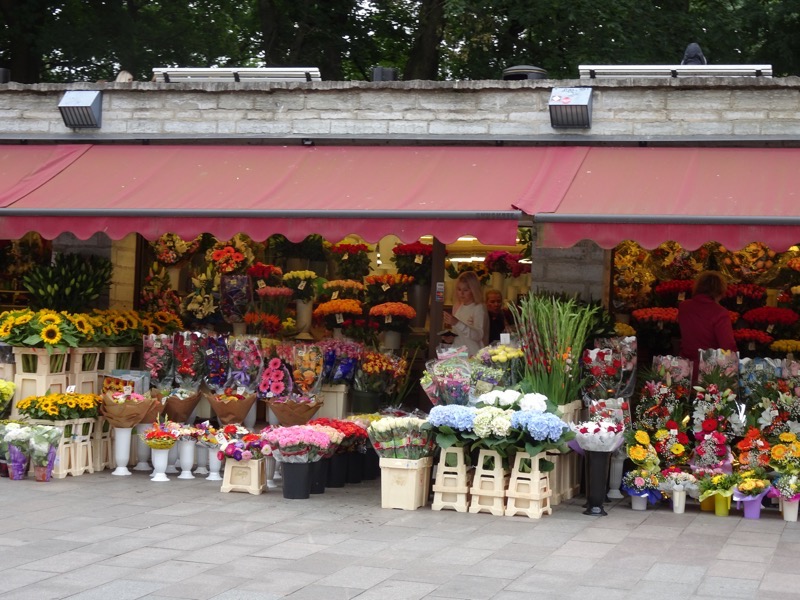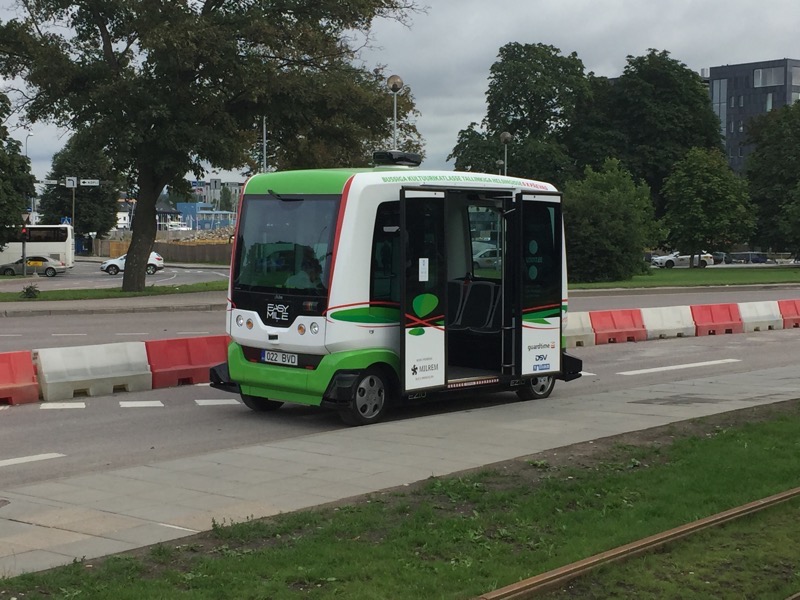Left Tallinn in the pouring rain this morning. Not so much pouring rain as frozen rain. It was a bit on the miserable and bloody cold side, and we are driving to Riga today, so I was really hoping it didn’t keep up. We had decided to stop by a place called, Viikingite Küla – or Viking Village – on our way out of Tallinn, more out of curiosity than anything else. It is a large area of land that sounds like it started off as a restaurant and reenactment tournament area that has grown into a bit of a local ‘theme’ park (though I am reluctant to use the word, as images of Medieval Times pop into mind immediately).
 It was interesting to see what some really motivated and moderately well-monied Viking era enthusiasts could come up with up. I knew it was going to potentially be a bit ‘medJevial’ with a capital J, but had made my mind up to view it through a, ‘Would my friends and I have a good time doing medieval stuff in this space?’ lens. The answer is a resounding ‘HELLS YES!’ It is not the most authentically researched Viking village someone could have come up with, and it is not as meticulous on the details as your average Lochac Laurel would applaud – but it looked like a great place to be able to hold a camping event with a couple of hundred people.
It was interesting to see what some really motivated and moderately well-monied Viking era enthusiasts could come up with up. I knew it was going to potentially be a bit ‘medJevial’ with a capital J, but had made my mind up to view it through a, ‘Would my friends and I have a good time doing medieval stuff in this space?’ lens. The answer is a resounding ‘HELLS YES!’ It is not the most authentically researched Viking village someone could have come up with, and it is not as meticulous on the details as your average Lochac Laurel would applaud – but it looked like a great place to be able to hold a camping event with a couple of hundred people.
There was a trout stream for fishing, though I imagine if it weren’t being used to supply the restaurant, and the weather was warmer than the current 7C feels like 3C, it would be great for swimming.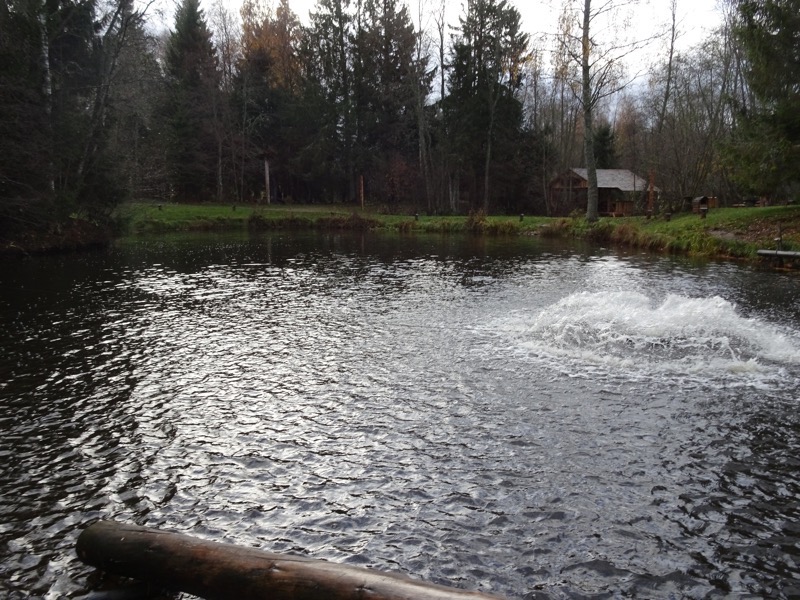 There is a large children’s play fort:
There is a large children’s play fort: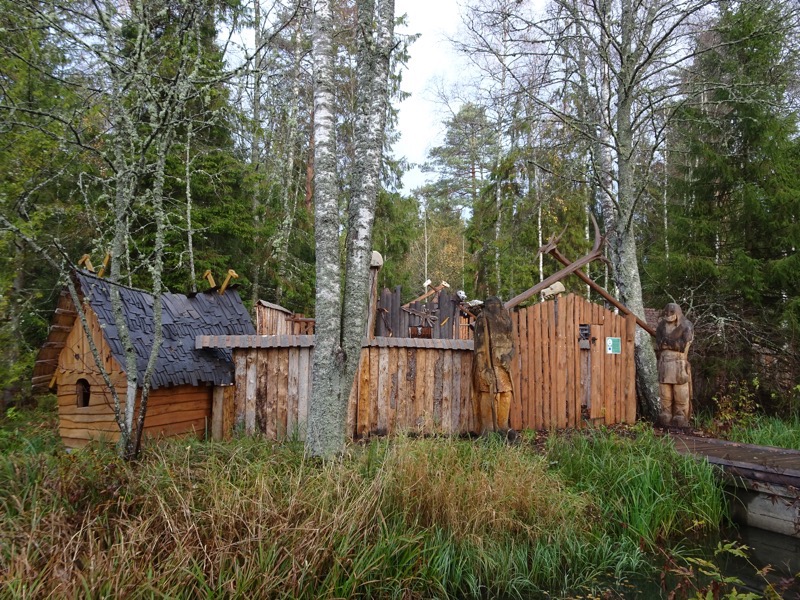 With cubby houses in various sizes for kids of varying ages.
With cubby houses in various sizes for kids of varying ages.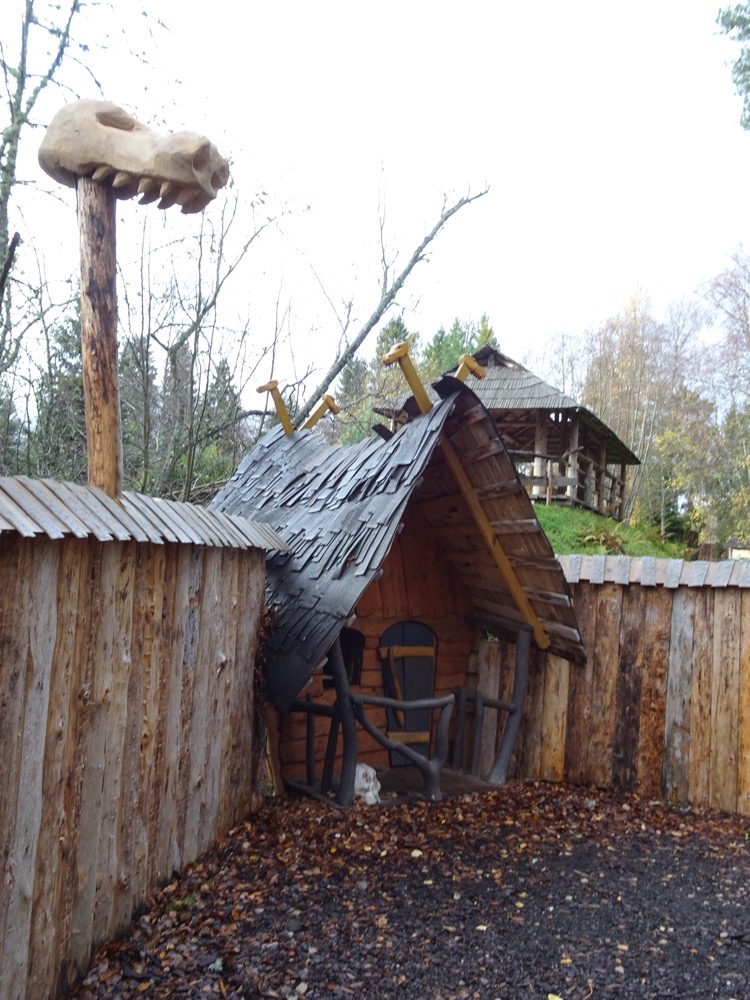 Poles for climbing and sliding about on.
Poles for climbing and sliding about on.
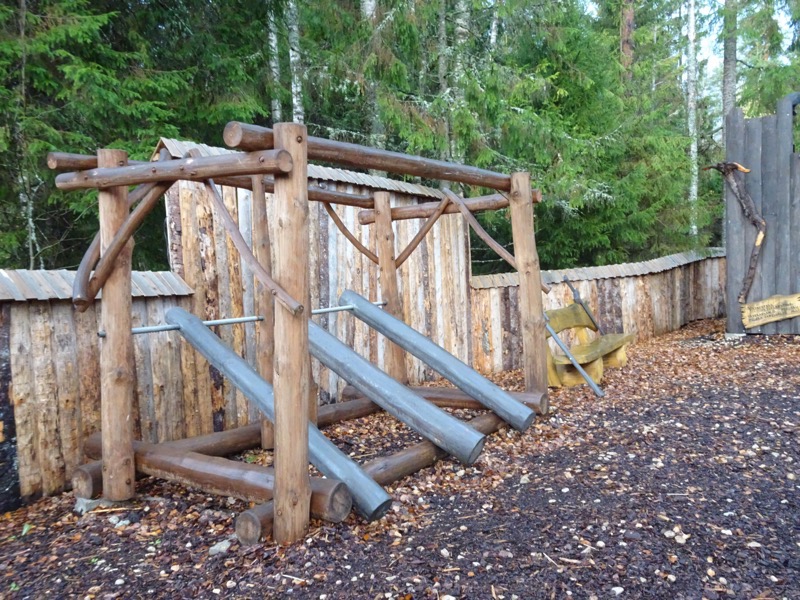 A couple of different forts connected by a rope bridge, a bucking boar underneath over a sandpit.
A couple of different forts connected by a rope bridge, a bucking boar underneath over a sandpit.
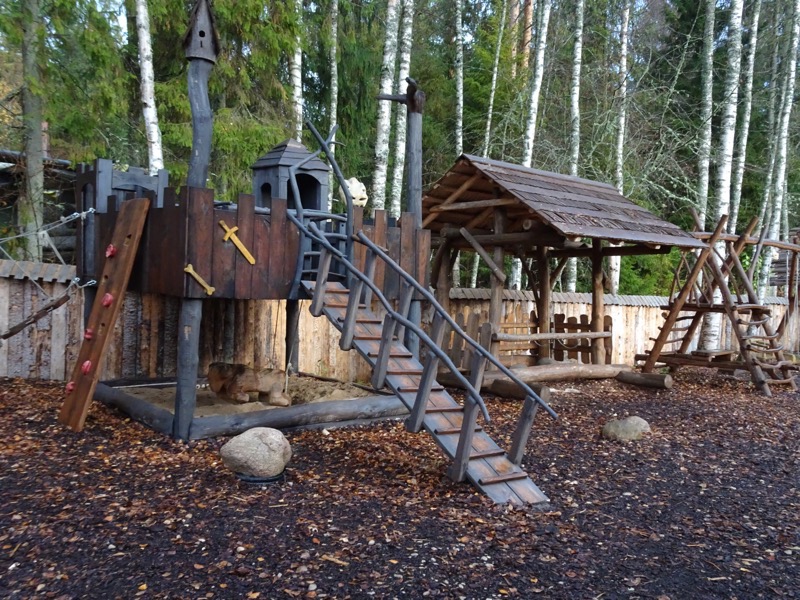 Some more climbing equipment.
Some more climbing equipment.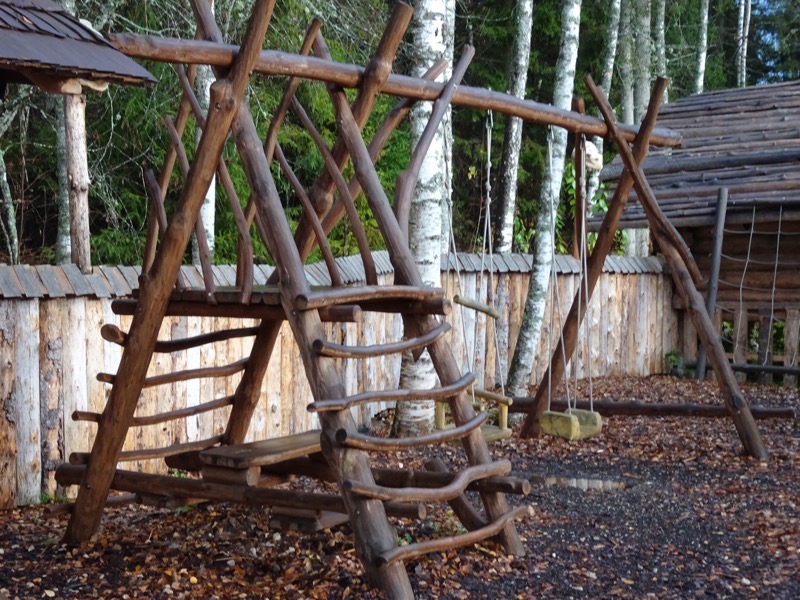
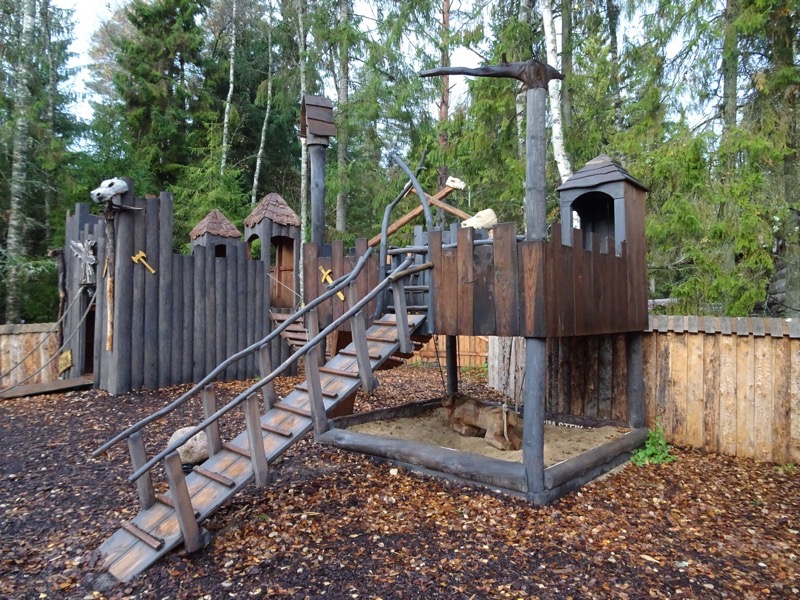
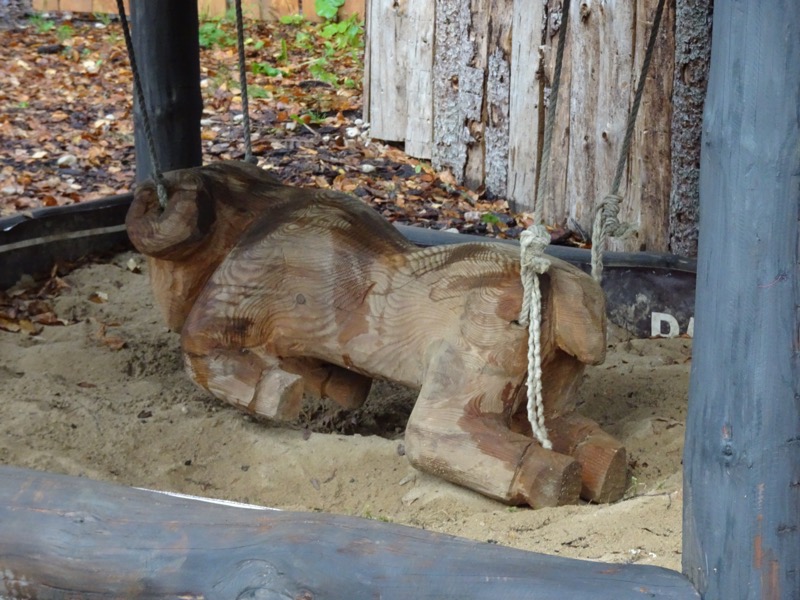 A longship for children to go conquer the seven seas.
A longship for children to go conquer the seven seas.
 A larger fort for older children equipped with shields and swords.
A larger fort for older children equipped with shields and swords. All up – I think our kids would have had a rollicking good time here. There was a sign out front of the playground saying that it had won some national awards for playground structures (couldn’t quite make out the details – but it was obviously a winner).
All up – I think our kids would have had a rollicking good time here. There was a sign out front of the playground saying that it had won some national awards for playground structures (couldn’t quite make out the details – but it was obviously a winner).
Not far around the complex from there was a large open area with viewing pavilion/bleacher type seating that would obviously make a great tournament field.
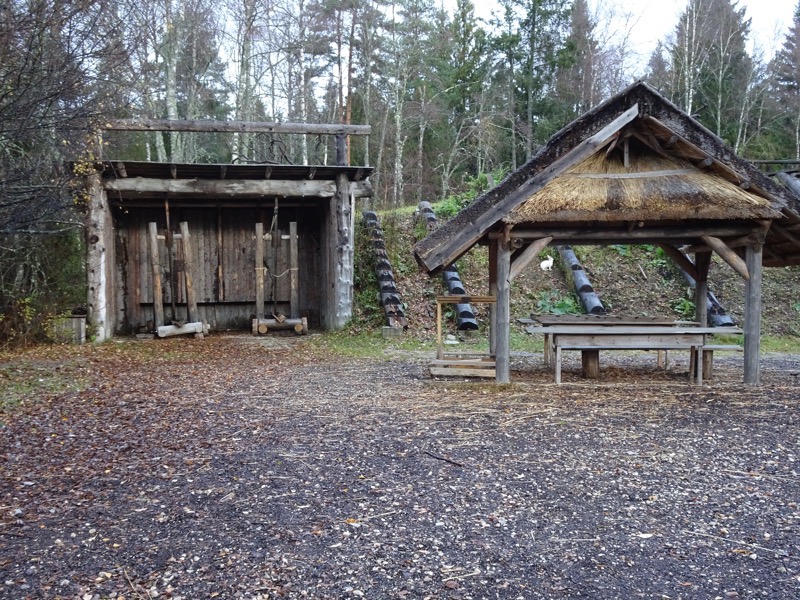 It also gets used for archery and for axe throwing (don’t worry about signing an indemnity at the gate – they have a blanket, ‘anything that happens to you here is your problem’ policy, up to and including drowing!).
It also gets used for archery and for axe throwing (don’t worry about signing an indemnity at the gate – they have a blanket, ‘anything that happens to you here is your problem’ policy, up to and including drowing!).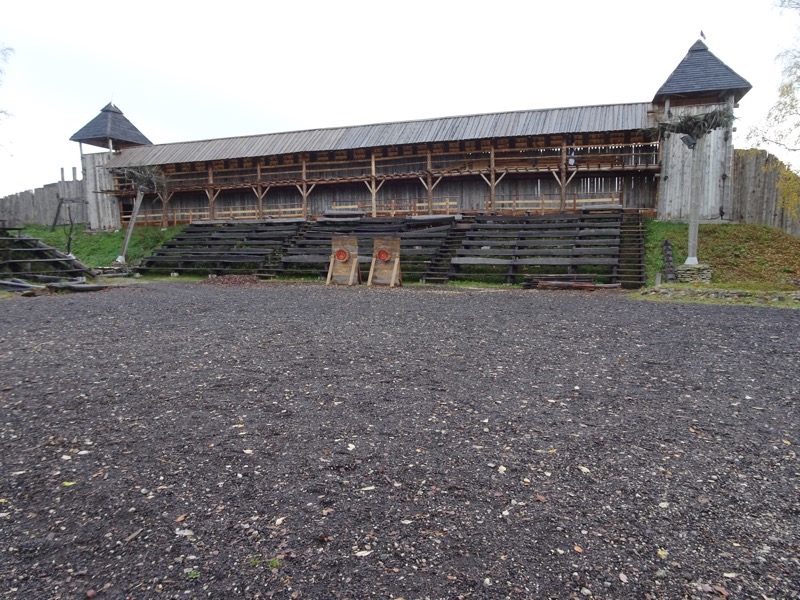
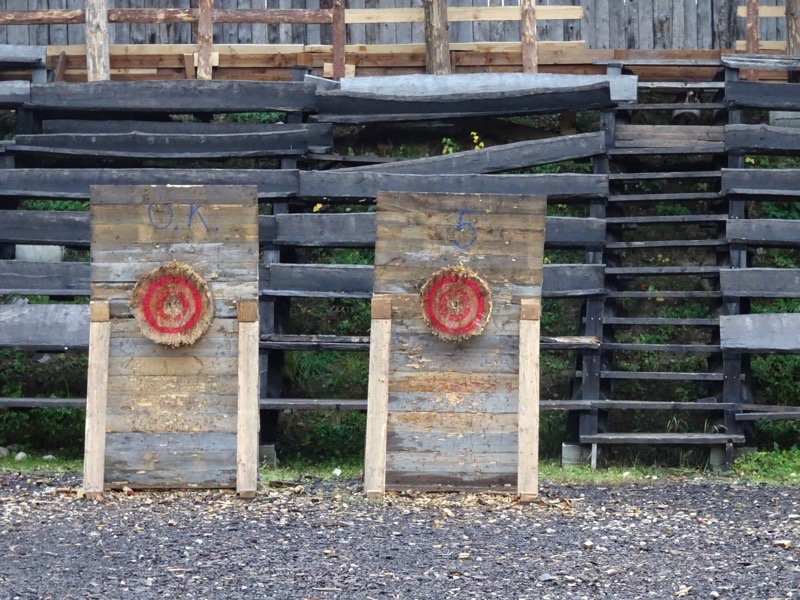
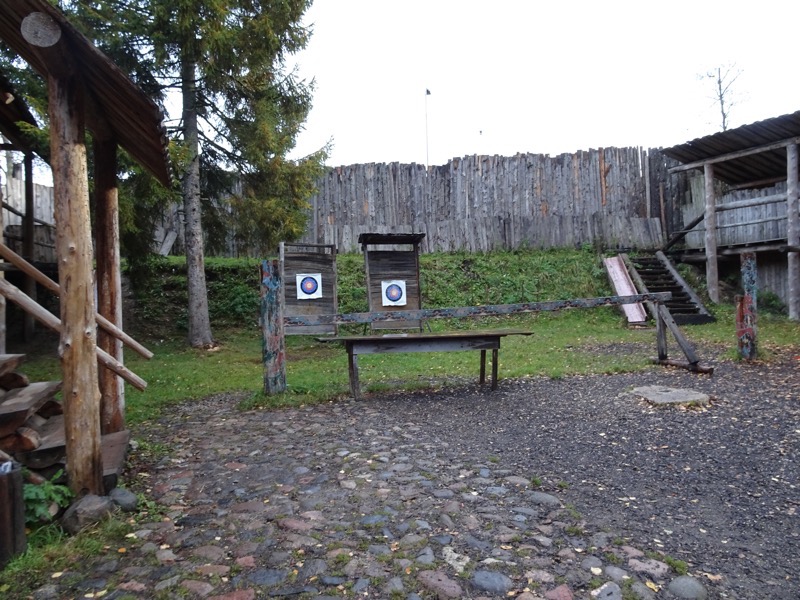 The tournament field was about 30 x 10 and would be great for SCA style tourneys. Even large ones like FAT at Festival.
The tournament field was about 30 x 10 and would be great for SCA style tourneys. Even large ones like FAT at Festival. I’m not sure how long this village has been here – but it has lived through a few harsh winters and was in need of some love and attention and repairs here and there. A few rotted timbers were apparent in the roof structures and it could use a good oil, but the overall effect of the spaces were pretty good in my opinion.
I’m not sure how long this village has been here – but it has lived through a few harsh winters and was in need of some love and attention and repairs here and there. A few rotted timbers were apparent in the roof structures and it could use a good oil, but the overall effect of the spaces were pretty good in my opinion.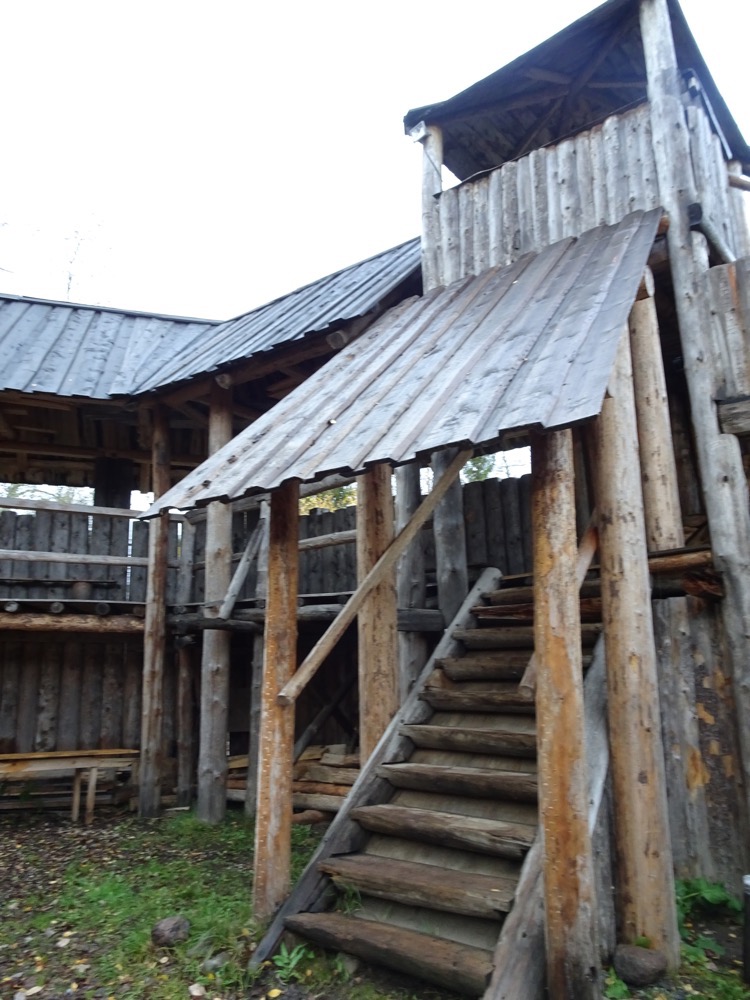 Oh and they have totally tame fluffy bunnies everywhere that are not at all bothered by the people.
Oh and they have totally tame fluffy bunnies everywhere that are not at all bothered by the people.
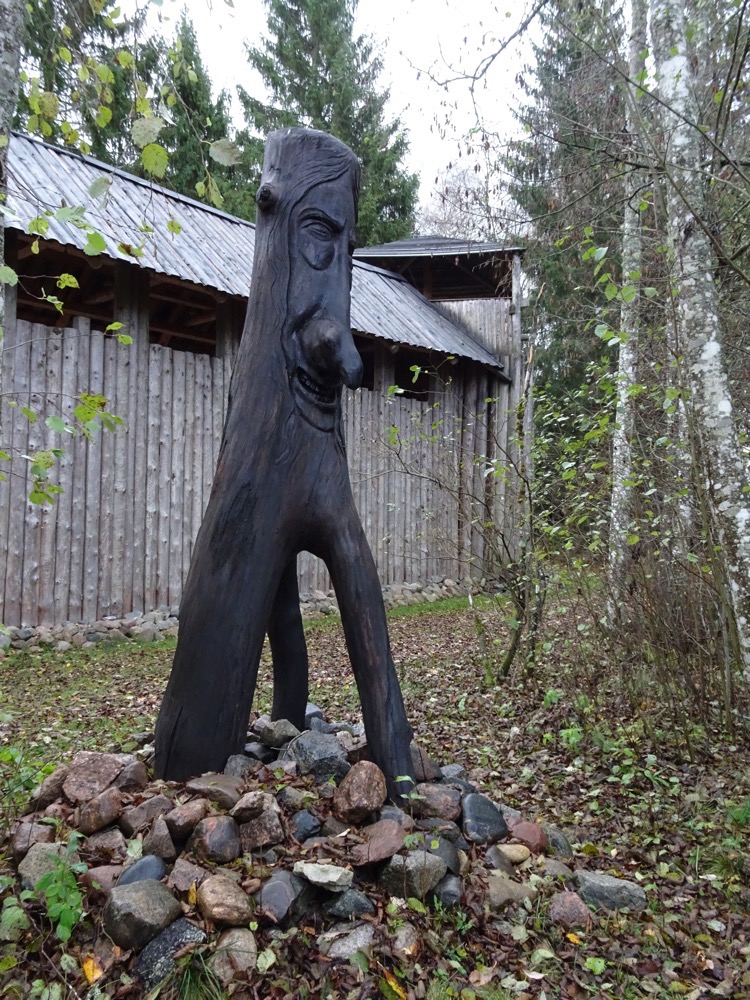
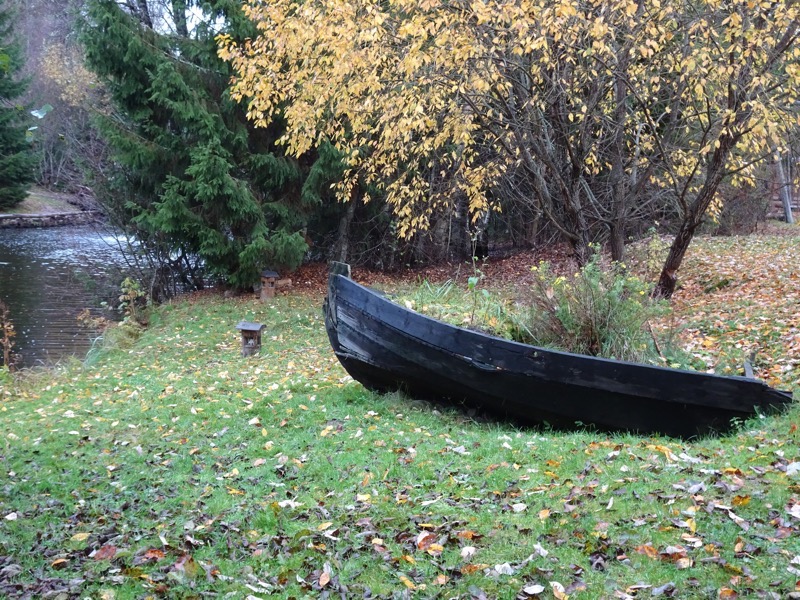 The other end of the trout stream.
The other end of the trout stream.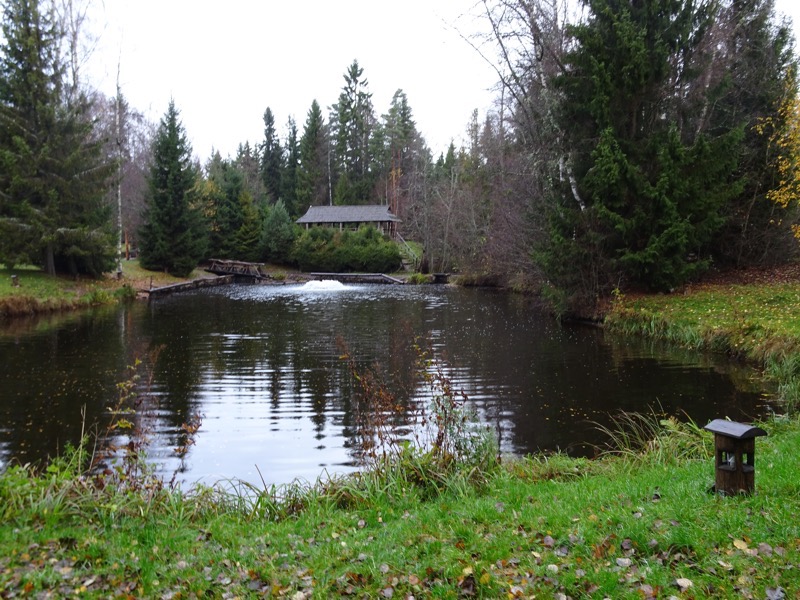
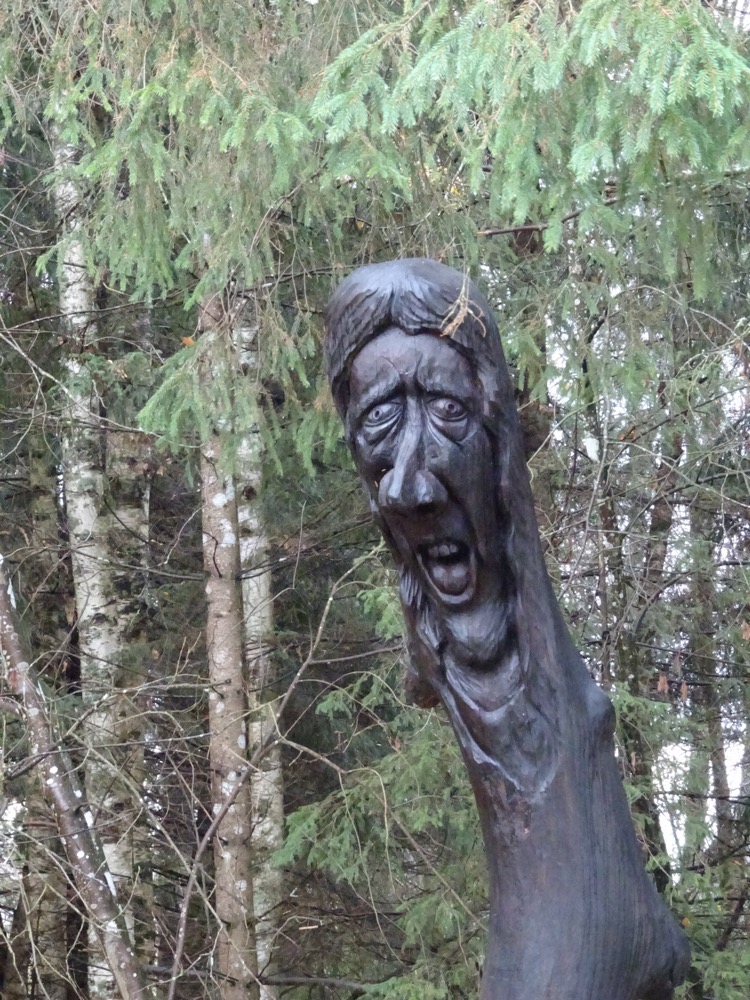 Shaman style teepee for a see-er or something? I don’t know. Not a lot of the information we could put our hands on was in English.
Shaman style teepee for a see-er or something? I don’t know. Not a lot of the information we could put our hands on was in English.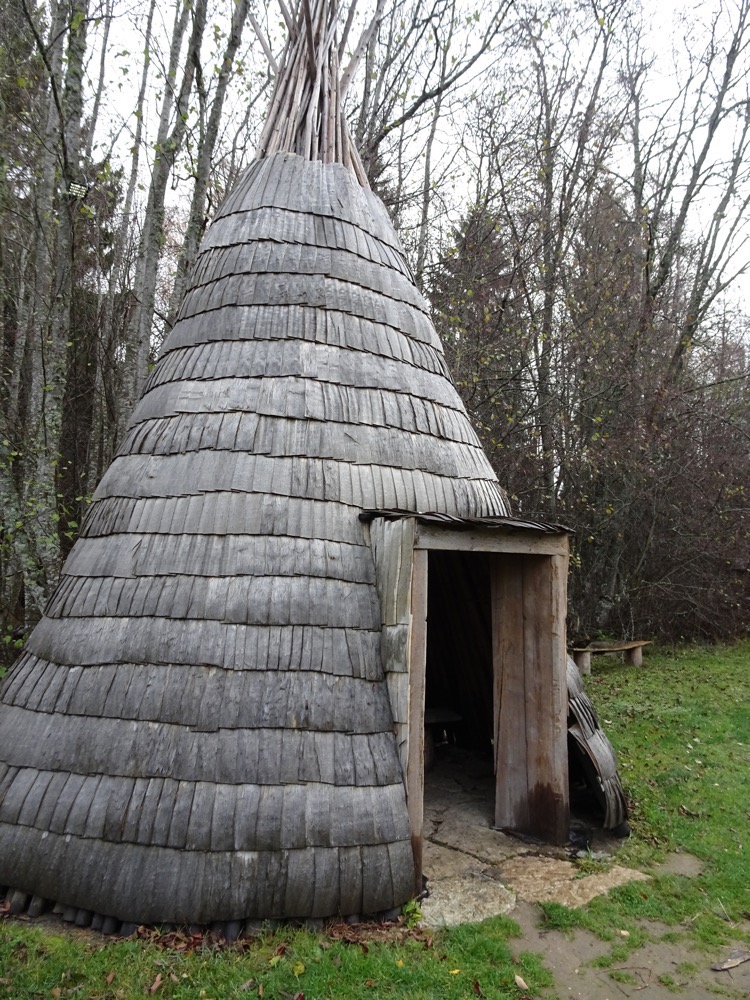 A ‘period’ game where men throw a stick through the female figure’s ‘slot’, and women throw a hoop onto the male figure’s ‘rod’. Would never fly in the SCA – people would get too uptight about the gender representations or something! 😛
A ‘period’ game where men throw a stick through the female figure’s ‘slot’, and women throw a hoop onto the male figure’s ‘rod’. Would never fly in the SCA – people would get too uptight about the gender representations or something! 😛 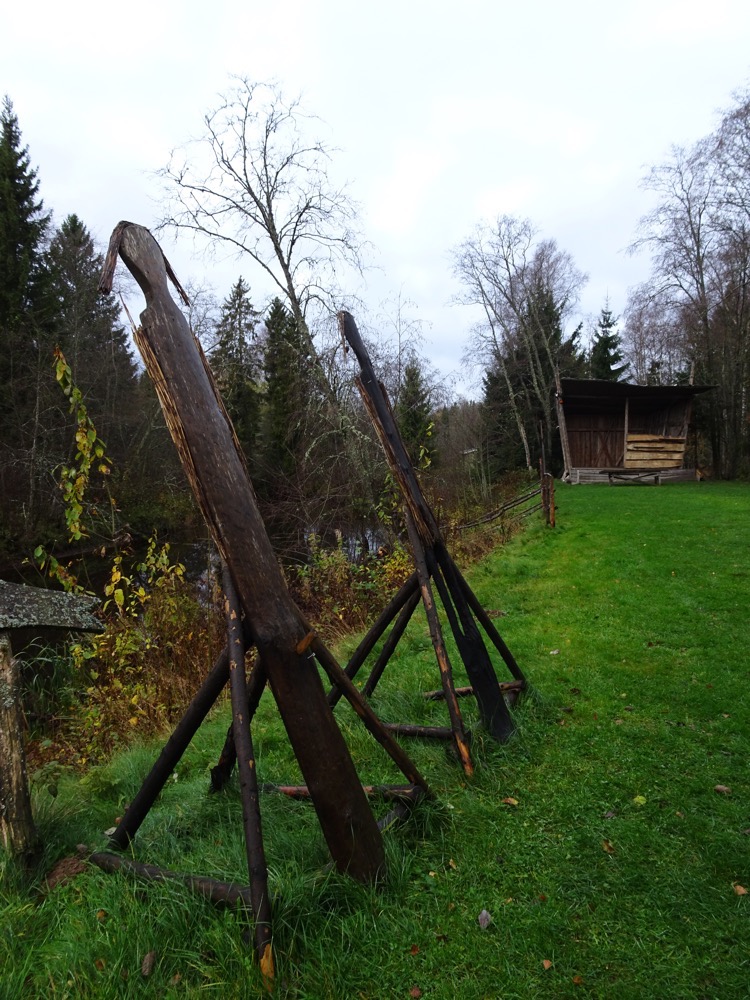 More fuzzy bunnies.
More fuzzy bunnies. They have a longboat that people can hire and take canoeing around a creeky system. It holds up to 13 people and you need at least four to row it.
They have a longboat that people can hire and take canoeing around a creeky system. It holds up to 13 people and you need at least four to row it.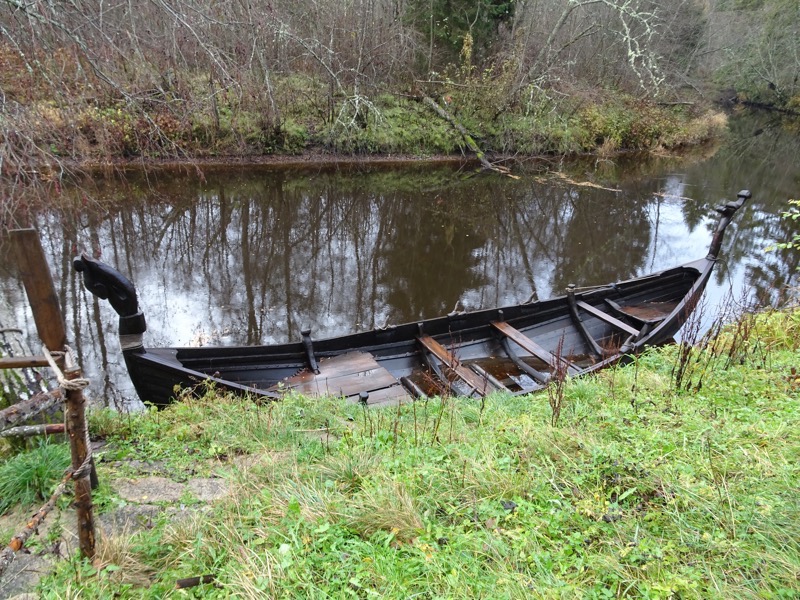 Private picnic pavilion spaces that can be hired and you can do your own BBQ or self catering.
Private picnic pavilion spaces that can be hired and you can do your own BBQ or self catering. 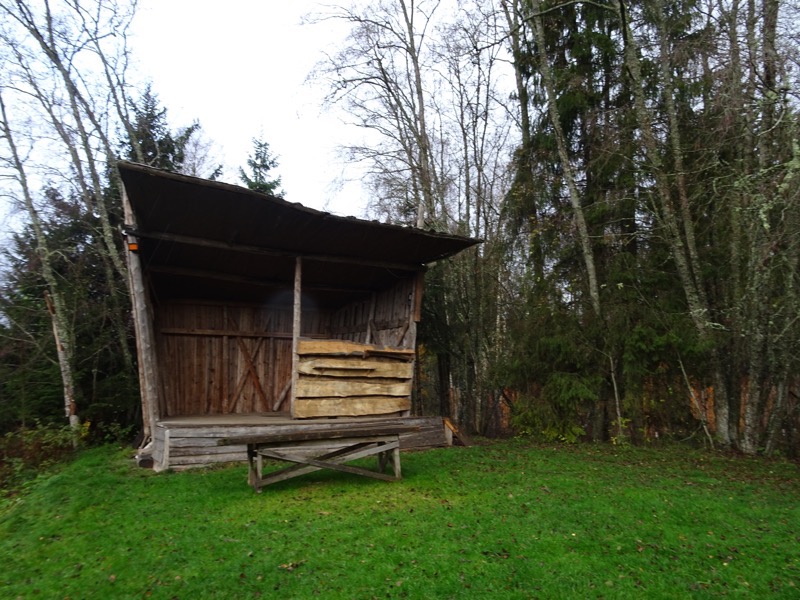 The walk back across the creek to the tavern/restaurant area.
The walk back across the creek to the tavern/restaurant area.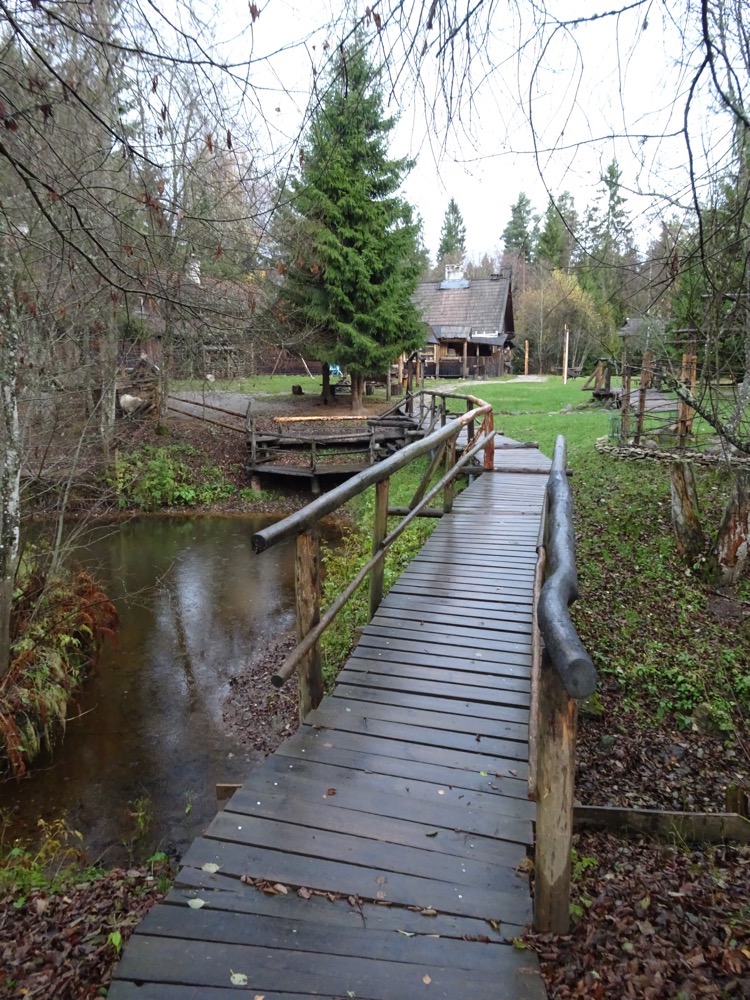
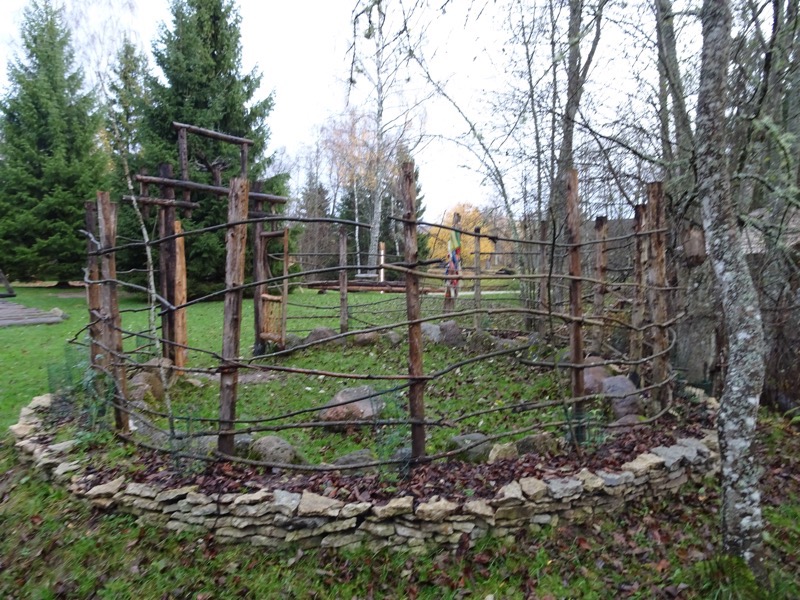
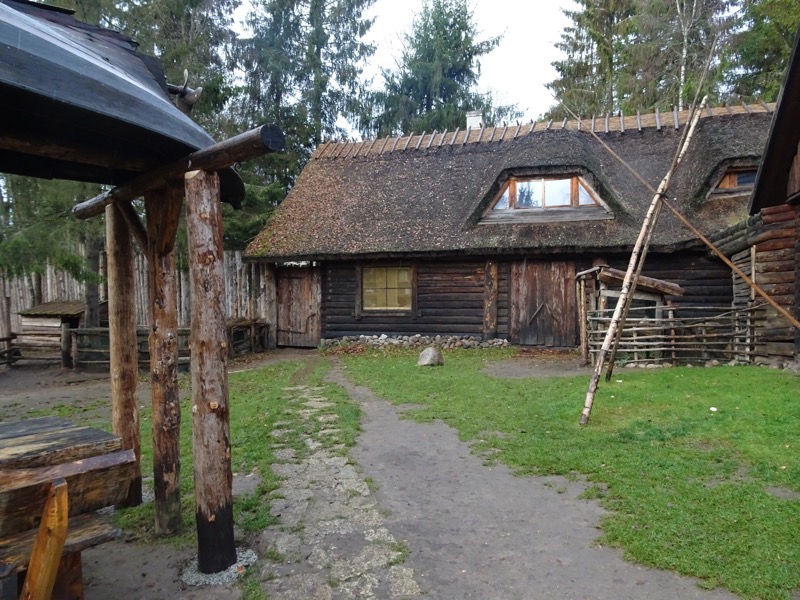 A small outdoor beer garden space which is currently unoccupied, due to 1) it being early morning, and 2) it being bloody cold!
A small outdoor beer garden space which is currently unoccupied, due to 1) it being early morning, and 2) it being bloody cold!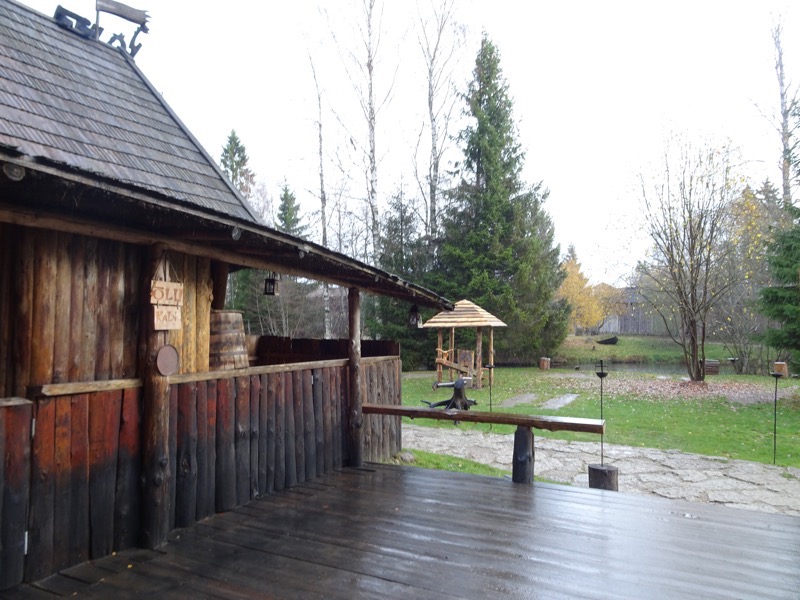 We thought we would pop in the tavern and have a warming hot drink before we had to hit the road.
We thought we would pop in the tavern and have a warming hot drink before we had to hit the road.
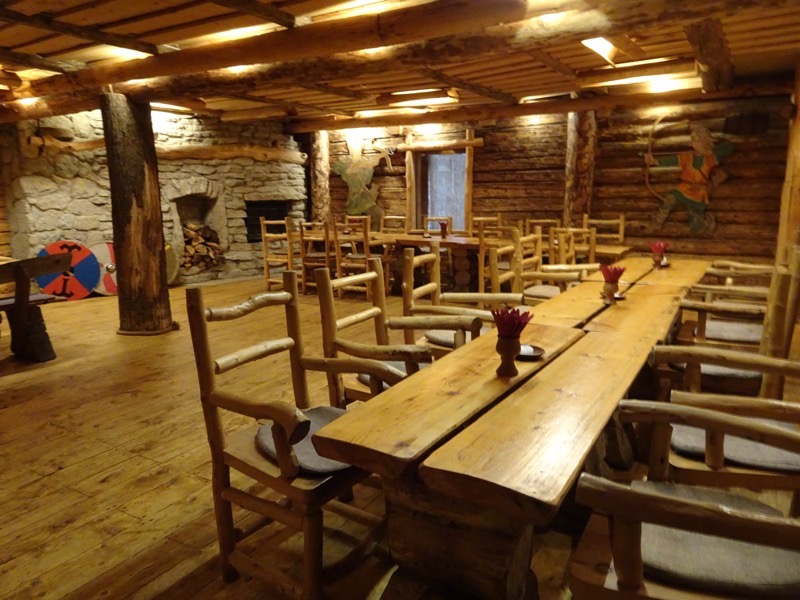 There were lots of small spaces and large spaces to suit different groups – this one had a roof height of barely 5 feet, and was either designed for kids or for very intimate dining groups!
There were lots of small spaces and large spaces to suit different groups – this one had a roof height of barely 5 feet, and was either designed for kids or for very intimate dining groups!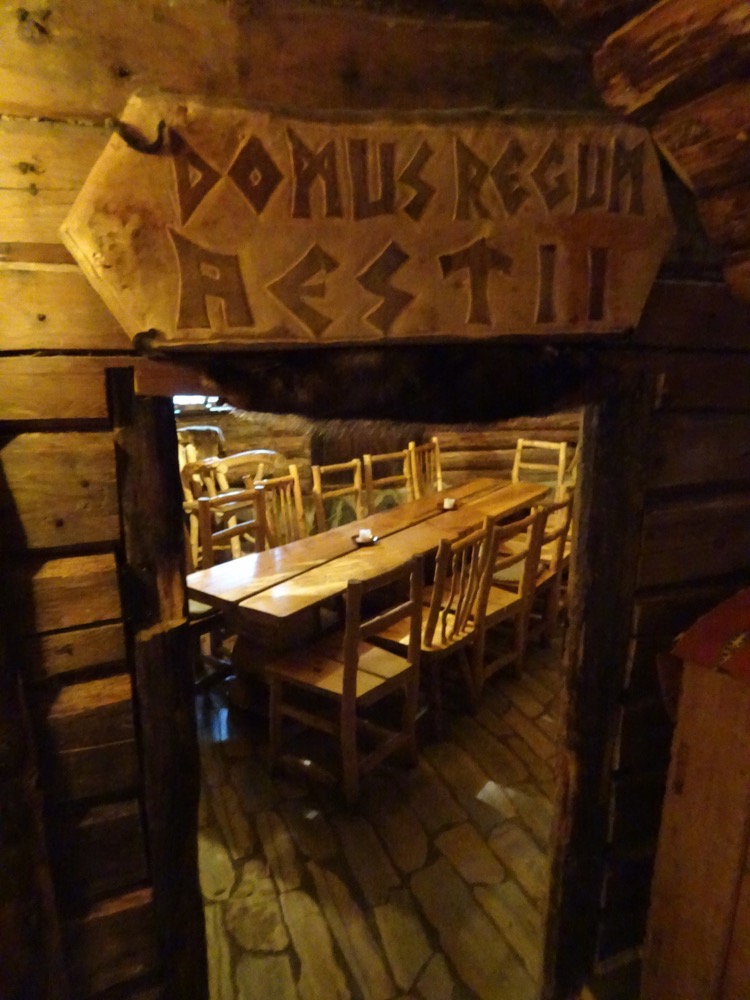 We had a look at the menu and were tempted to have an early lunch snack. I ordered the field mushrooms on rye bread…
We had a look at the menu and were tempted to have an early lunch snack. I ordered the field mushrooms on rye bread… and yale ordered some sort of beef dumplings. It was very tasty and well presented. I know yale would disagree with me when I say I thought the Viking Village was awesome. He felt it was a bit too twee (and it is), but I have had medieval fun in places that looked a whole lot less likely than this place – you know like an old shearing shed, or a basketball court hidden by a gazillion banners. So, if you take it for what it is, a medieval styled space that hasn’t been documented to within an inch of its life designed for good times – then yes, I think you’d have a grand old time here. It would be great fun to come with a large group of friends all dressed up and have big feast/banquet… which is exactly what the place caters for.
and yale ordered some sort of beef dumplings. It was very tasty and well presented. I know yale would disagree with me when I say I thought the Viking Village was awesome. He felt it was a bit too twee (and it is), but I have had medieval fun in places that looked a whole lot less likely than this place – you know like an old shearing shed, or a basketball court hidden by a gazillion banners. So, if you take it for what it is, a medieval styled space that hasn’t been documented to within an inch of its life designed for good times – then yes, I think you’d have a grand old time here. It would be great fun to come with a large group of friends all dressed up and have big feast/banquet… which is exactly what the place caters for.

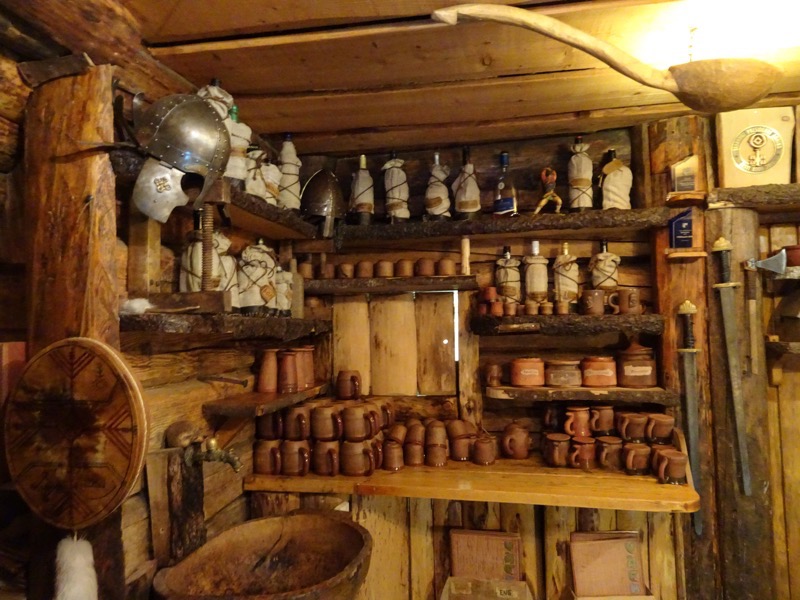
 After our warming drinks and a sit by the fire for half an hour to warm up – we hit the road and were heading through the Lithuanian countryside, pottering around some back roads before we would end up on the highways again.
After our warming drinks and a sit by the fire for half an hour to warm up – we hit the road and were heading through the Lithuanian countryside, pottering around some back roads before we would end up on the highways again.
We saw this gorgeous little country farmhouse, complete, with sheep, horse, chickens and lord knows what else. For a fleeting moment, I thought, “I could live there,” and then I remembered myself, and how much I love things like late night visitors, fresh sushi and V-Max cinema seating… and decided instead, “I could spend a few months there.” Mind you, they are in the middle of nowhere but probably have better Internet than I do at home.
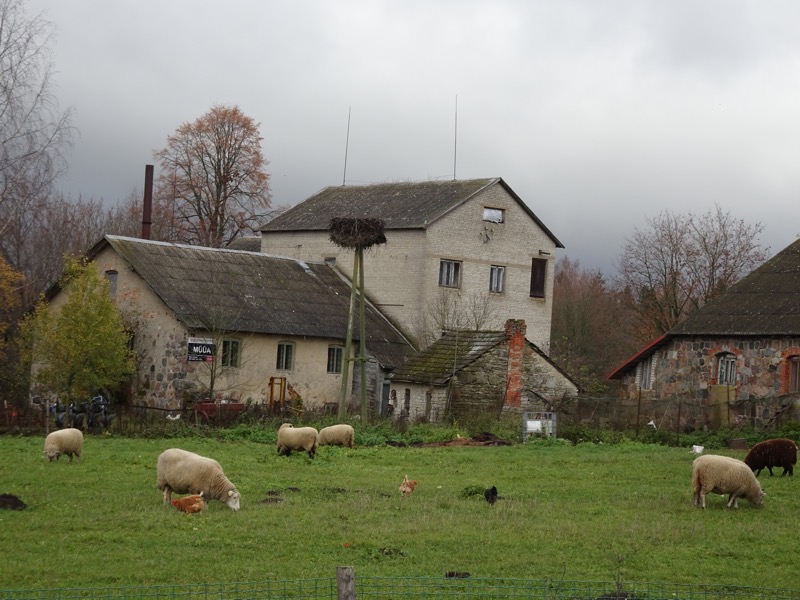 The drive had a few err, interesting moments. Many of which were caused by the road rules here which allow overtaking on certain roads even if someone is coming towards you. That is, when the line of the road on the should is broken – drivers are supposed to drive right up the dotted line and allow other drivers to go around them, even if there is oncoming traffic. Great in theory, but in practice, there were way too many drivers who were way too cocky at this being able to overtake whenever you wanted to, leaving us driving three abreast a two-lane road A LOT.
The drive had a few err, interesting moments. Many of which were caused by the road rules here which allow overtaking on certain roads even if someone is coming towards you. That is, when the line of the road on the should is broken – drivers are supposed to drive right up the dotted line and allow other drivers to go around them, even if there is oncoming traffic. Great in theory, but in practice, there were way too many drivers who were way too cocky at this being able to overtake whenever you wanted to, leaving us driving three abreast a two-lane road A LOT. We stopped briefly at the cheap discount liquor store at what was once the Estonian/Latvian border. Found some souvenir shopping, some not so discounted grog and some rather questionable food offerings in the loosely labelled ‘bistro’ before heading to Riga.
We stopped briefly at the cheap discount liquor store at what was once the Estonian/Latvian border. Found some souvenir shopping, some not so discounted grog and some rather questionable food offerings in the loosely labelled ‘bistro’ before heading to Riga. On the way into Riga we saw the first sign of a major metropolis on our left – and were reminded that we were not really in Eastern Europe anymore but in the Baltic/Northern Europe area… so like we saw in Iceland, we expect all our hotels to be decorated in nothing but Ikea from now on. 😉
On the way into Riga we saw the first sign of a major metropolis on our left – and were reminded that we were not really in Eastern Europe anymore but in the Baltic/Northern Europe area… so like we saw in Iceland, we expect all our hotels to be decorated in nothing but Ikea from now on. 😉 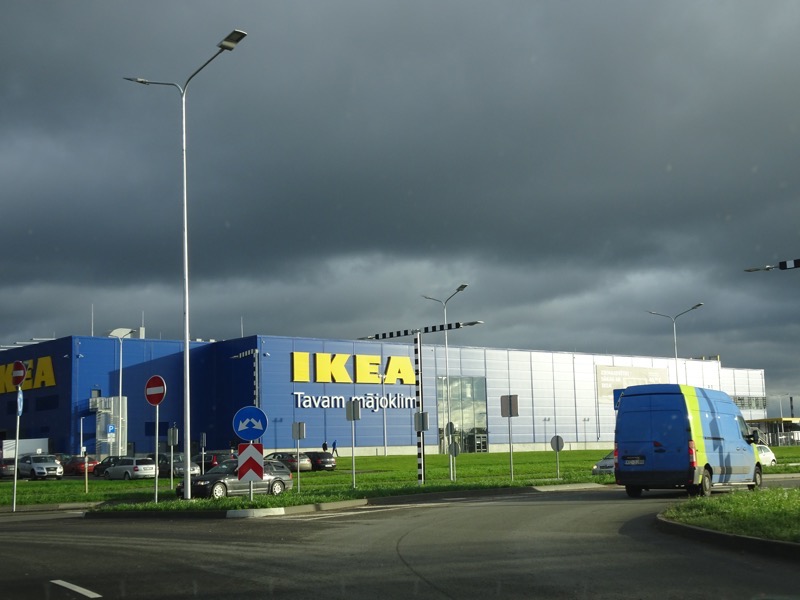 We checked into the Rixwell Riga Old Palace Hotel where we had booked a ‘designer studio room’ only to be given a key to what would make a good playroom for some midgets – about 14sqm and barely a 7′ ceiling. It looked nice enough but was totally impractical*.
We checked into the Rixwell Riga Old Palace Hotel where we had booked a ‘designer studio room’ only to be given a key to what would make a good playroom for some midgets – about 14sqm and barely a 7′ ceiling. It looked nice enough but was totally impractical*.
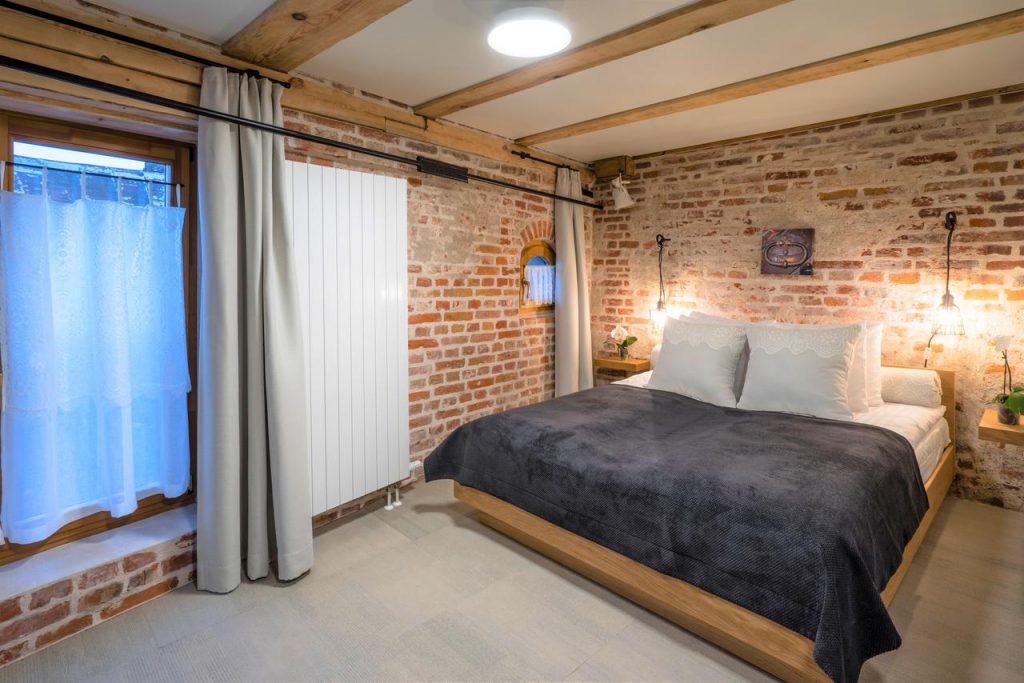 *not the actual room we were given – this one you could walk all the way around the bed, whereas the room we were allocated had a bed up against the wall on the right-hand side.
*not the actual room we were given – this one you could walk all the way around the bed, whereas the room we were allocated had a bed up against the wall on the right-hand side.
So naturally I didn’t mind the room that much at all, other than the fact there was no where to lay out suitcases or walk around the furniture – but yale was going to hit his head on everything and the room was son tiny that you seriously couldn’t swing a cat in here. So I went down to the reception and had a word with the customer service staff. I did my best ‘sorry to bother you’ and had already looked online – it’s October, and plenty of rooms were showing up as available in the online booking websites, so I knew they had vacancies… the following conversation then ensued:
Me: ‘Hi, our room is not suitable… what else have you got?’
Customer Service Chickie: *dithered with the computer*, ‘Yes, I can find you larger room but you will have to pay more.’
Me: ‘Great, I said, let’s do it, how much?’
CSC: ‘€5.00 a night.’
Me: *deadpan* ‘Would you like that now in cash?’
Seriously for an extra€5.00 a night a night, we were given a to a traditionally decorated superior balcony room that was about three times the size of the hipster ‘designer studio’ and it has 12′ ceilings…
*insert me rolling my eyes here*
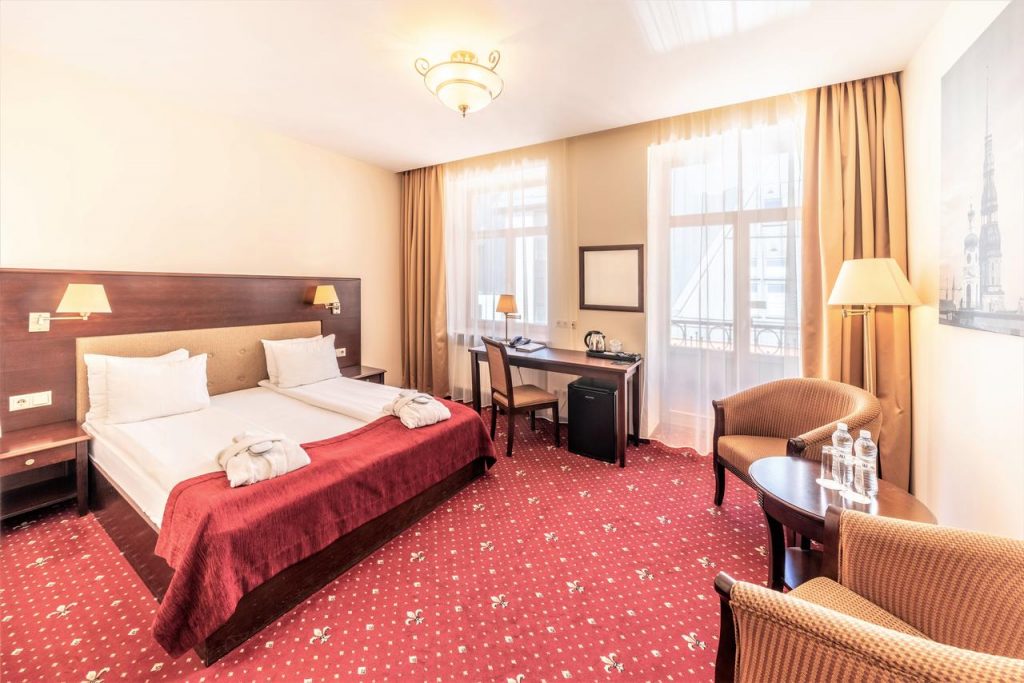 Once happily situated, and yale had ascertained that the wifi was up to his exacting standards, we decided to find a nice restaurant with local food and head out. It turned out that not 150m from our hotel was a restaurant called, ‘Milda’ which is rated about 8th out of over 800 restaurants in Riga and we thought that sounded like a bit of us. Was a bit fancier than anticipated, so I am glad I made yale change out of his blue otter t-shirt. 😛
Once happily situated, and yale had ascertained that the wifi was up to his exacting standards, we decided to find a nice restaurant with local food and head out. It turned out that not 150m from our hotel was a restaurant called, ‘Milda’ which is rated about 8th out of over 800 restaurants in Riga and we thought that sounded like a bit of us. Was a bit fancier than anticipated, so I am glad I made yale change out of his blue otter t-shirt. 😛

 The menu was superb – yale ordered the beef heart tartar.
The menu was superb – yale ordered the beef heart tartar. I ordered the potato dumplings – which were much more asian style dumplings than stodgy eastern European ones.
I ordered the potato dumplings – which were much more asian style dumplings than stodgy eastern European ones. yale had a soup course of porcini mushroom soup served in a fruit cob loaf.
yale had a soup course of porcini mushroom soup served in a fruit cob loaf.  And for mains I had the fillet mignon with sweet potato puree…
And for mains I had the fillet mignon with sweet potato puree… And yale ordered the boiled beef potato dumplings with bacon and onions and all good things.
And yale ordered the boiled beef potato dumplings with bacon and onions and all good things.  We shared a small honey cake for dessert. The entire meal was superb – they also served us some bread with some of the best pate I have ever tried, and that was easily the best steak I have had in months. The staff were excellent and I would highly recommend this place if you are ever in town.
We shared a small honey cake for dessert. The entire meal was superb – they also served us some bread with some of the best pate I have ever tried, and that was easily the best steak I have had in months. The staff were excellent and I would highly recommend this place if you are ever in town.  After that, it was back to the hotel and hopefully an early night, because I am stuffed. Been waking up way too early – my back has still not settled back down to its usual dull roar from having ramped up the day we went to Chernobyl, and it’s not like I’ve been resting since then. There is just too much to do, so I have probably extended this out way longer than necessarily by my continuing to do my damnedest to ignore it. :/
After that, it was back to the hotel and hopefully an early night, because I am stuffed. Been waking up way too early – my back has still not settled back down to its usual dull roar from having ramped up the day we went to Chernobyl, and it’s not like I’ve been resting since then. There is just too much to do, so I have probably extended this out way longer than necessarily by my continuing to do my damnedest to ignore it. :/

 We found a great little cafe for breakfast which wasn’t so easy given that many places were just not open this early – you know, about 0930. It was called Revel and was warm and cosy and served up the best €4.95 brekkie ever – a potato, bacon, onion and mushroom bubble and squeak type deal with an egg on top. I didn’t finish it, but it was a delicious start to the day.
We found a great little cafe for breakfast which wasn’t so easy given that many places were just not open this early – you know, about 0930. It was called Revel and was warm and cosy and served up the best €4.95 brekkie ever – a potato, bacon, onion and mushroom bubble and squeak type deal with an egg on top. I didn’t finish it, but it was a delicious start to the day.
 Across the Square, the imposing War of Independence Victory Column is currently under wraps. It is a tall, usually well-lit plinth with an enormous cross on it. Usually, I try to crop the scaffolded buildings and monuments out of my photos, but this one struck me as a bit of a monument in its own right. It was only unveiled about a decade ago and already under scaffold… I think this piece is currently a monument to the: ‘They Don’t Make ‘Em Like They Used To’ field of civic building.
Across the Square, the imposing War of Independence Victory Column is currently under wraps. It is a tall, usually well-lit plinth with an enormous cross on it. Usually, I try to crop the scaffolded buildings and monuments out of my photos, but this one struck me as a bit of a monument in its own right. It was only unveiled about a decade ago and already under scaffold… I think this piece is currently a monument to the: ‘They Don’t Make ‘Em Like They Used To’ field of civic building.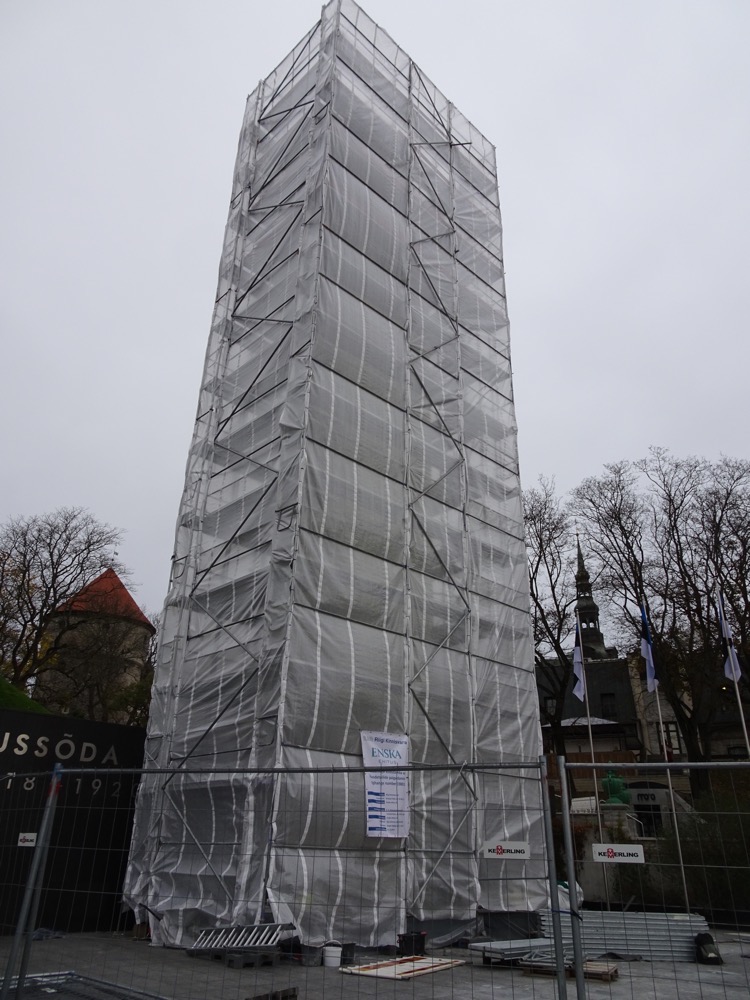 On the hill above the Independence Square was the marker for the Baltic Way – commemorating the 2,000,000 people that formed a human chain across the 675kms from Tallinn to Riga to Vilnius on 23rd of August 1989. The plaques were bestowed by the city of Vilnius, we will have to find the Riga one when we get there too, I think. The Baltic Way event occurred to commemorate the stunning peaceable act that was to protest against the Molotov-Ribbentrop protocols.
On the hill above the Independence Square was the marker for the Baltic Way – commemorating the 2,000,000 people that formed a human chain across the 675kms from Tallinn to Riga to Vilnius on 23rd of August 1989. The plaques were bestowed by the city of Vilnius, we will have to find the Riga one when we get there too, I think. The Baltic Way event occurred to commemorate the stunning peaceable act that was to protest against the Molotov-Ribbentrop protocols. I am so totally in love with the autumn colours – we experience nothing like this in subtropical Brisbane.
I am so totally in love with the autumn colours – we experience nothing like this in subtropical Brisbane. Not far from Independence Square is the Kiek in de Kök – a restored cannon tower from the 15th century that is now a museum. The name, Kiek in de Kök, literally means ‘peek in the kitchen’ in German; the tower got its name from stories about how soldiers in the fortification could peek from the top of the tower into the kitchens of the town below.
Not far from Independence Square is the Kiek in de Kök – a restored cannon tower from the 15th century that is now a museum. The name, Kiek in de Kök, literally means ‘peek in the kitchen’ in German; the tower got its name from stories about how soldiers in the fortification could peek from the top of the tower into the kitchens of the town below.  Nearby is the sturdy 14th century, Maiden’s Tower which is currently a cafe and small museum which oddly focuses on the culinary arts and the art of war – interesting combo. We thought we may double back around on these museums later if it started raining and we needed to take refuge indoors (it didn’t and we didn’t).
Nearby is the sturdy 14th century, Maiden’s Tower which is currently a cafe and small museum which oddly focuses on the culinary arts and the art of war – interesting combo. We thought we may double back around on these museums later if it started raining and we needed to take refuge indoors (it didn’t and we didn’t).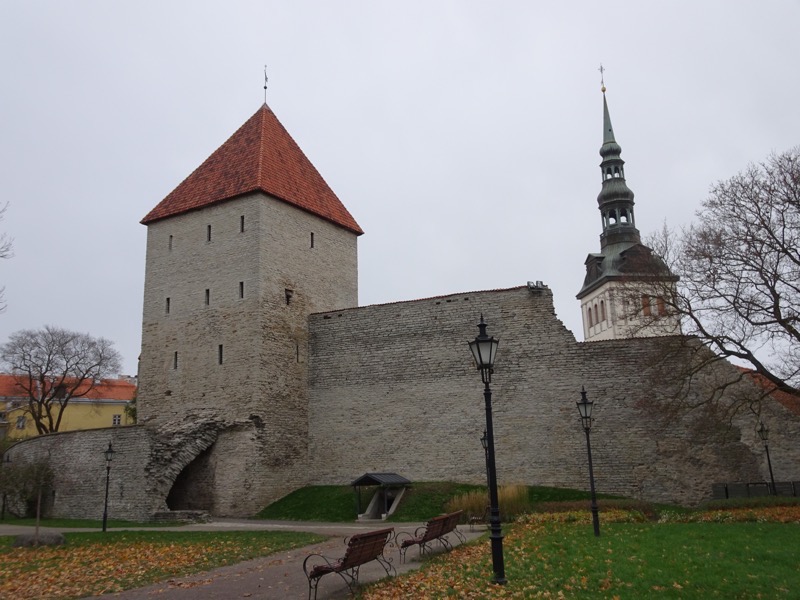 Up a small hill from the Maiden’s Tower is the decidedly pink Toompea Palace. The Palace/Castle was erected on the foundations of the crumbling eastern wing of the 13th – 14th century fortress that was on this site. The Baroque castle was built in the late 18th century, and is now the Estonia parliament, complete with carpark and (out of frame to the left) be-logo’d scaffolding, which I am now convinced is permanent, as it was here last year and isn’t covering or protecting anything, just being used as a visual divider between the road and the palace.
Up a small hill from the Maiden’s Tower is the decidedly pink Toompea Palace. The Palace/Castle was erected on the foundations of the crumbling eastern wing of the 13th – 14th century fortress that was on this site. The Baroque castle was built in the late 18th century, and is now the Estonia parliament, complete with carpark and (out of frame to the left) be-logo’d scaffolding, which I am now convinced is permanent, as it was here last year and isn’t covering or protecting anything, just being used as a visual divider between the road and the palace.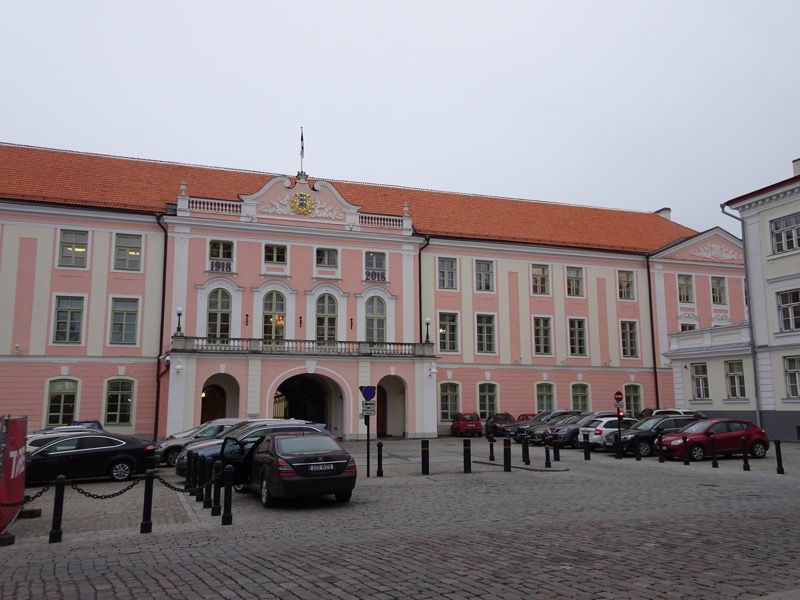 Across the street is the Alexander Nevsky Cathedral which is Tallinn’s largest and grandest orthodox cupola cathedral and is dedicated to Saint Alexander Nevsky, and the locals hate it. Apparently, the cathedral was built during the late 19th century as part of the efforts to Russify Estonia. It is so heartily disliked by many Estonians as a symbol of abject oppression, such that Estonia officials had scheduled the cathedral for demolition in 1924,. The only reason the cathedral is still standing is due to lack of money – it was going to be an expensive effort to destroy and remove the massive construction. After Estonia gained their independence, the Estonian parliament again started to discuss plans to demolish Cathedral in the 1990s! Seriously as recently as 30 years ago they wanted to demolish this beautiful building to extend the parking lot for the members of Parliament!
Across the street is the Alexander Nevsky Cathedral which is Tallinn’s largest and grandest orthodox cupola cathedral and is dedicated to Saint Alexander Nevsky, and the locals hate it. Apparently, the cathedral was built during the late 19th century as part of the efforts to Russify Estonia. It is so heartily disliked by many Estonians as a symbol of abject oppression, such that Estonia officials had scheduled the cathedral for demolition in 1924,. The only reason the cathedral is still standing is due to lack of money – it was going to be an expensive effort to destroy and remove the massive construction. After Estonia gained their independence, the Estonian parliament again started to discuss plans to demolish Cathedral in the 1990s! Seriously as recently as 30 years ago they wanted to demolish this beautiful building to extend the parking lot for the members of Parliament! 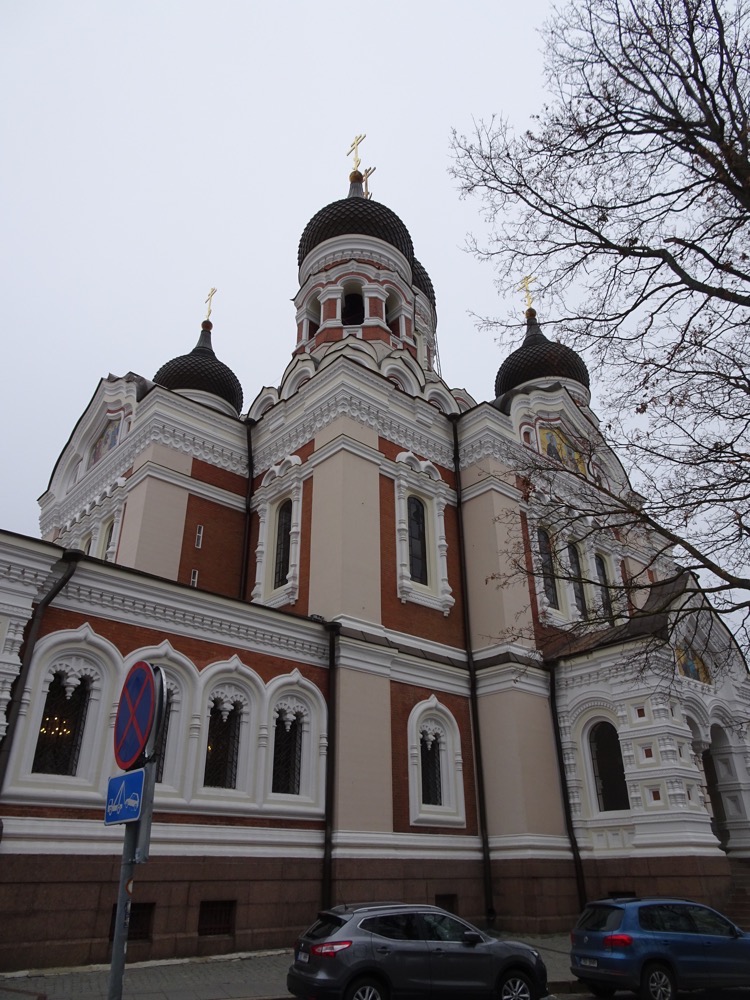
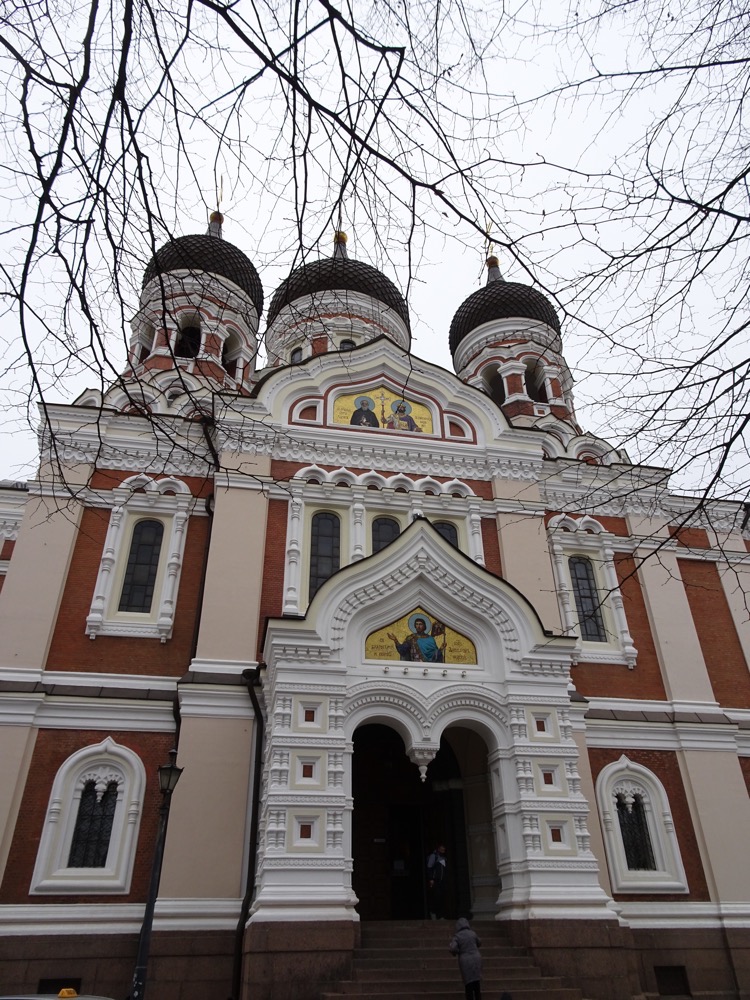
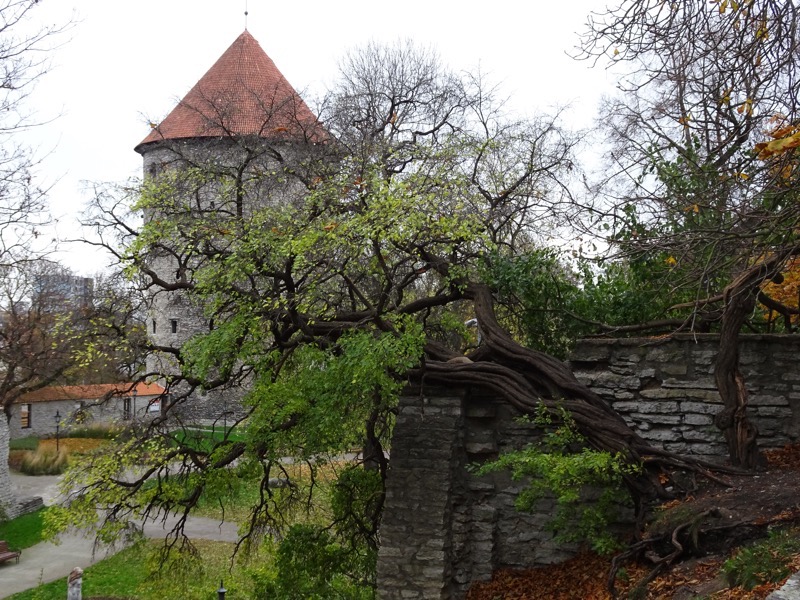 I love these street lamps – I wish I could take one home for the front garden… it would only look a little out of place.
I love these street lamps – I wish I could take one home for the front garden… it would only look a little out of place.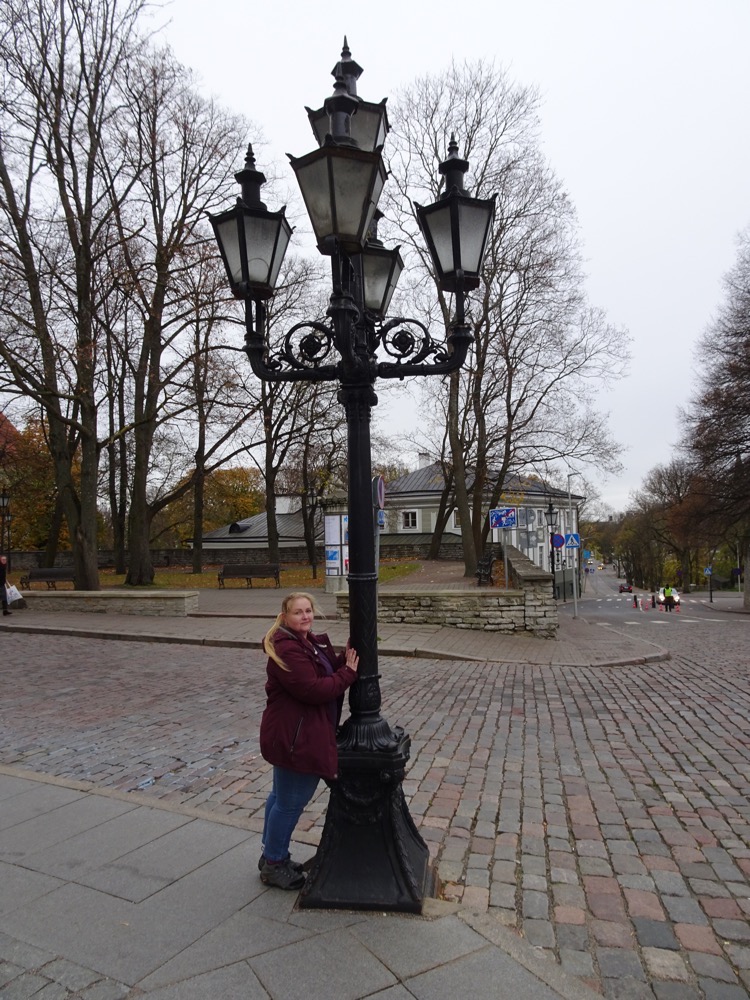 It was supposed to only get to 7°C today, but with the wind chill, feel more like 2-3°C and a high possibility of rain, so I wore my Fantastic Purple Jacket Of Warmth that I bought last year in Oslo on the end of season bargain shelves for €50 – only problem is as soon as you are indoors, you’re overheating like mad, so it’s on and off, on and off, with the jacket all day.
It was supposed to only get to 7°C today, but with the wind chill, feel more like 2-3°C and a high possibility of rain, so I wore my Fantastic Purple Jacket Of Warmth that I bought last year in Oslo on the end of season bargain shelves for €50 – only problem is as soon as you are indoors, you’re overheating like mad, so it’s on and off, on and off, with the jacket all day.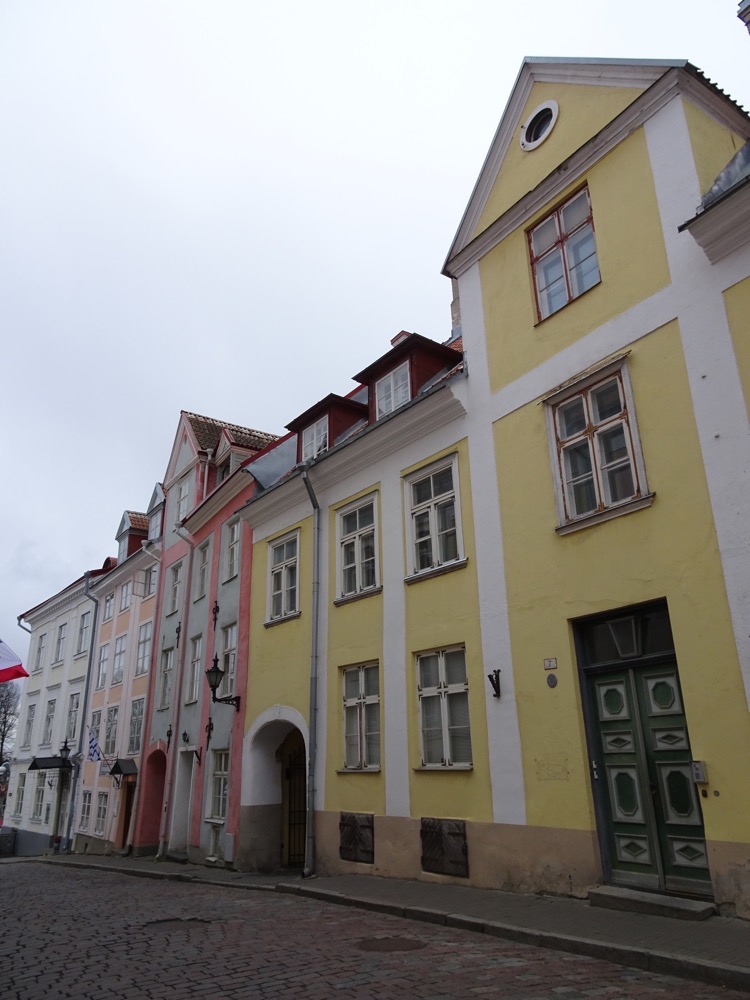 Souvenirs – the more I travel, the more I realise that I like to look at souvenirs and see what sort of things people make/sell to represent their towns and special places, but I don’t actually like to buy souvenirs. 🙂 They just clutter up the house and you do nothing with them. So far this trip, I have bought sweet stuff all other than my lapel pins.
Souvenirs – the more I travel, the more I realise that I like to look at souvenirs and see what sort of things people make/sell to represent their towns and special places, but I don’t actually like to buy souvenirs. 🙂 They just clutter up the house and you do nothing with them. So far this trip, I have bought sweet stuff all other than my lapel pins.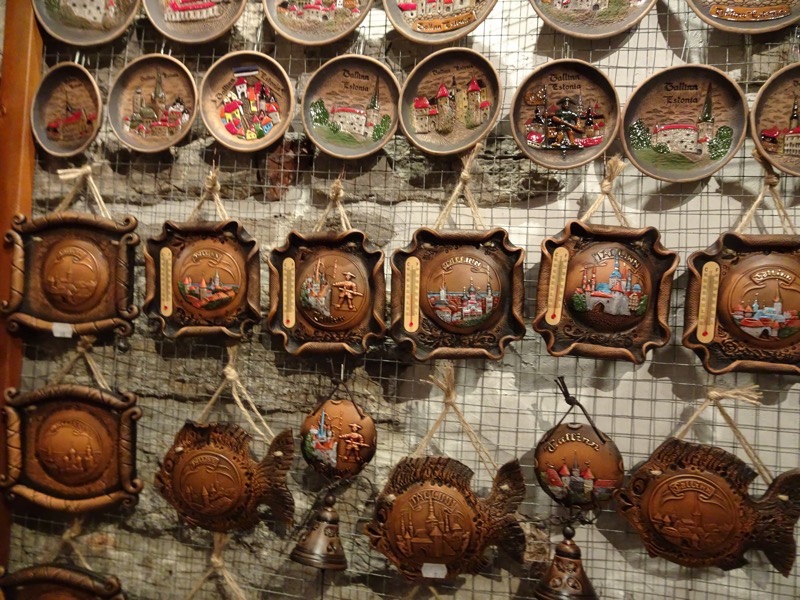
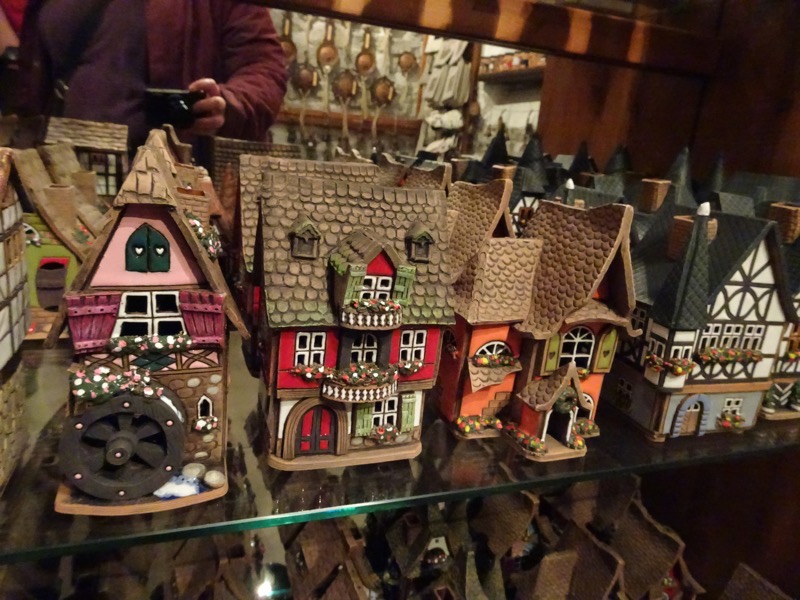 Vikings – with horns or course.
Vikings – with horns or course.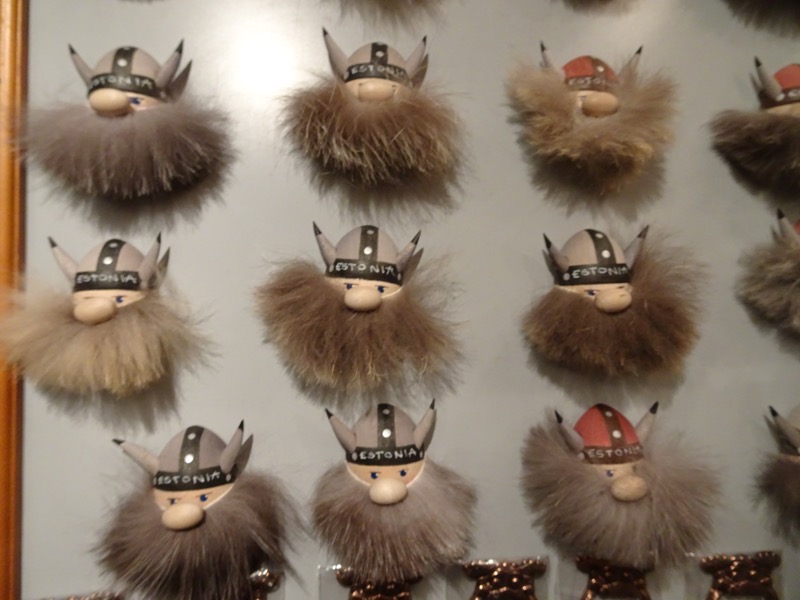
 I love these heavy felted fun wool hats – I’d love to be able to take half a dozen of them home for friends, but at €45-55 and knowing how little wear they would get in Queensland, it just doesn’t seem a sensible proposition. 🙂
I love these heavy felted fun wool hats – I’d love to be able to take half a dozen of them home for friends, but at €45-55 and knowing how little wear they would get in Queensland, it just doesn’t seem a sensible proposition. 🙂  Around the corner is the Toomkirik or St Mary’s Cathedral. Originally dating from the 13th century, the medieval church has a Baroque bell tower and an amazing organ inside that someone was playing this morning.
Around the corner is the Toomkirik or St Mary’s Cathedral. Originally dating from the 13th century, the medieval church has a Baroque bell tower and an amazing organ inside that someone was playing this morning.
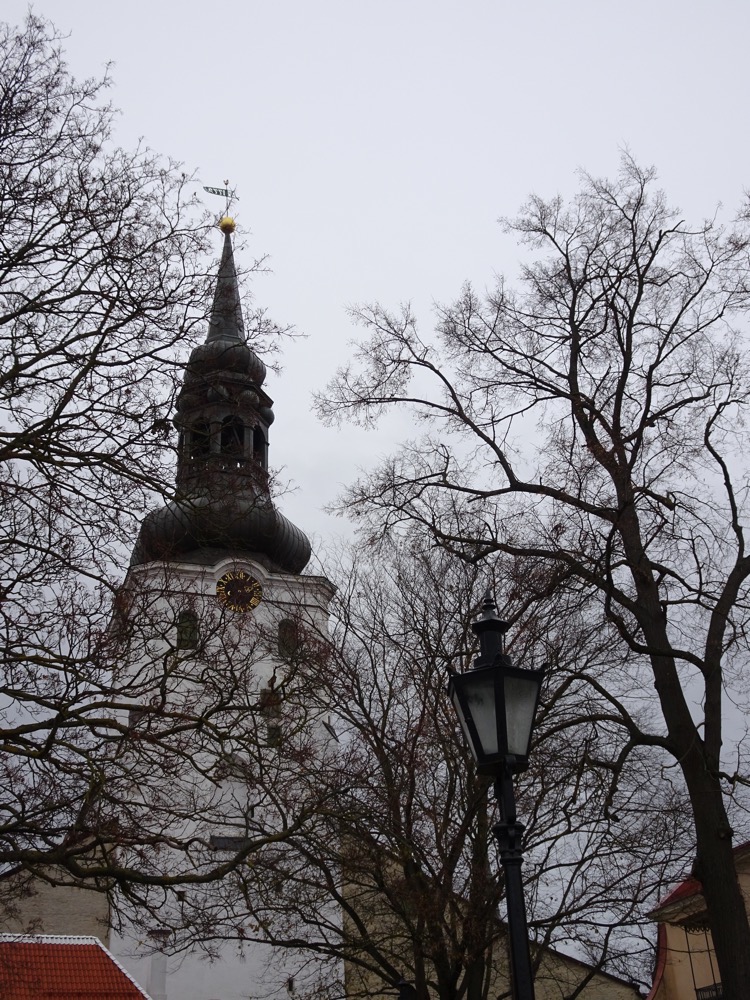 The Toomkirik is the oldest church in Tallinn and mainland Estonia. It is also the only building in the Toompea area that survived a severe fire in the 17th century fire.
The Toomkirik is the oldest church in Tallinn and mainland Estonia. It is also the only building in the Toompea area that survived a severe fire in the 17th century fire.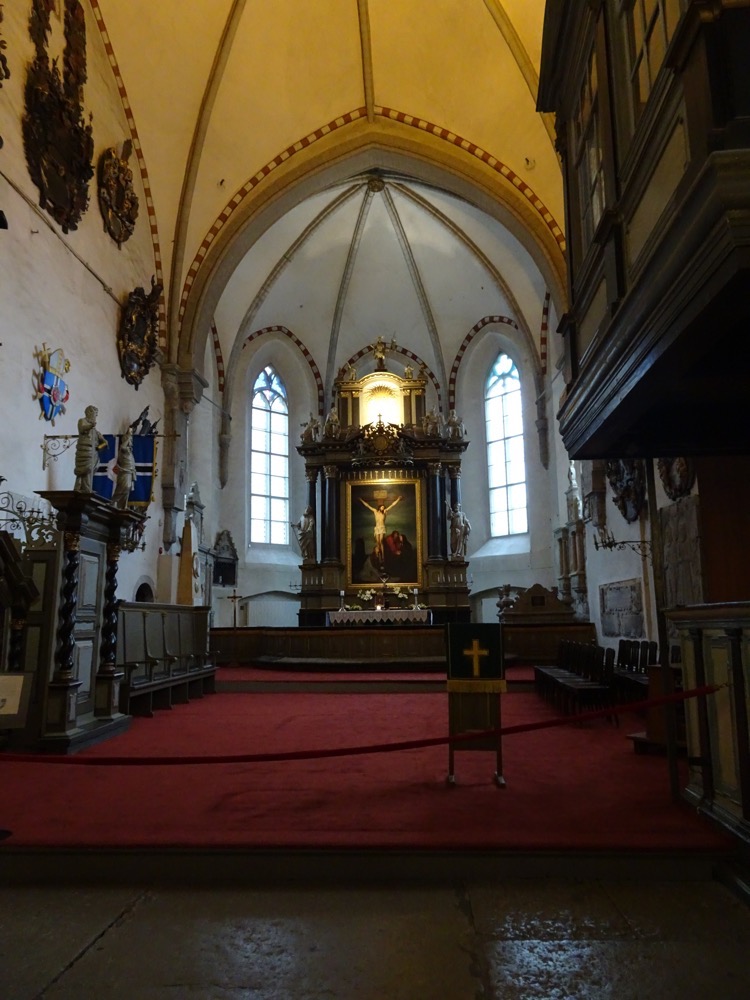

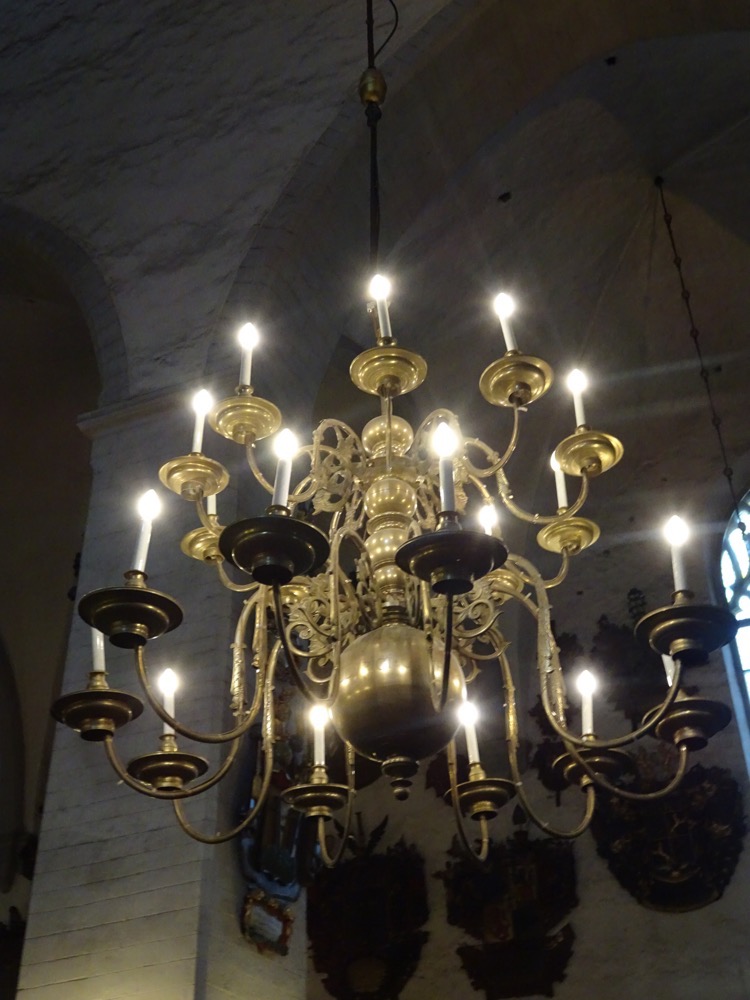
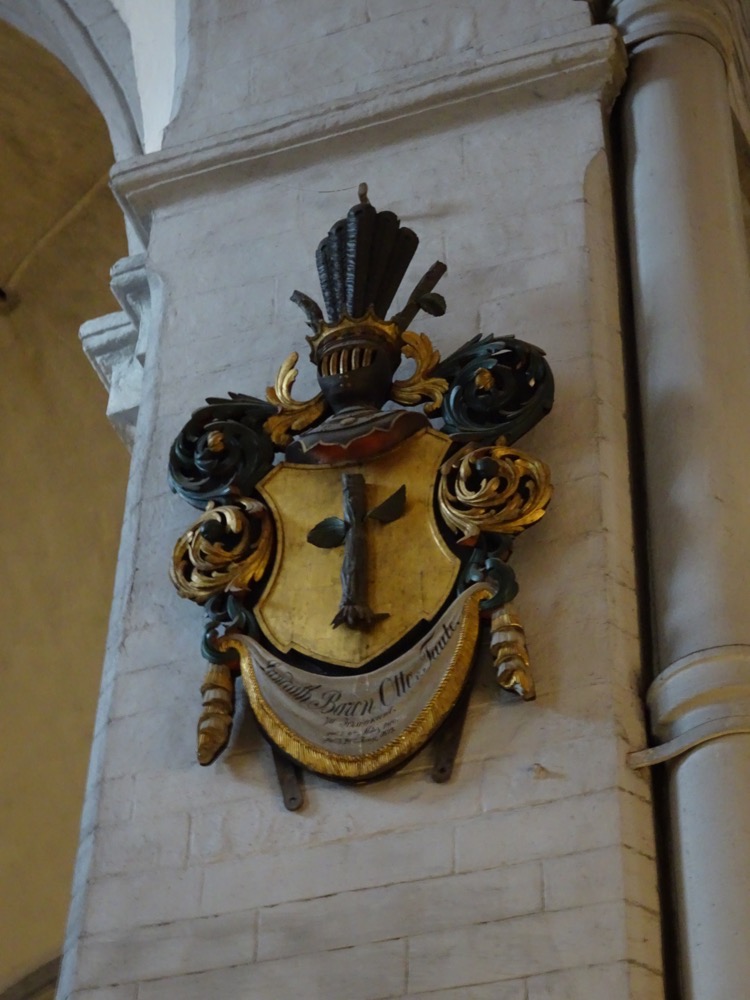 The interior is rather austere with these enormous high pews that congregants would sit in, probably as a family, quite pointedly separated from the people in front and behind them. yale for scale:
The interior is rather austere with these enormous high pews that congregants would sit in, probably as a family, quite pointedly separated from the people in front and behind them. yale for scale: I can’t hardly see the altar over the pew… borys for scale:
I can’t hardly see the altar over the pew… borys for scale:
 After leaving St Mary’s we walked around to the first of several viewing platforms to see over the city – the Piiskopi viewing platform faces over more modern areas of Tallinn.
After leaving St Mary’s we walked around to the first of several viewing platforms to see over the city – the Piiskopi viewing platform faces over more modern areas of Tallinn.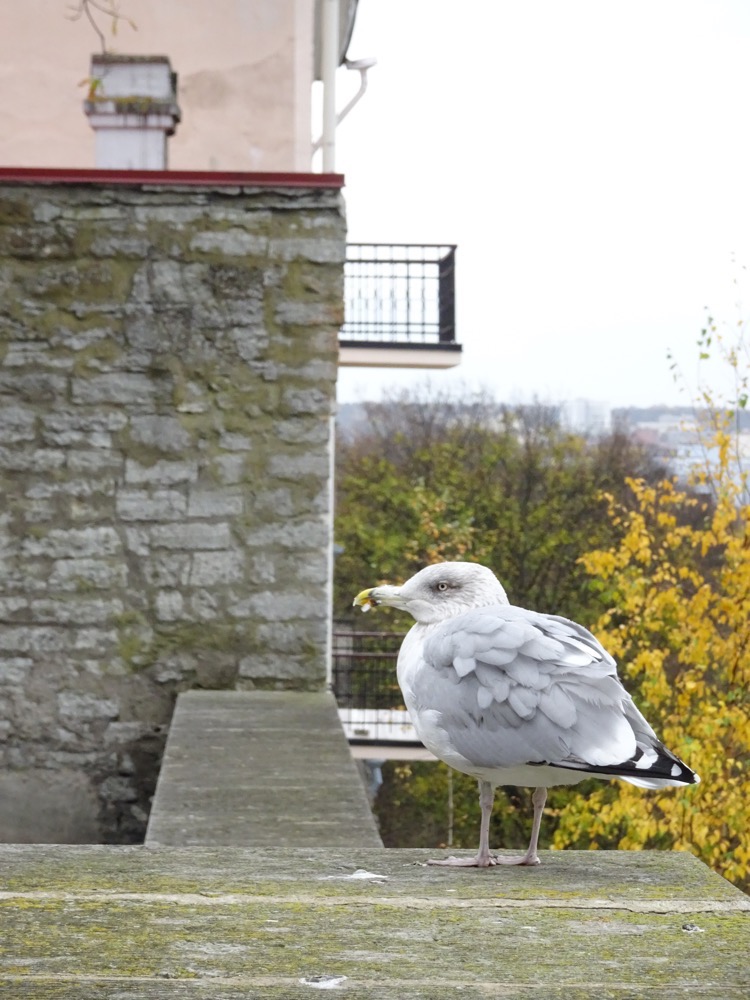
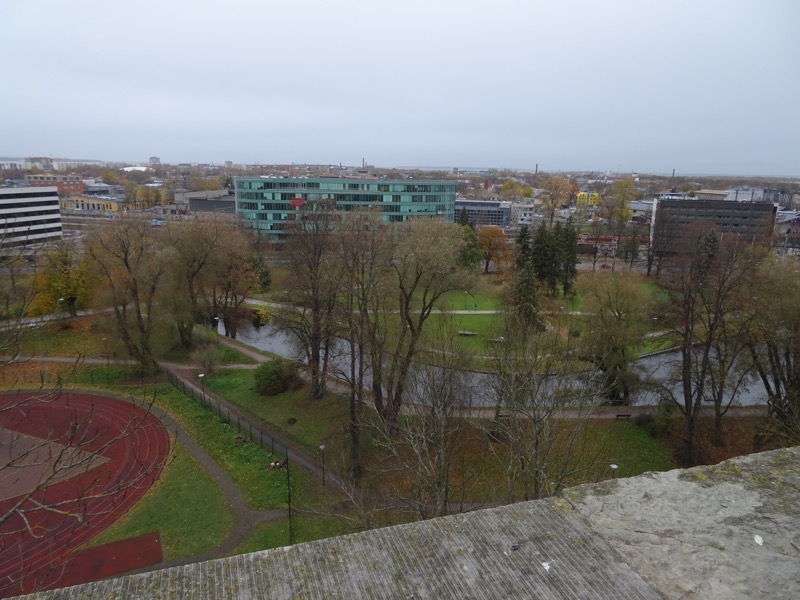 And there was no one here! Amazing… especially after still feeling swamped by tourists in Prague and Kiev.
And there was no one here! Amazing… especially after still feeling swamped by tourists in Prague and Kiev. As you move around the Toompea area, views of the Alexander Nevsky’s onion domes can be seen peeking through the buildings in the narrow streets – I can’t believe they would still want to knock it down!
As you move around the Toompea area, views of the Alexander Nevsky’s onion domes can be seen peeking through the buildings in the narrow streets – I can’t believe they would still want to knock it down!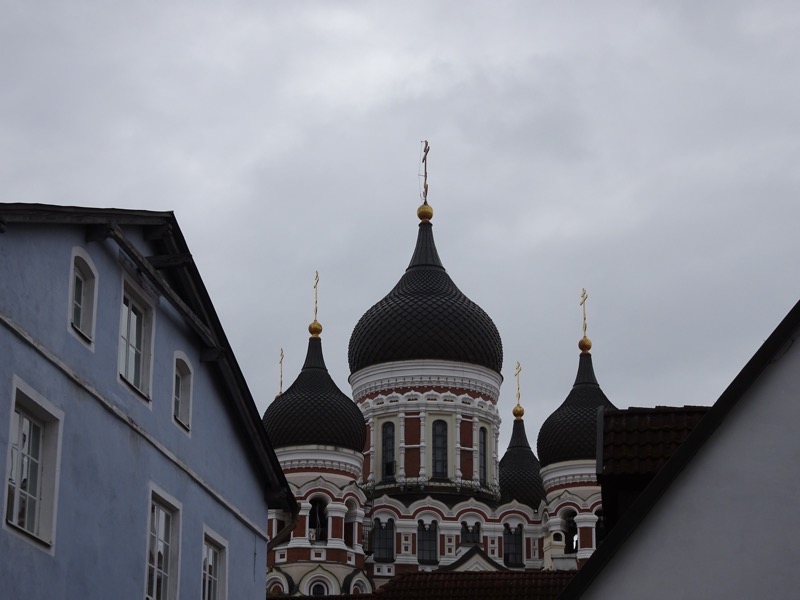
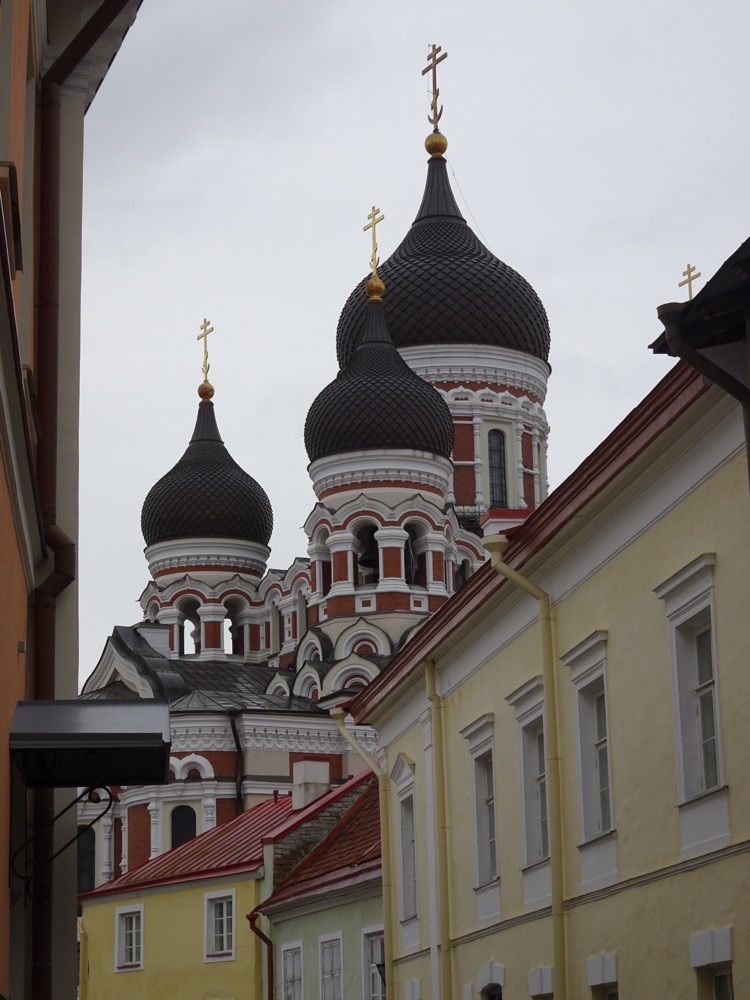 The only evidence that Tallinn was once a major port for the Hanseatic Guilds are these signs outside of the souvenir shops – the Hanseatic Guild of Souvenir Shop Owners perhaps? They certainly seem organised or even unionised to keep their pricing on par. 🙂
The only evidence that Tallinn was once a major port for the Hanseatic Guilds are these signs outside of the souvenir shops – the Hanseatic Guild of Souvenir Shop Owners perhaps? They certainly seem organised or even unionised to keep their pricing on par. 🙂 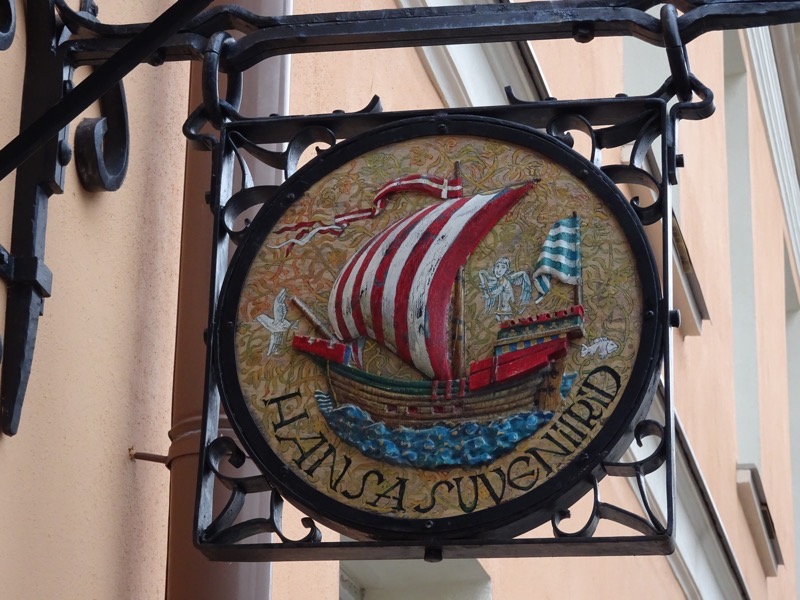
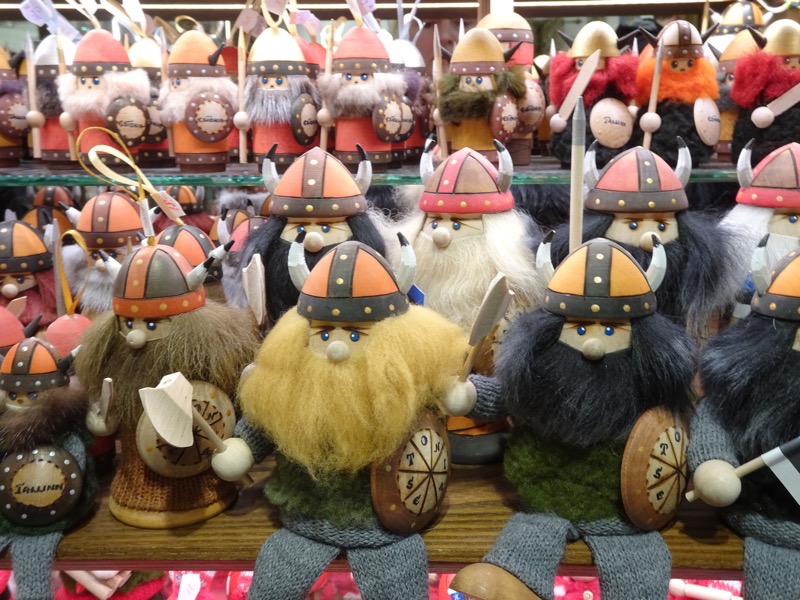
 A little further around the town winding through the international embassies that are placed around Toompea near the Parliament buildings is another viewing platform, the Patkuli Viewing Platform.
A little further around the town winding through the international embassies that are placed around Toompea near the Parliament buildings is another viewing platform, the Patkuli Viewing Platform. This time facing out over an older section of the city and with a few visitors.
This time facing out over an older section of the city and with a few visitors. 

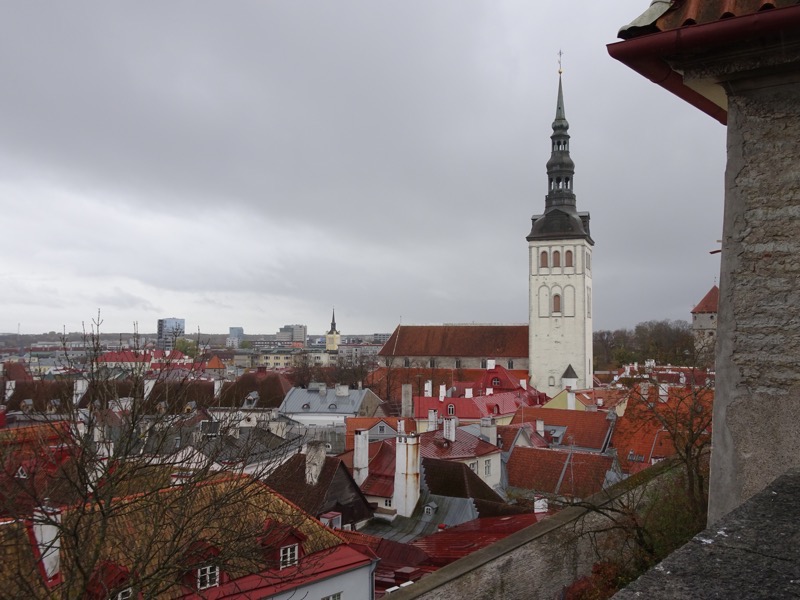 I took some panorama photos here so will have to share those on FB using the 3D thing. Amber, amber everywhere – some of it lovely, some of it hideous. It’s hard to find just nice chunks of amber that you could do your own thing with them, and when you do, they are enormous with price tags to match. I bought some rough amber beads (strings of large chips?) when I was here last year and have done absolutely nothing wtih them, so was determined not to buy more!
I took some panorama photos here so will have to share those on FB using the 3D thing. Amber, amber everywhere – some of it lovely, some of it hideous. It’s hard to find just nice chunks of amber that you could do your own thing with them, and when you do, they are enormous with price tags to match. I bought some rough amber beads (strings of large chips?) when I was here last year and have done absolutely nothing wtih them, so was determined not to buy more!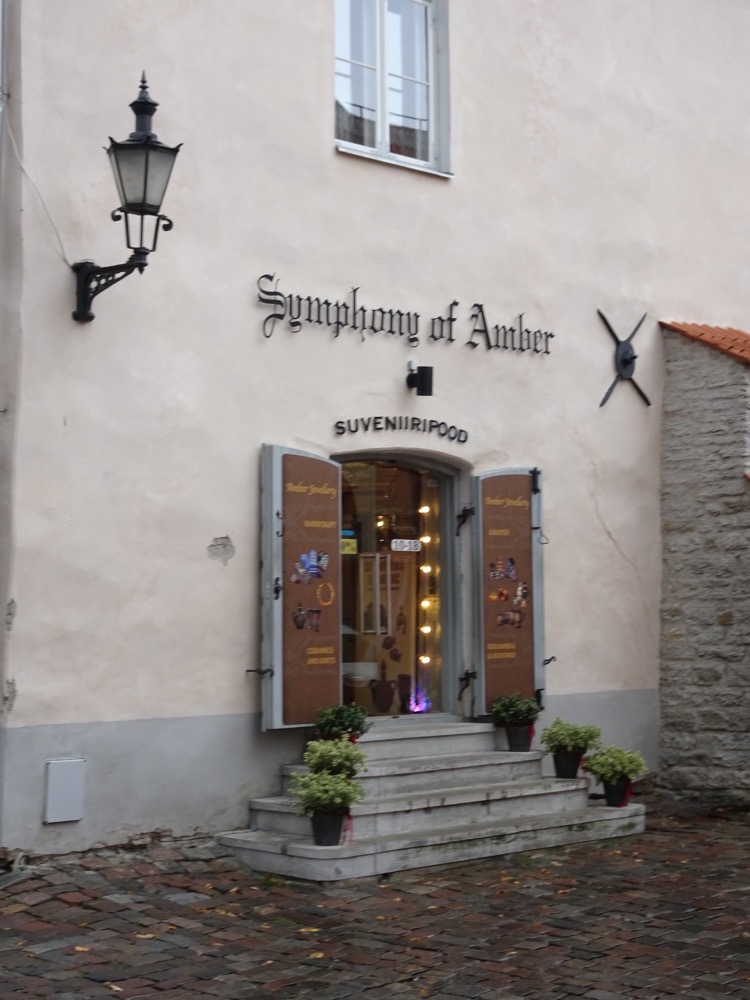
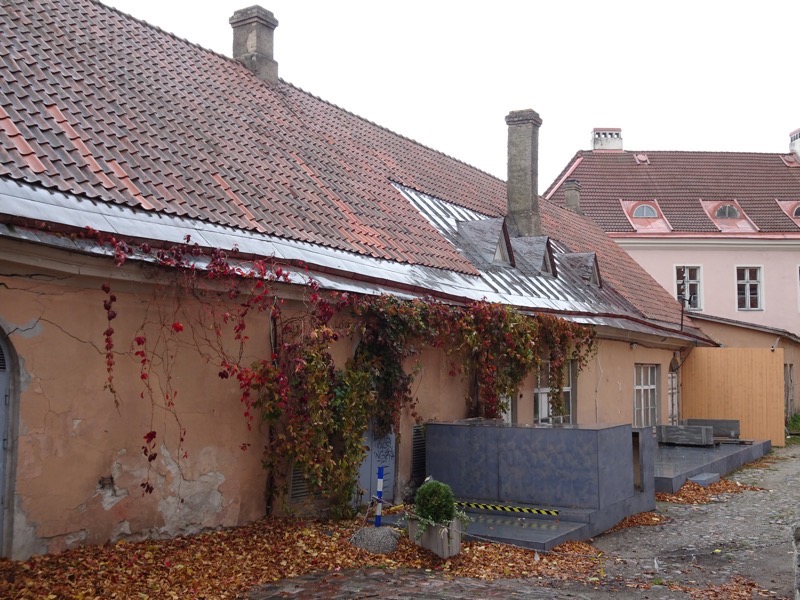
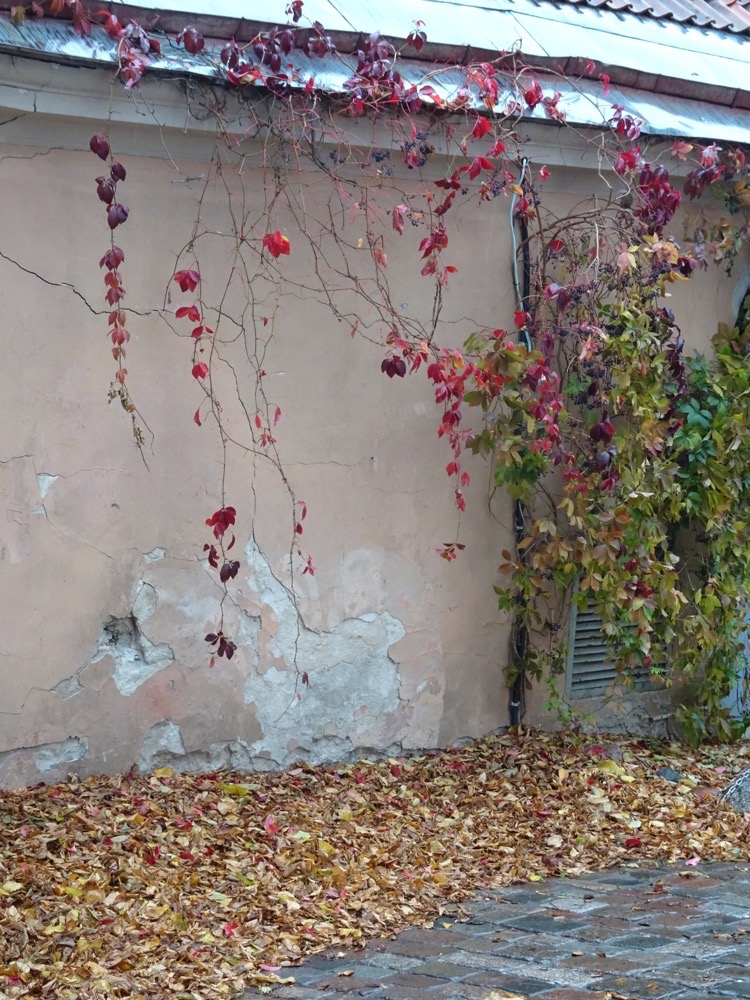
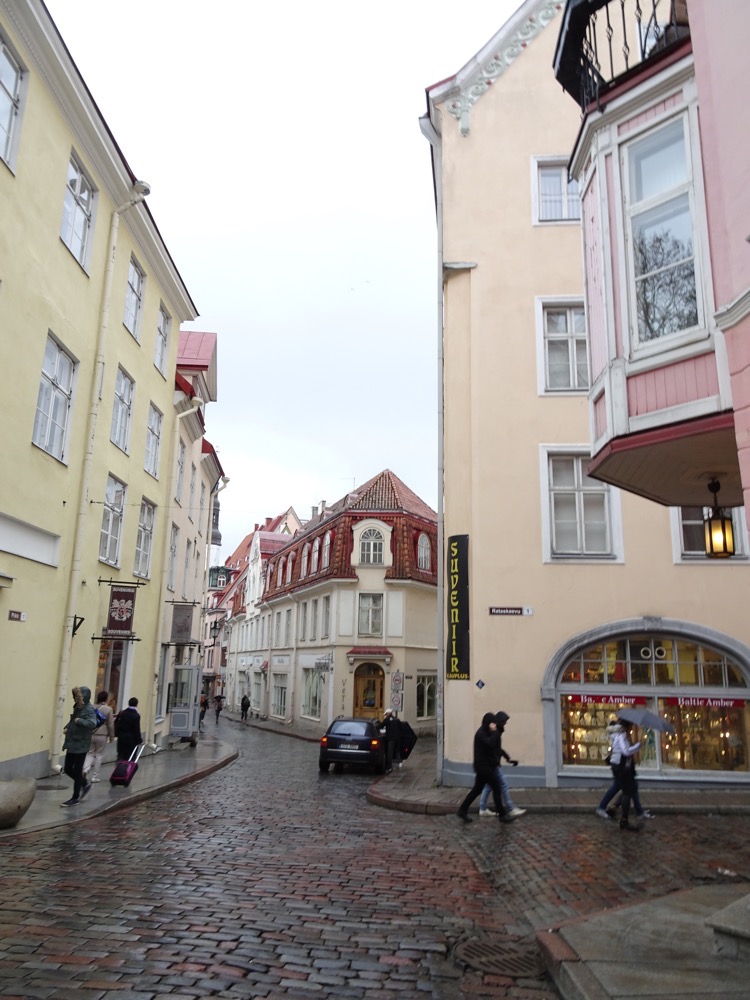
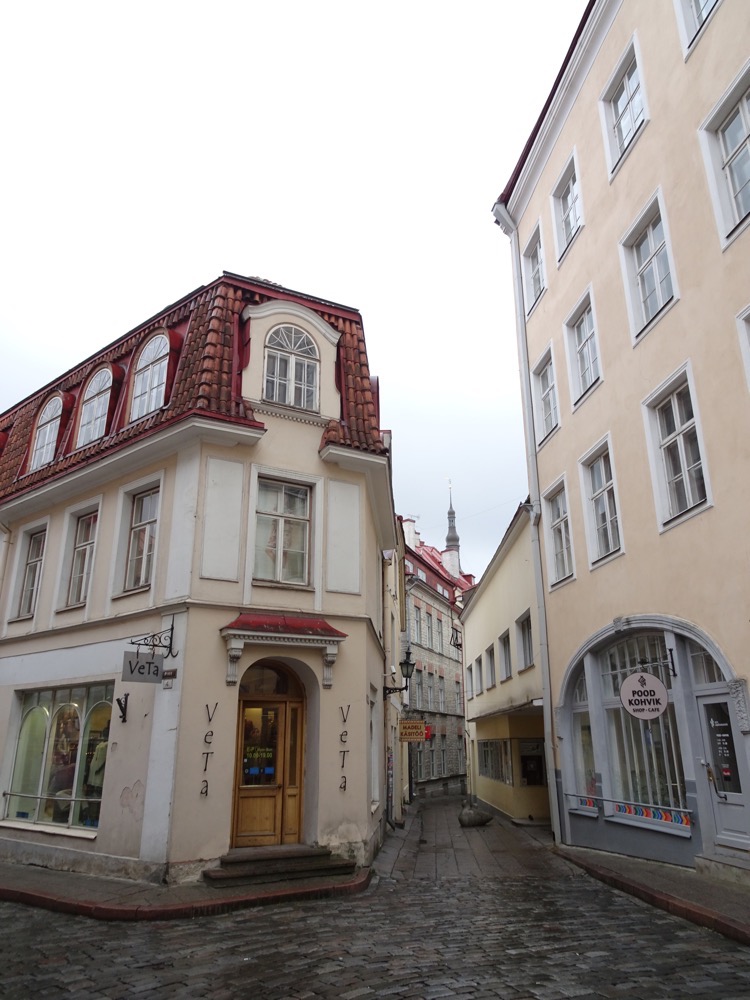 Which amazingly had nearly zero visitors. The Raekoja plats or Town Hall has been here since 1322 and the town square next to it has been here ever since then as well. The hall was rebuilt from 1402 to 1404 into its current form. Every year since 1441, the town puts up a large Christmas tree display in the square beside the Town Hall in a tradition that is now over 570 years old. You can visit inside the Town Hall – between the months of June and August.
Which amazingly had nearly zero visitors. The Raekoja plats or Town Hall has been here since 1322 and the town square next to it has been here ever since then as well. The hall was rebuilt from 1402 to 1404 into its current form. Every year since 1441, the town puts up a large Christmas tree display in the square beside the Town Hall in a tradition that is now over 570 years old. You can visit inside the Town Hall – between the months of June and August.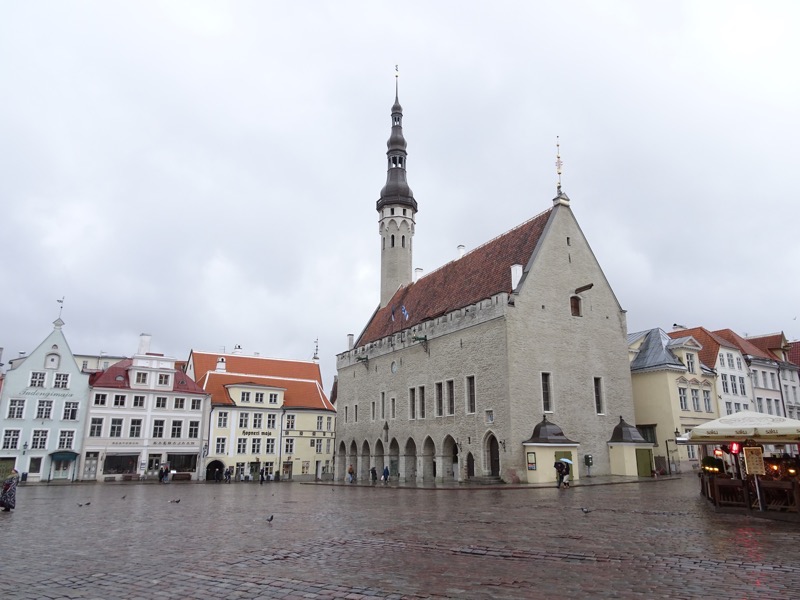 The Square is lined with restaurants, cafes and shops – most of which are fairly empty today. Some of which have signs out saying ‘Thanks for a great summer – see you next year!’.
The Square is lined with restaurants, cafes and shops – most of which are fairly empty today. Some of which have signs out saying ‘Thanks for a great summer – see you next year!’.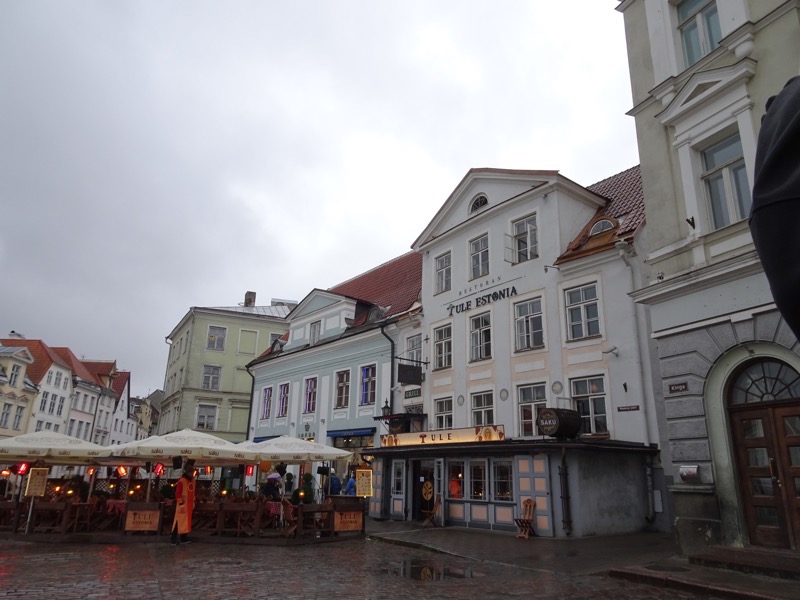


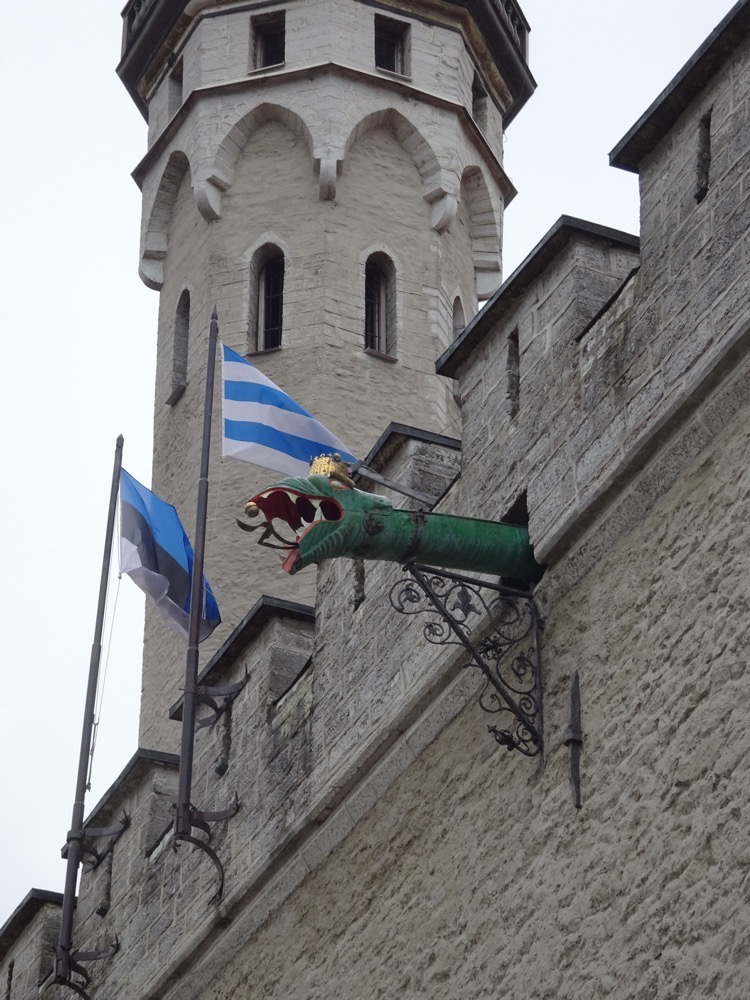
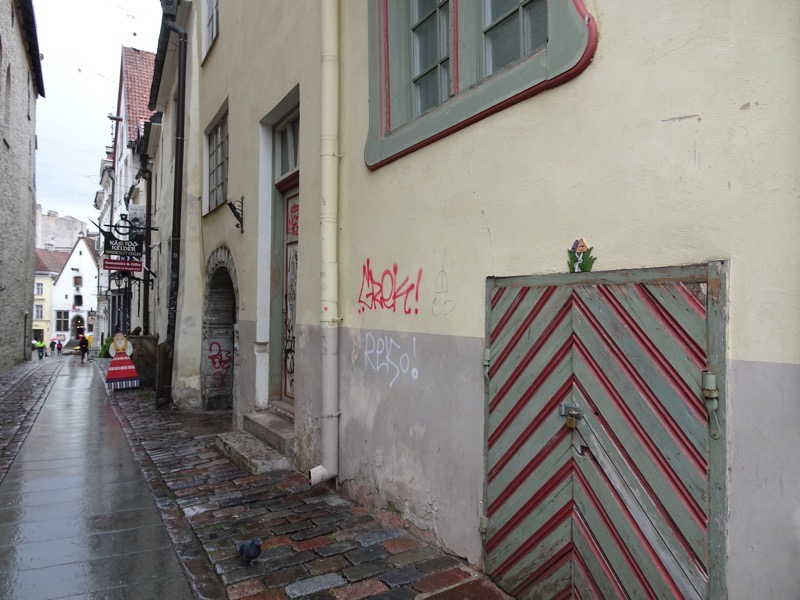
 The old jail which is right beside the Town Hall and is now a photography exhibit.
The old jail which is right beside the Town Hall and is now a photography exhibit.
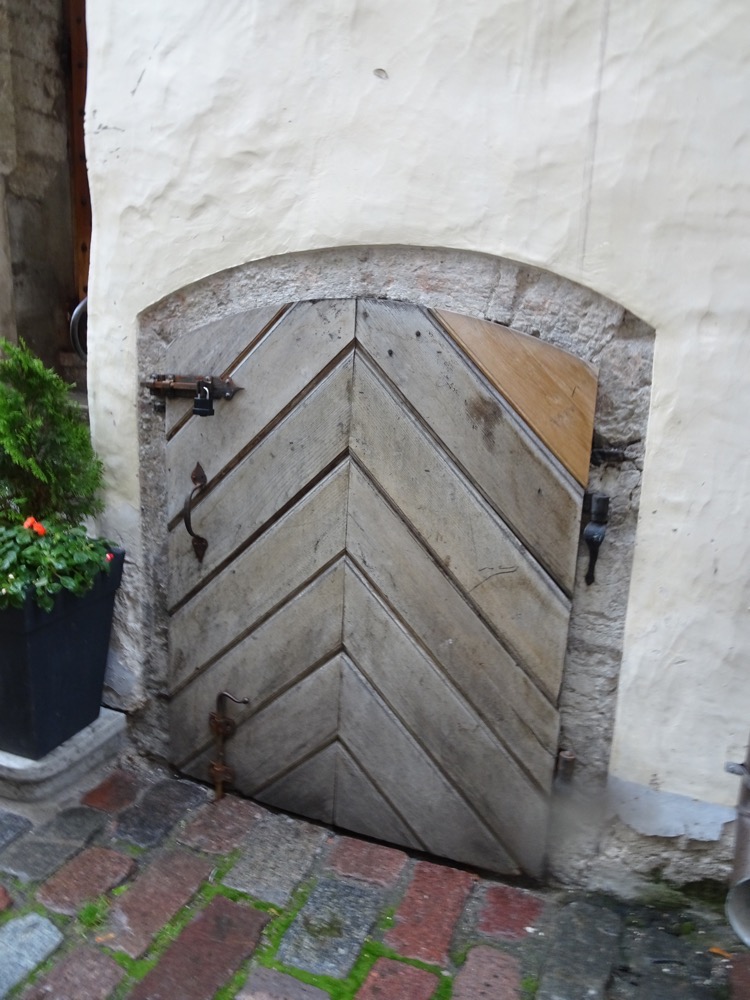

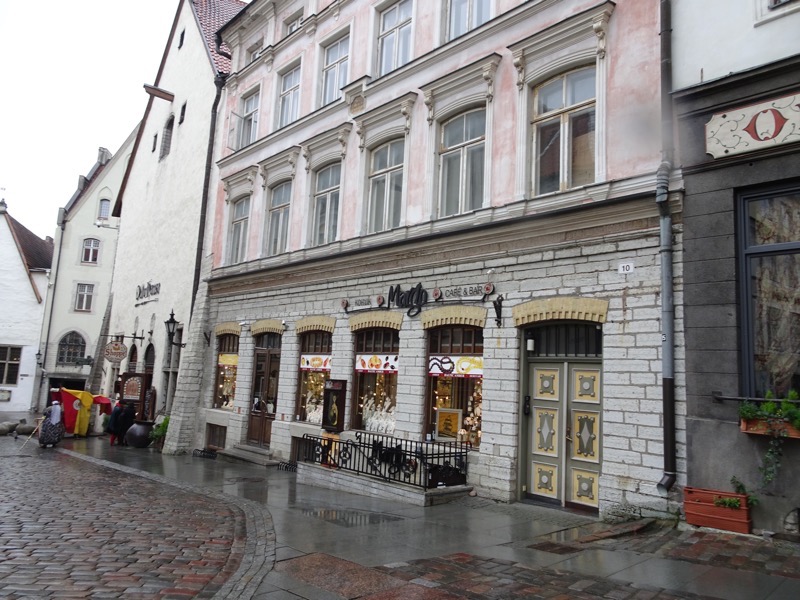 By this point we were looking for somewhere to warm up a bit – maybe some mulled wine and a light lunch. We saw this restaurant with the promise of mushroom soup on their chalkboard and were enticed inside. We had no idea what we were walking into – but rolled with it nonetheless.
By this point we were looking for somewhere to warm up a bit – maybe some mulled wine and a light lunch. We saw this restaurant with the promise of mushroom soup on their chalkboard and were enticed inside. We had no idea what we were walking into – but rolled with it nonetheless.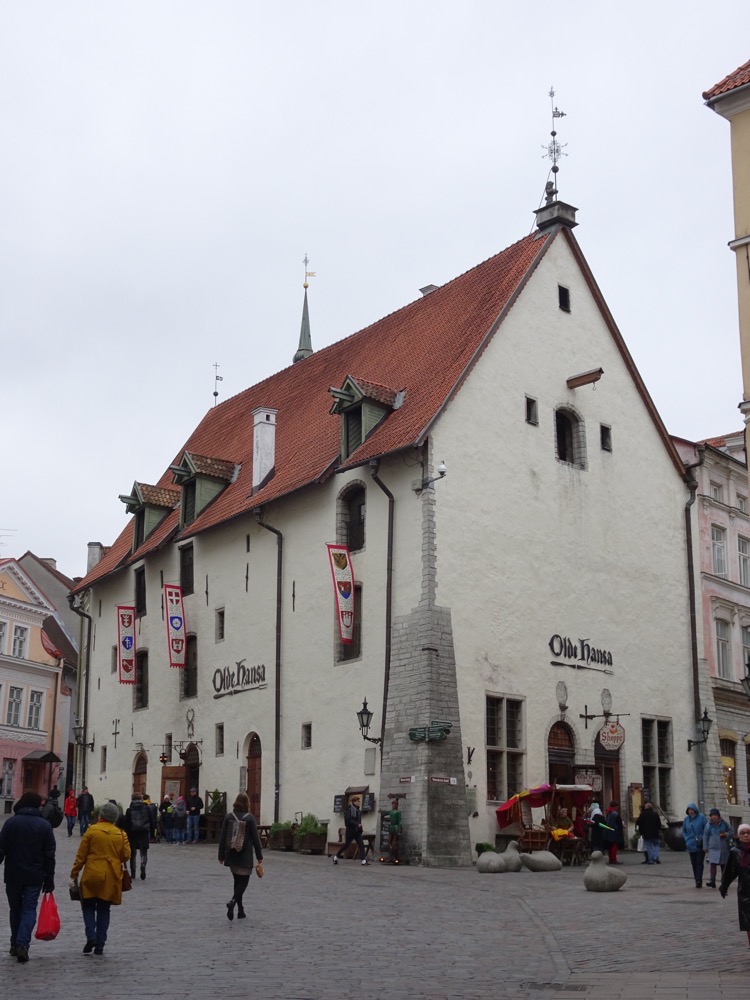
 Turns out it is the most touristy of touristy medieval tavern/cafe/restaurants in town! Complete with garbed waitstaff and a hearty, “Greetings traveller, can we offer you some fare to warm your gullet” type welcome. Oh dear.
Turns out it is the most touristy of touristy medieval tavern/cafe/restaurants in town! Complete with garbed waitstaff and a hearty, “Greetings traveller, can we offer you some fare to warm your gullet” type welcome. Oh dear.  The entire hall is lit only by candlelight and the menu was really quite interesting.
The entire hall is lit only by candlelight and the menu was really quite interesting.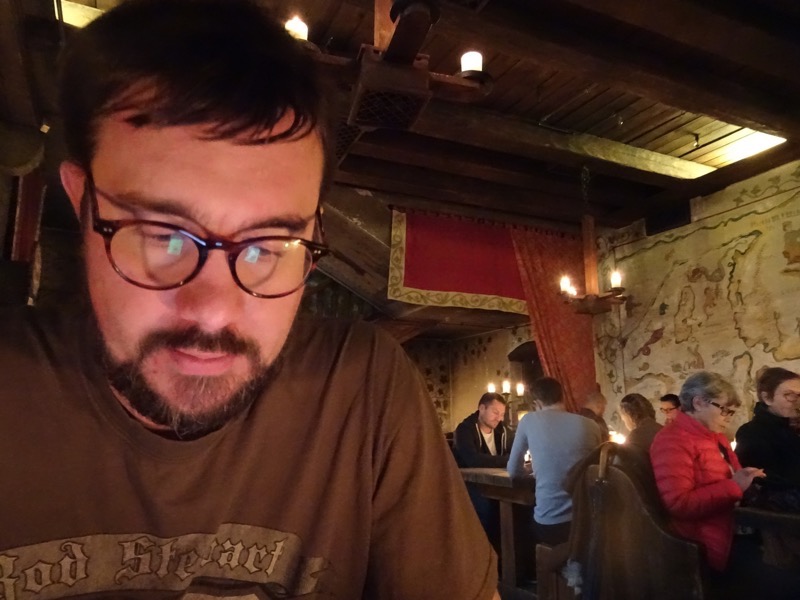
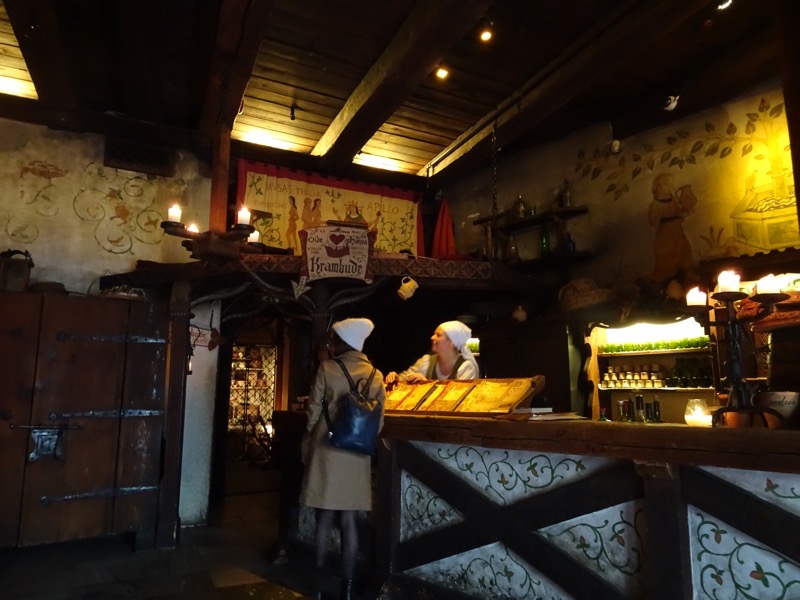 We were unaware, but visitors were even able to dress in medieval clothing to enjoy their medieval lunch. Apparently, this place is a major draw for many visitors to Tallinn. and rates very highly on Trip Advisor –
We were unaware, but visitors were even able to dress in medieval clothing to enjoy their medieval lunch. Apparently, this place is a major draw for many visitors to Tallinn. and rates very highly on Trip Advisor –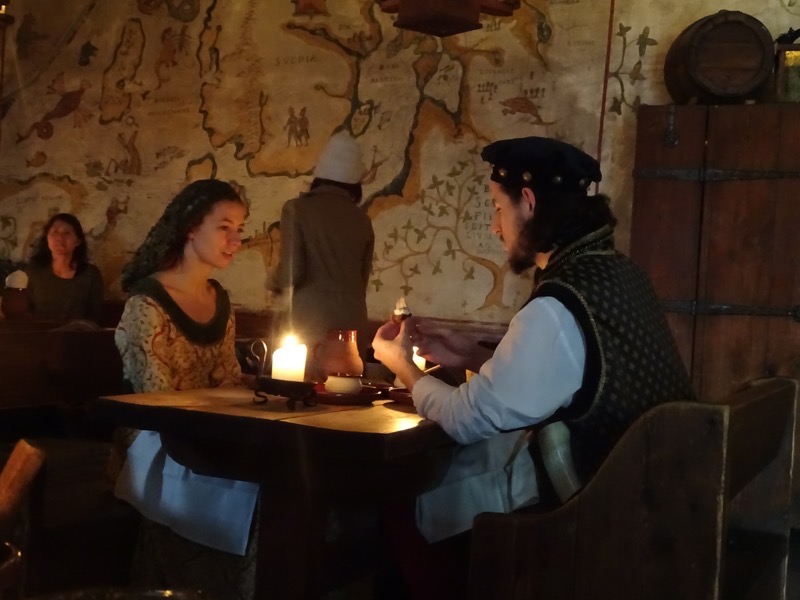 Having only come in for a cider/mulled wine and some soup – we ended up trying lots of interesting food. Designed as an entree for one, we shared this ‘Neptune’s Platter’ which contained – Salmon eggs, Andalusian fish, smoke-grilled salmon, herring, anchovies, quail eggs, Castle’s fresh cheese, herb-bread with nuts, rye bread with smoked ham.
Having only come in for a cider/mulled wine and some soup – we ended up trying lots of interesting food. Designed as an entree for one, we shared this ‘Neptune’s Platter’ which contained – Salmon eggs, Andalusian fish, smoke-grilled salmon, herring, anchovies, quail eggs, Castle’s fresh cheese, herb-bread with nuts, rye bread with smoked ham. 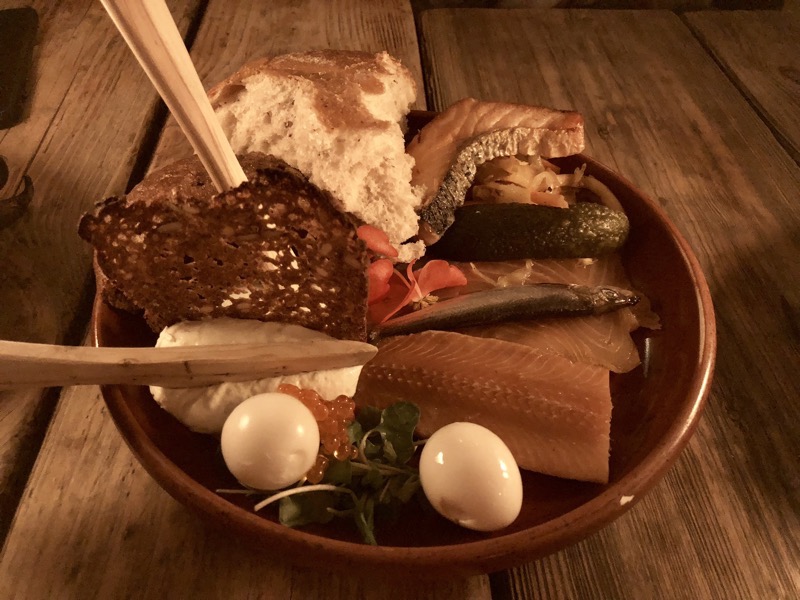 yale ordered the
yale ordered the 
 Afterwards we had enjoyed the Neptune Platter so well, that we decided to not have a dessert but instead flip back to try the non-seafood version taster plate called the Reval’s Beef and Liver Pate Tasting Plate, which contained: Juniper-flavoured beef, orange tongue jelly, French royal poultry liver paté, olives, breads and caramelized onion jam. Also all very tasty. One thing about eating out with yale – I get to try all the things knowing he will finish them. 🙂
Afterwards we had enjoyed the Neptune Platter so well, that we decided to not have a dessert but instead flip back to try the non-seafood version taster plate called the Reval’s Beef and Liver Pate Tasting Plate, which contained: Juniper-flavoured beef, orange tongue jelly, French royal poultry liver paté, olives, breads and caramelized onion jam. Also all very tasty. One thing about eating out with yale – I get to try all the things knowing he will finish them. 🙂 
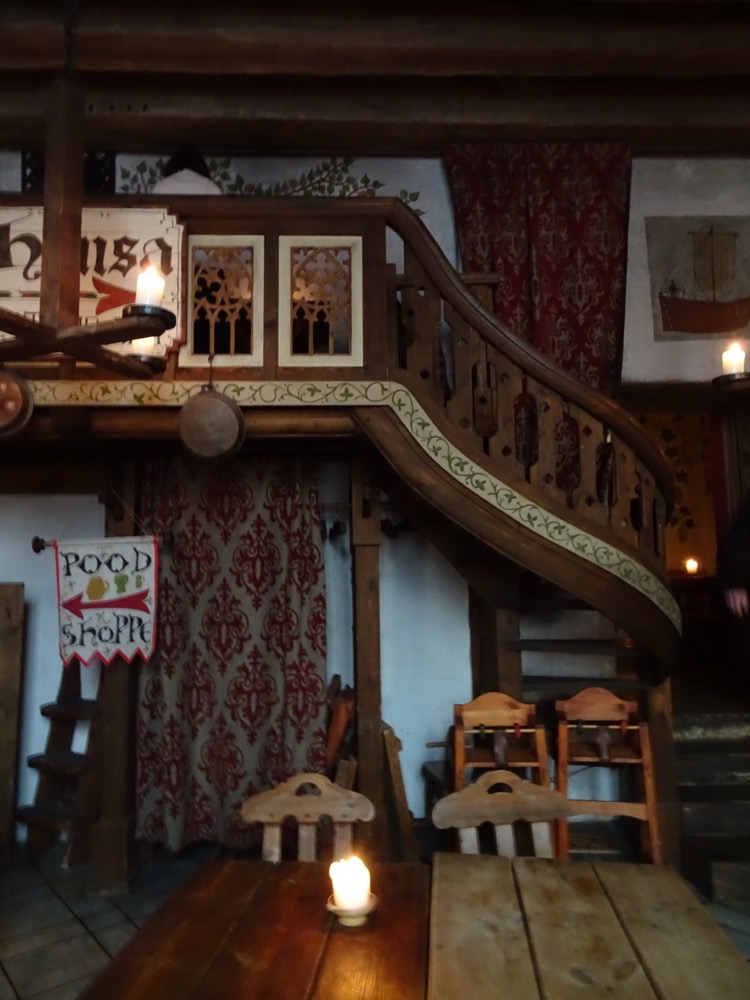
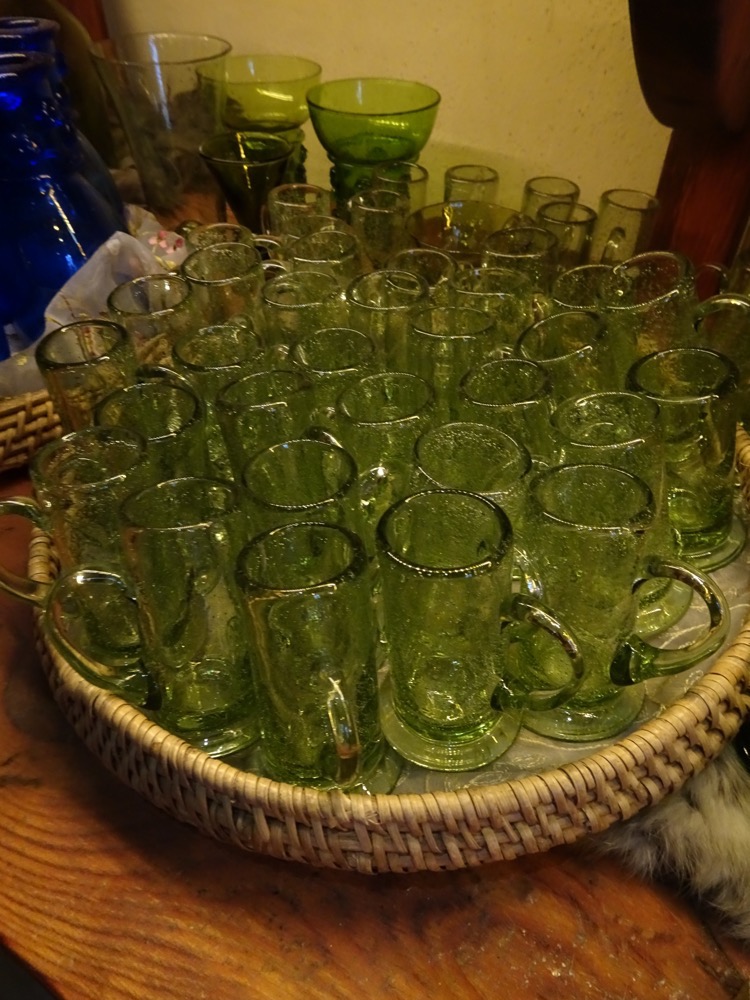
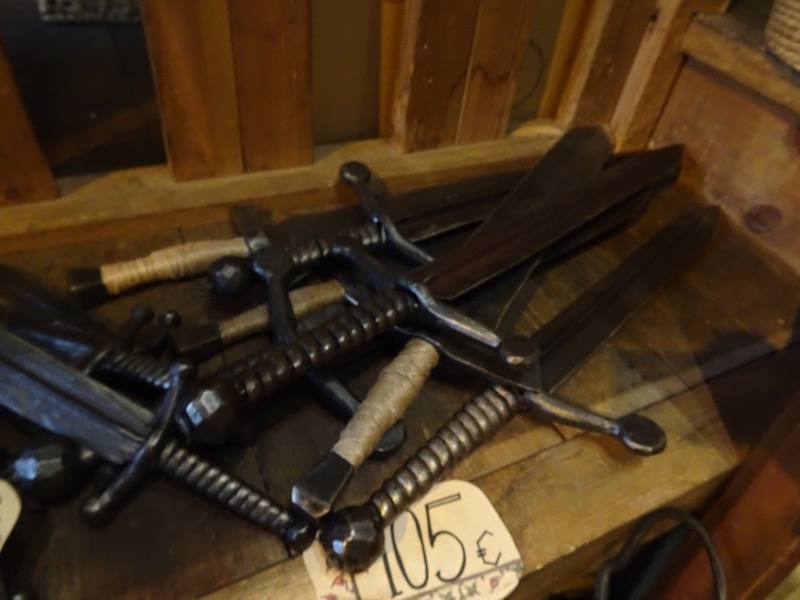
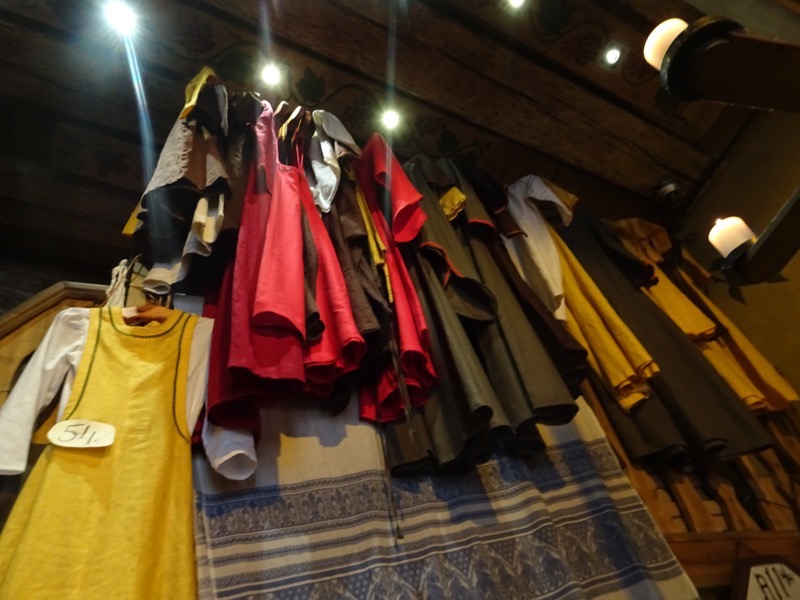
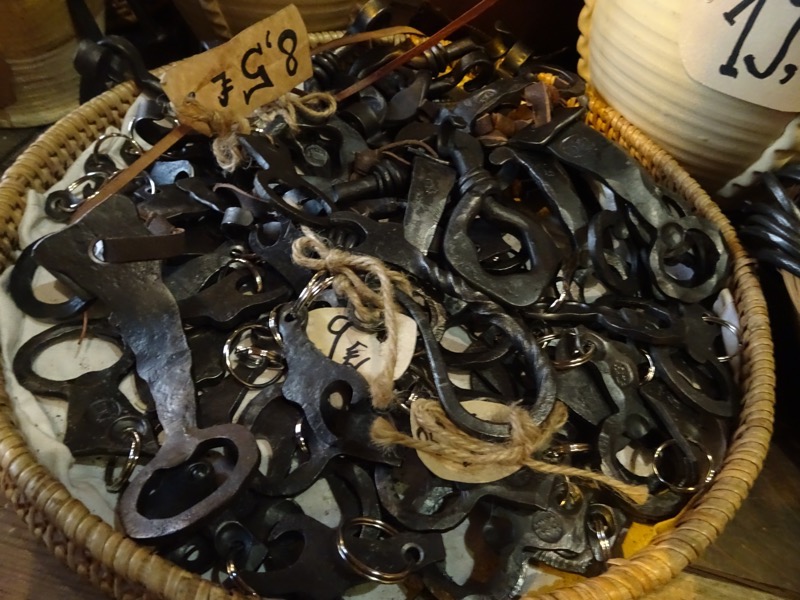

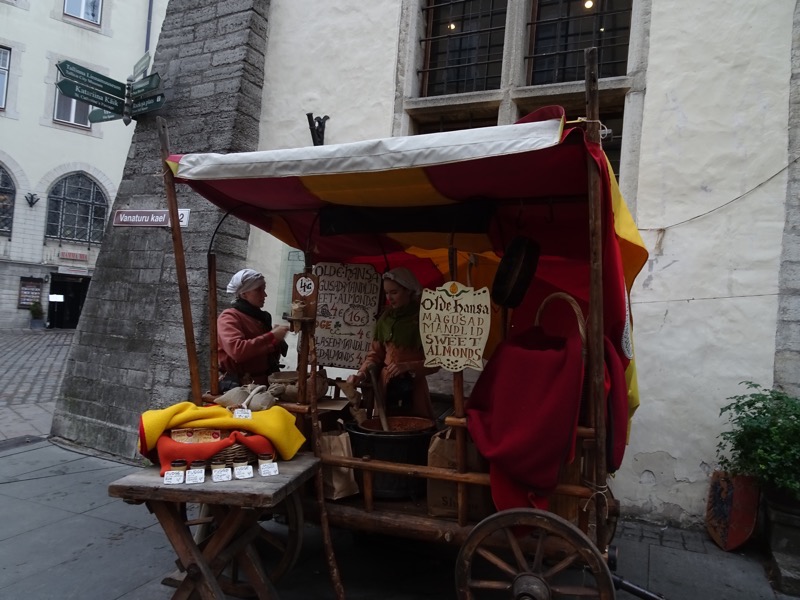 I am not sure what this was about on the website of a different nearby ‘medieval’ tavern… is it lodgings for if you’re drunk and can’t drive home? Or are they offering ‘special services’ upstairs? 😮
I am not sure what this was about on the website of a different nearby ‘medieval’ tavern… is it lodgings for if you’re drunk and can’t drive home? Or are they offering ‘special services’ upstairs? 😮  Back out on the street we went looking for the Town Hall Pharmacy also known as the Raeapteek which is the oldest pharmacy in Europe that has been in continuous operation in the same premises.
Back out on the street we went looking for the Town Hall Pharmacy also known as the Raeapteek which is the oldest pharmacy in Europe that has been in continuous operation in the same premises.
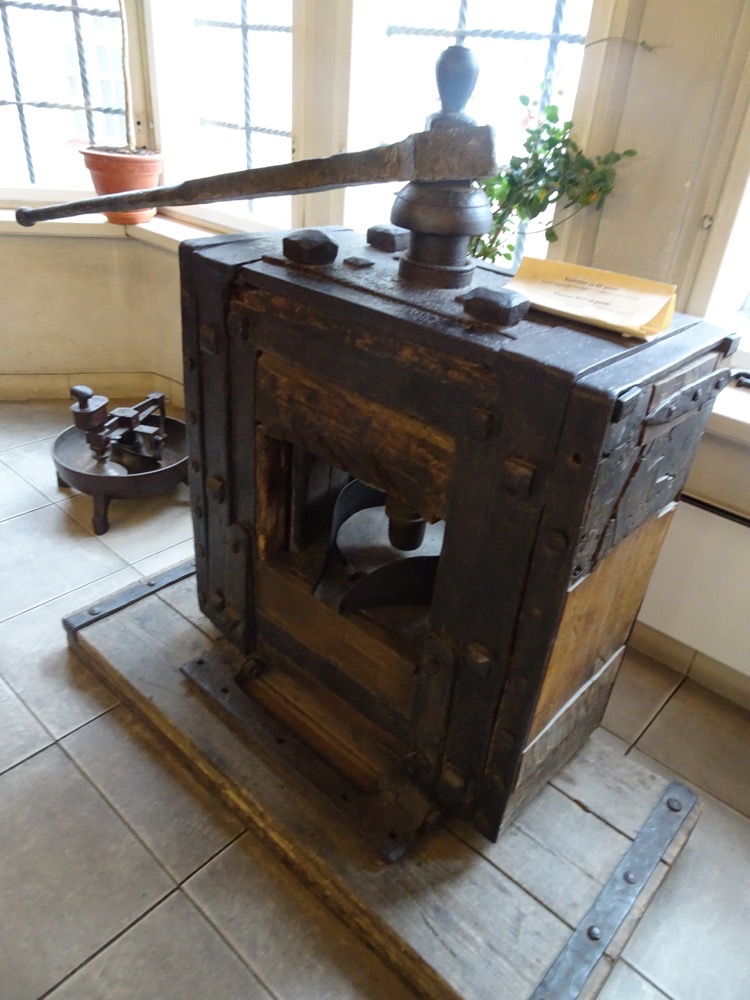

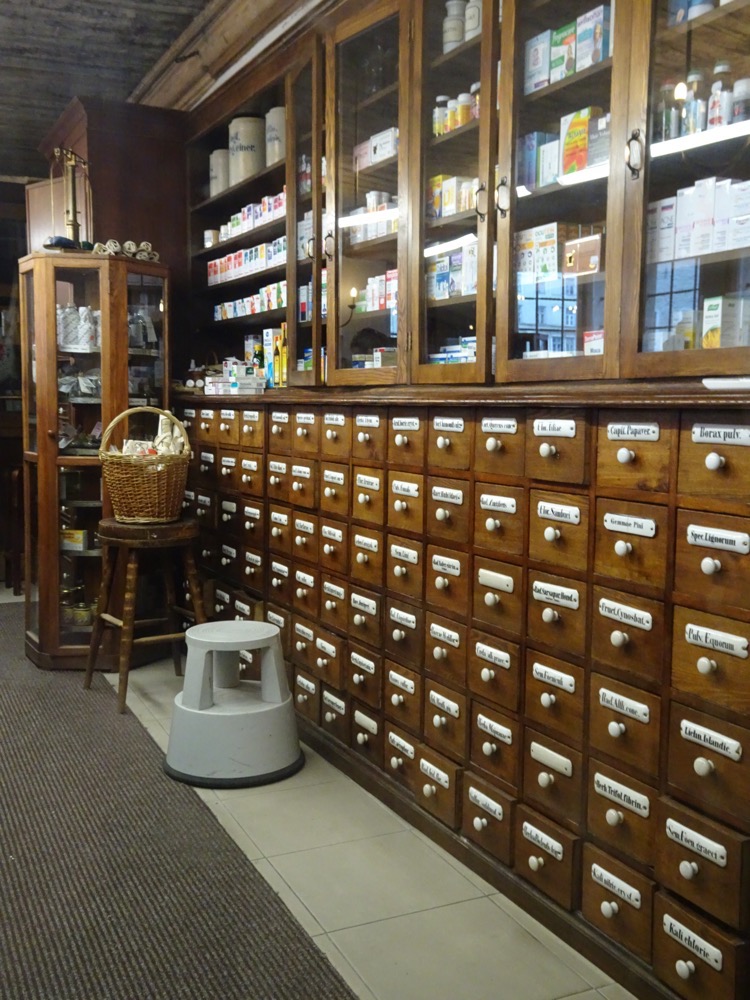 It looked a bit weird to see all the modern medicines in the old cabinets – but it is still a working pharmacy so you can go buy your panadol here.
It looked a bit weird to see all the modern medicines in the old cabinets – but it is still a working pharmacy so you can go buy your panadol here.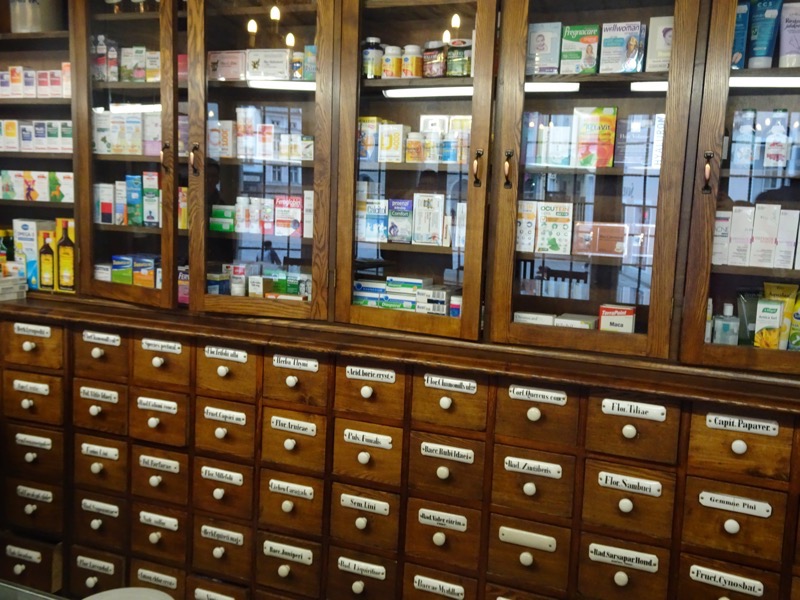 There is a small museum of old ‘treatments’… dried toads, bats, hedgehogs?
There is a small museum of old ‘treatments’… dried toads, bats, hedgehogs?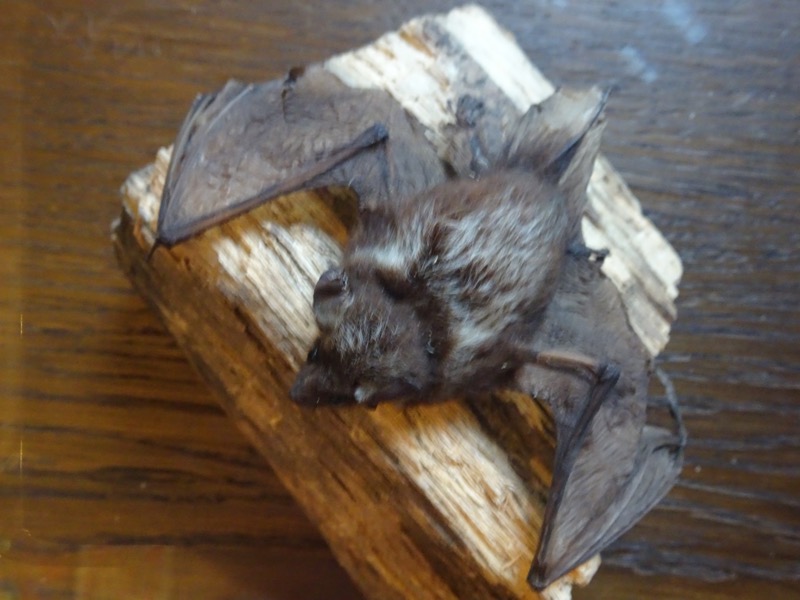
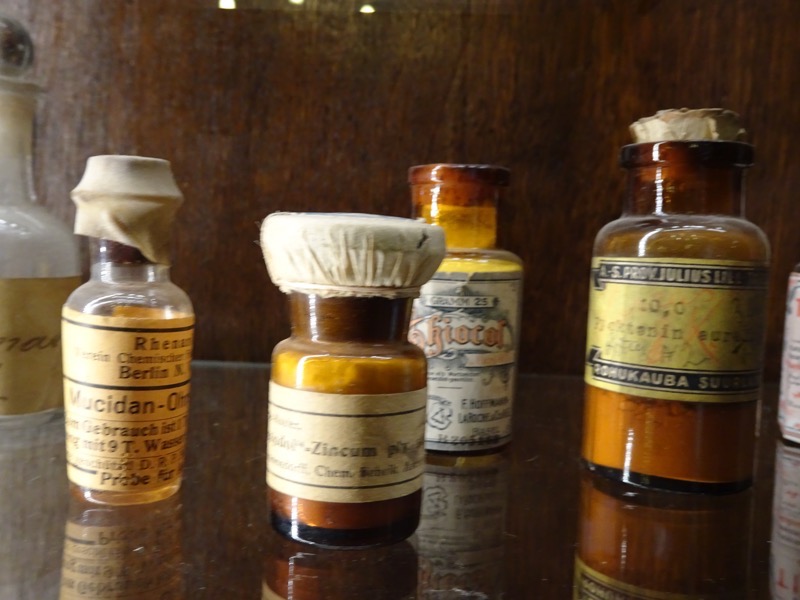

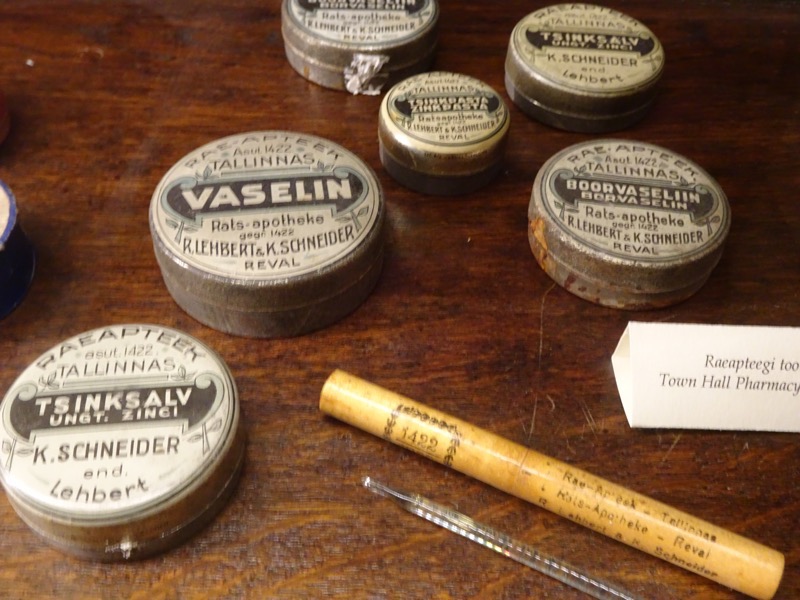
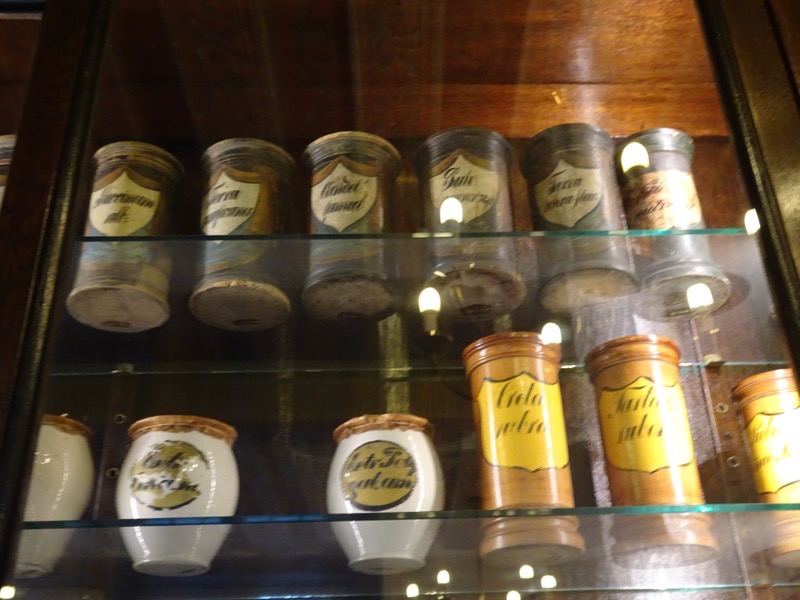
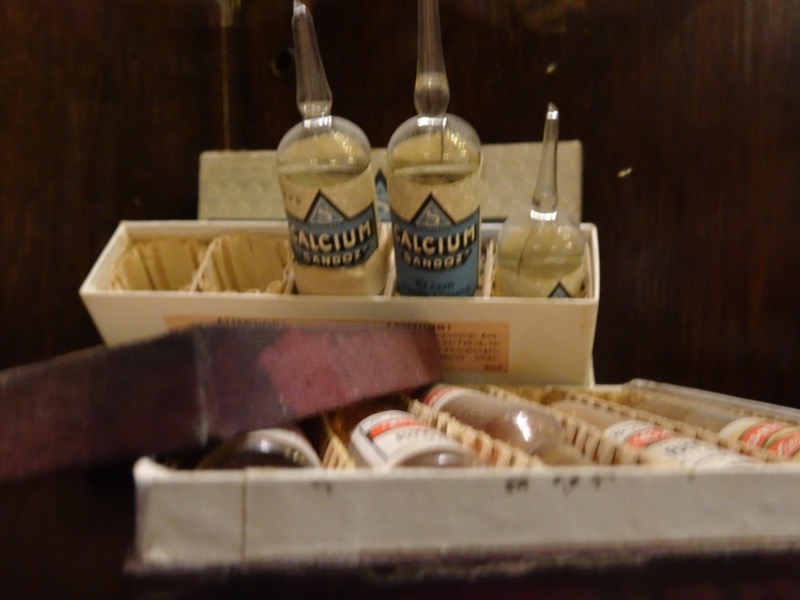
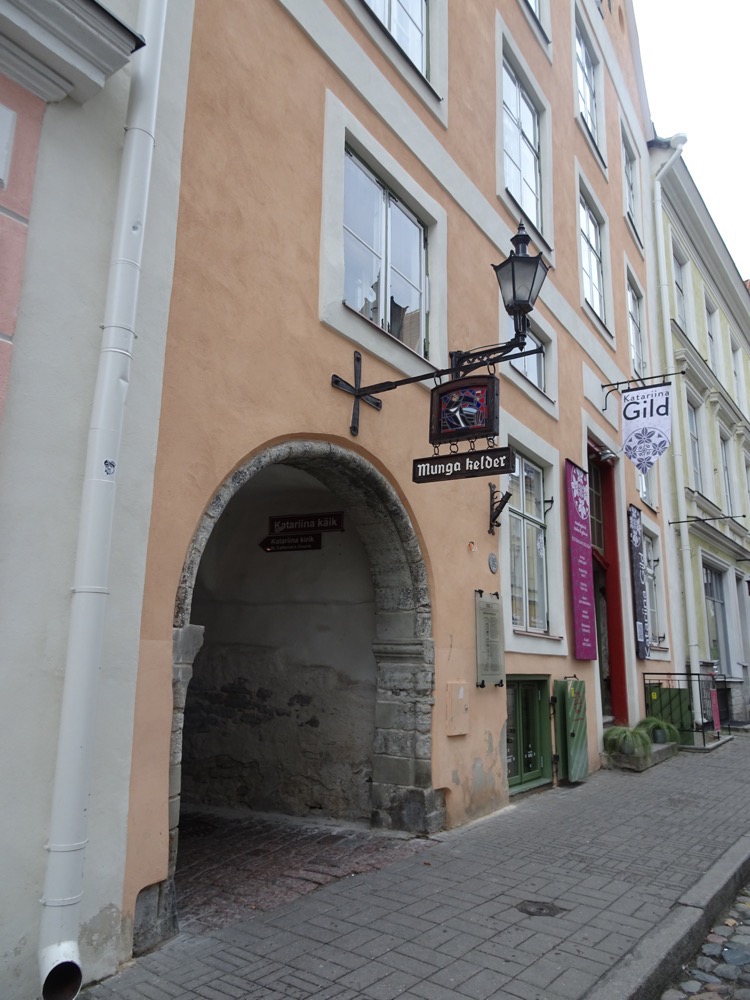
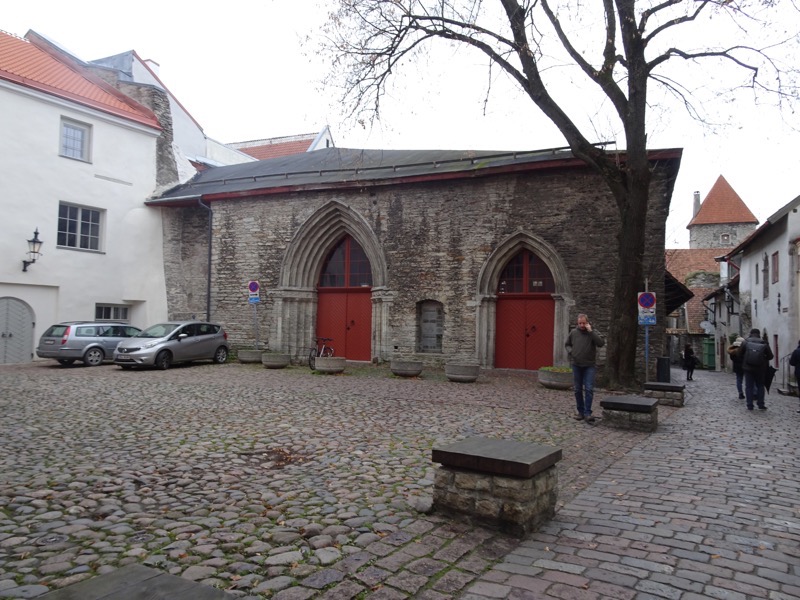
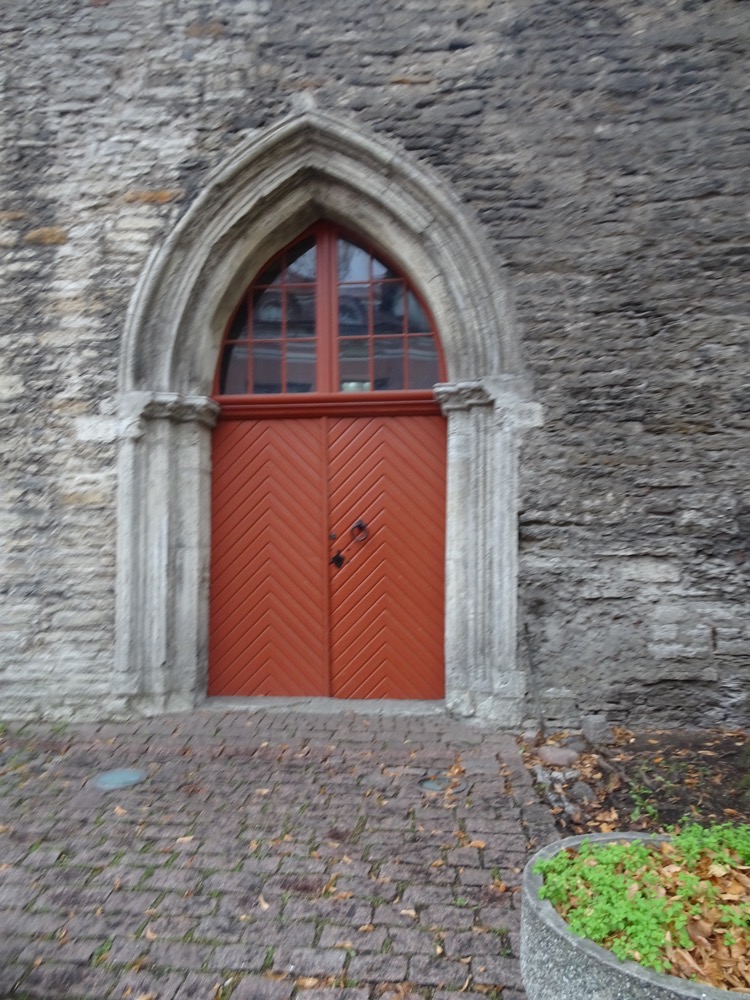
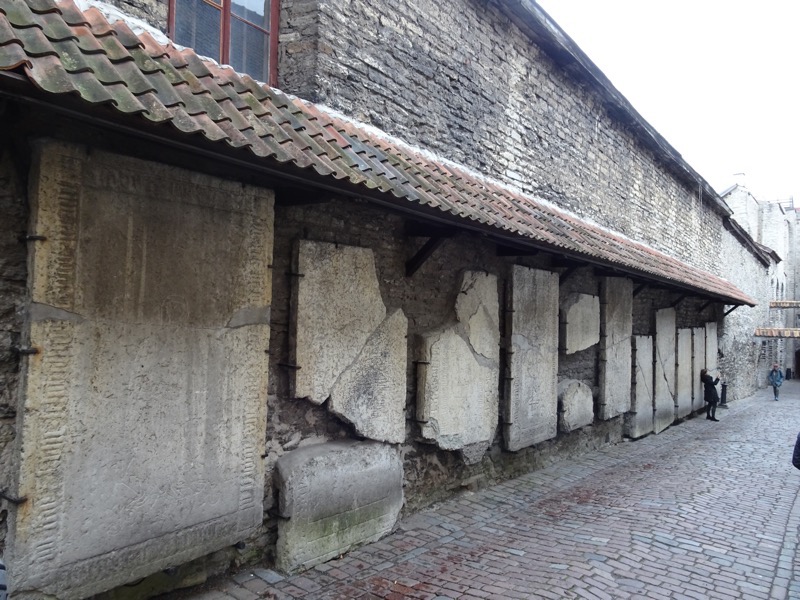 No summer crowds!
No summer crowds!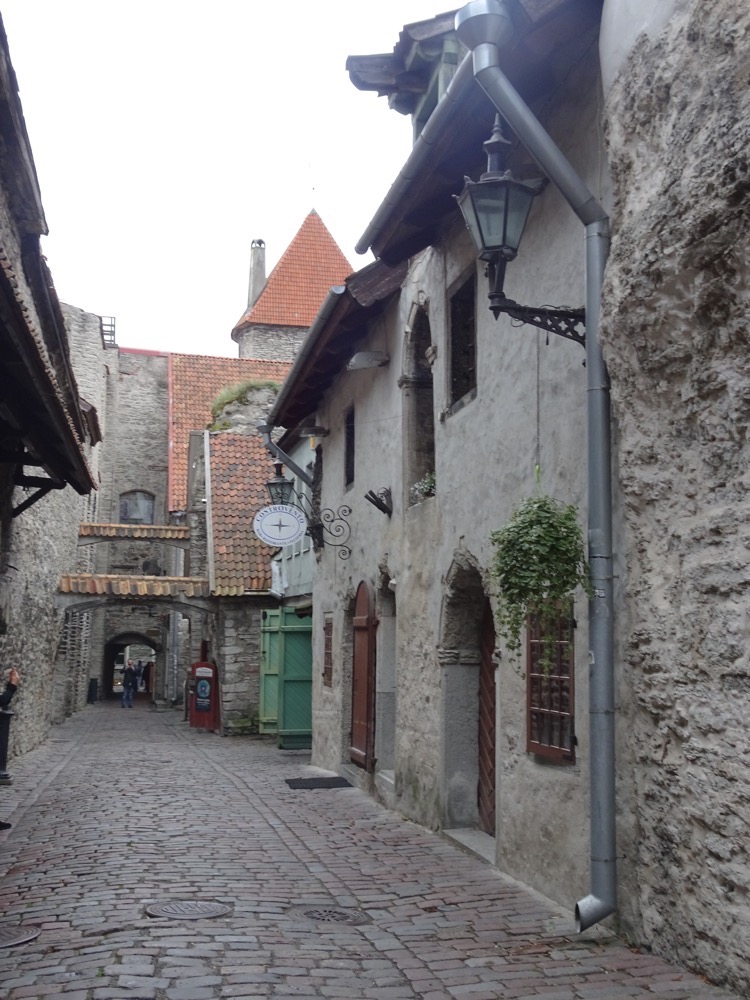
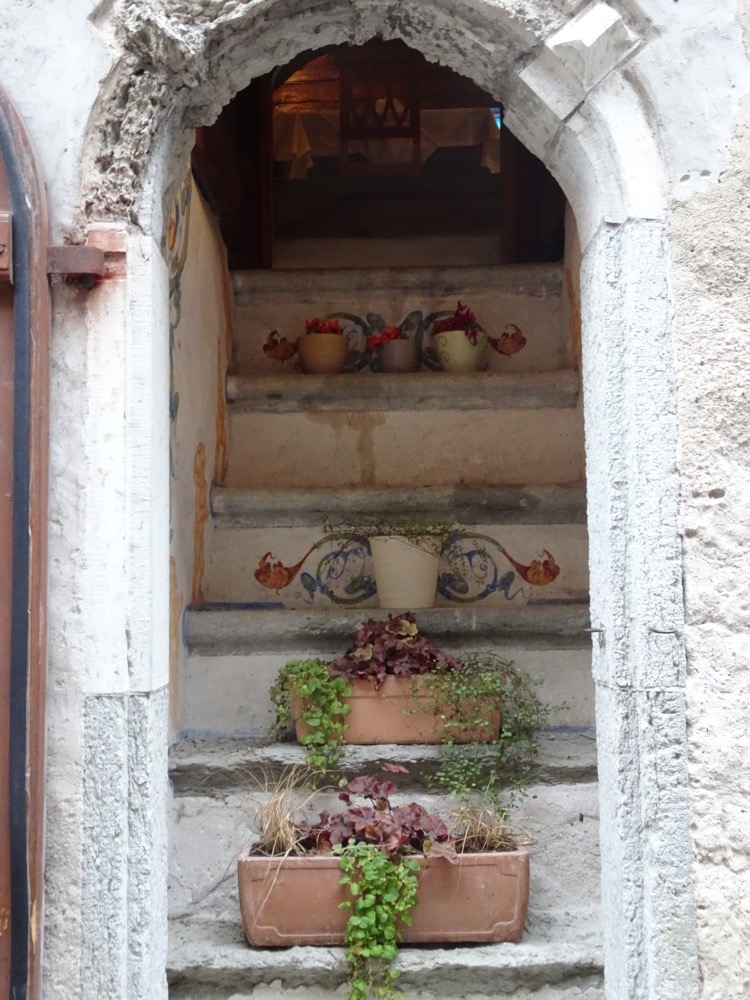
 It was lovely to walk through this space and have it all to ourselves, also to have time to check out some of the art studios that are here – though the woodworker seems to have packed up for the winter.
It was lovely to walk through this space and have it all to ourselves, also to have time to check out some of the art studios that are here – though the woodworker seems to have packed up for the winter. At the end of the passage, you can climb to the top of the Hellemann Tower to walk along the old
At the end of the passage, you can climb to the top of the Hellemann Tower to walk along the old 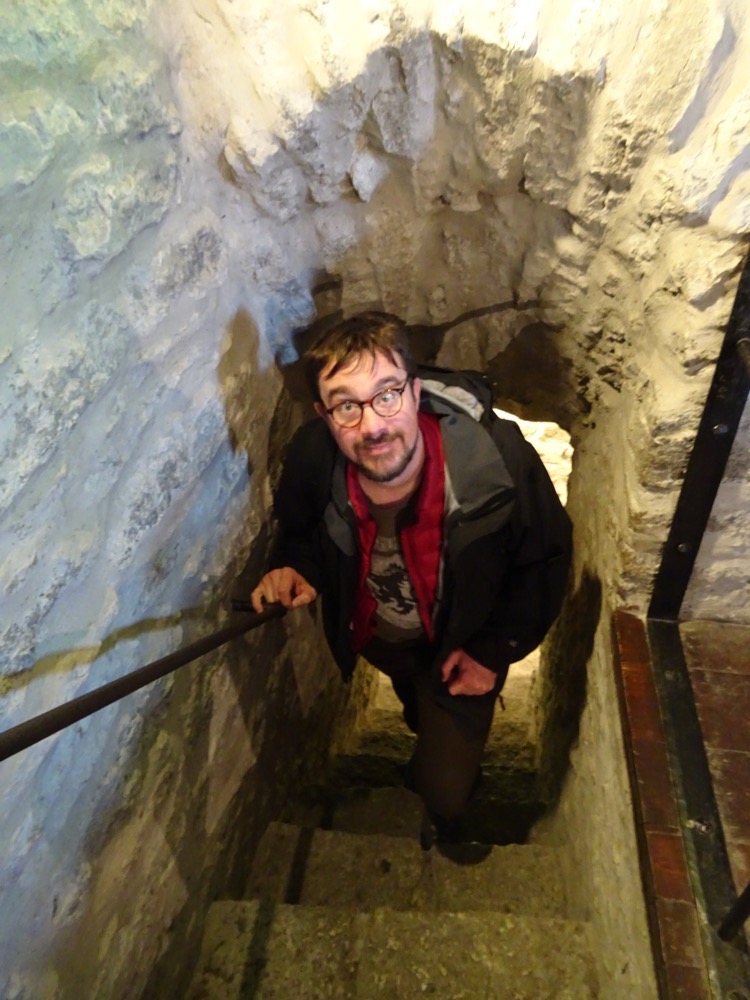

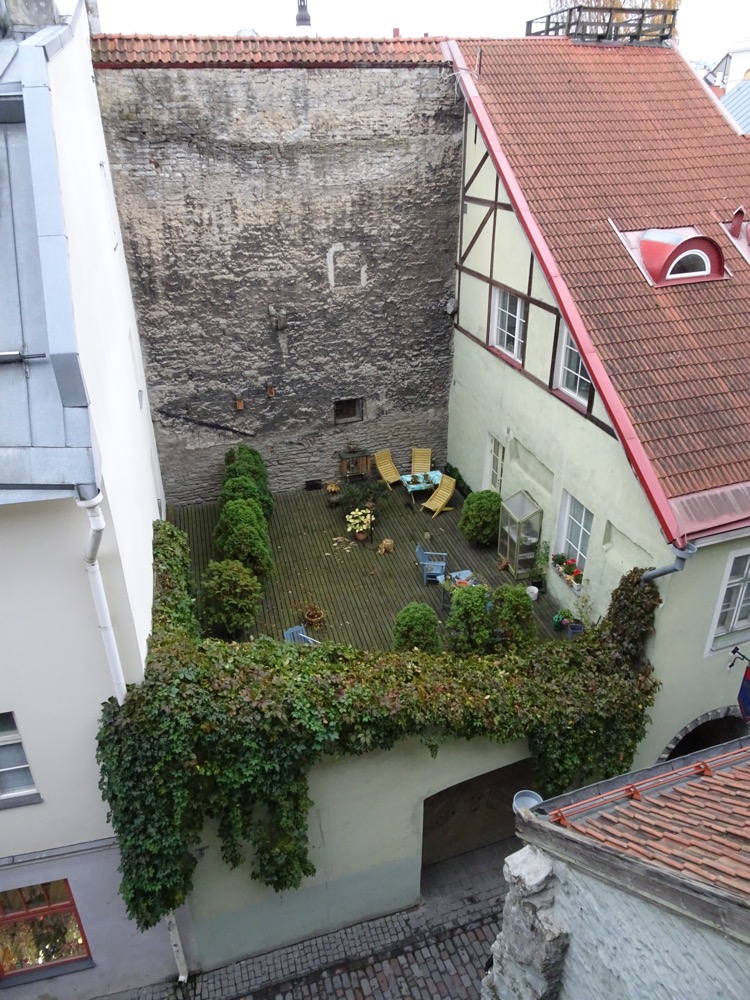 The street views are spectacular from up here – and you can see how few people are visiting the town today.
The street views are spectacular from up here – and you can see how few people are visiting the town today.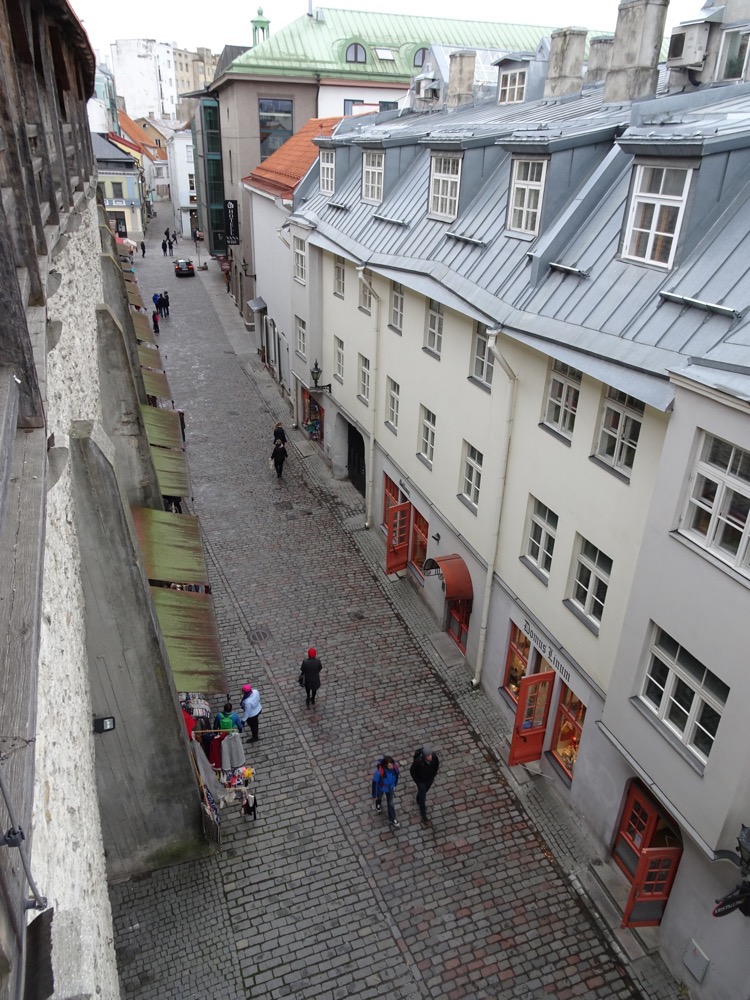
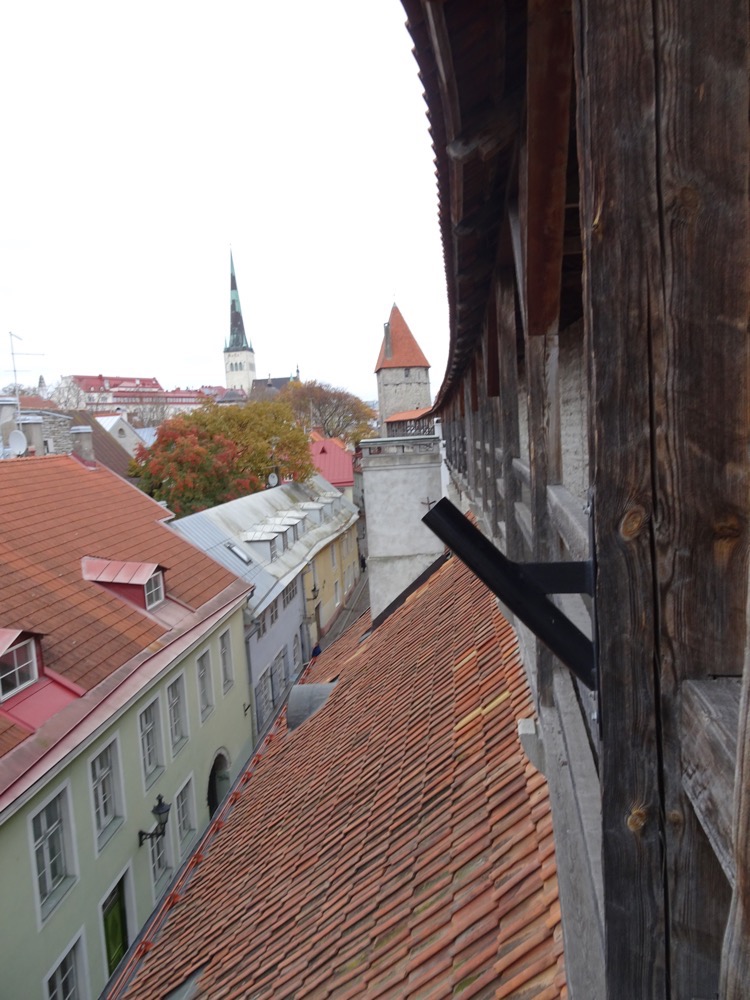

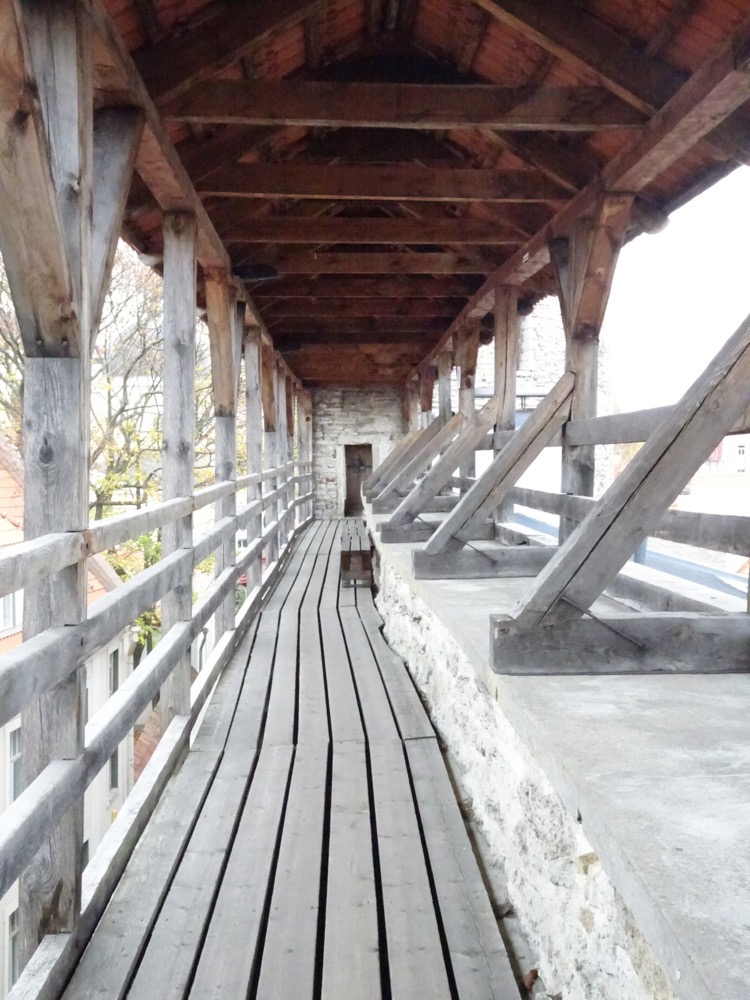
 The rickety staircase we claimed to come up with the bored octagenarian ticket seller who we just about had to wake up to take our €2.00 for tickets.
The rickety staircase we claimed to come up with the bored octagenarian ticket seller who we just about had to wake up to take our €2.00 for tickets.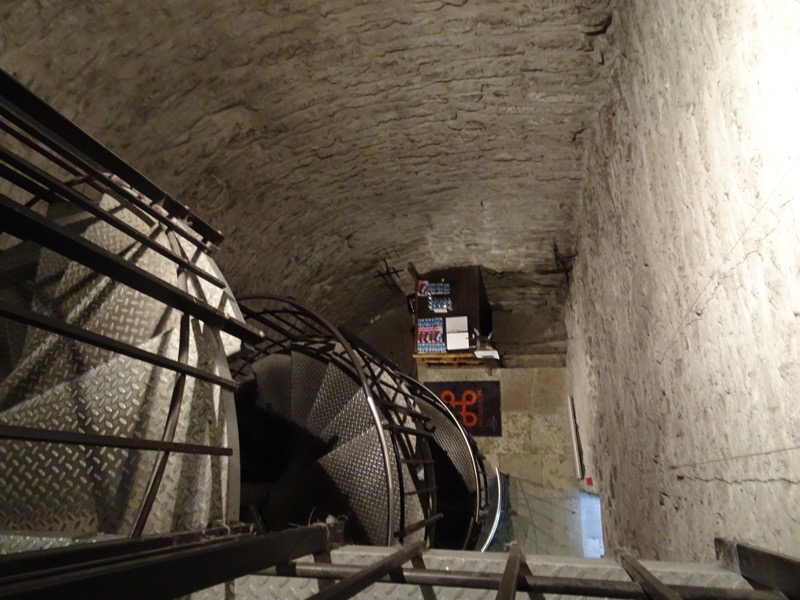
 Finally, it was starting to rain on our parade – we did pretty well considering it was supposed to be raining all day. So we retreated back to the hotel with some caviar and some vodka for a bit of down time and a quiet evening in the warm.
Finally, it was starting to rain on our parade – we did pretty well considering it was supposed to be raining all day. So we retreated back to the hotel with some caviar and some vodka for a bit of down time and a quiet evening in the warm.
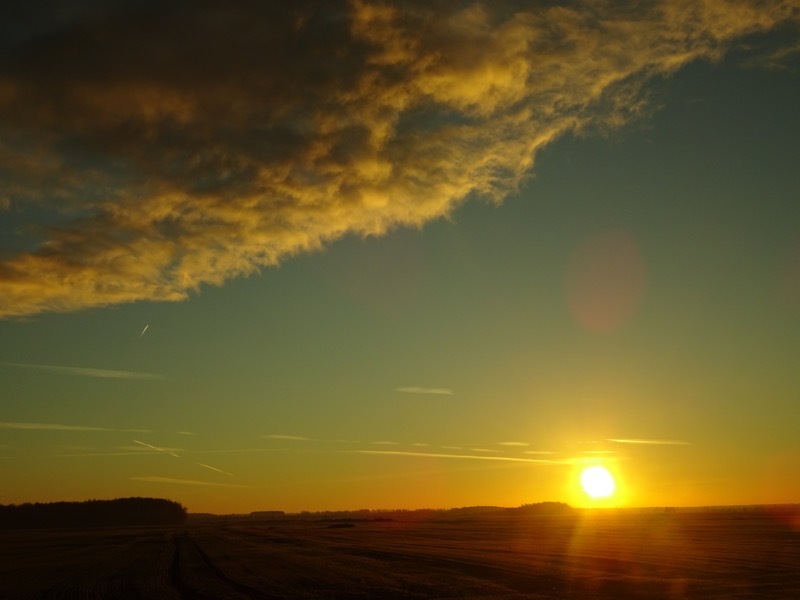 Once the sun was, up however, the darkness dissipated and showed us a foggy and potentially drizzly day ahead. It was very moody as we pummelled through the landscape in our trusty Ford Fuckus.
Once the sun was, up however, the darkness dissipated and showed us a foggy and potentially drizzly day ahead. It was very moody as we pummelled through the landscape in our trusty Ford Fuckus.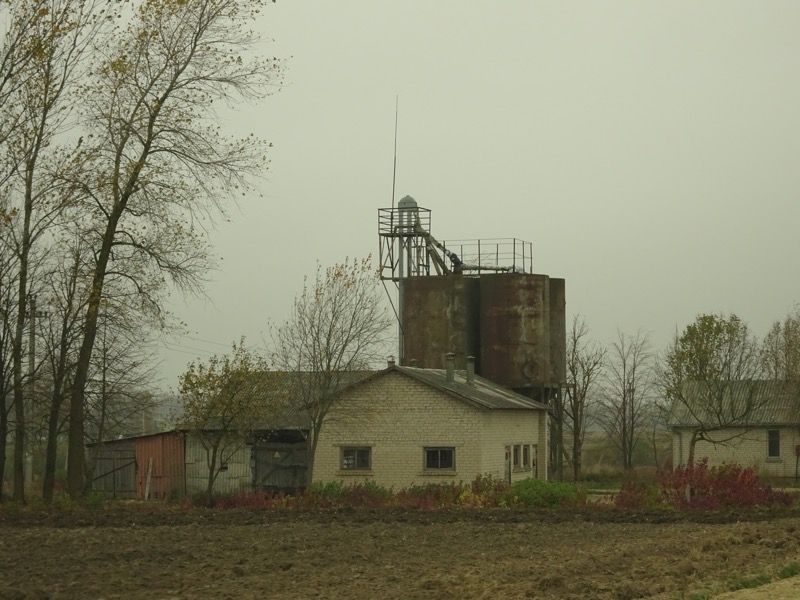
 Turns out it was a ‘Kompresorius’… but we won’t let that get in the way of yale looking ridiculous for our entertainment. We checked the tyres and acquired a hot chocolate (this one actually being hot-hot, unlike the last one which was left 90% unconsumed on a table with a note saying “THIS IS NOT HOT!” at a previous pit stop).
Turns out it was a ‘Kompresorius’… but we won’t let that get in the way of yale looking ridiculous for our entertainment. We checked the tyres and acquired a hot chocolate (this one actually being hot-hot, unlike the last one which was left 90% unconsumed on a table with a note saying “THIS IS NOT HOT!” at a previous pit stop). Check out these unsightly erections dotting the landscape, ruining the views.
Check out these unsightly erections dotting the landscape, ruining the views.
 The Hill of Crosses is about 12 km north of the city of Šiauliai, in the north of Lithuania, about an 80-90 min out of Vilnius. The actual origin of the practice of leaving crosses on this particular hill has been obscured by the passing of time, but it is thought that the first crosses appeared on the site of the former Jurgaičiai or Domantai hill fort after the famed 1831 Uprising (for those that are unfamiliar with the 1831 Uprising it was also known as the Polish-Russian War of 1830-1831. It was an armed rebellion by the Polish against the Russian Empire, which the Russians roundly won.
The Hill of Crosses is about 12 km north of the city of Šiauliai, in the north of Lithuania, about an 80-90 min out of Vilnius. The actual origin of the practice of leaving crosses on this particular hill has been obscured by the passing of time, but it is thought that the first crosses appeared on the site of the former Jurgaičiai or Domantai hill fort after the famed 1831 Uprising (for those that are unfamiliar with the 1831 Uprising it was also known as the Polish-Russian War of 1830-1831. It was an armed rebellion by the Polish against the Russian Empire, which the Russians roundly won.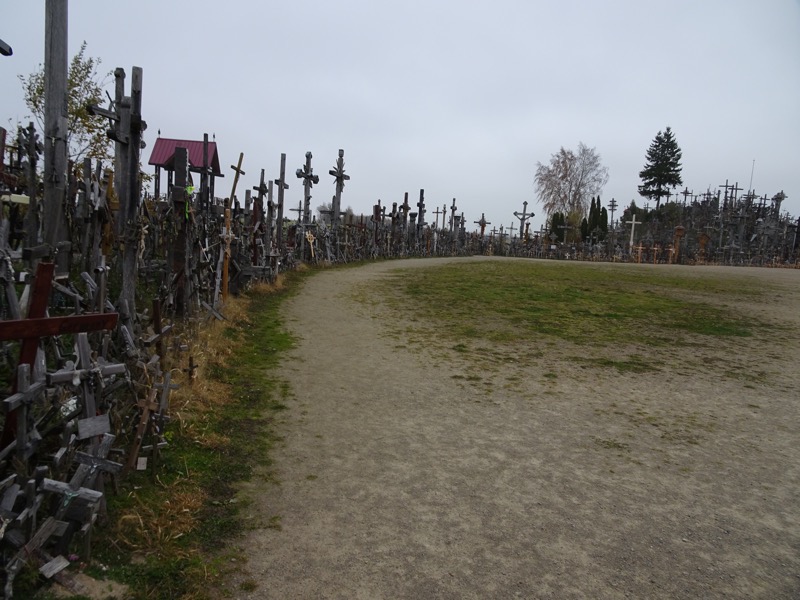
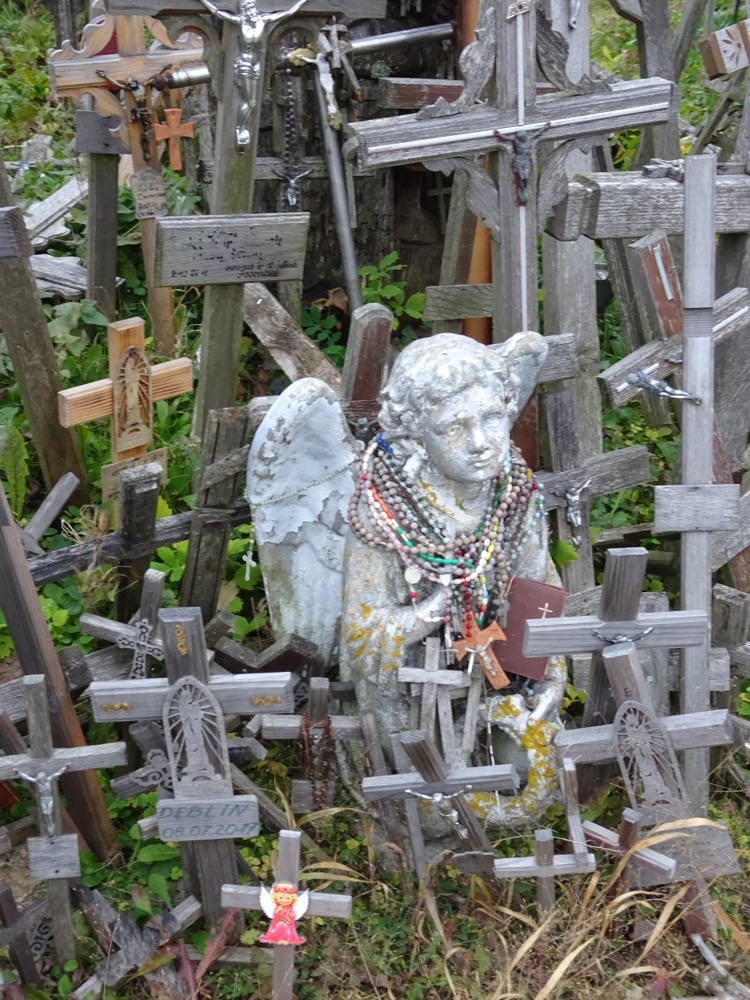
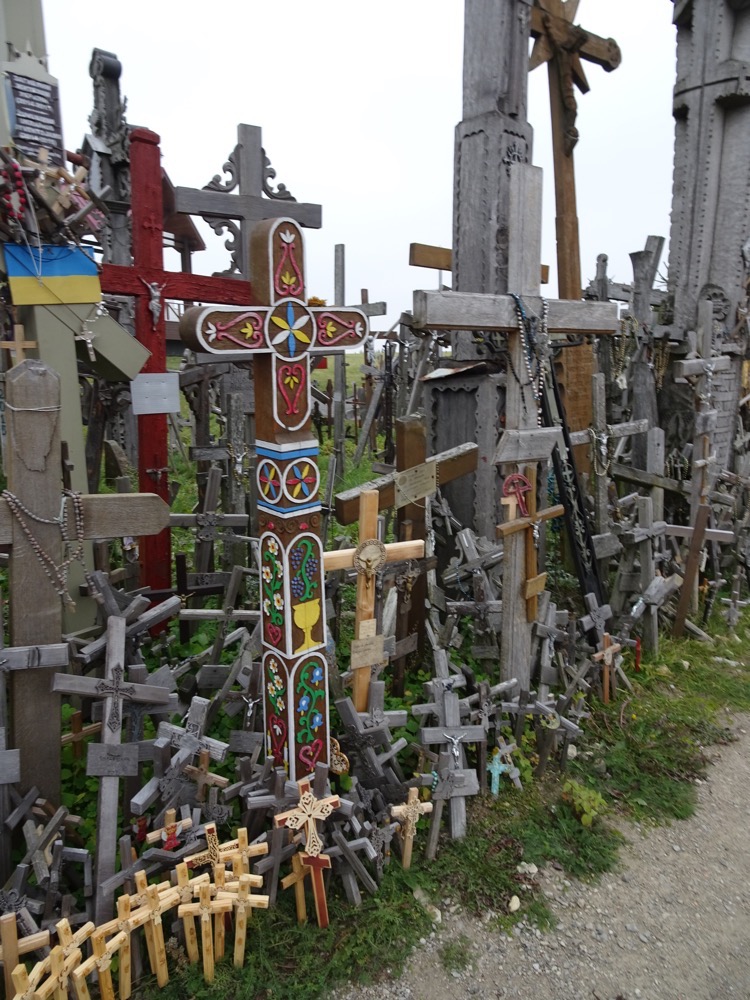 After Lithuania became part of the Russian Empire, both the Poles and Lithuanians unsuccessfully rebelled against Russian authorities in 1831 and again in 1863. These two uprisings are connected with the beginnings of the cross on the hill. Many families could not locate the bodies of their cherished loved ones and lost rebels, so they started placing their memorials here in the form of symbolic crosses where there had been a former hill fort.
After Lithuania became part of the Russian Empire, both the Poles and Lithuanians unsuccessfully rebelled against Russian authorities in 1831 and again in 1863. These two uprisings are connected with the beginnings of the cross on the hill. Many families could not locate the bodies of their cherished loved ones and lost rebels, so they started placing their memorials here in the form of symbolic crosses where there had been a former hill fort.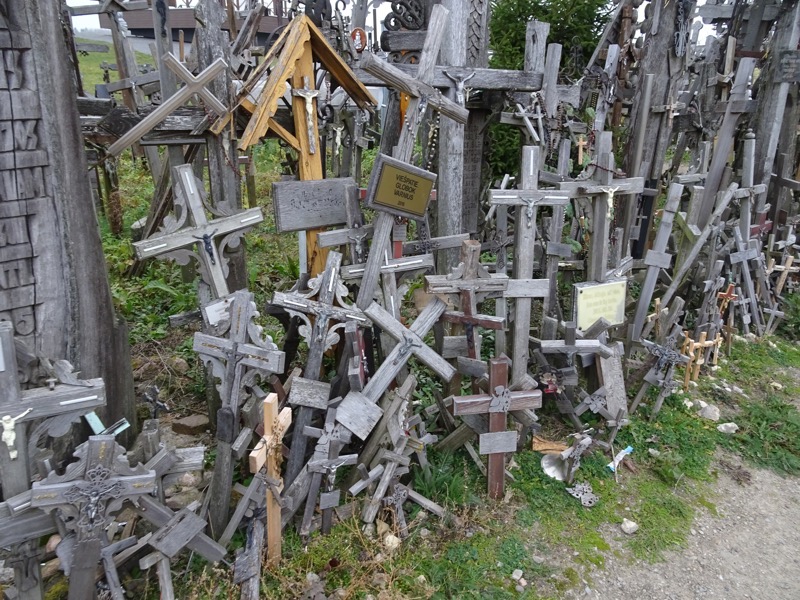 When the old political structure of the Russian Empire in Eastern Europe fell apart in 1918, Lithuania once again attempted to declare its independence. Throughout all this time from 1830 to 1918, the Hill of Crosses became a place for Lithuanians to pray for peace, for the stability and independence of their country, and for their lost loved ones during the Wars of Independence.
When the old political structure of the Russian Empire in Eastern Europe fell apart in 1918, Lithuania once again attempted to declare its independence. Throughout all this time from 1830 to 1918, the Hill of Crosses became a place for Lithuanians to pray for peace, for the stability and independence of their country, and for their lost loved ones during the Wars of Independence.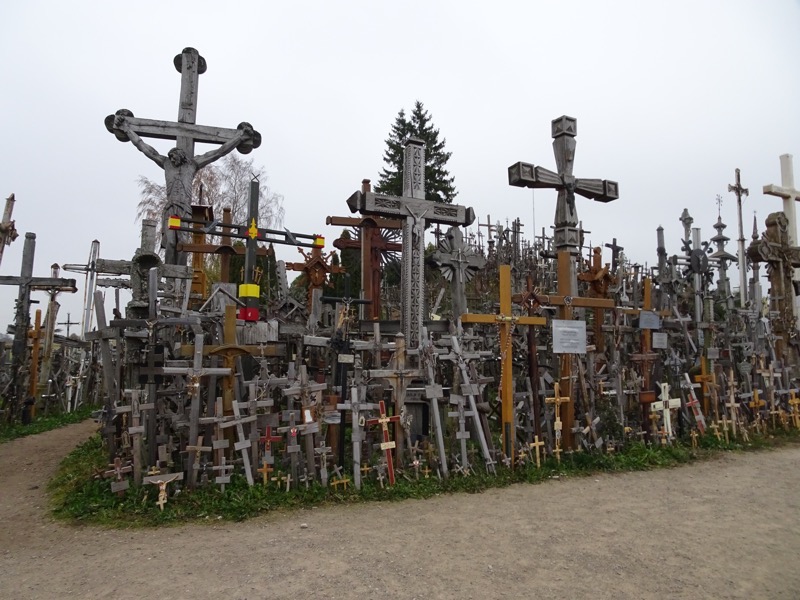 The site took on an even more historic significance during the years 1944–1990 if that were possible, while Lithuania was occupied by the Soviet Union. People continued to travel to the Hill and leave their crosses and memorials and for Lithuanians, this place signified their original national identity, their religion, heritage and culture. It became a place not just of memorialising those who were lost, but also a powerful place of peaceful resistance. The Soviets authorities repeatedly worked hard to remove the crosses and tried to remove the symbolism of the sit – even bulldozed the entire site on at least three separate occasions as recently as 1963 and 1973, but the crosses continued to reappear. Apparently, the Soviets even considered building a damn on the nearby Kulvė River, so that the hill would end up underwater, but this never came to pass.
The site took on an even more historic significance during the years 1944–1990 if that were possible, while Lithuania was occupied by the Soviet Union. People continued to travel to the Hill and leave their crosses and memorials and for Lithuanians, this place signified their original national identity, their religion, heritage and culture. It became a place not just of memorialising those who were lost, but also a powerful place of peaceful resistance. The Soviets authorities repeatedly worked hard to remove the crosses and tried to remove the symbolism of the sit – even bulldozed the entire site on at least three separate occasions as recently as 1963 and 1973, but the crosses continued to reappear. Apparently, the Soviets even considered building a damn on the nearby Kulvė River, so that the hill would end up underwater, but this never came to pass.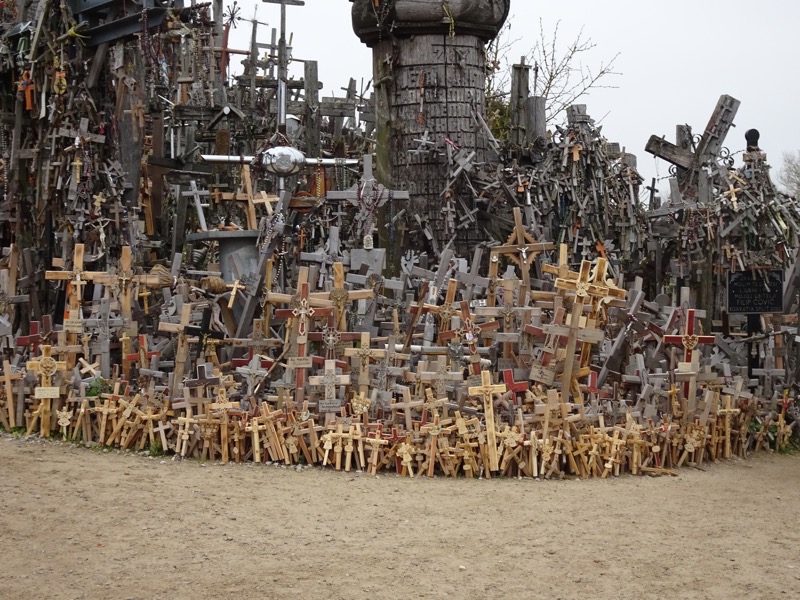 Now, there are more crosses here than ever, and the site represents the solidarity and steadfastness with which the Lithuanian people held out for independence from the Russian Empire and then Soviet Union for over a century.
Now, there are more crosses here than ever, and the site represents the solidarity and steadfastness with which the Lithuanian people held out for independence from the Russian Empire and then Soviet Union for over a century.
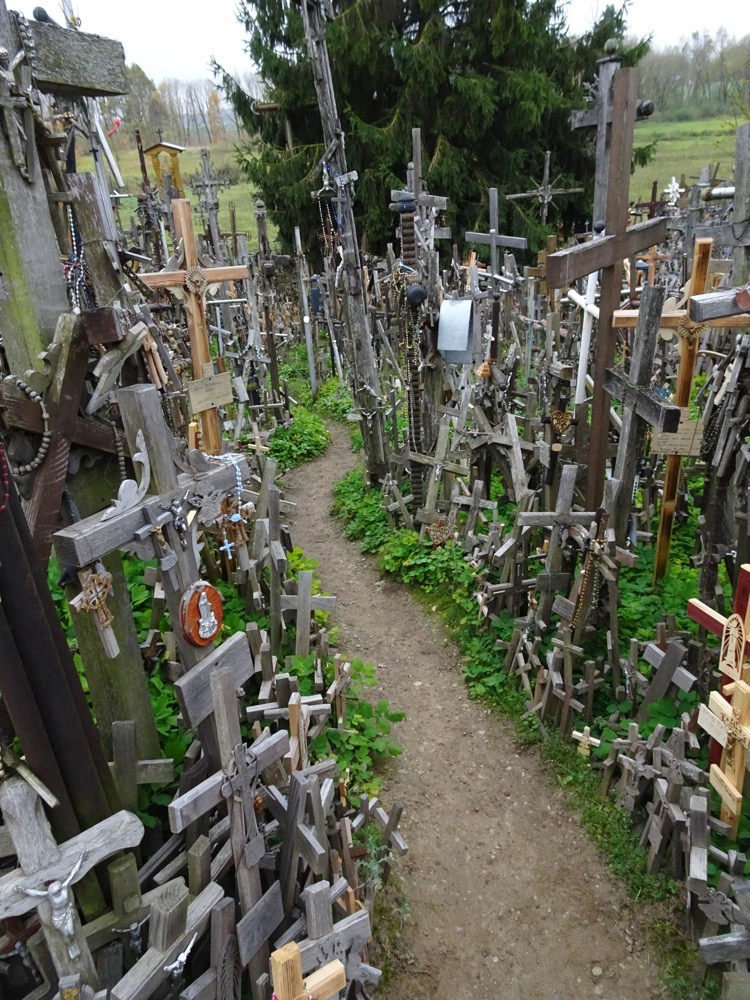 The hill is a quiet, mournful sort of place. Particularly so on a day like today when there was no one here but ourselves and we could hear the rosaries tinkling in the wind like chimes trying to tell stories of all these lost souls.
The hill is a quiet, mournful sort of place. Particularly so on a day like today when there was no one here but ourselves and we could hear the rosaries tinkling in the wind like chimes trying to tell stories of all these lost souls.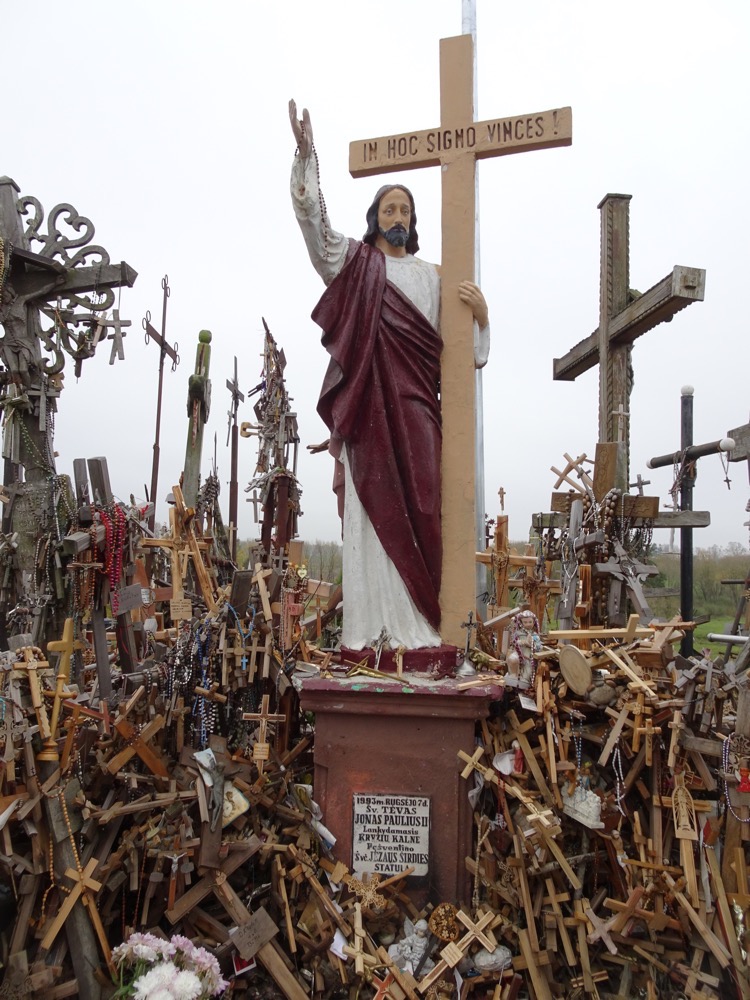
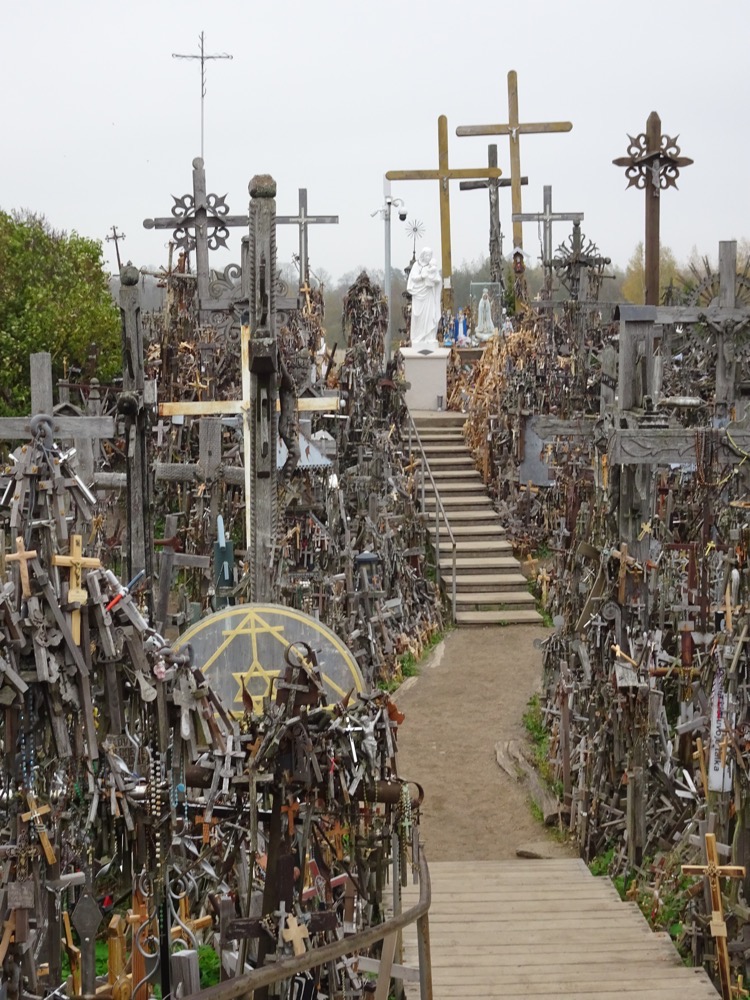
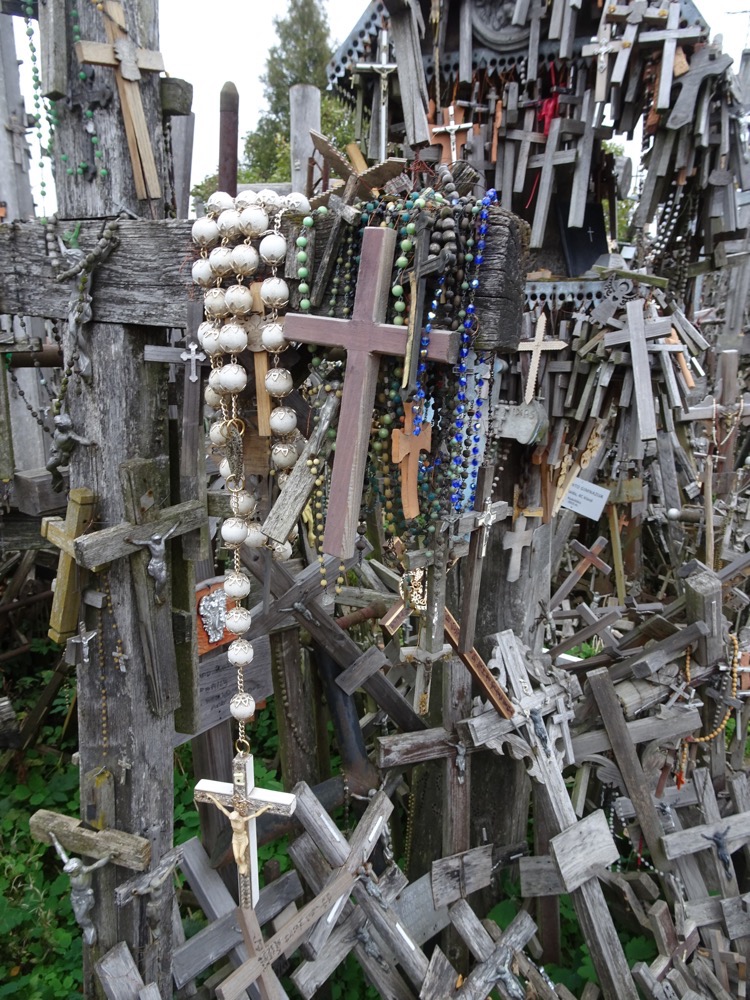
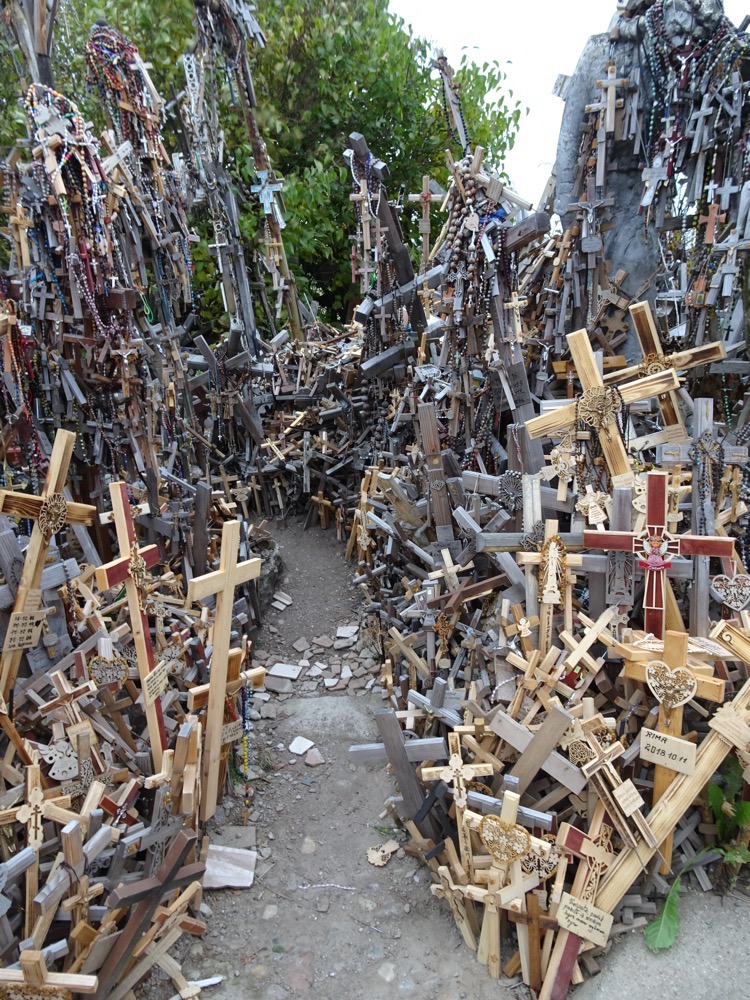
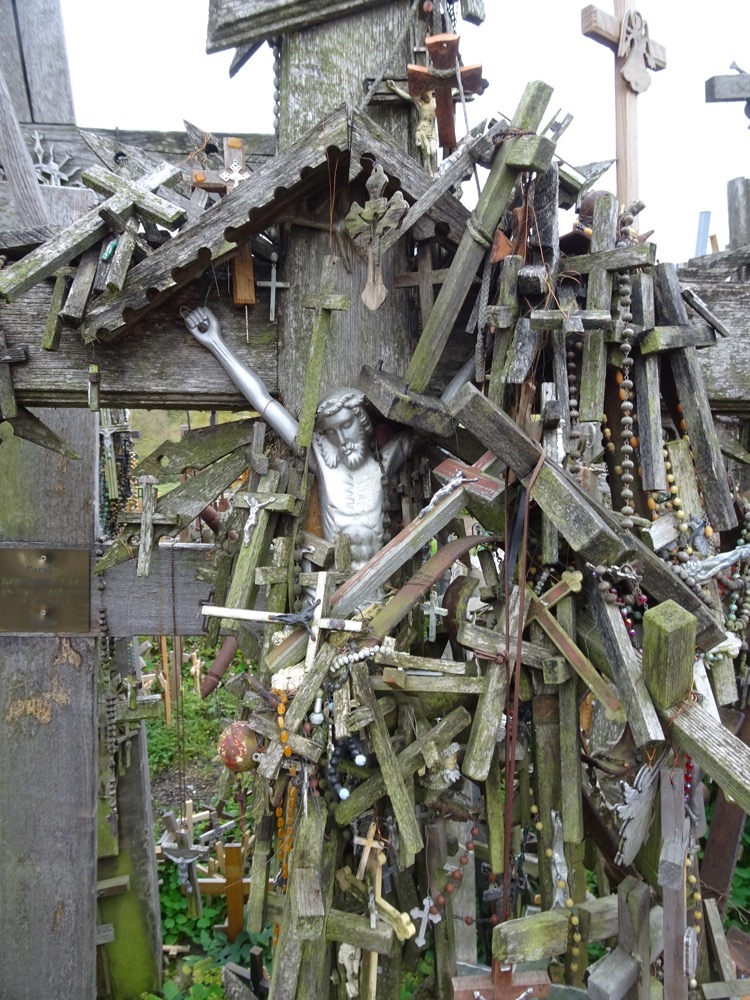 I took ever so many photographs, it is hard to encapsulate the sheer volume of crosses – each one carrying a story of a pilgrim and a lost loved one.
I took ever so many photographs, it is hard to encapsulate the sheer volume of crosses – each one carrying a story of a pilgrim and a lost loved one.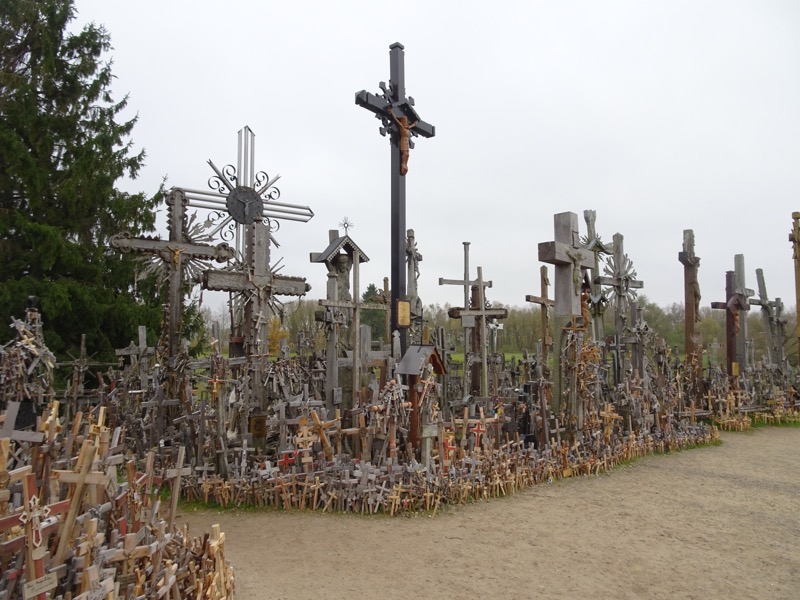 After we left the Hill of Crosses, we head off into blue skies and crazy cloud formations for the afternoon. In amongst blogging about yesterday, I was constantly staring out the window at these amazing clouds and the beautiful contrast in colours between the blue skies, the fluffy white clouds, the lush green grass and the yellow autumn leaves. My speed landscape photography is improving every day!
After we left the Hill of Crosses, we head off into blue skies and crazy cloud formations for the afternoon. In amongst blogging about yesterday, I was constantly staring out the window at these amazing clouds and the beautiful contrast in colours between the blue skies, the fluffy white clouds, the lush green grass and the yellow autumn leaves. My speed landscape photography is improving every day! Ooh look, lots of military vehicles and suddenly lo’ and behold another unmanned border between Lithuania and Latvia.
Ooh look, lots of military vehicles and suddenly lo’ and behold another unmanned border between Lithuania and Latvia.


 Look at this, I mean look at it:
Look at this, I mean look at it: 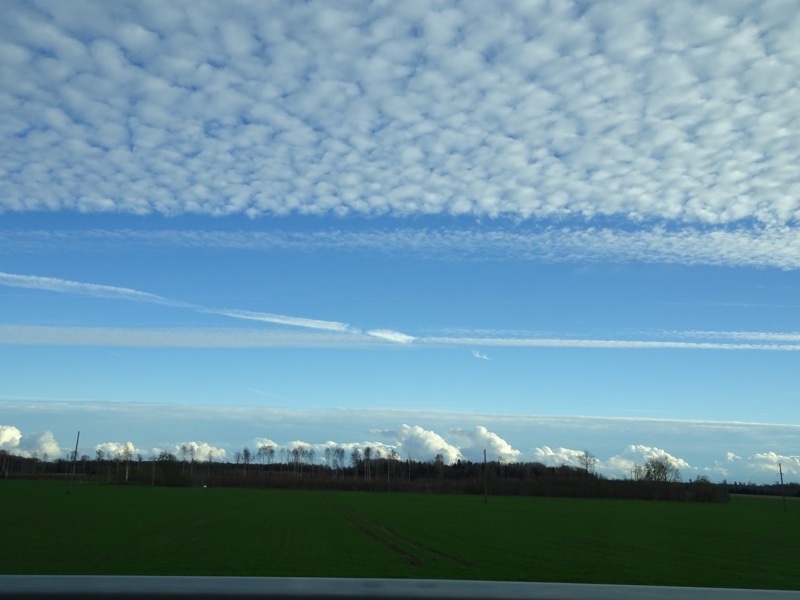 God bless the 4Gs. <3
God bless the 4Gs. <3 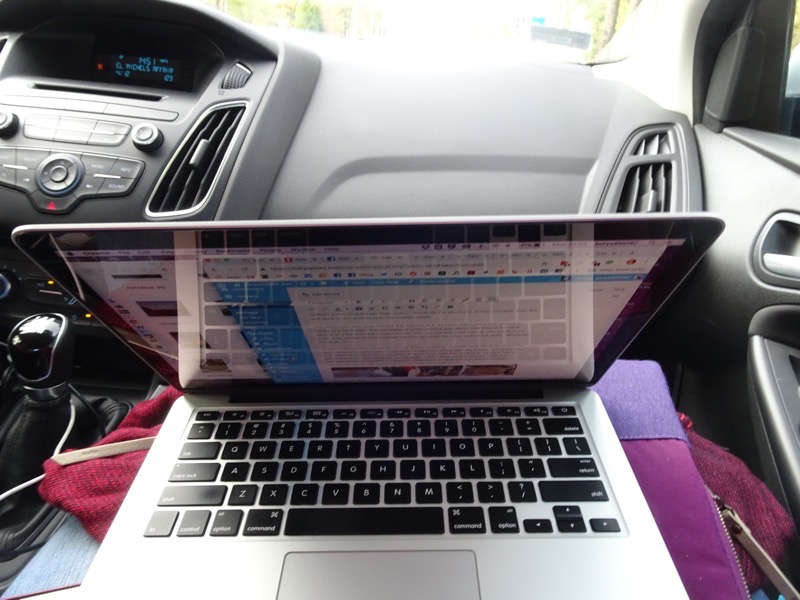
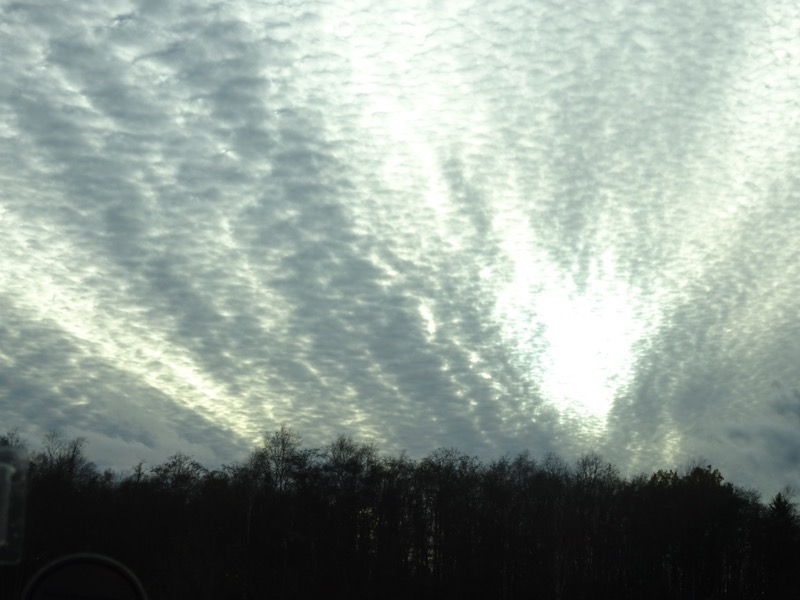
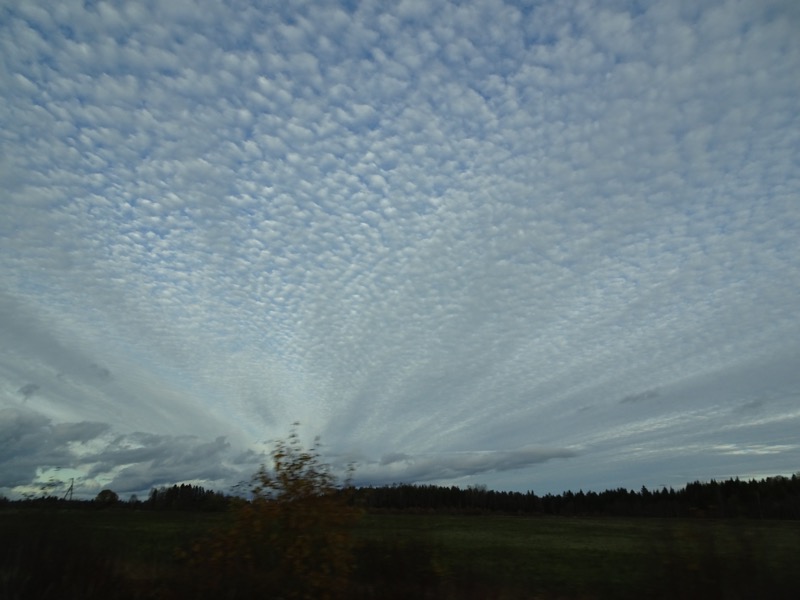
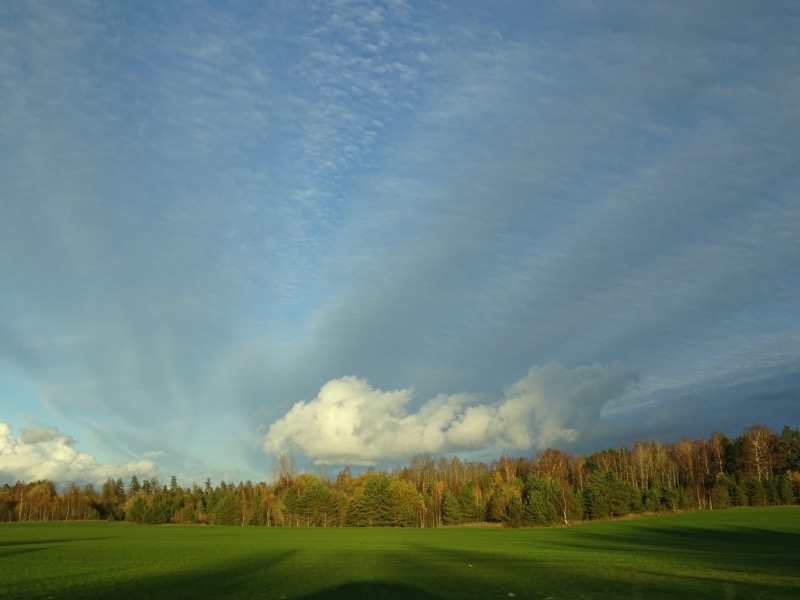 Stunning landscapes as we drove through the Lithuanian and subsequently Estonian countryside. Here lies the real benefit of not flying.
Stunning landscapes as we drove through the Lithuanian and subsequently Estonian countryside. Here lies the real benefit of not flying.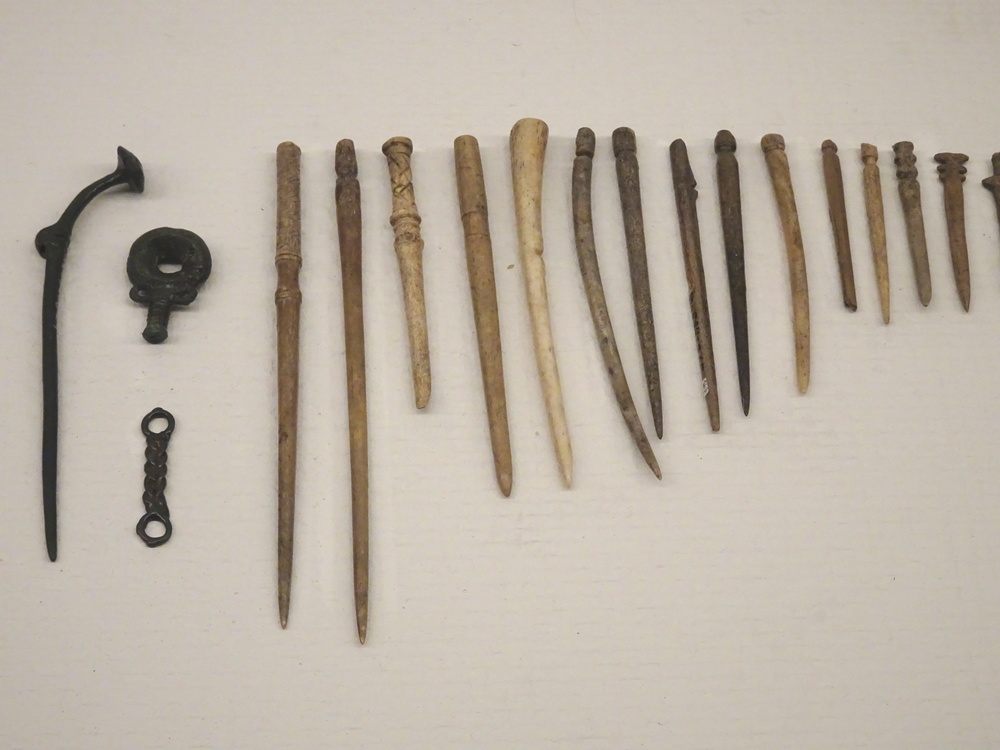
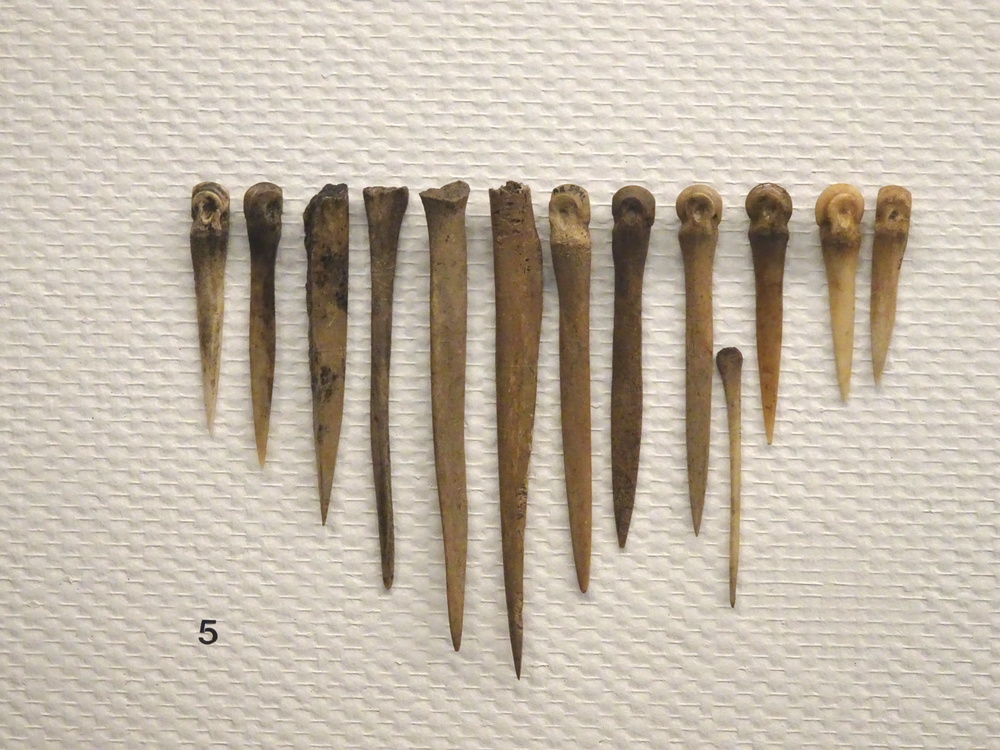
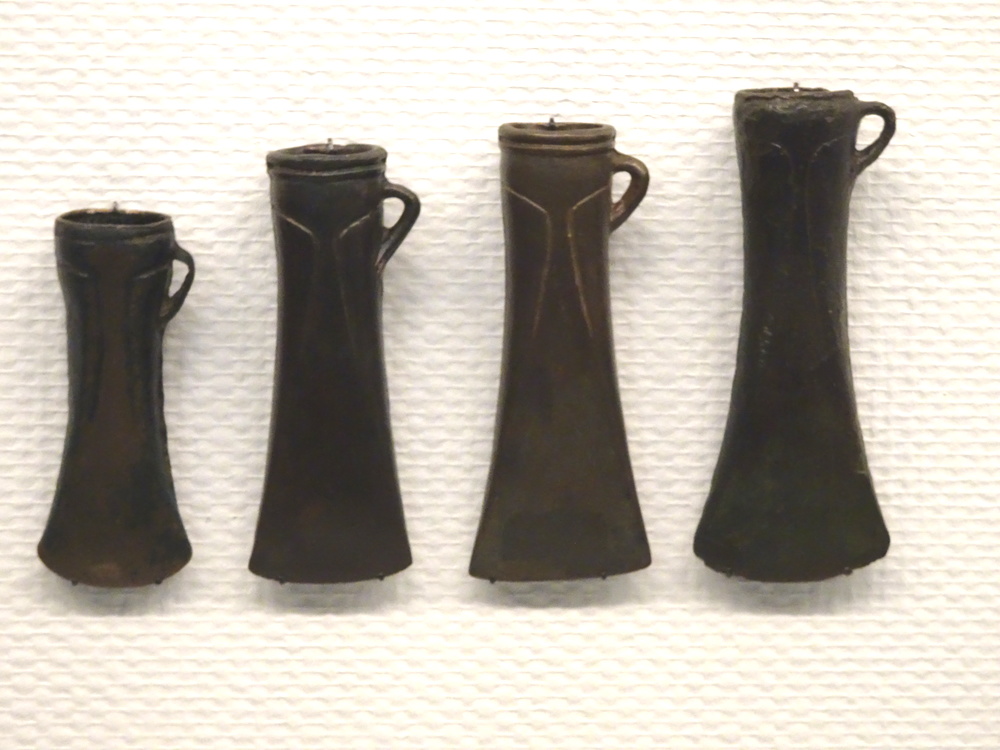
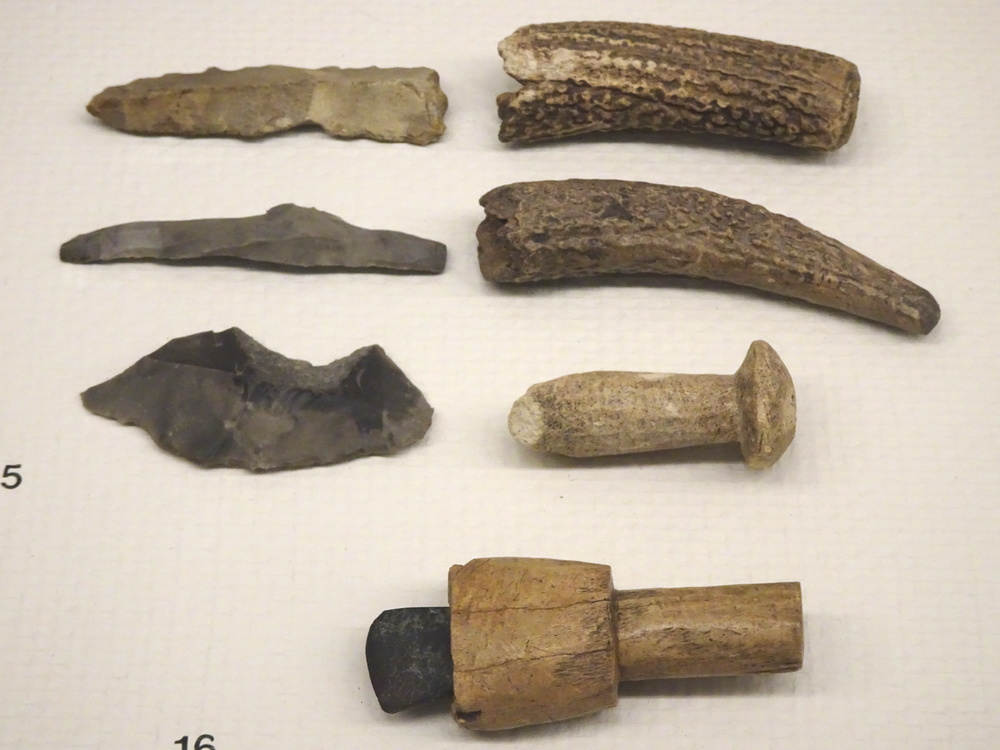
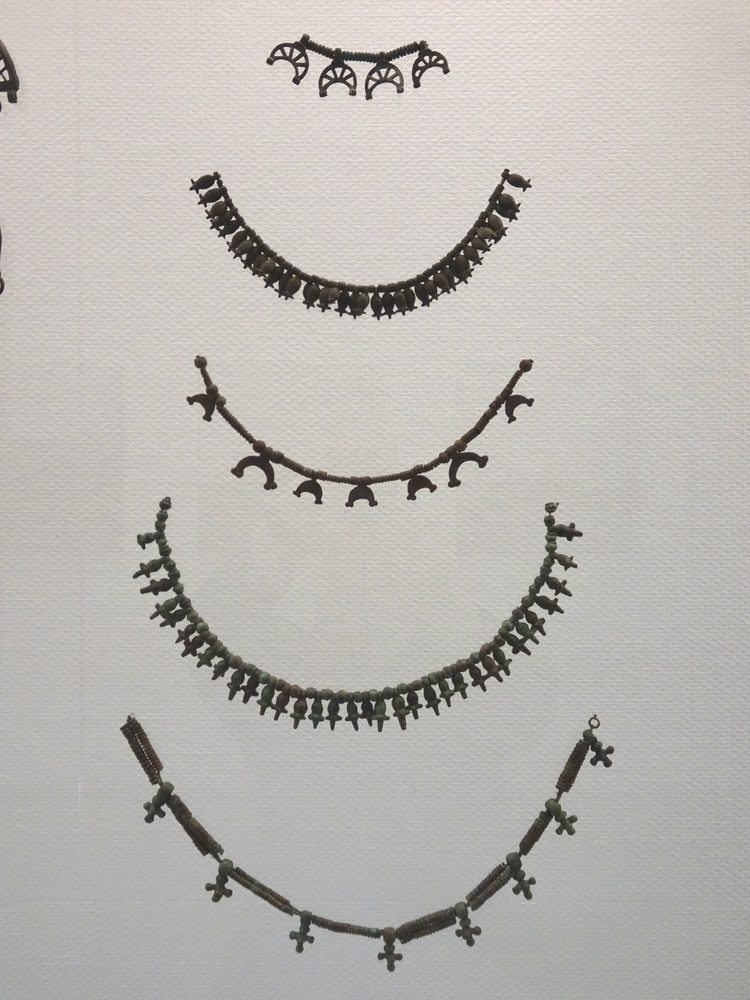
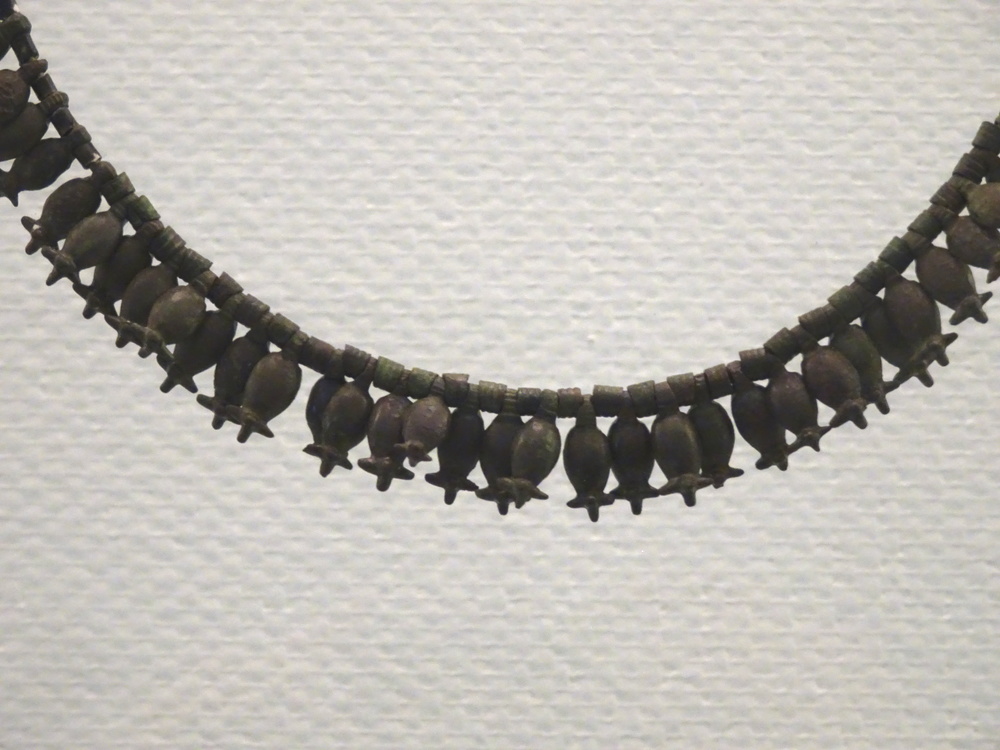
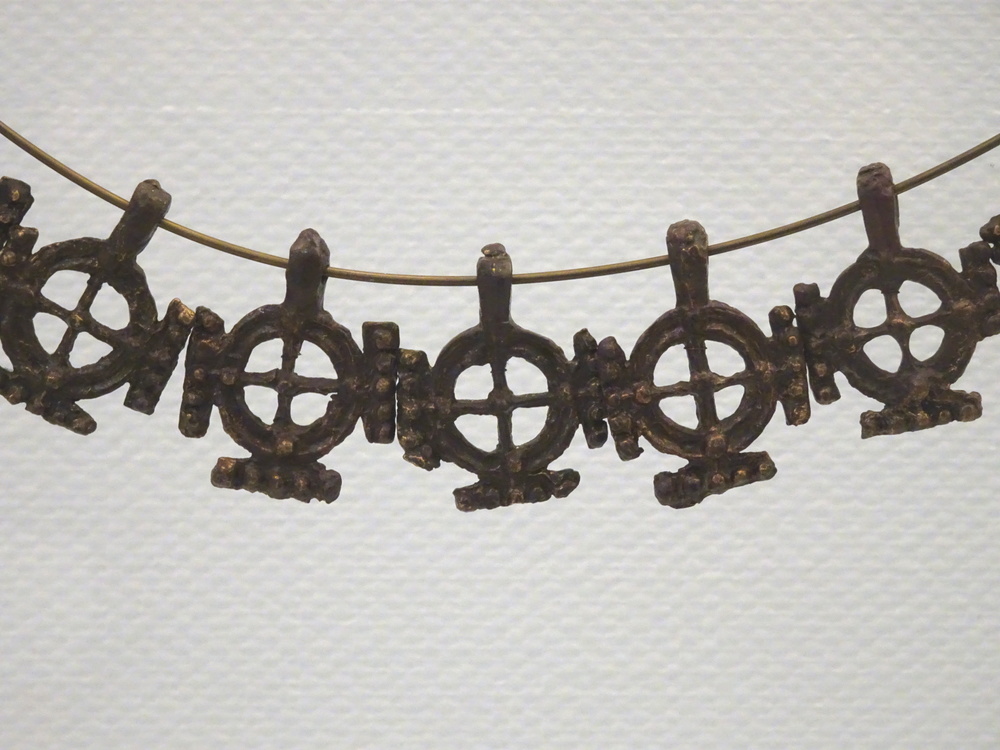
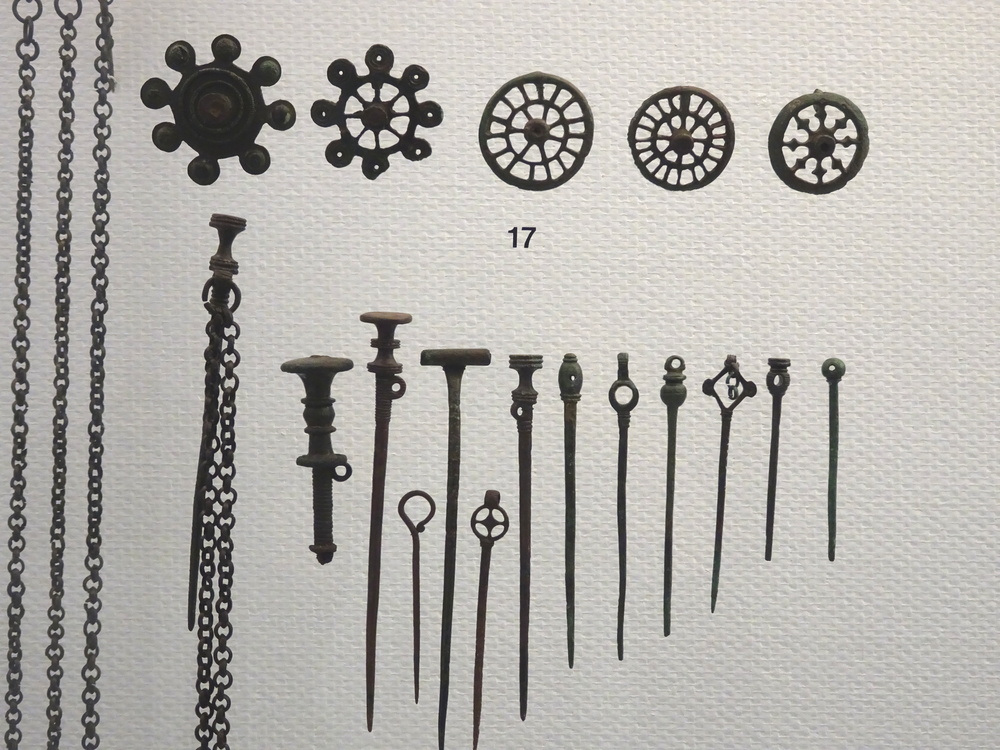
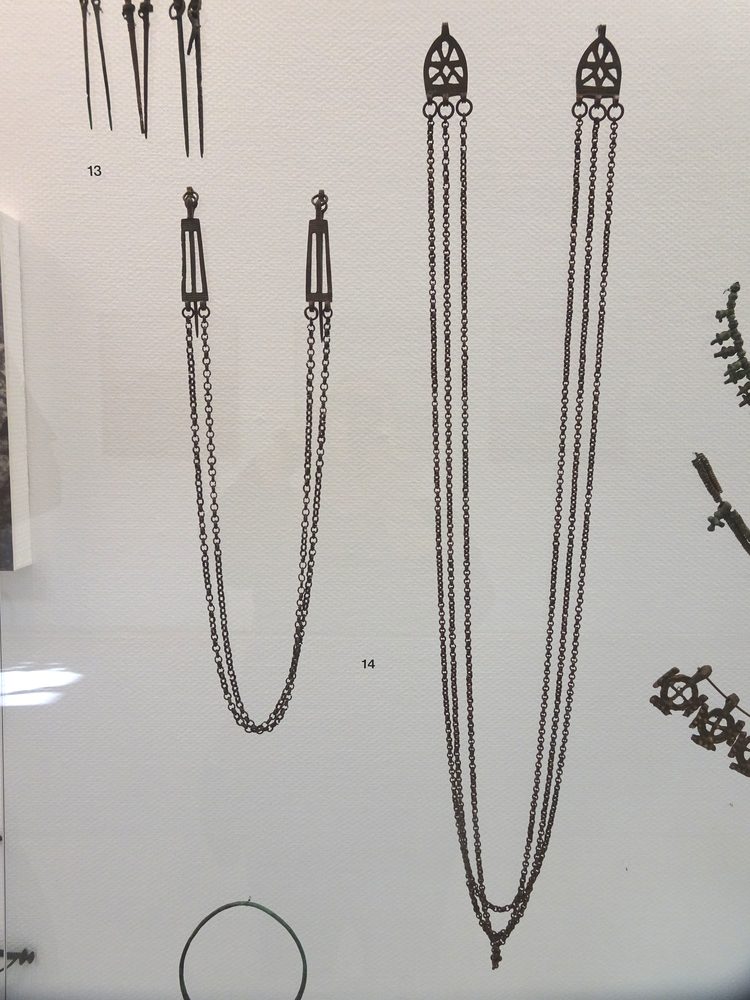


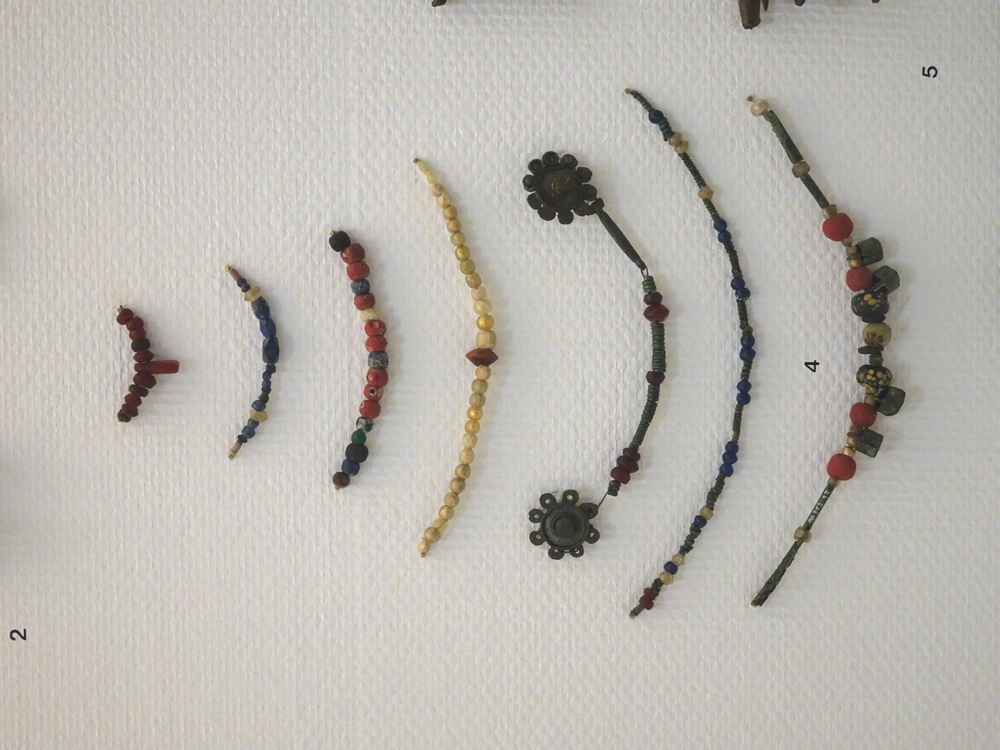
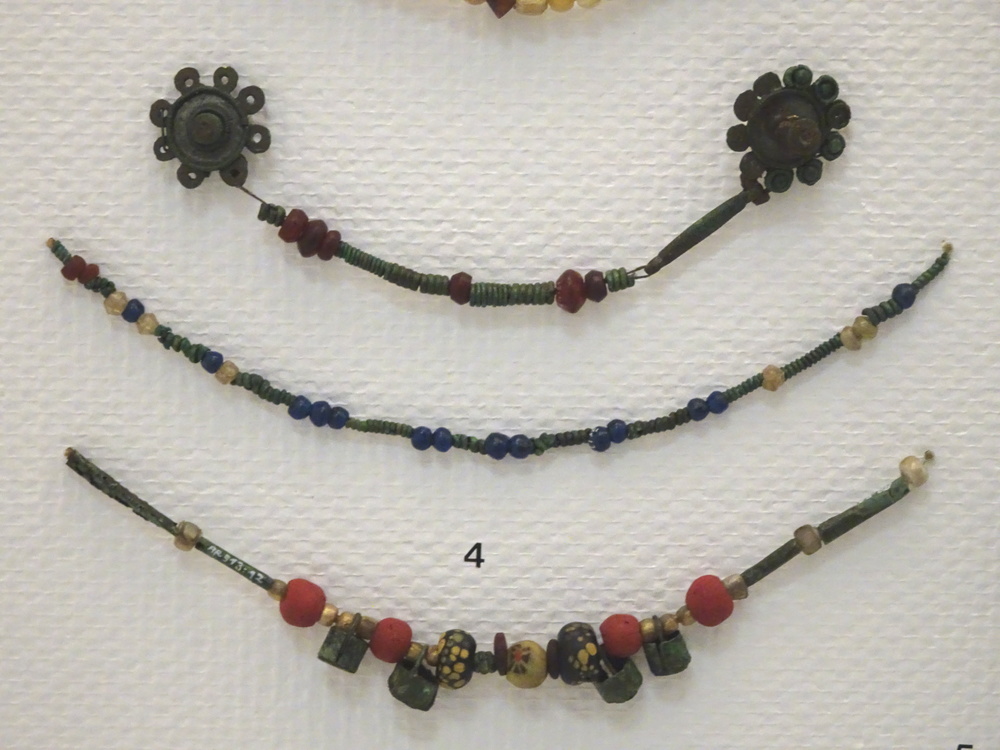
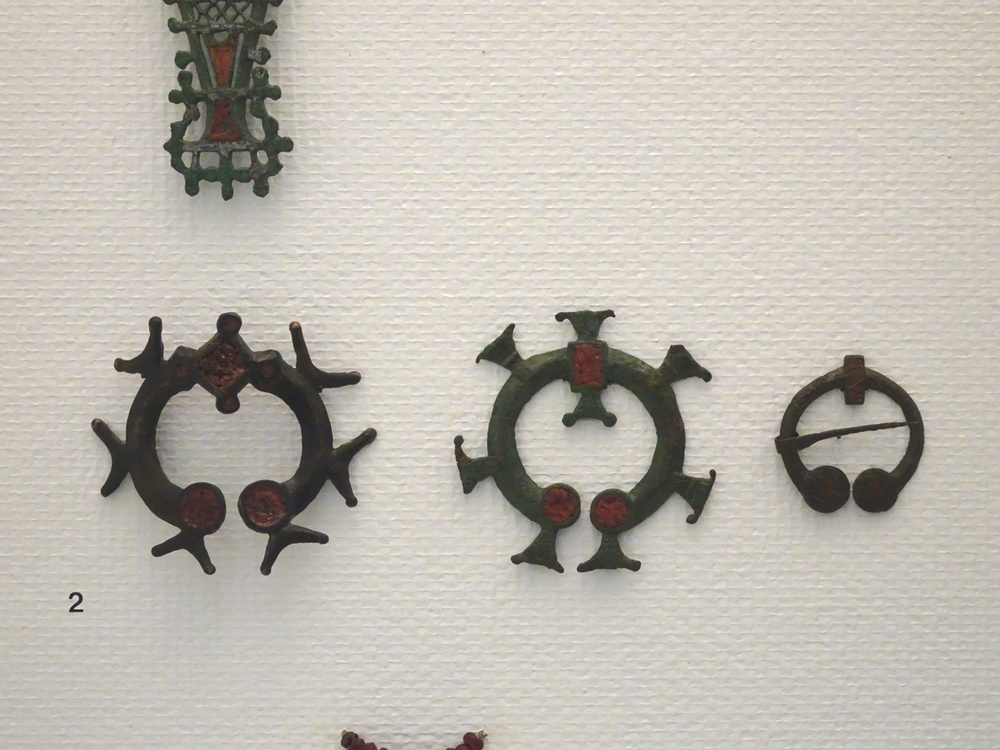
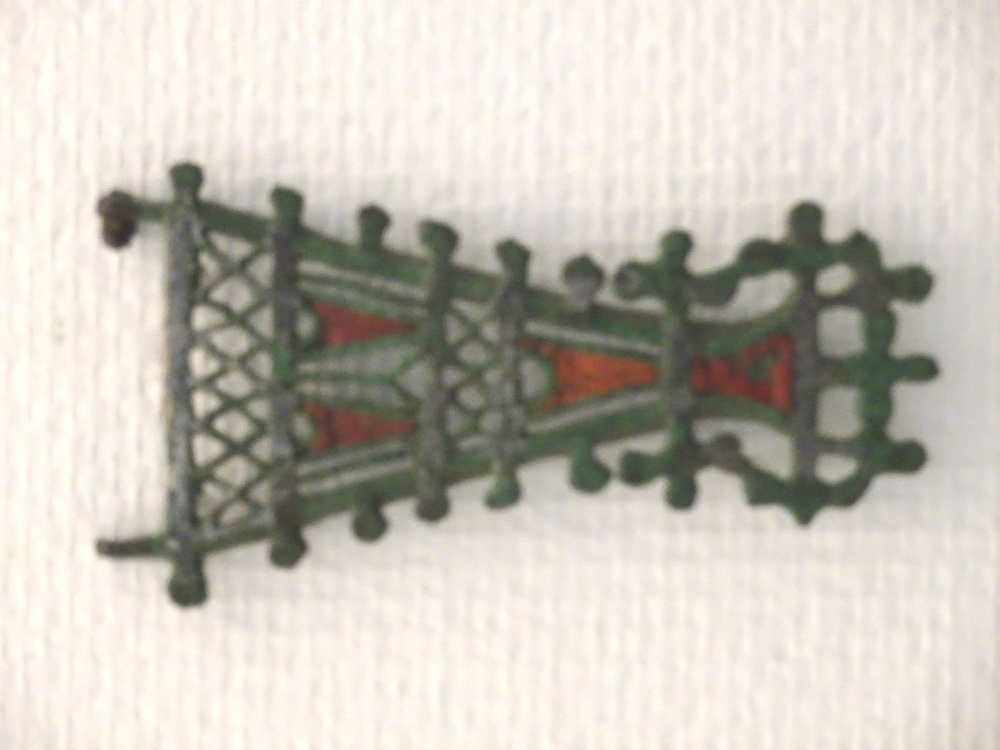
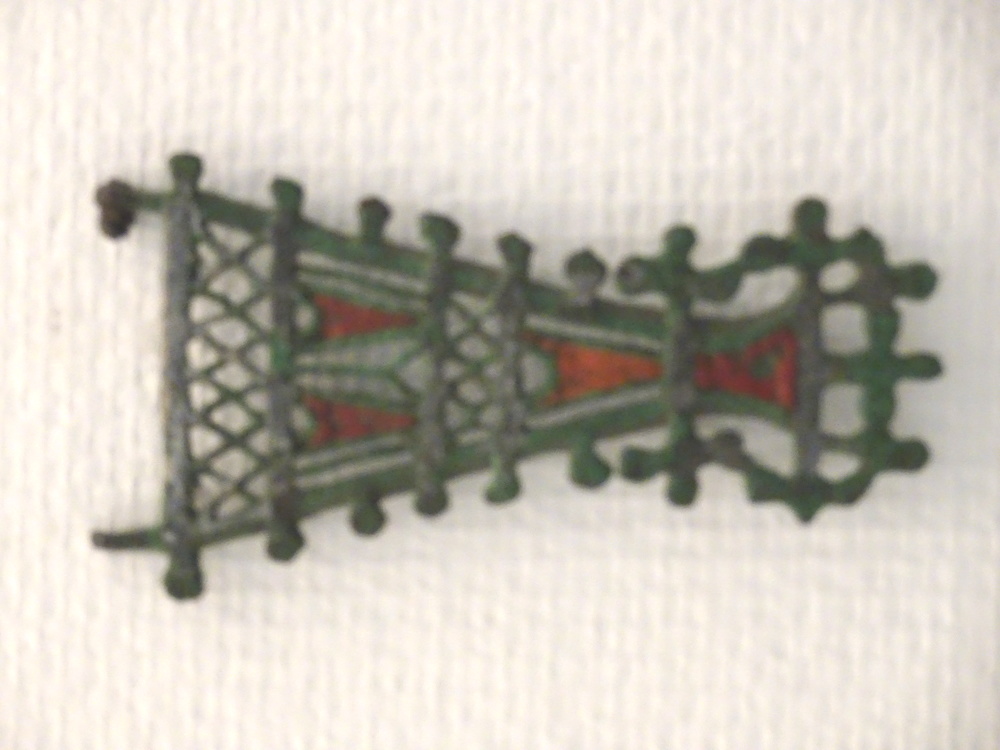
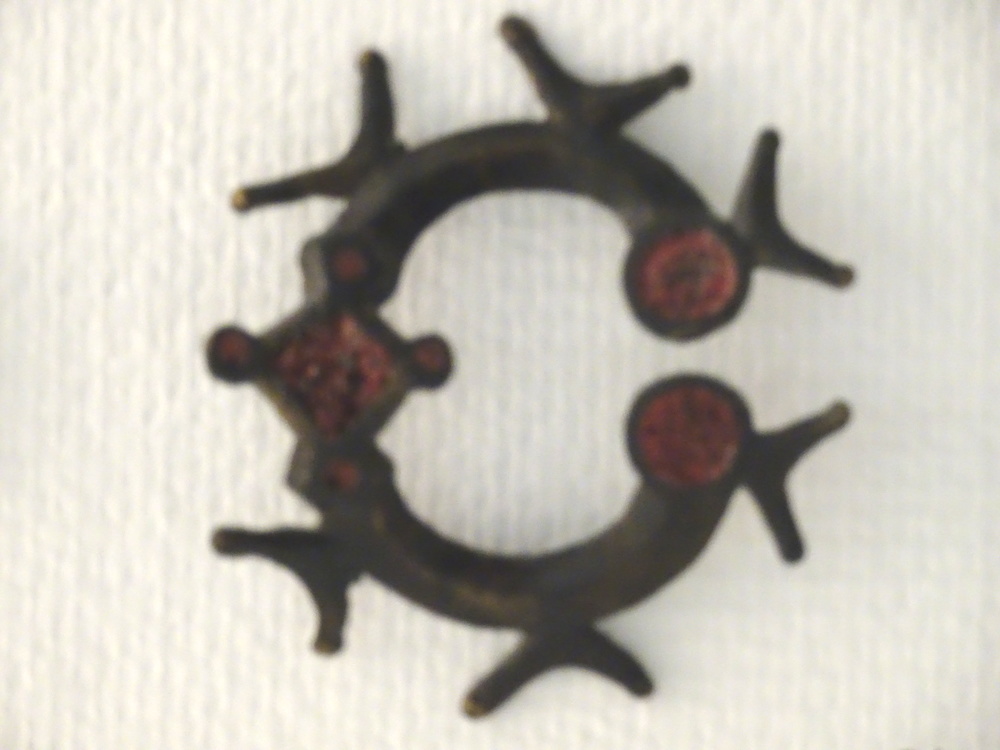
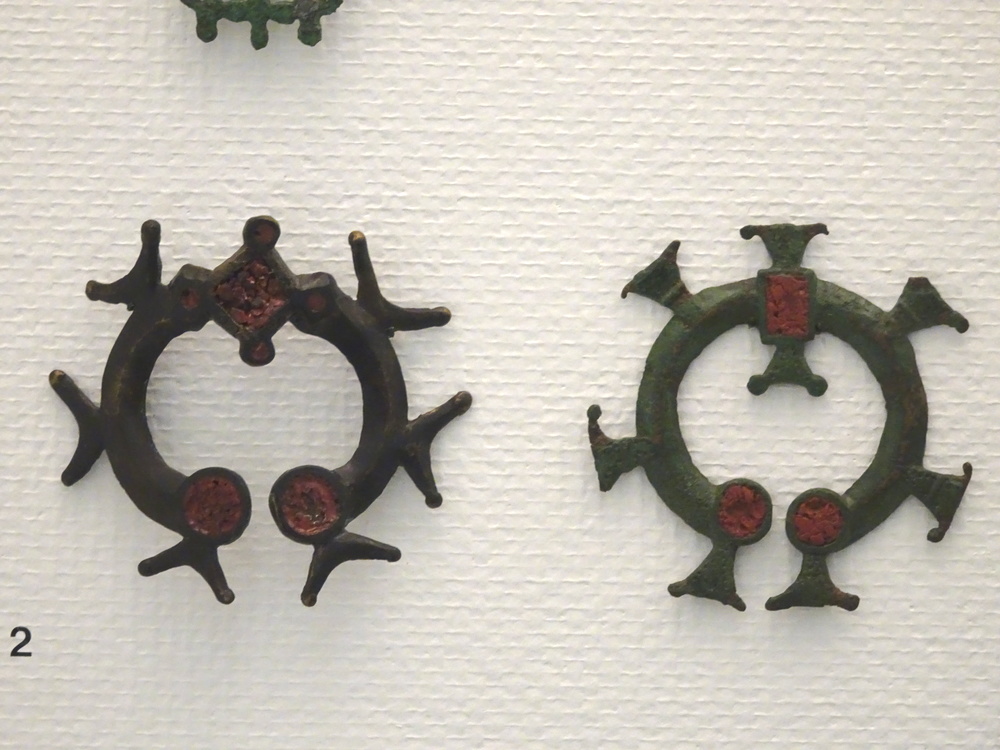

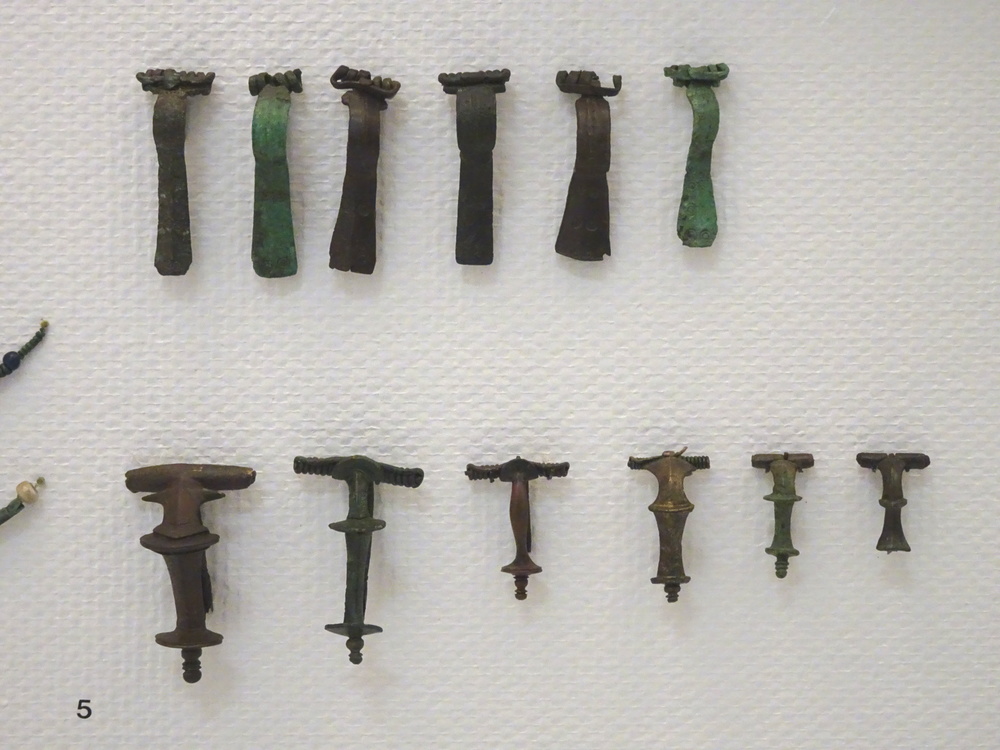
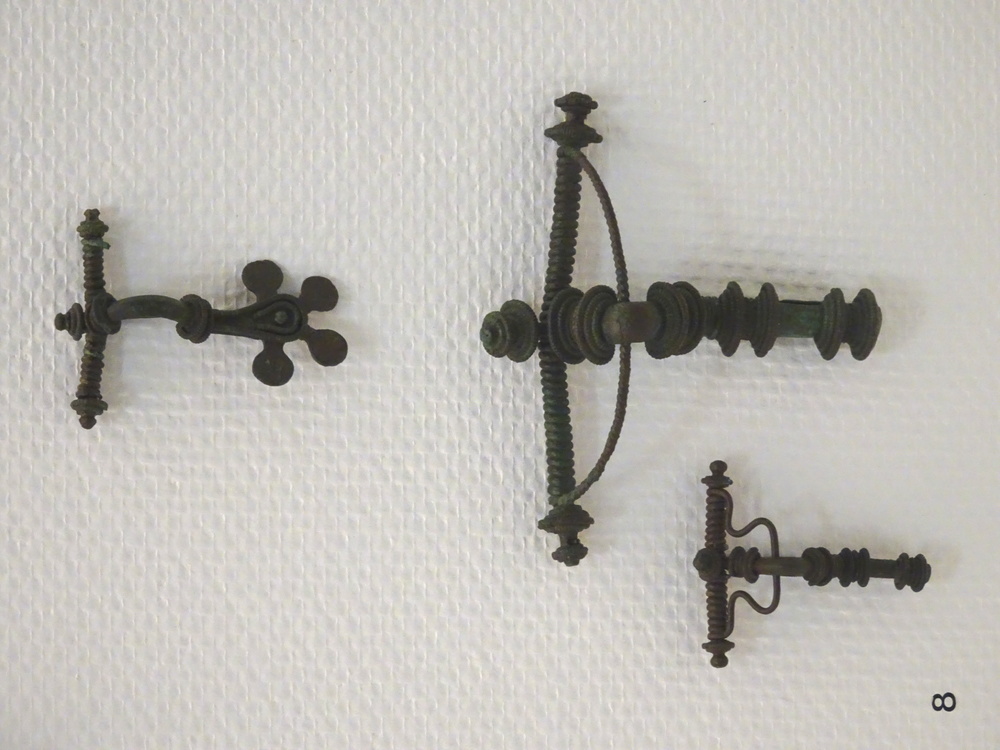

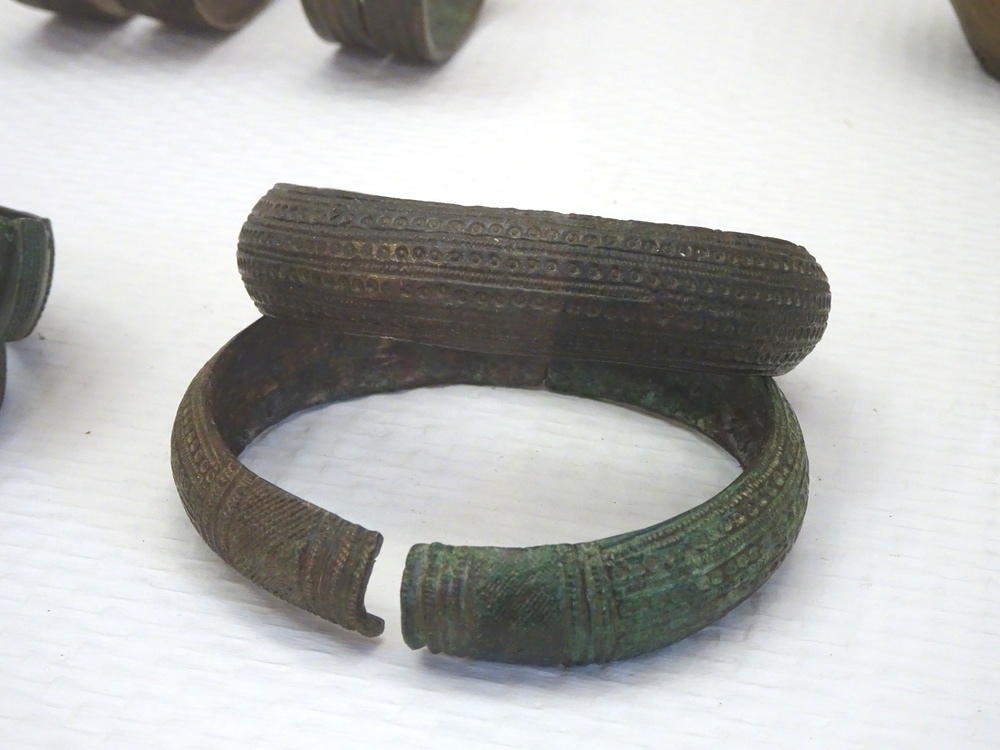
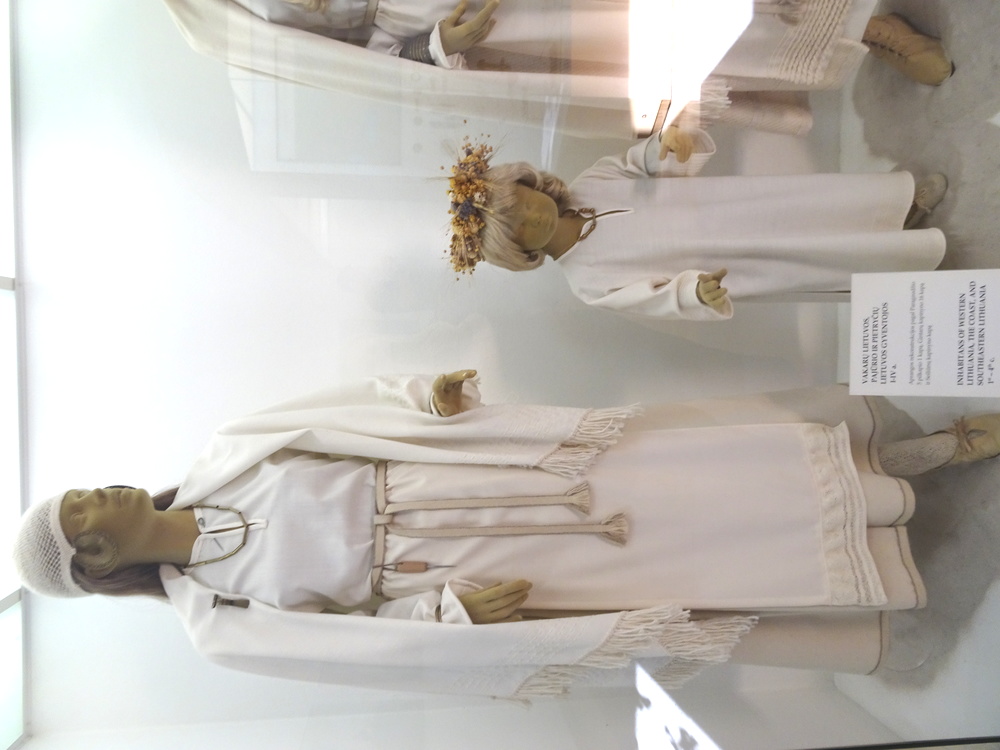
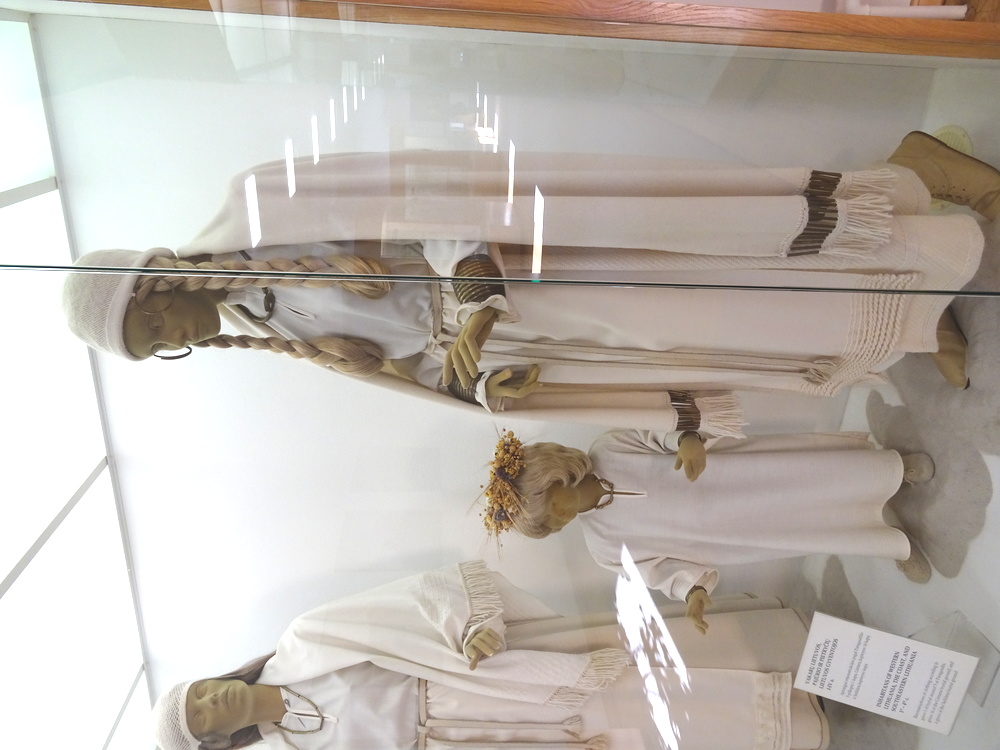
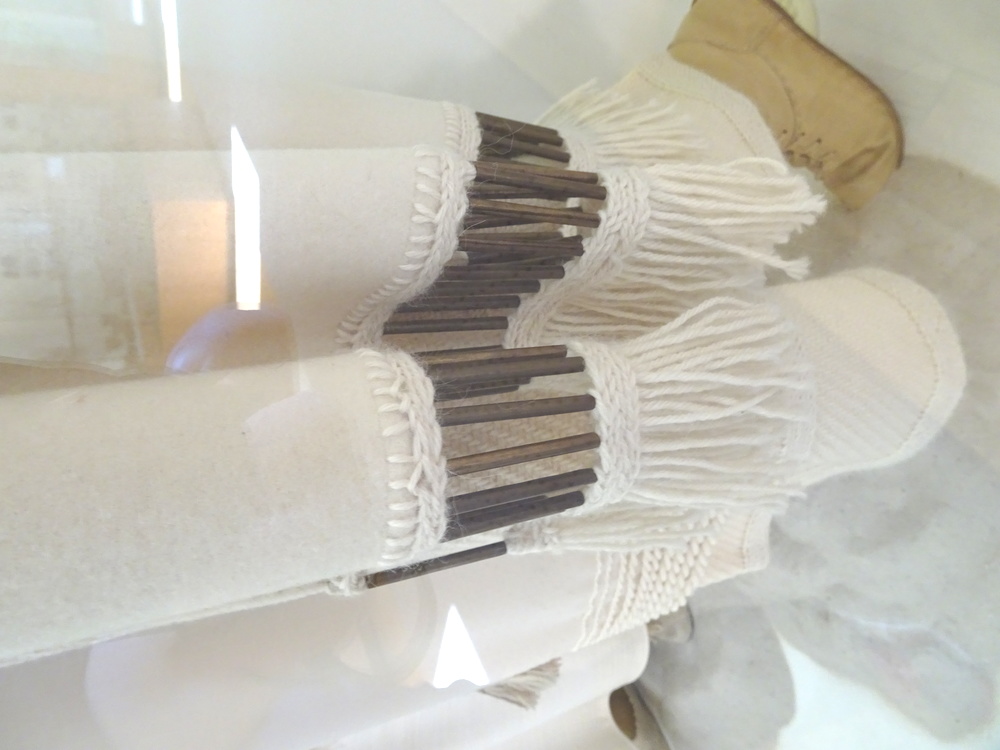
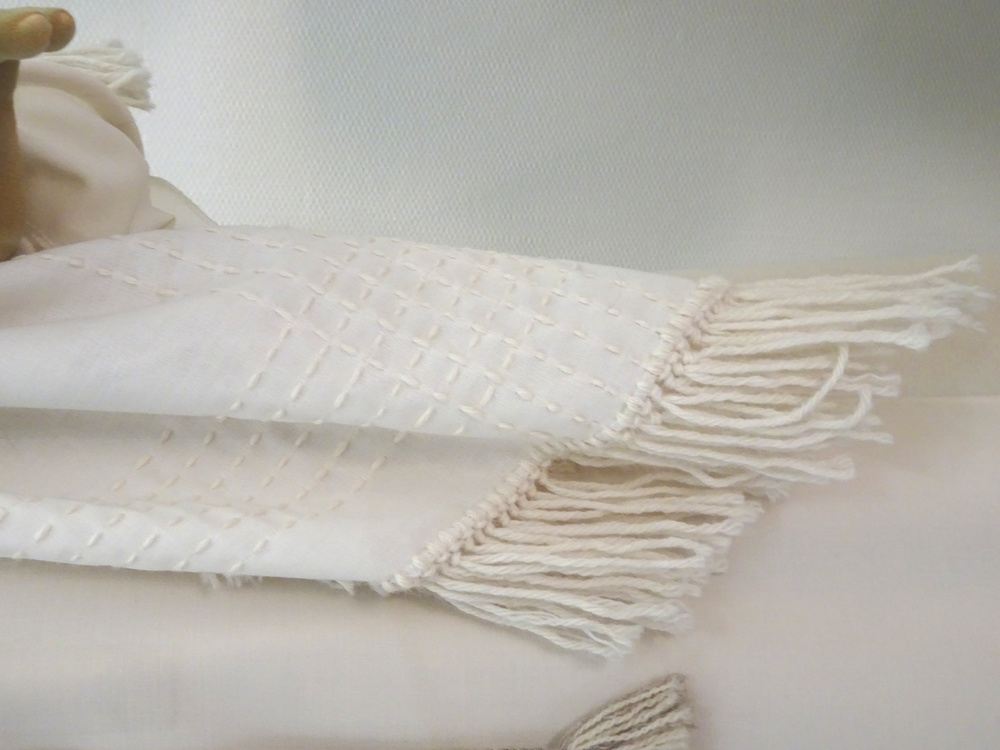

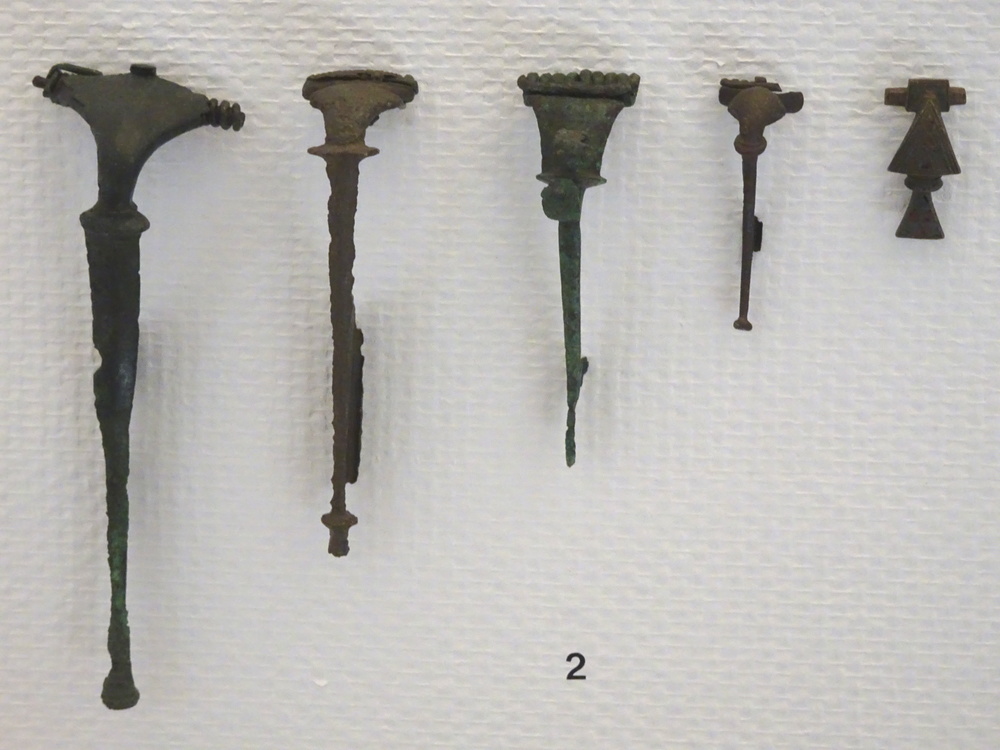
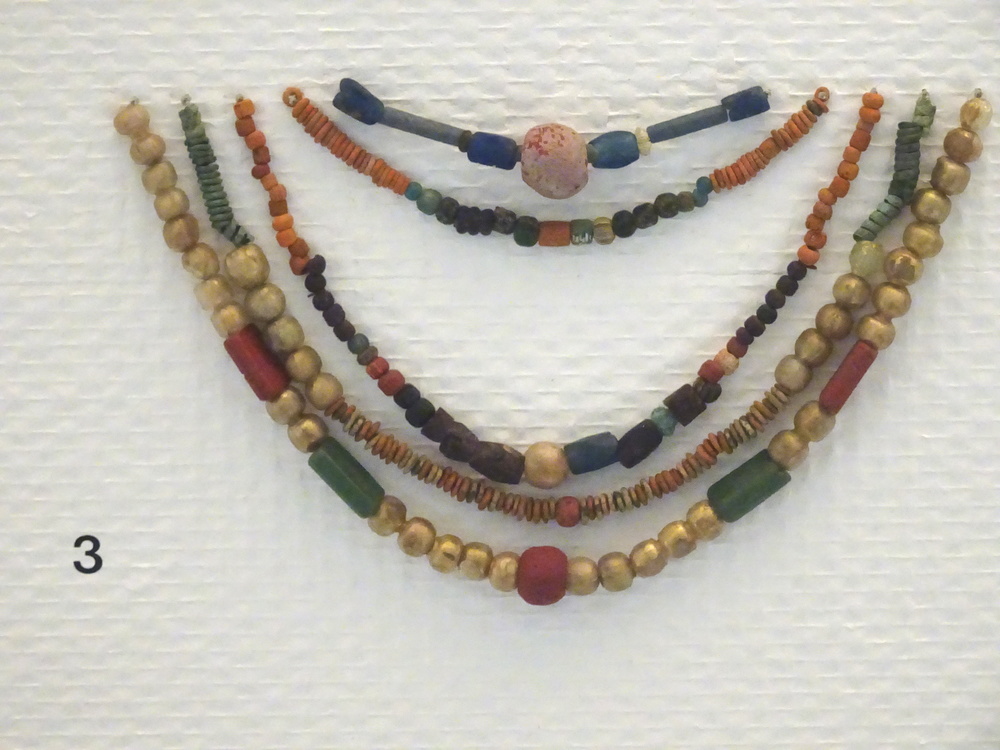

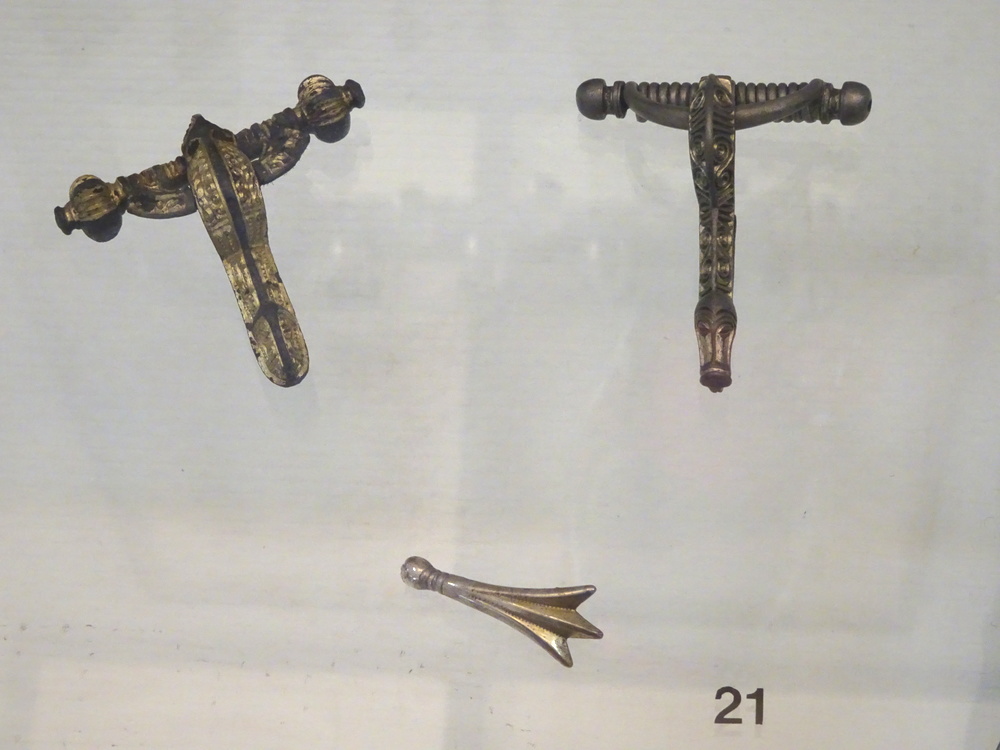
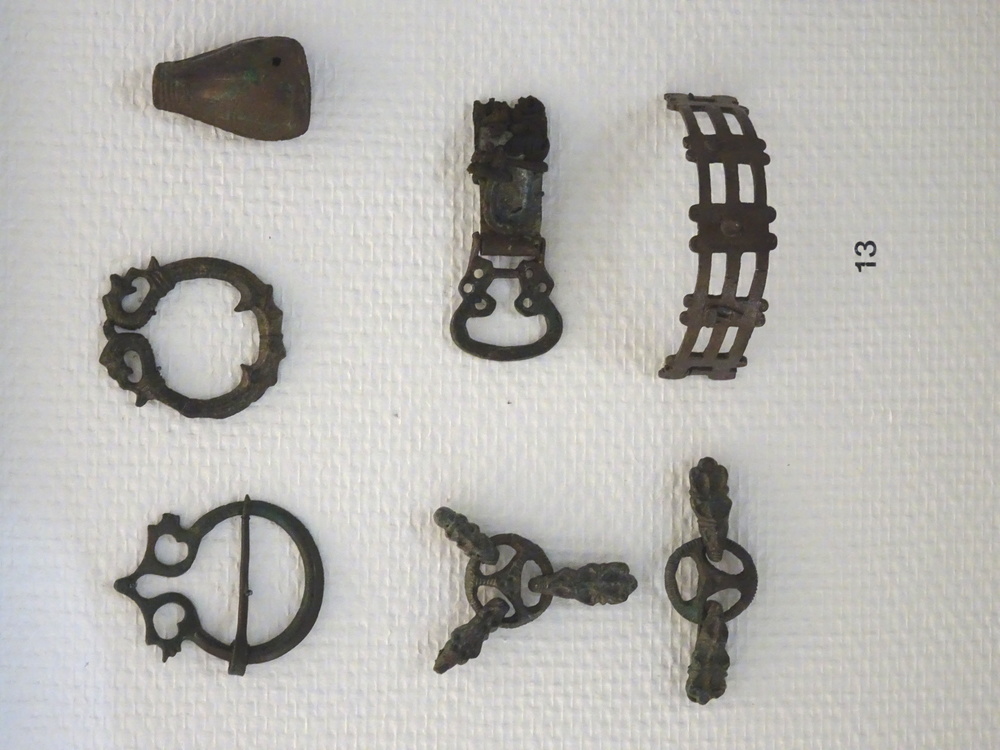
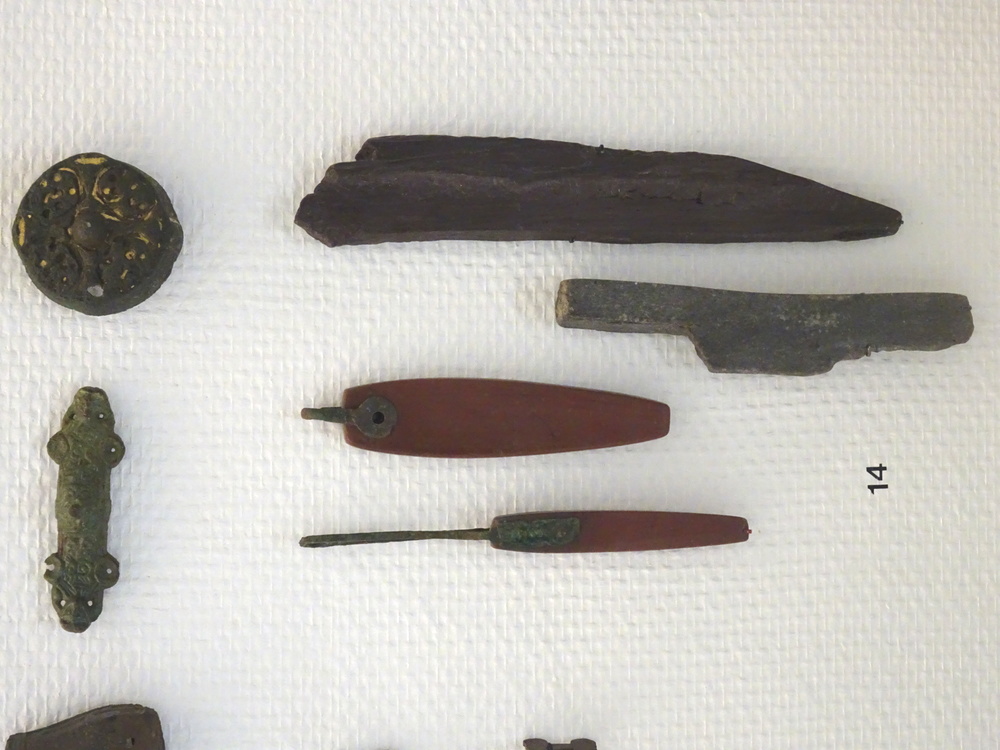
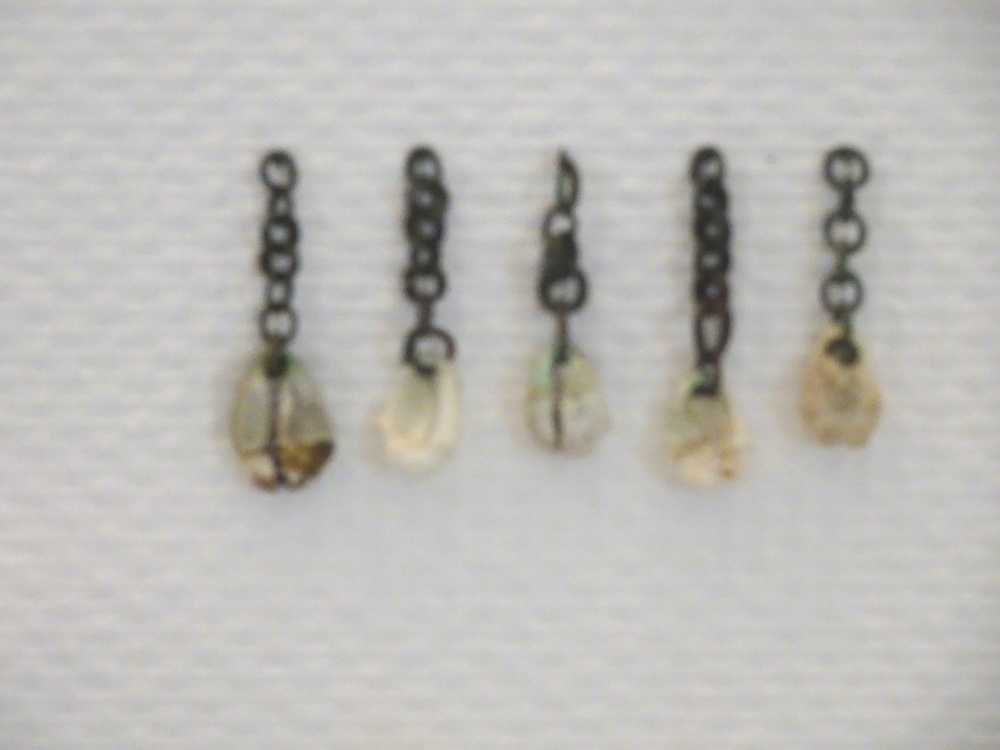
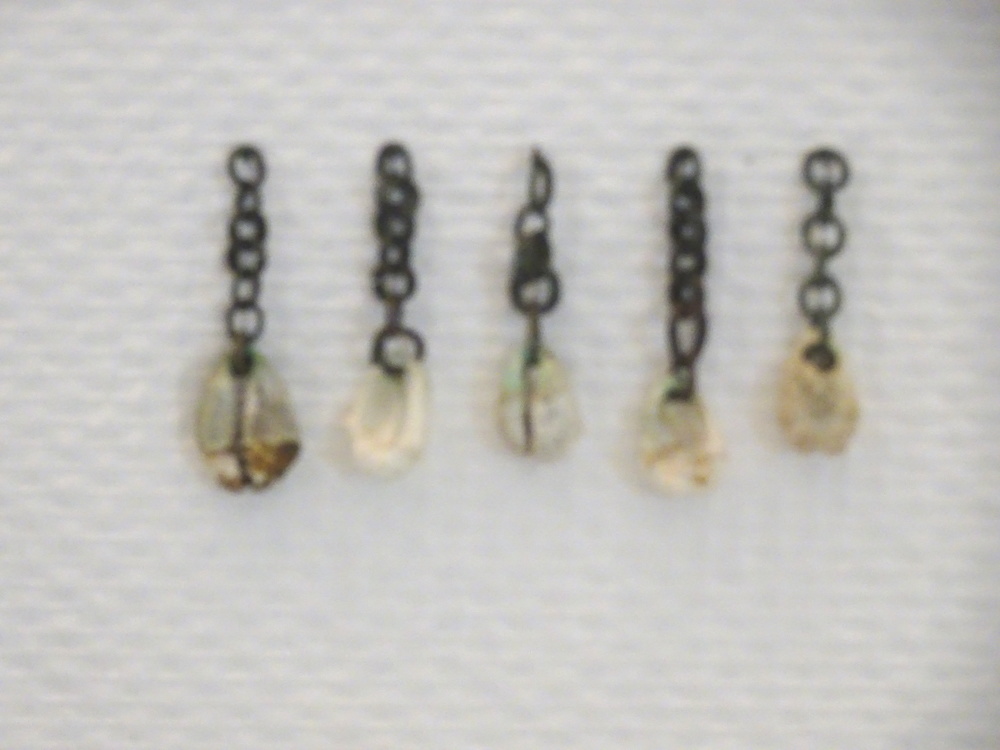
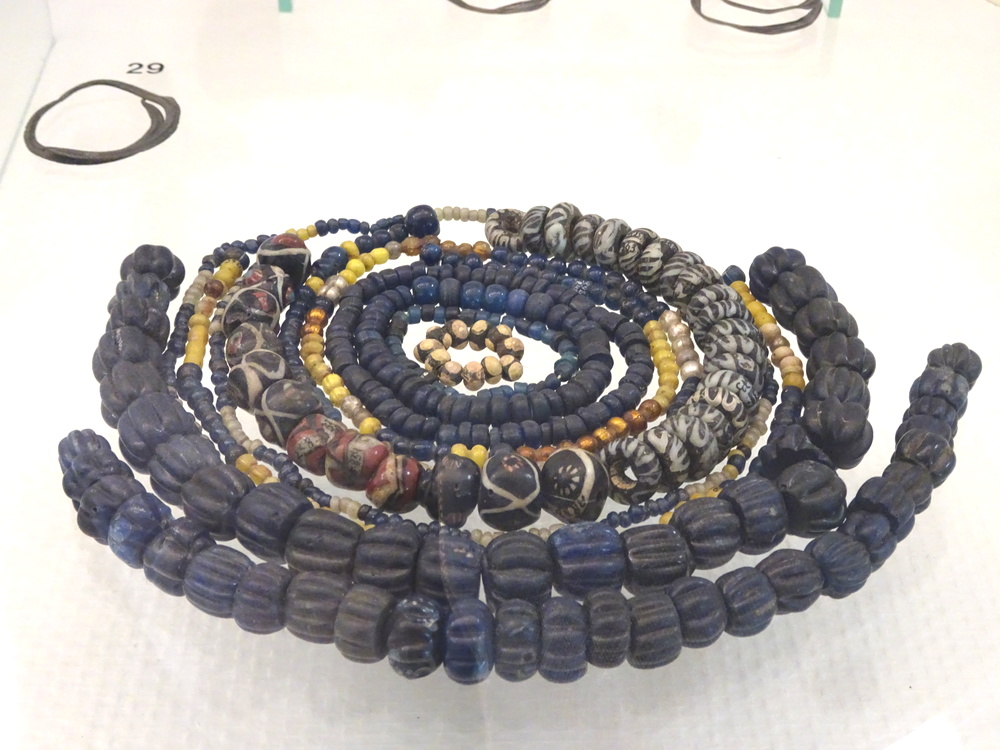
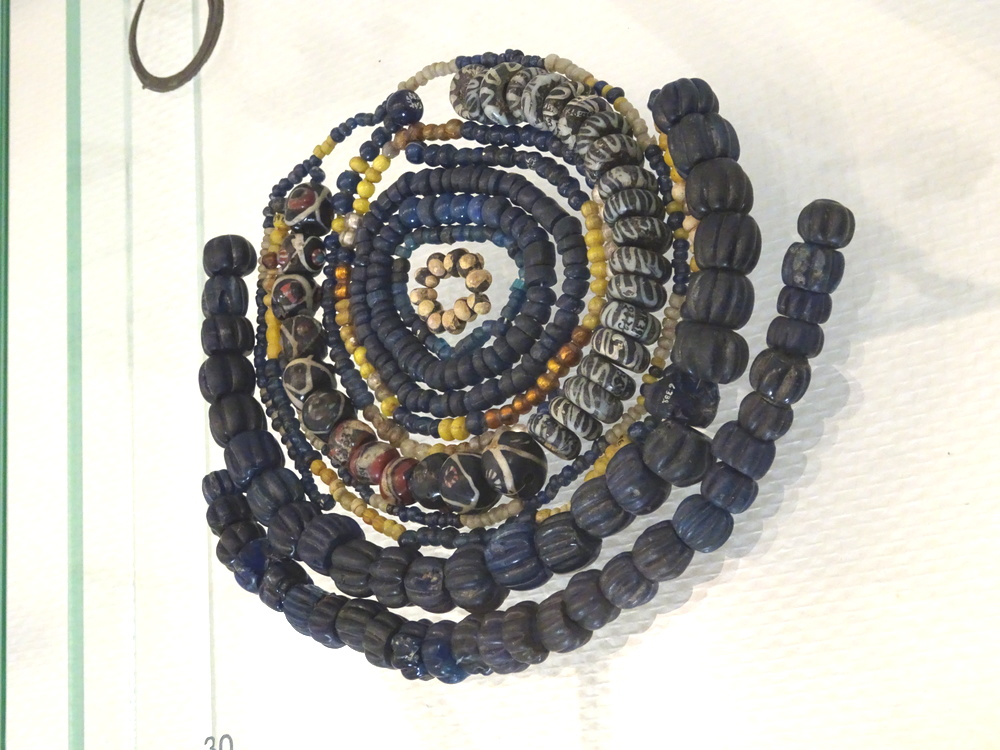
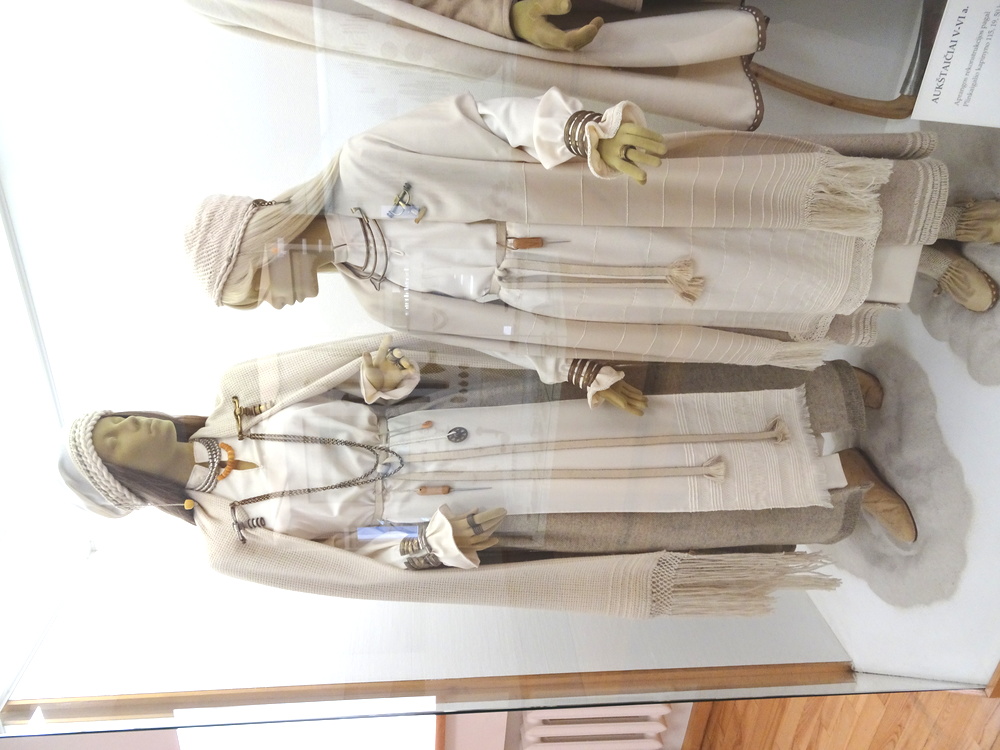
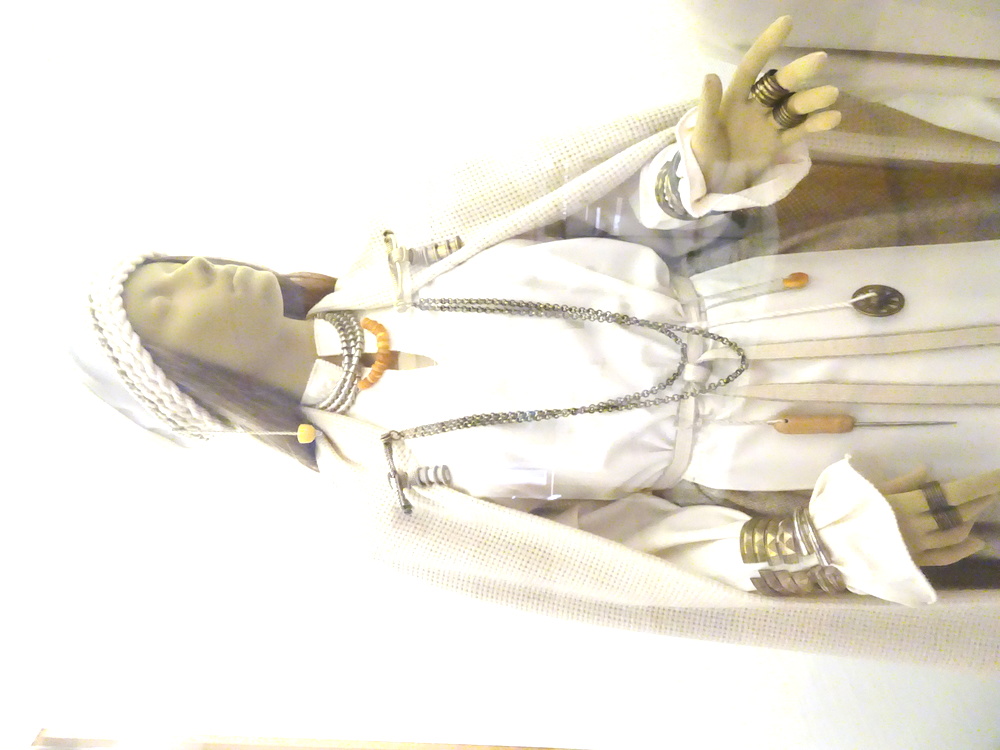
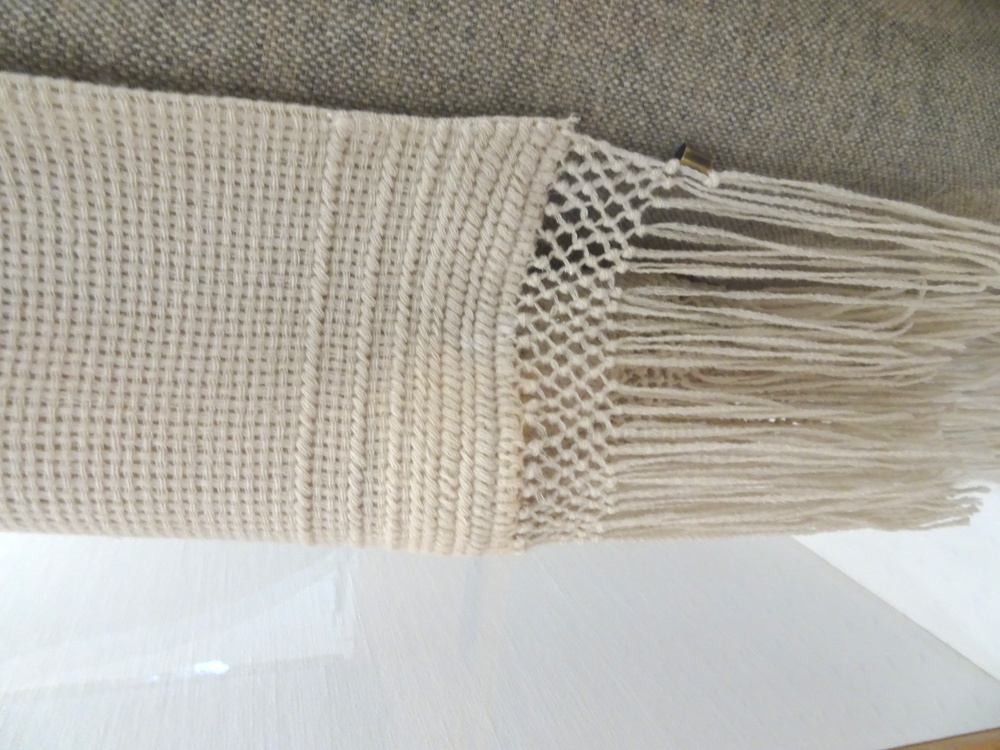



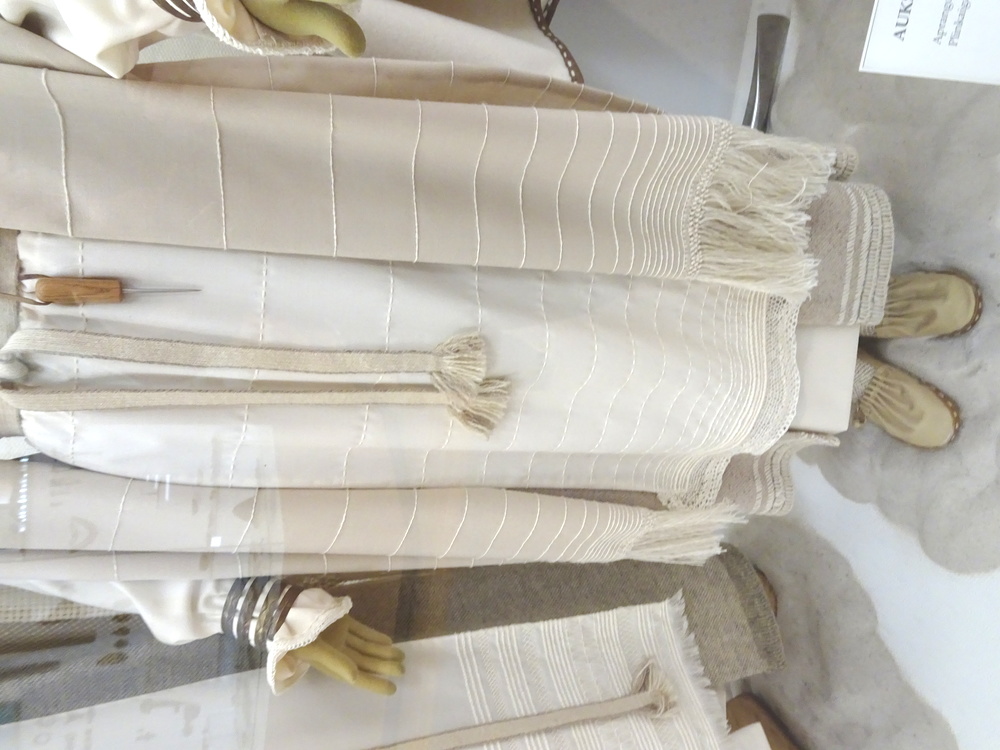

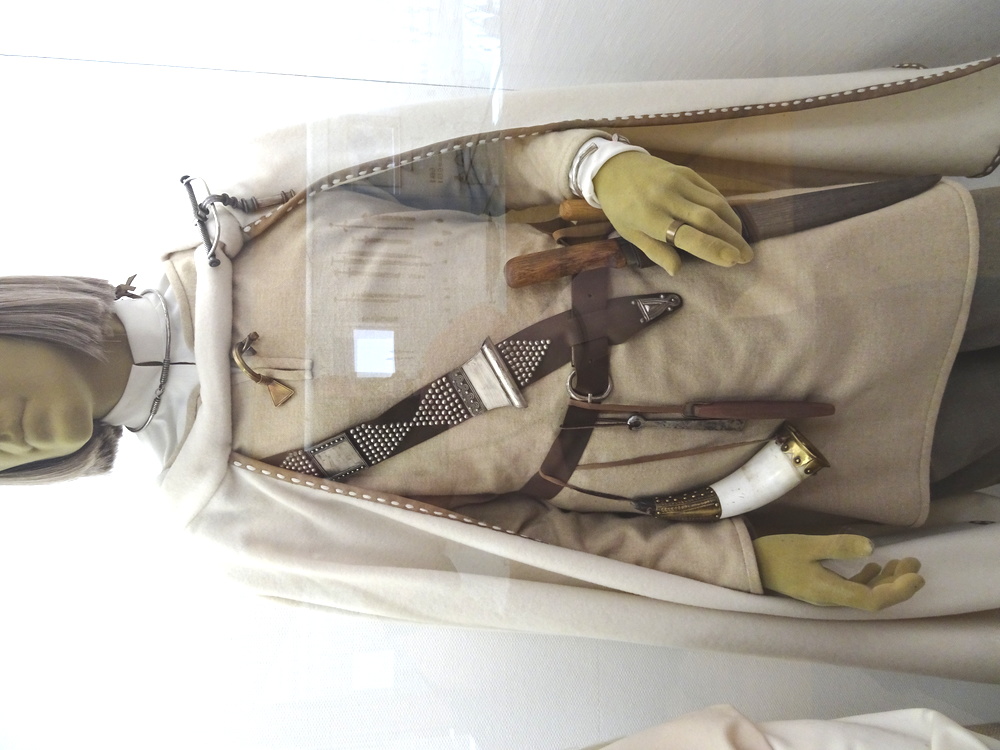
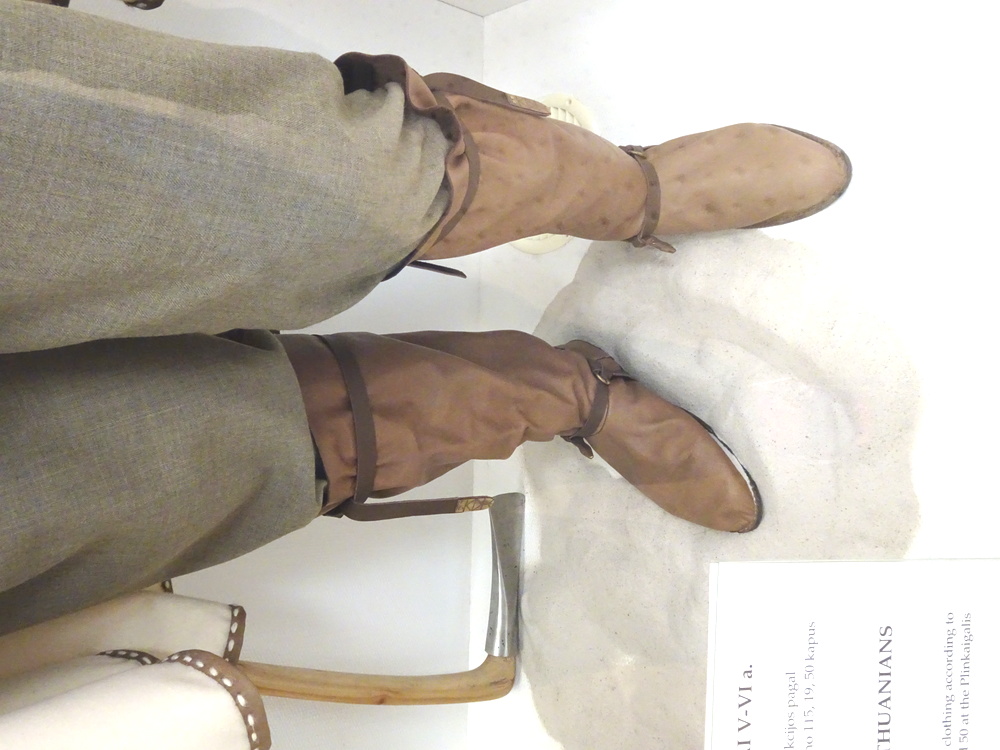
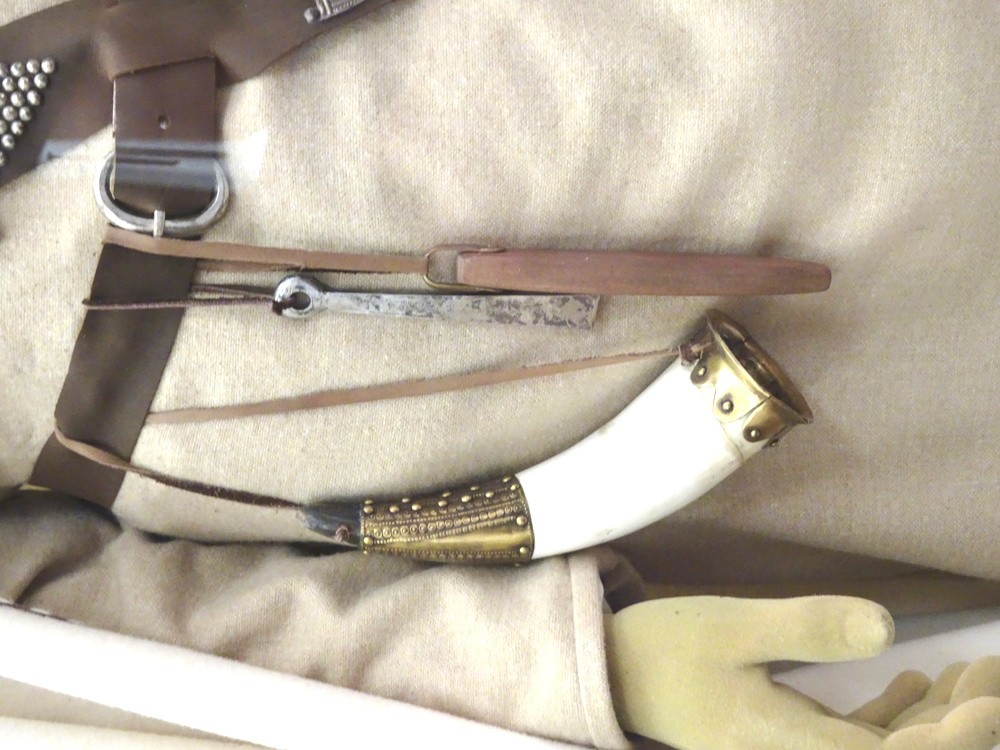

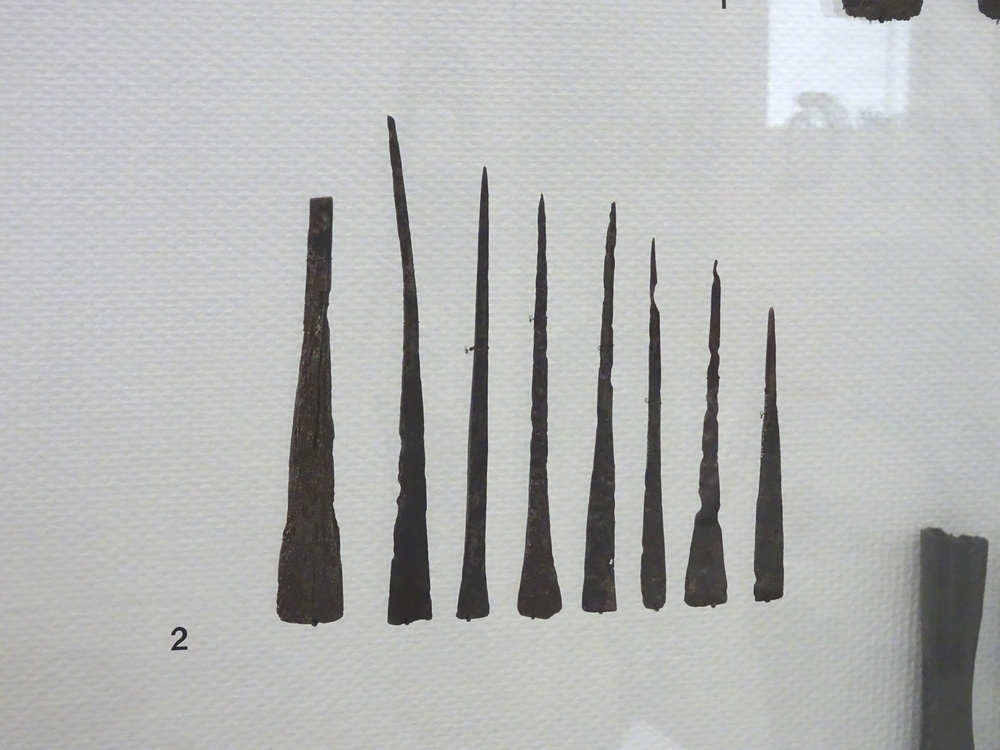
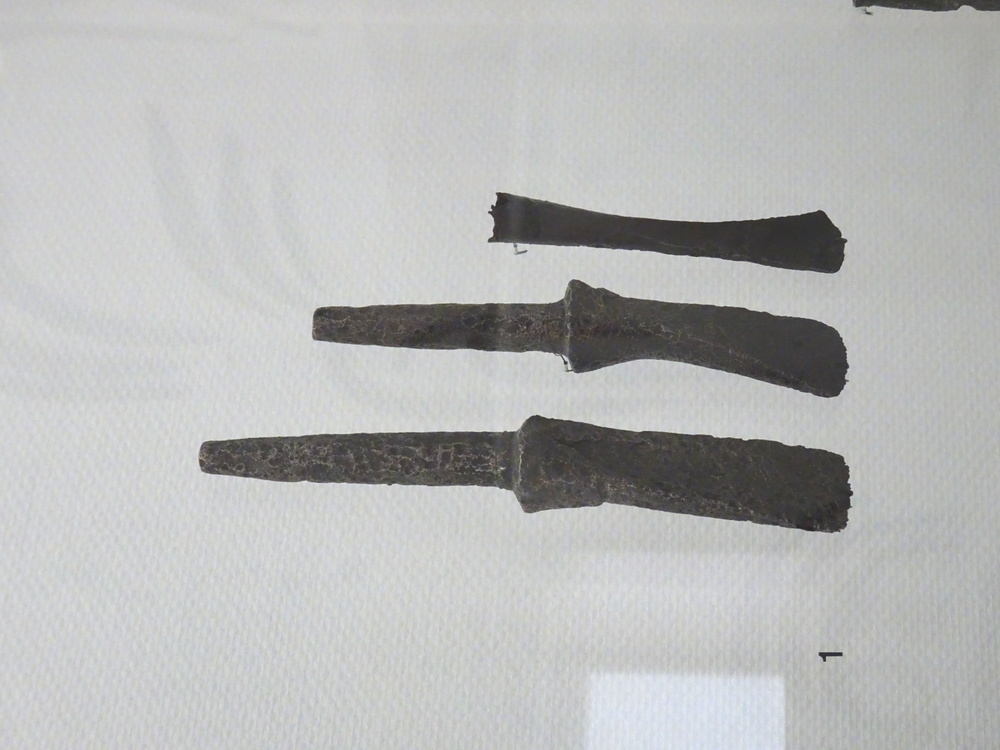
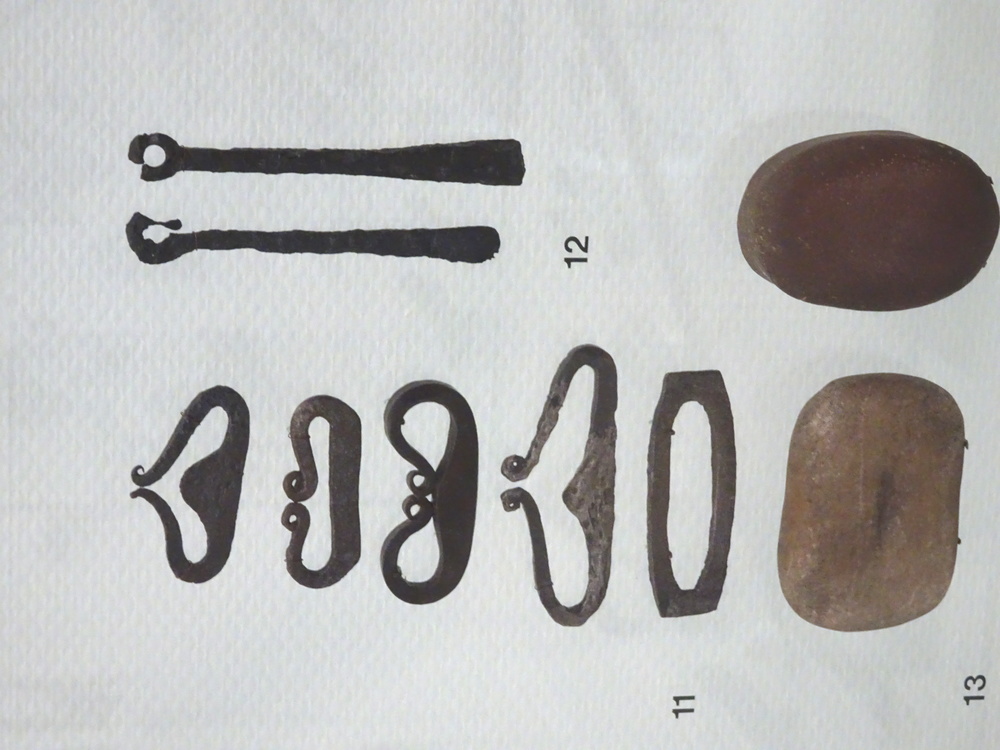
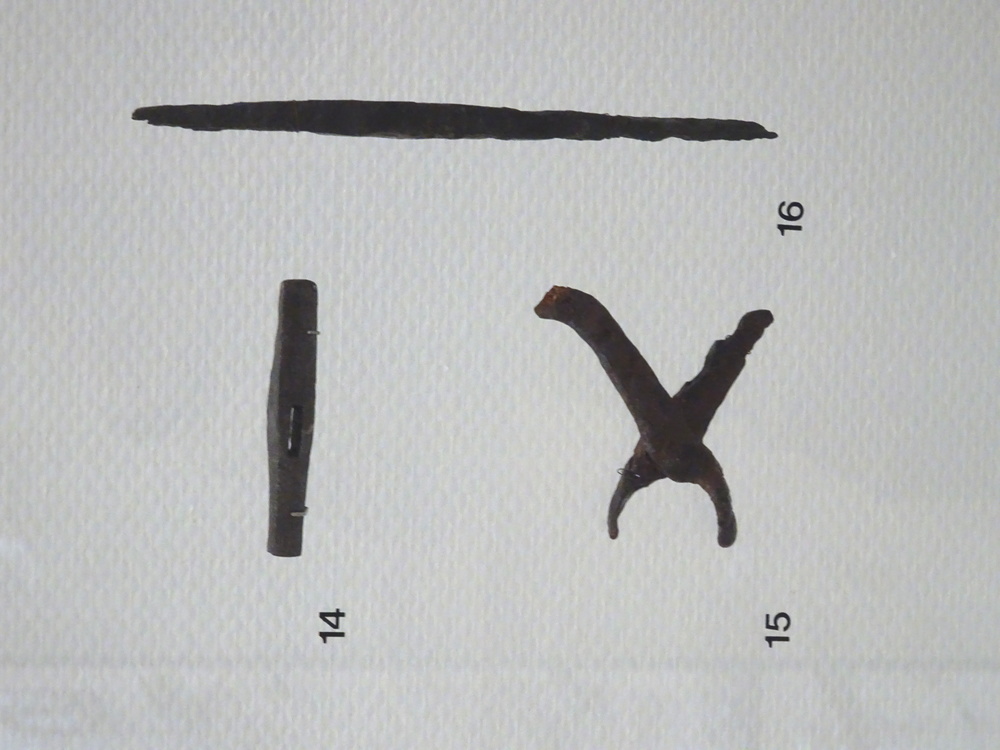
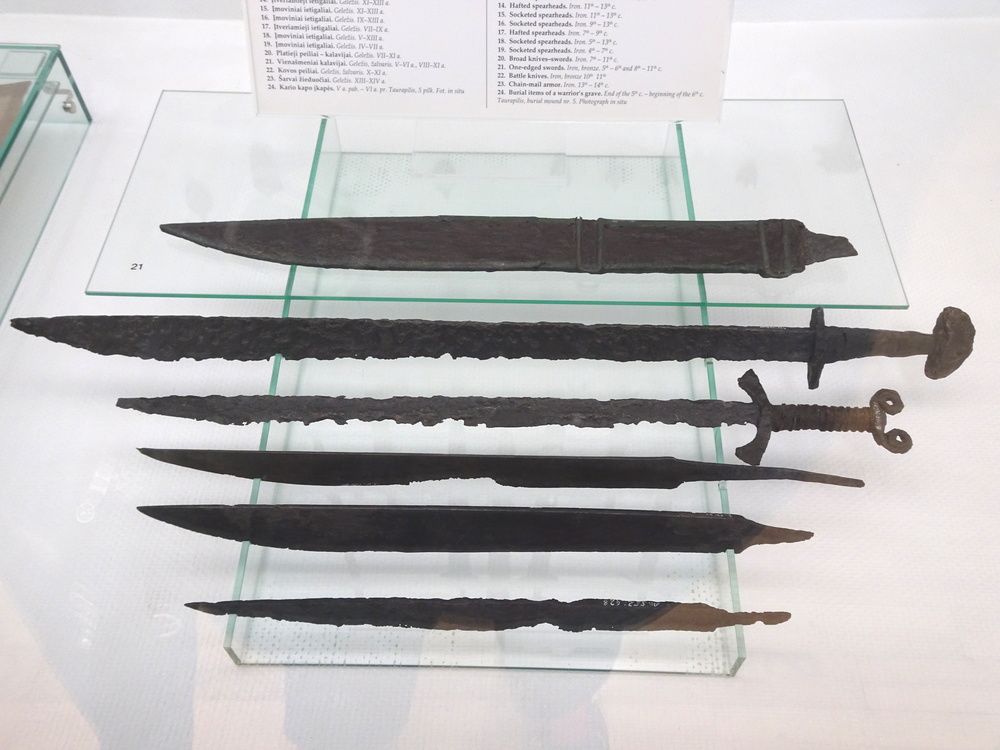
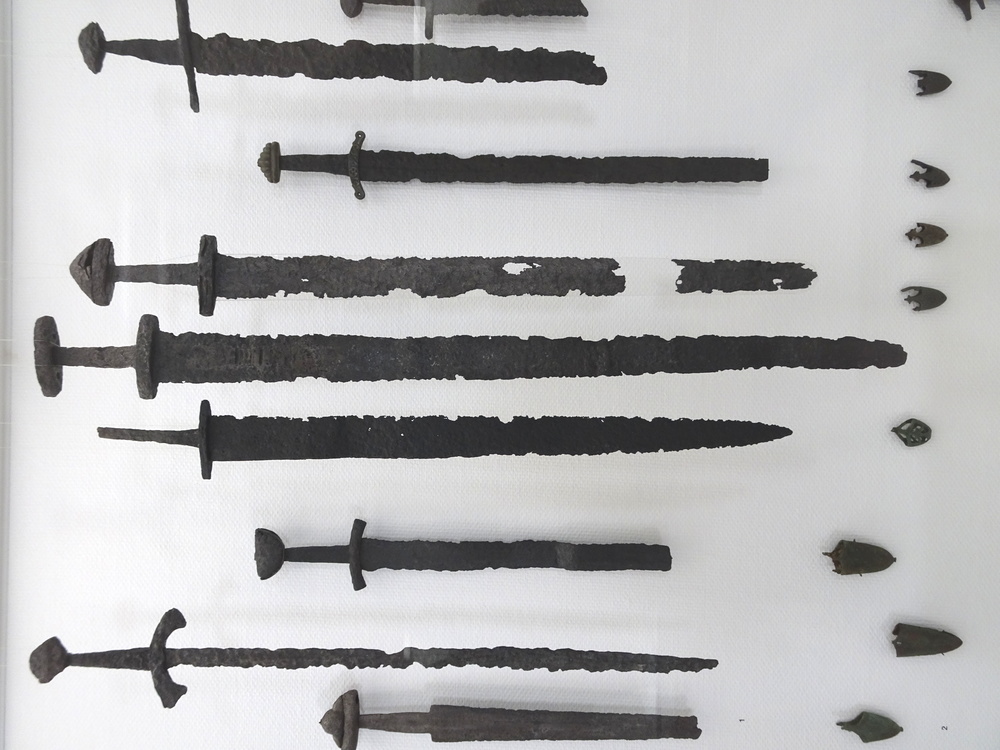
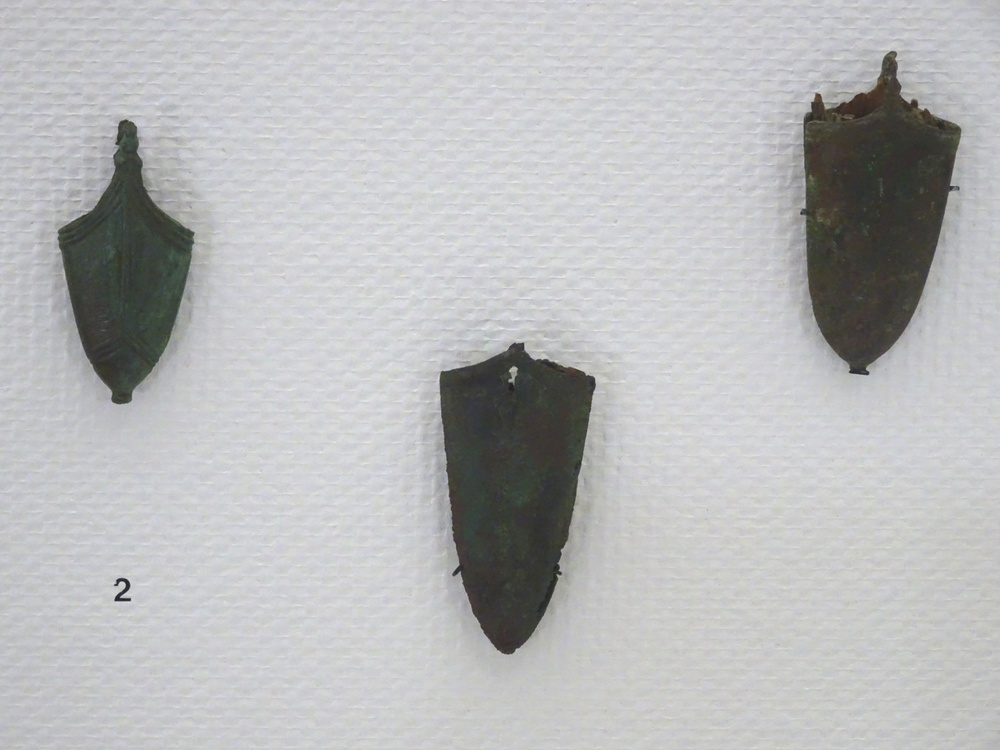
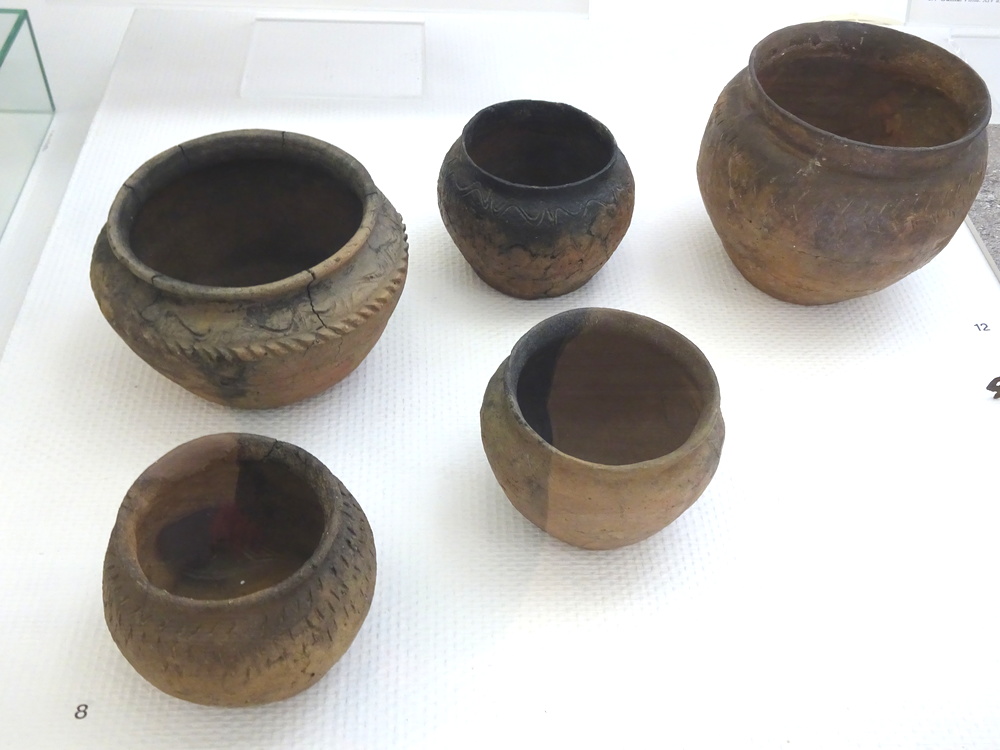
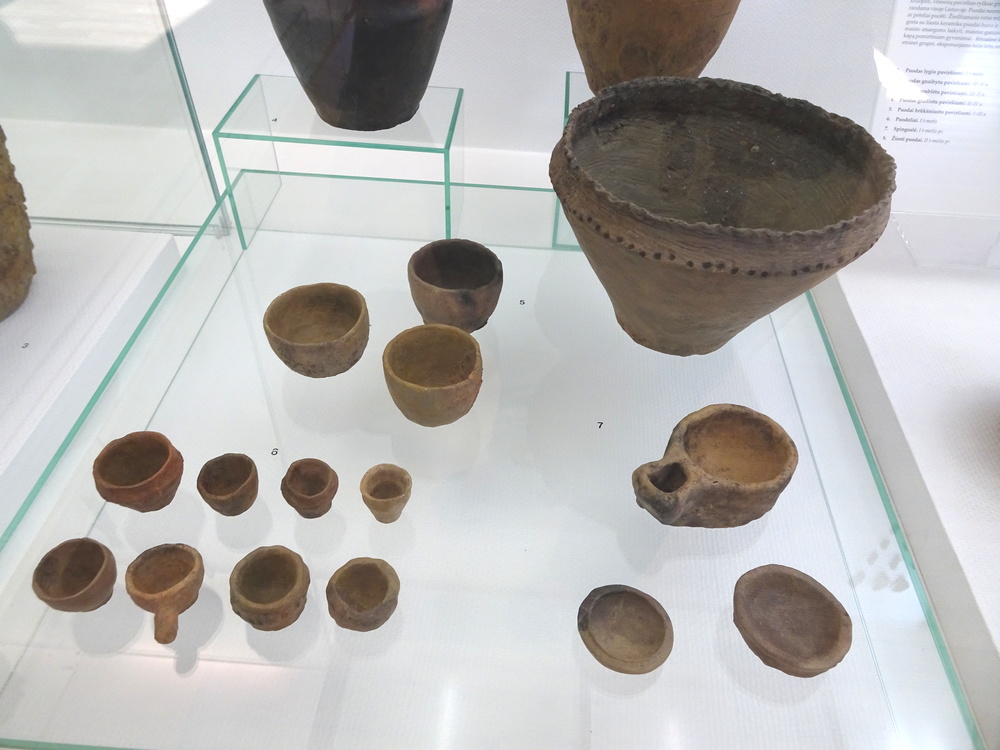


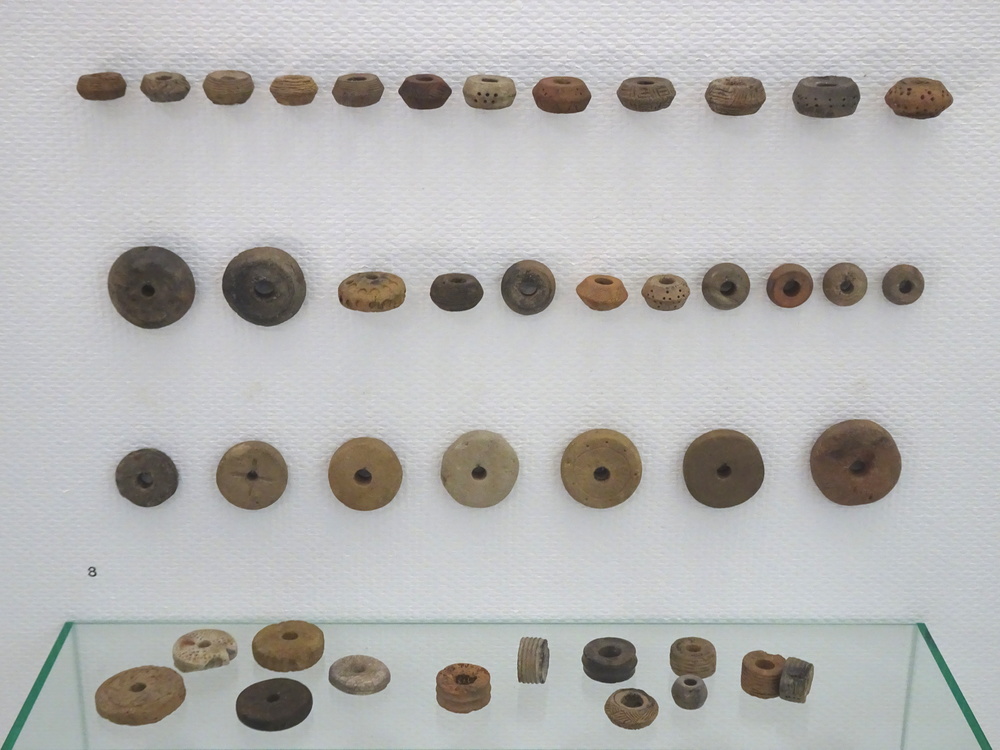

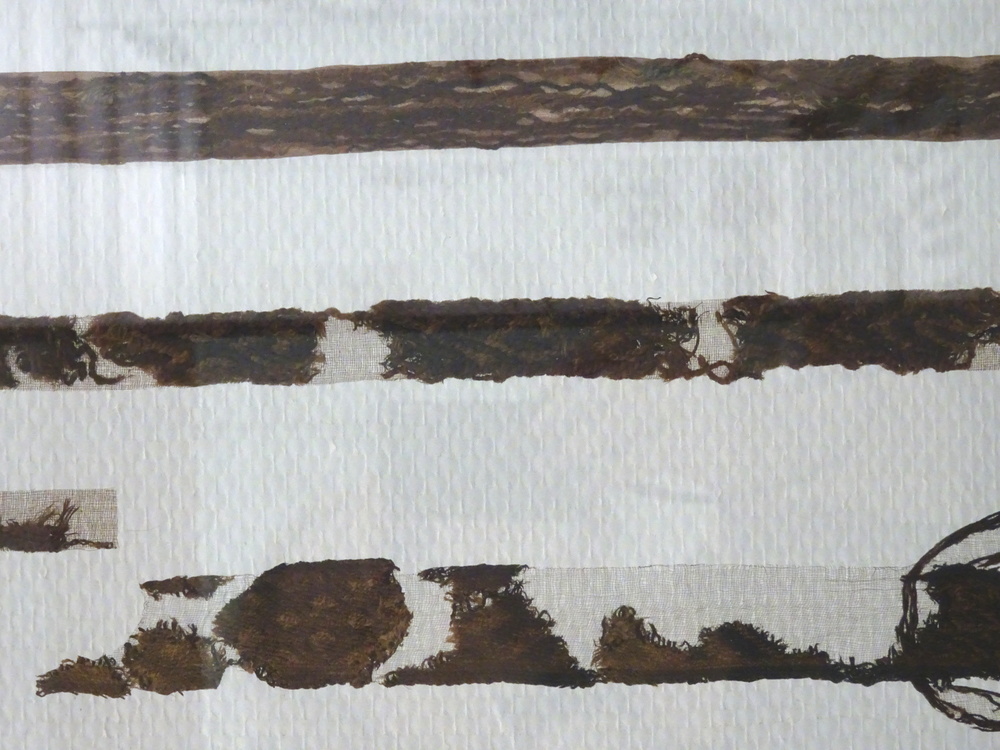
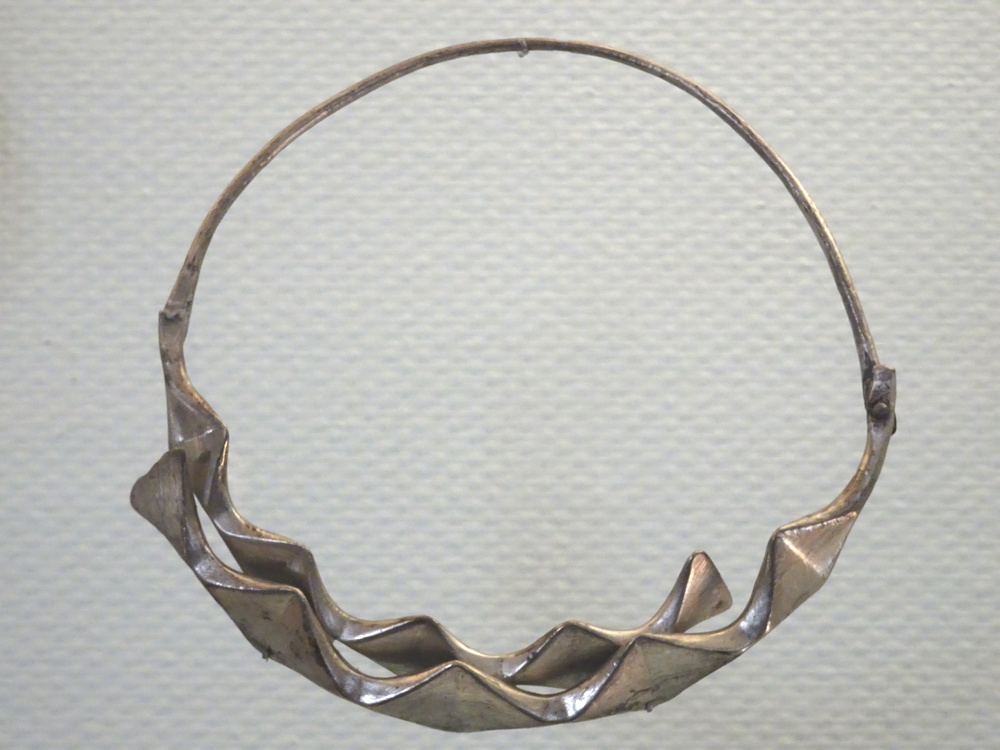
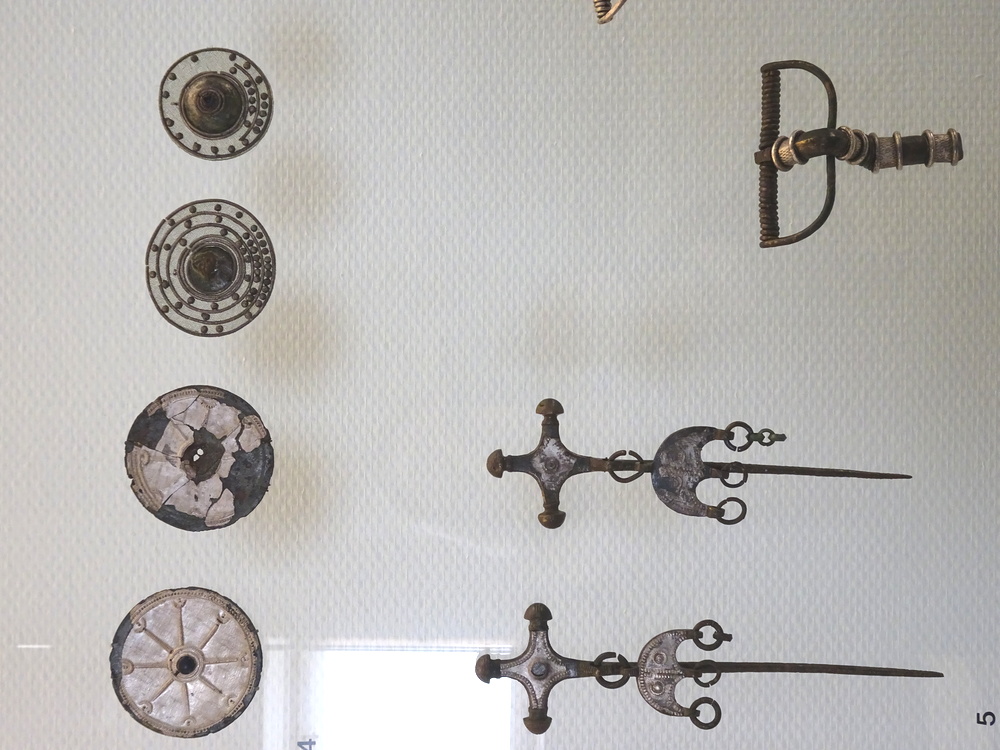
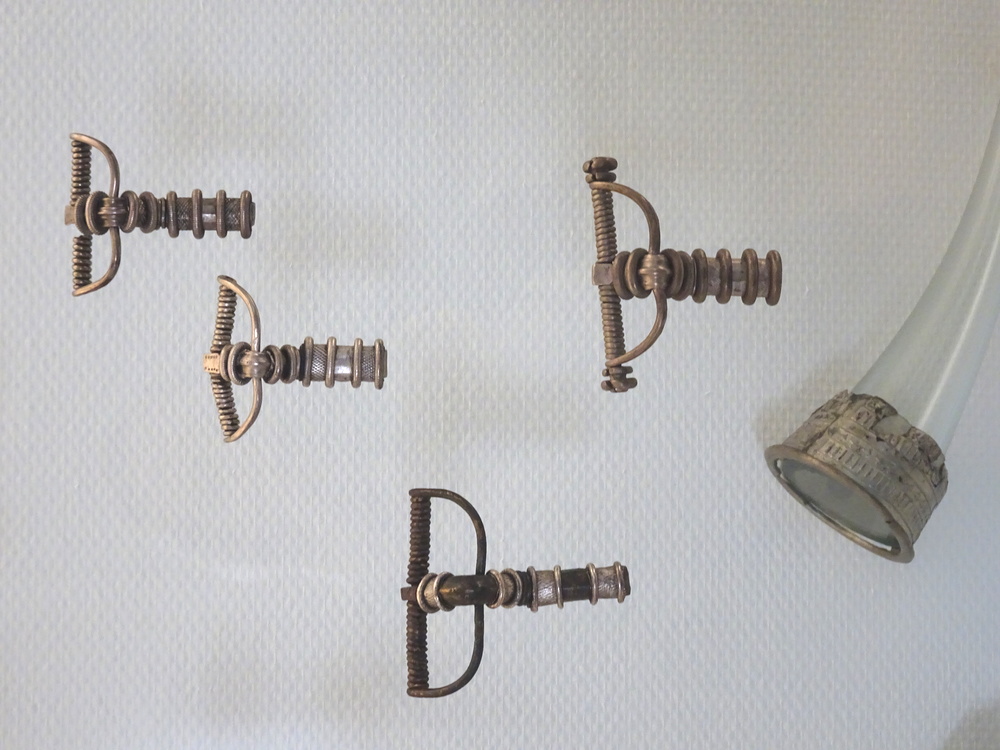


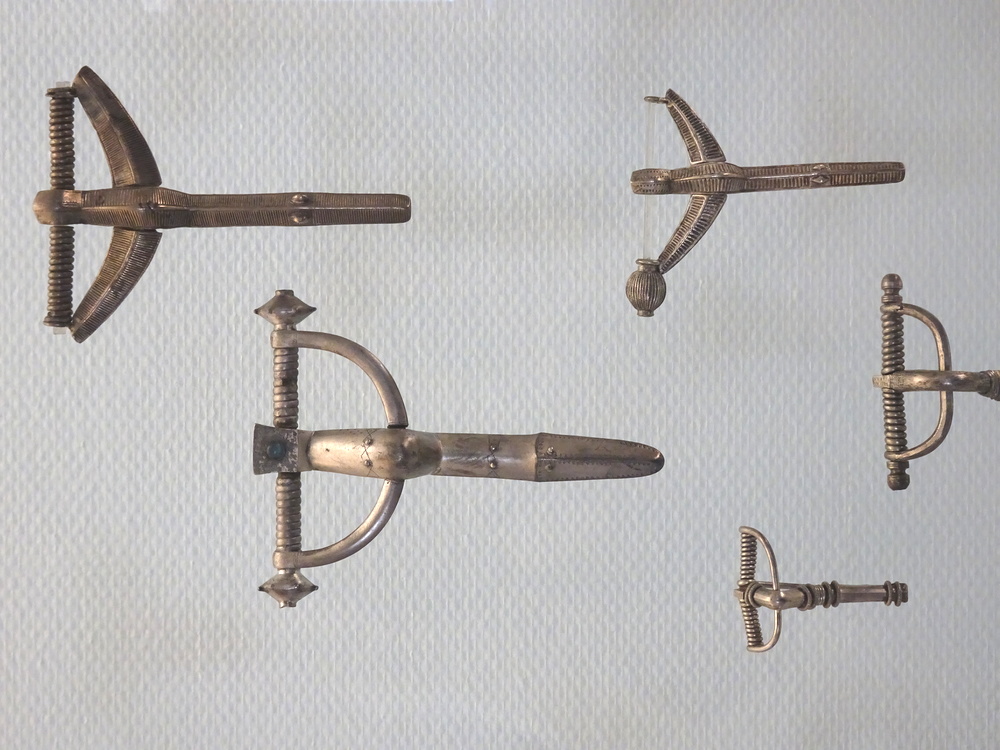
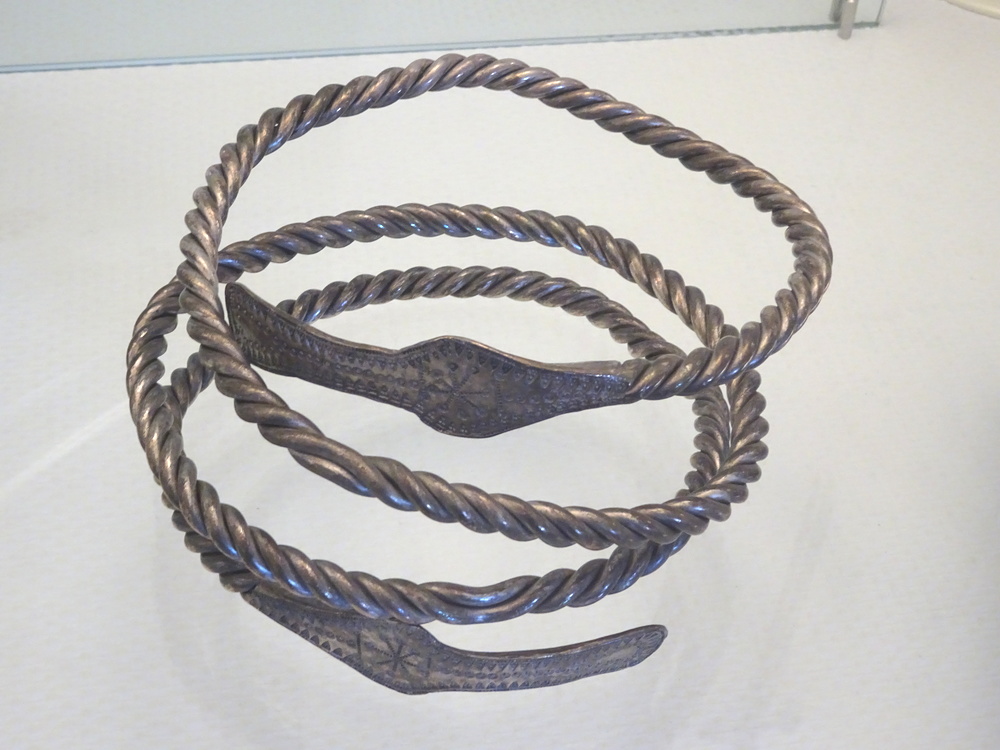
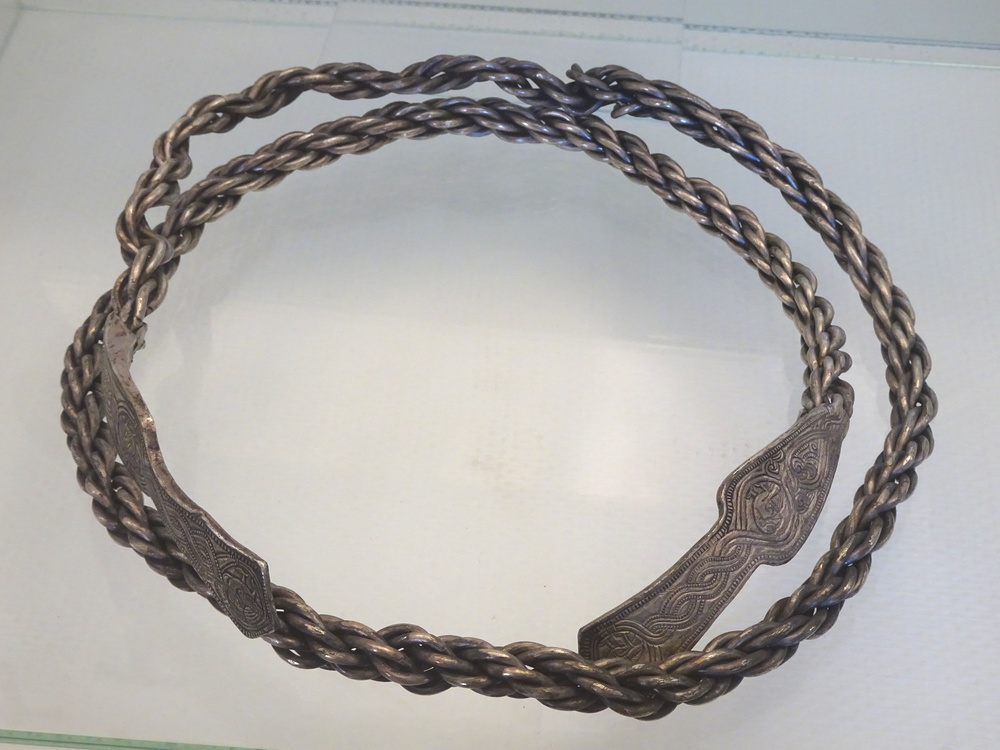

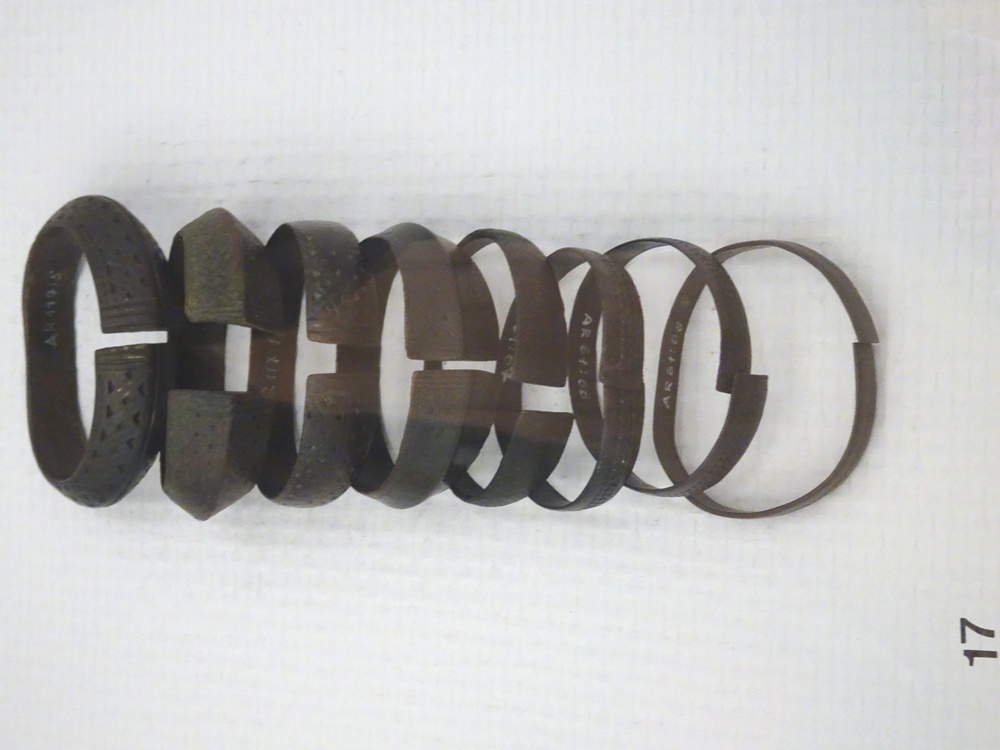
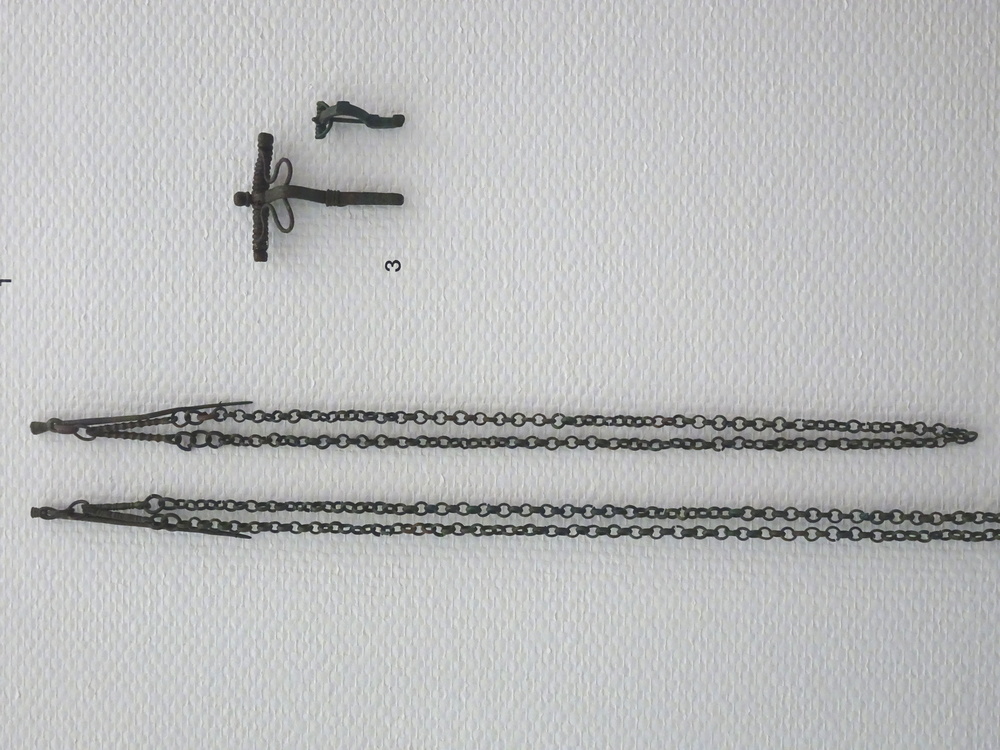
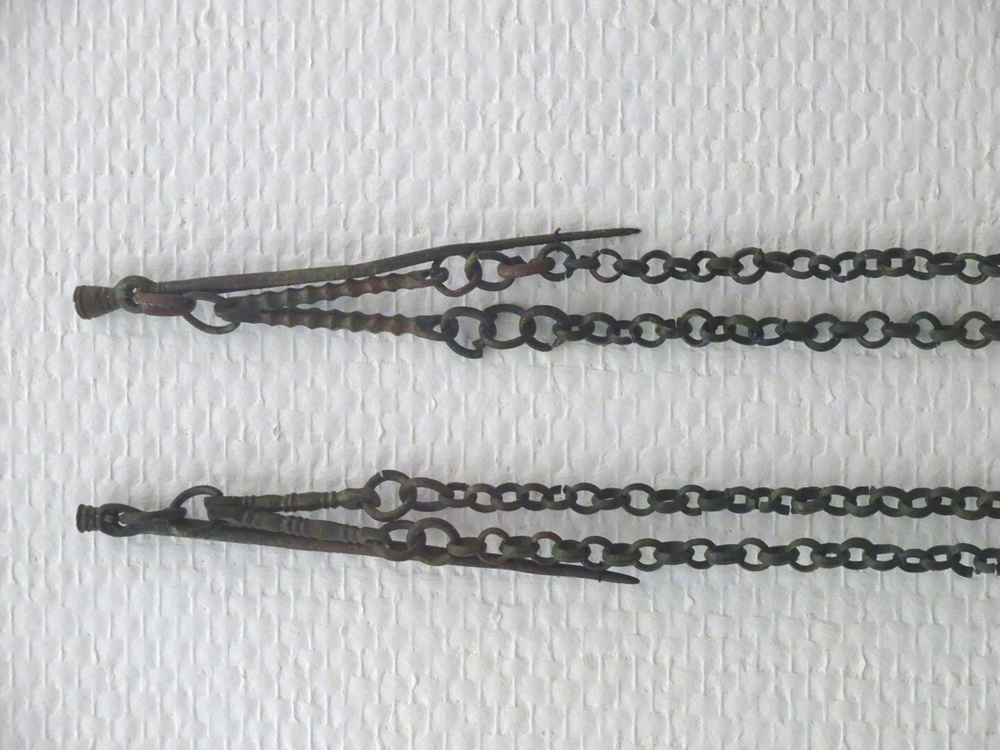

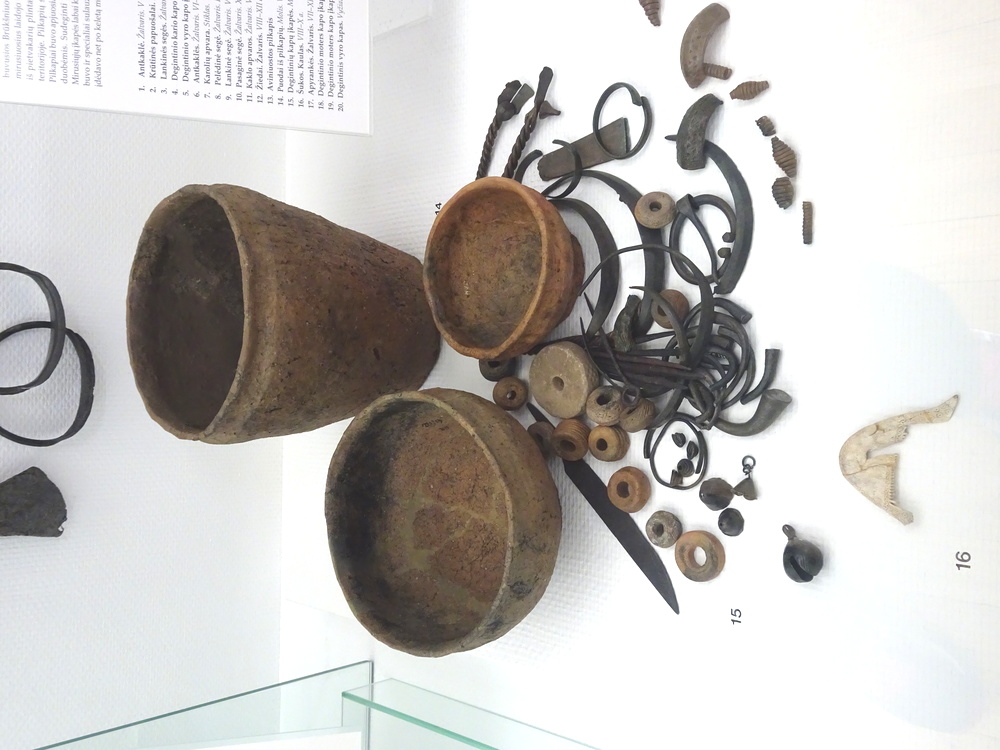
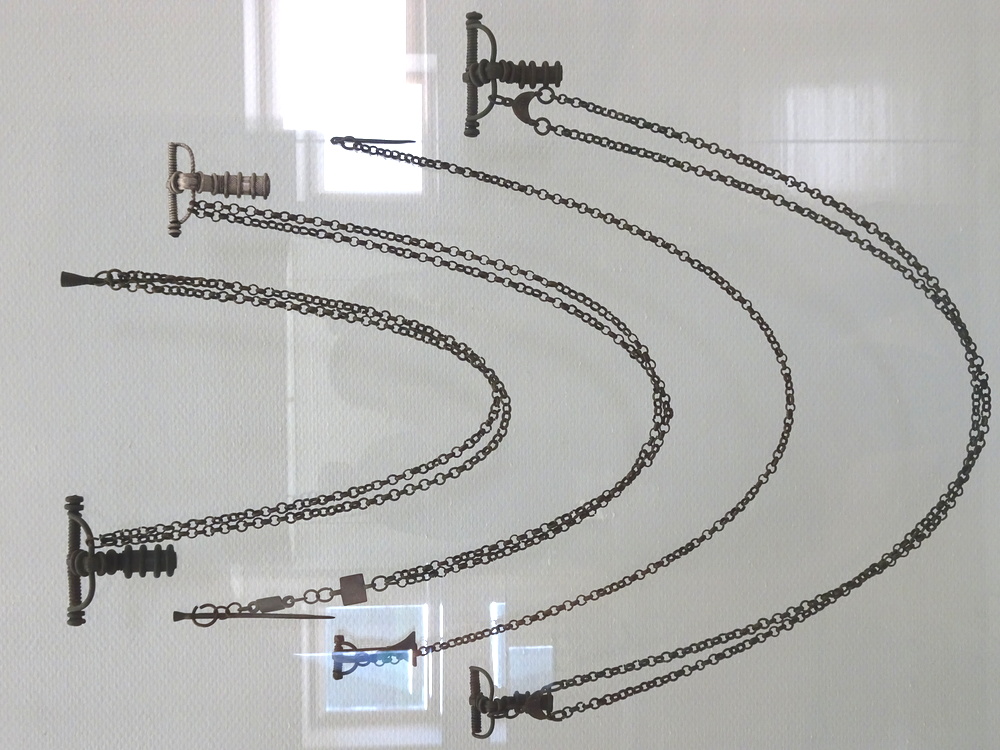
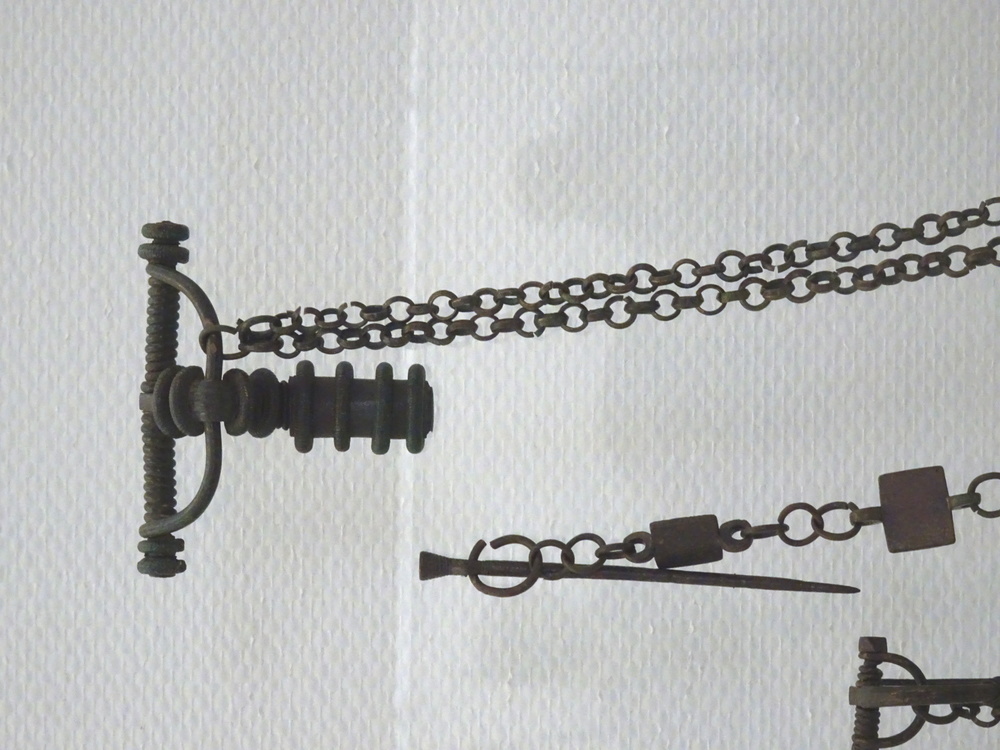


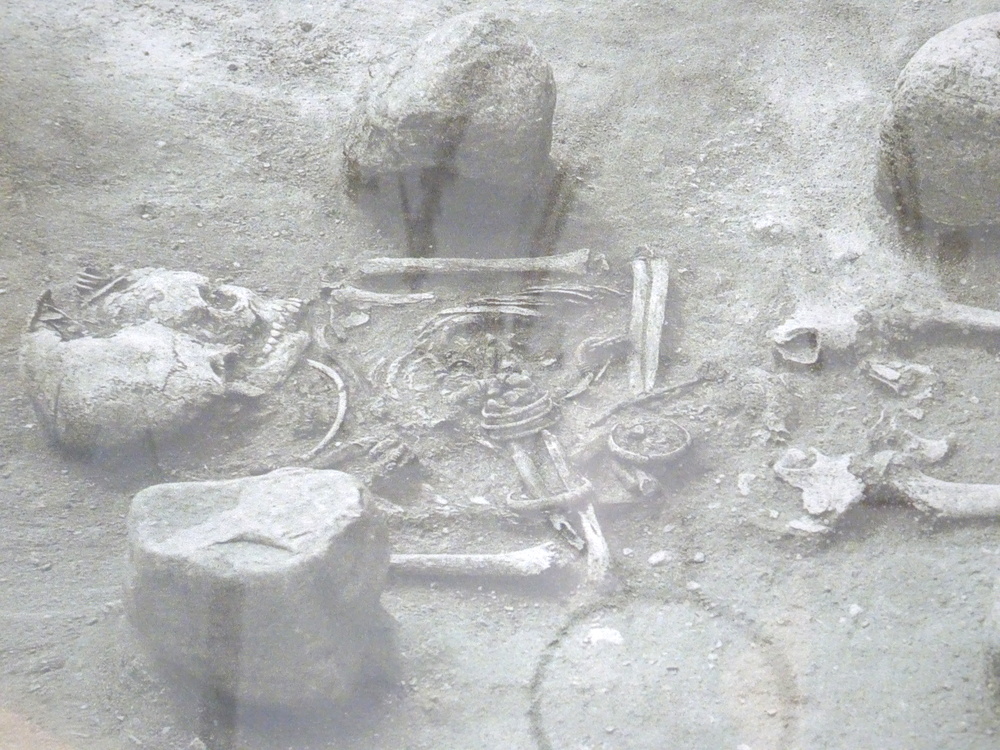

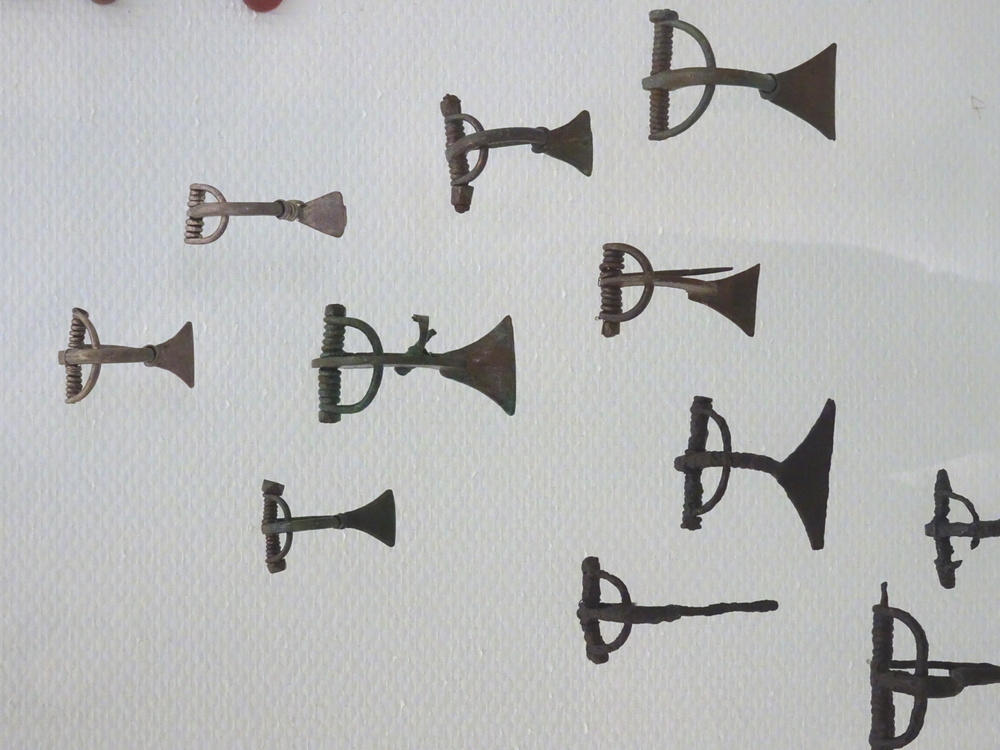
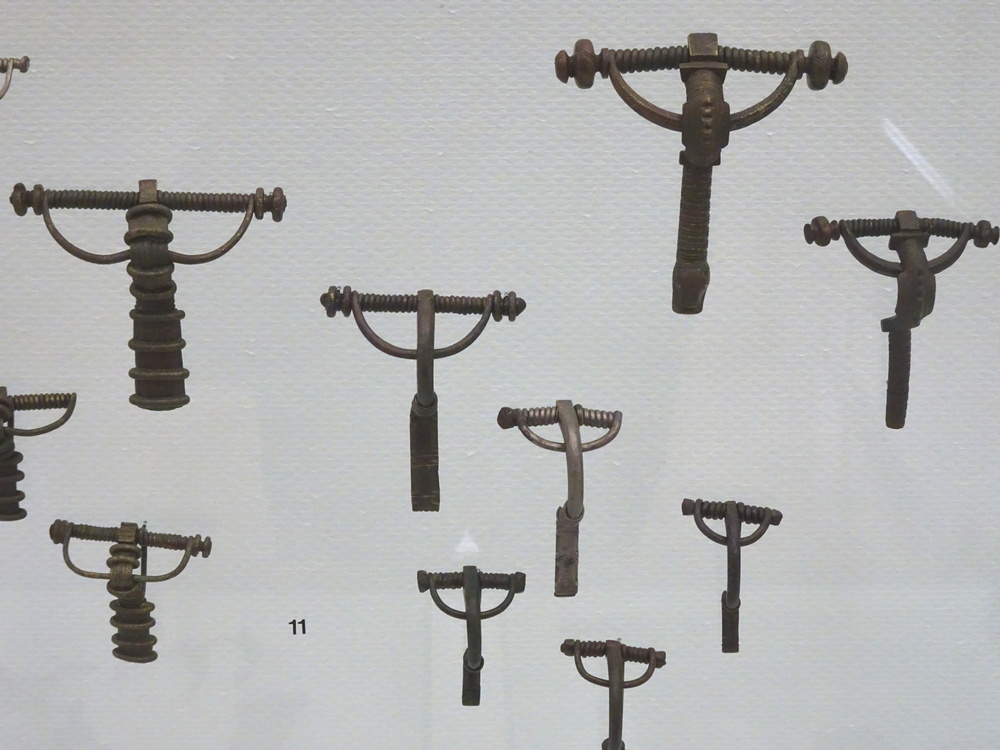

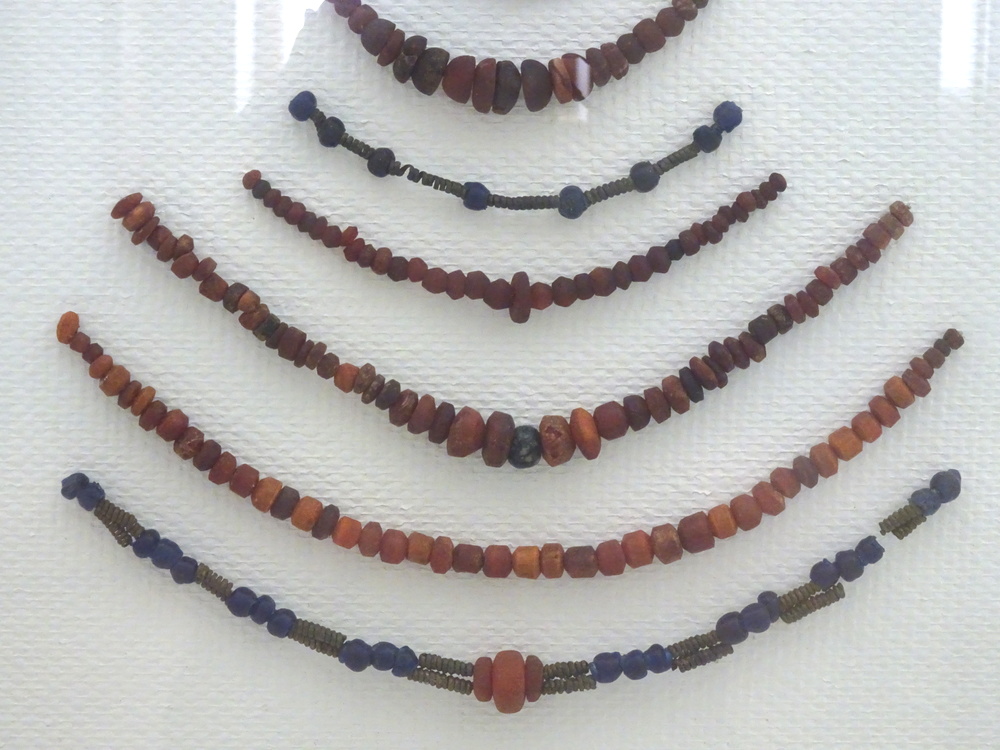
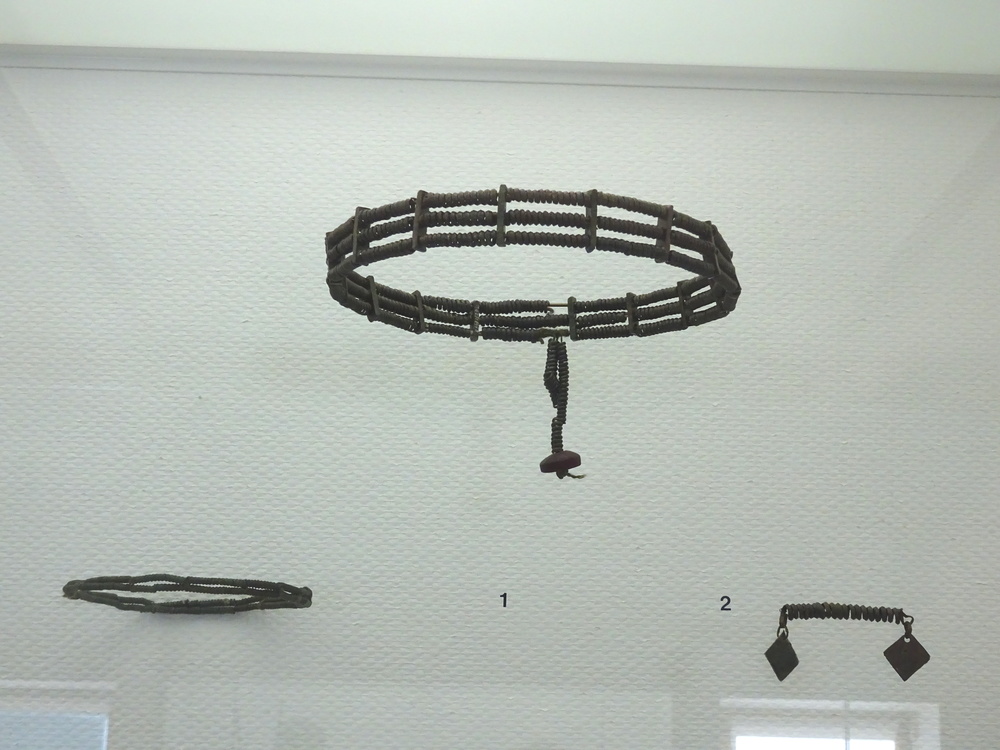
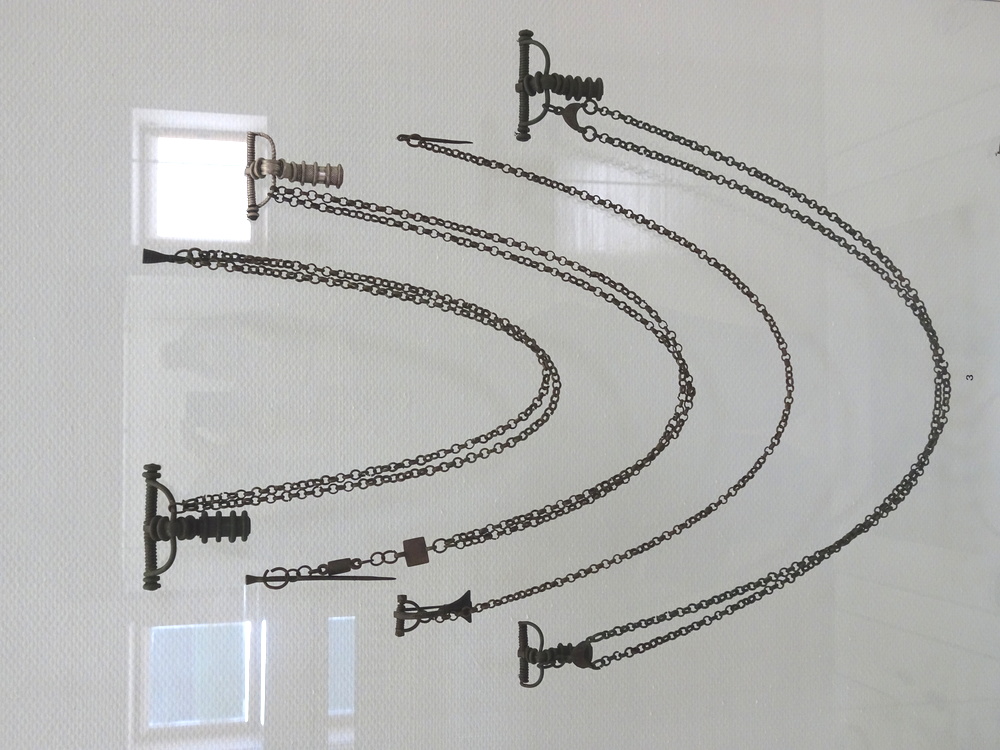
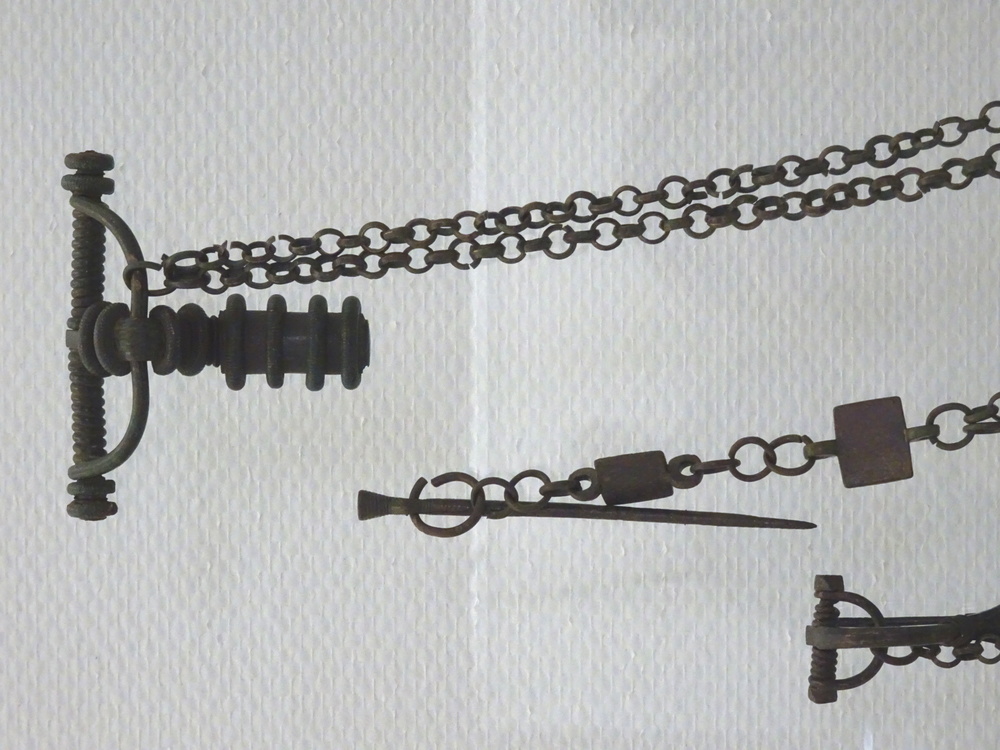


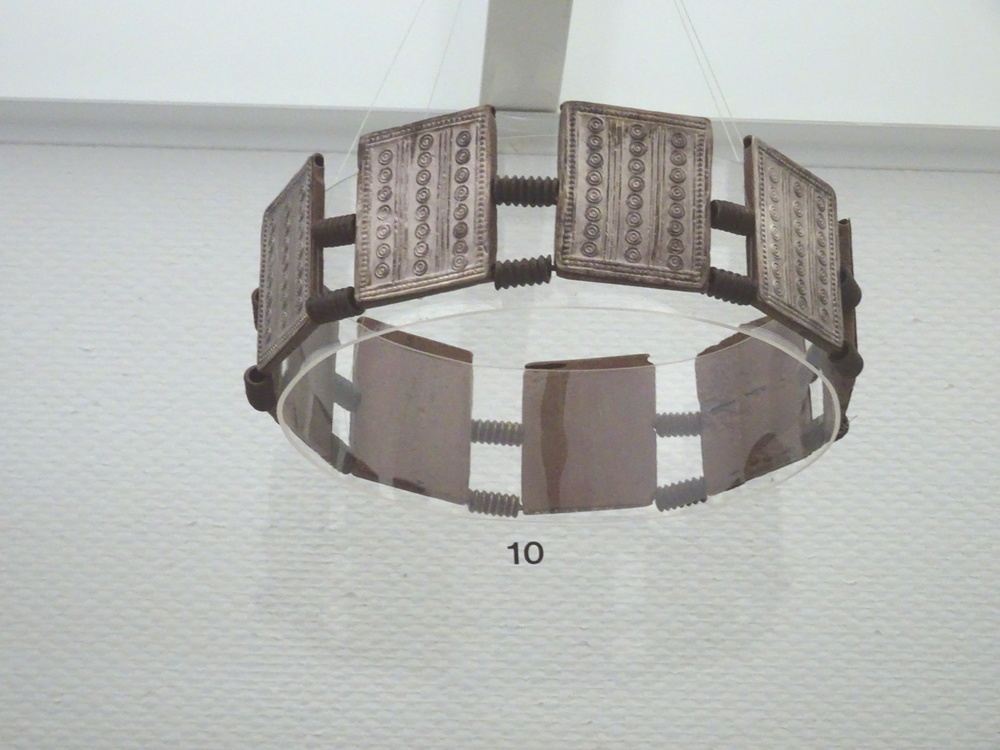
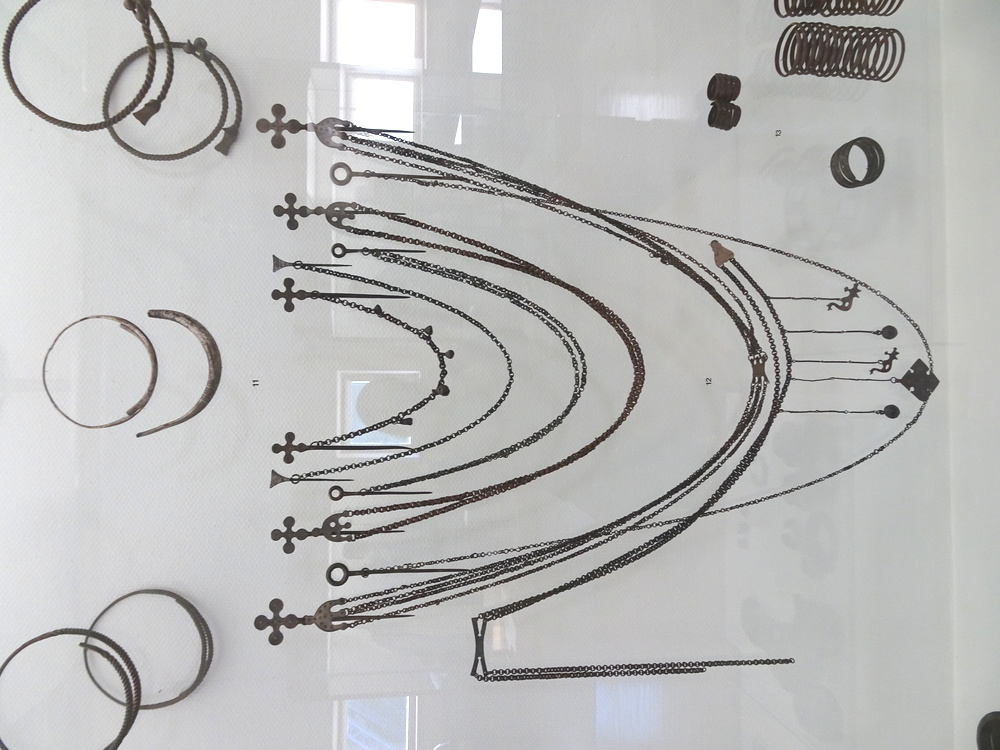




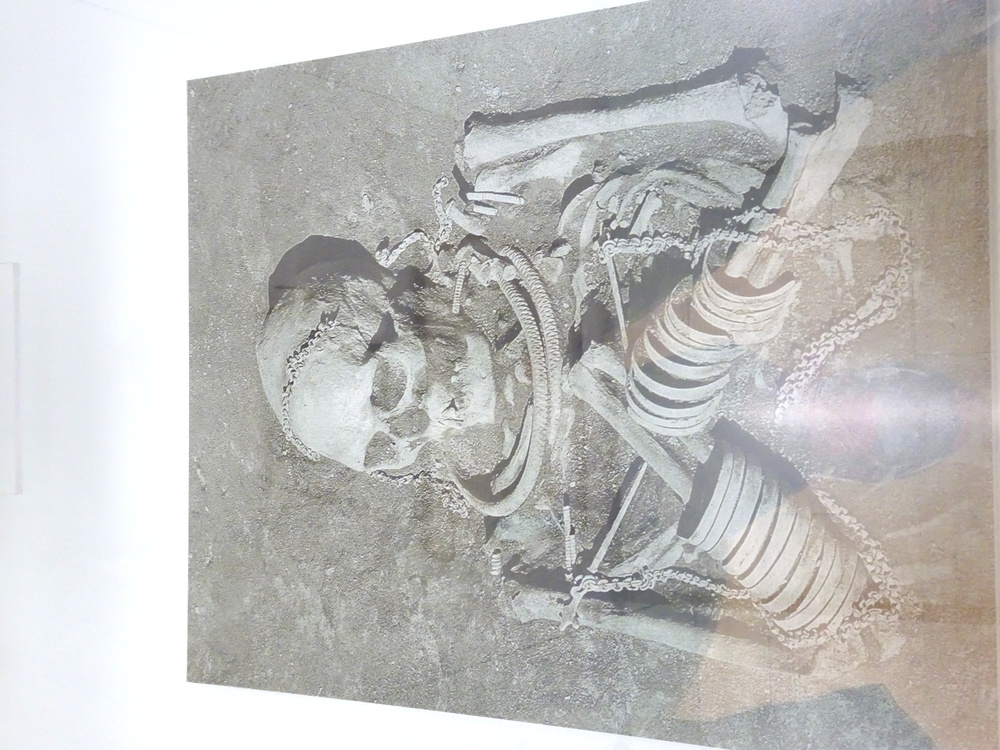


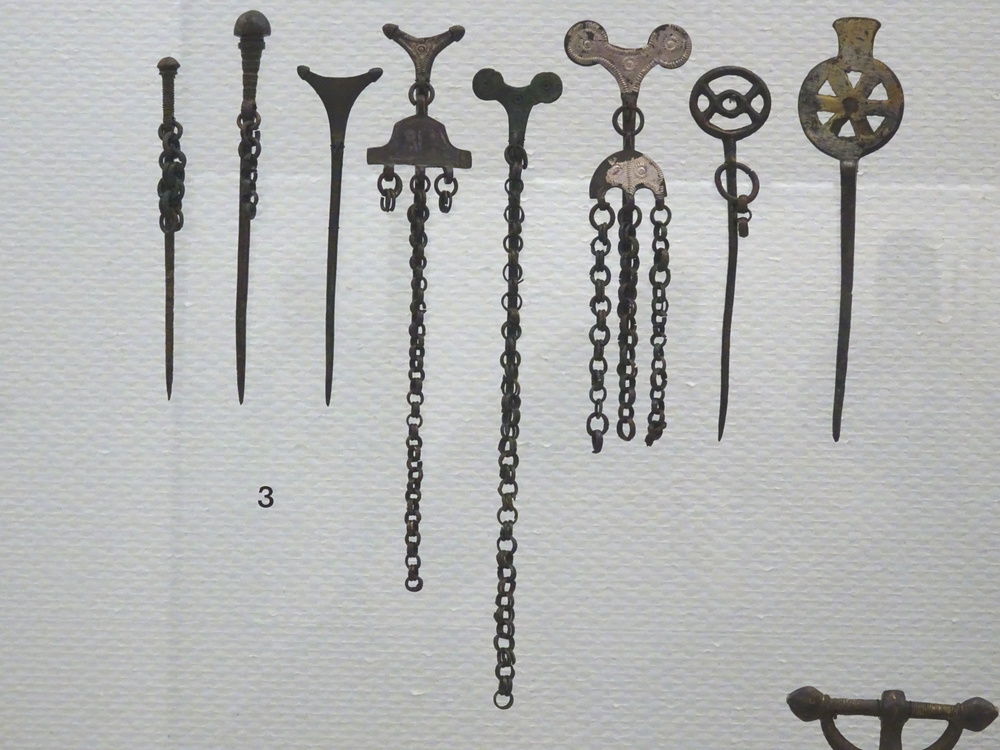
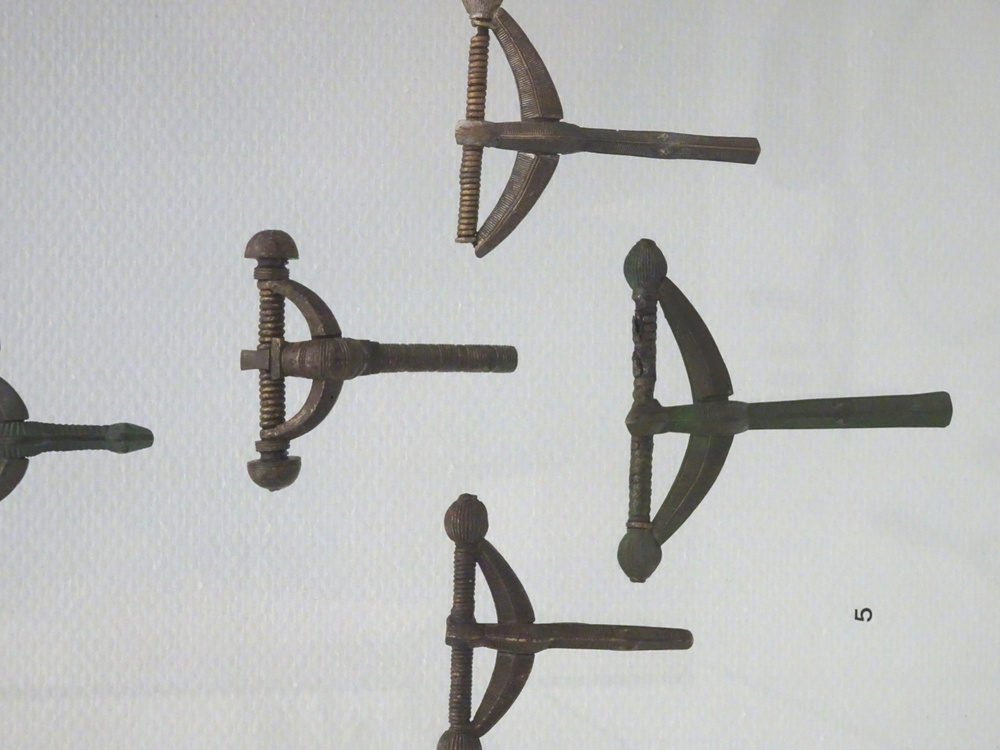
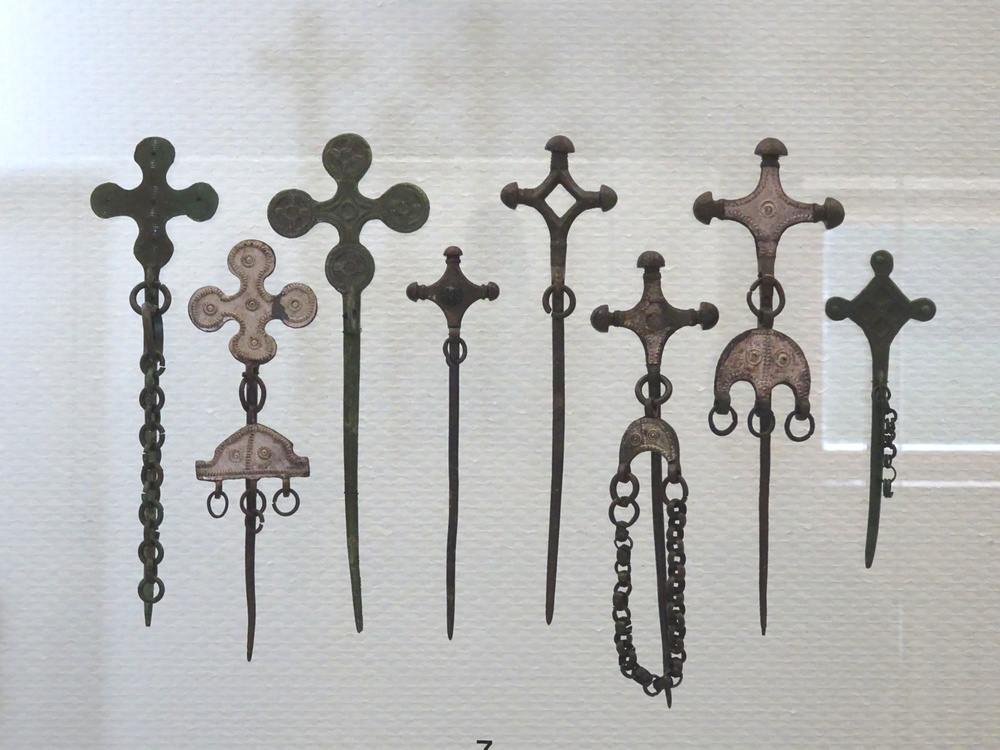
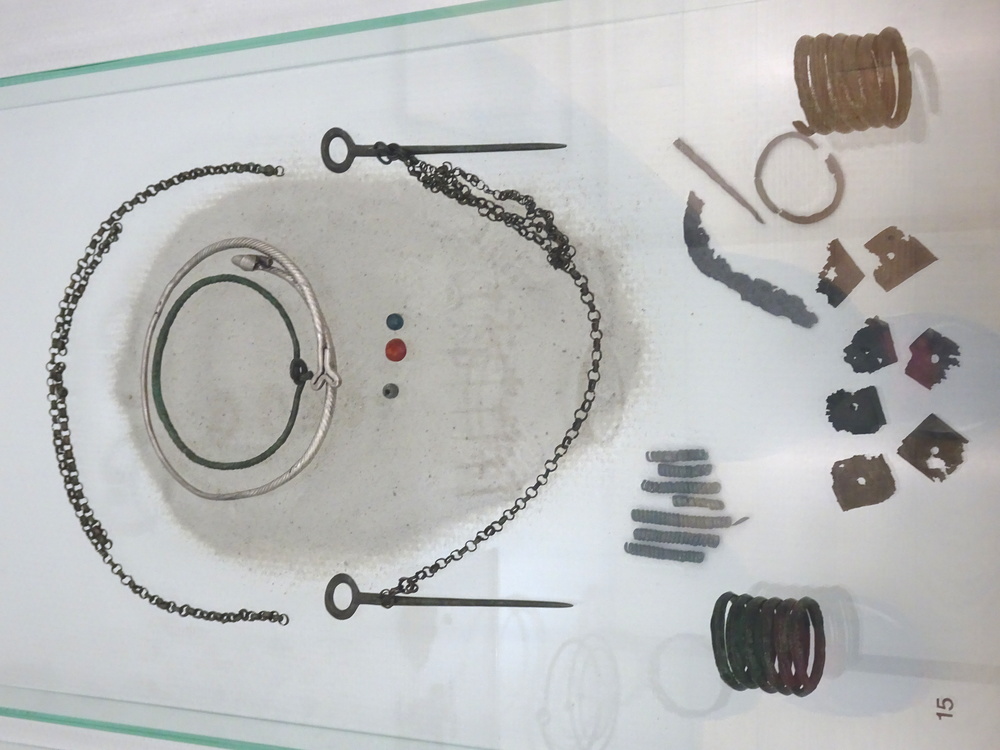
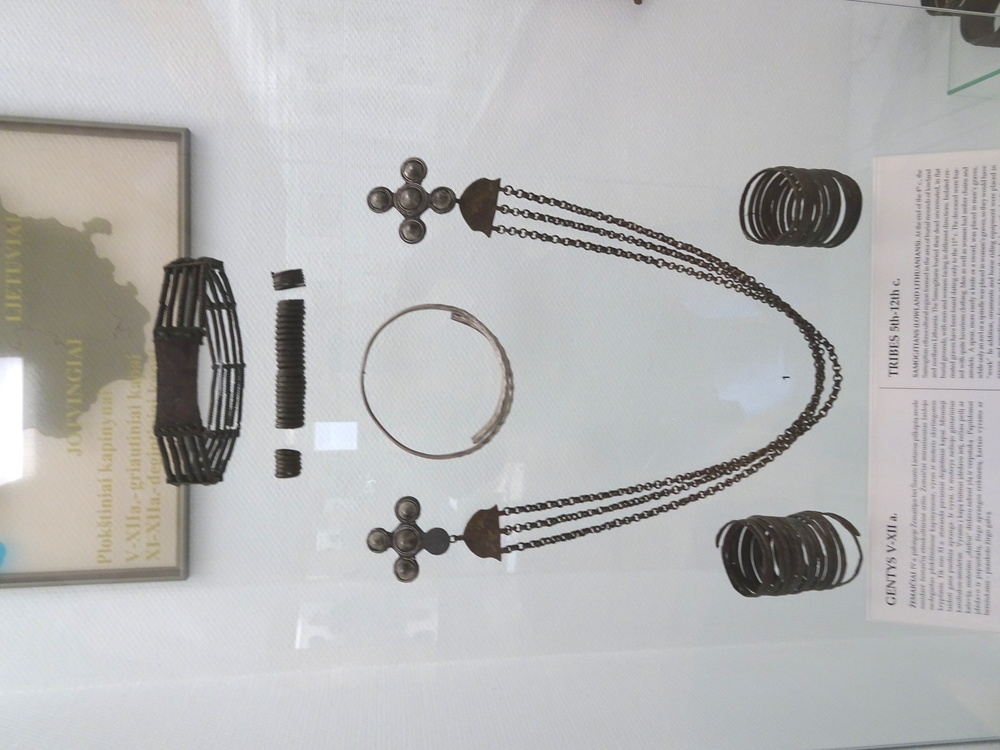


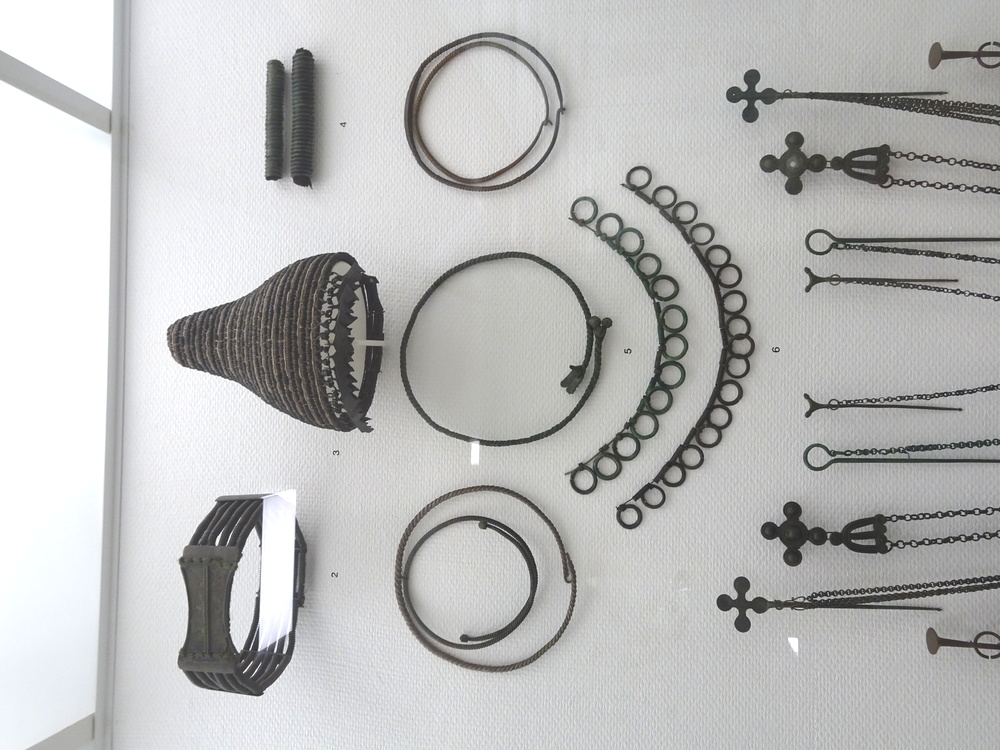



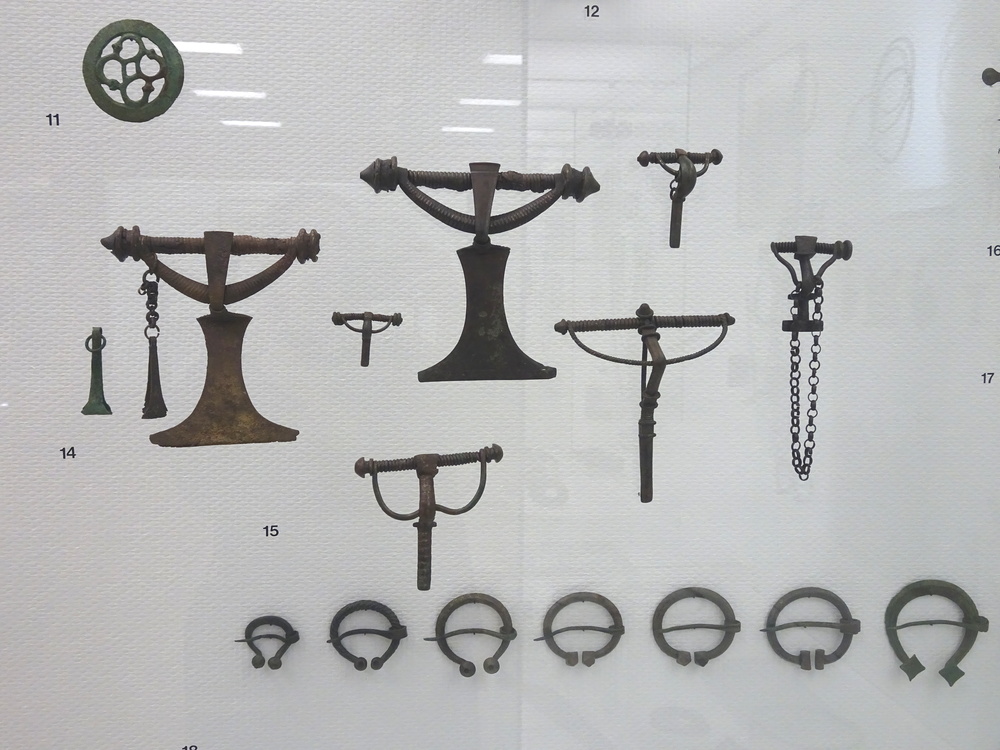

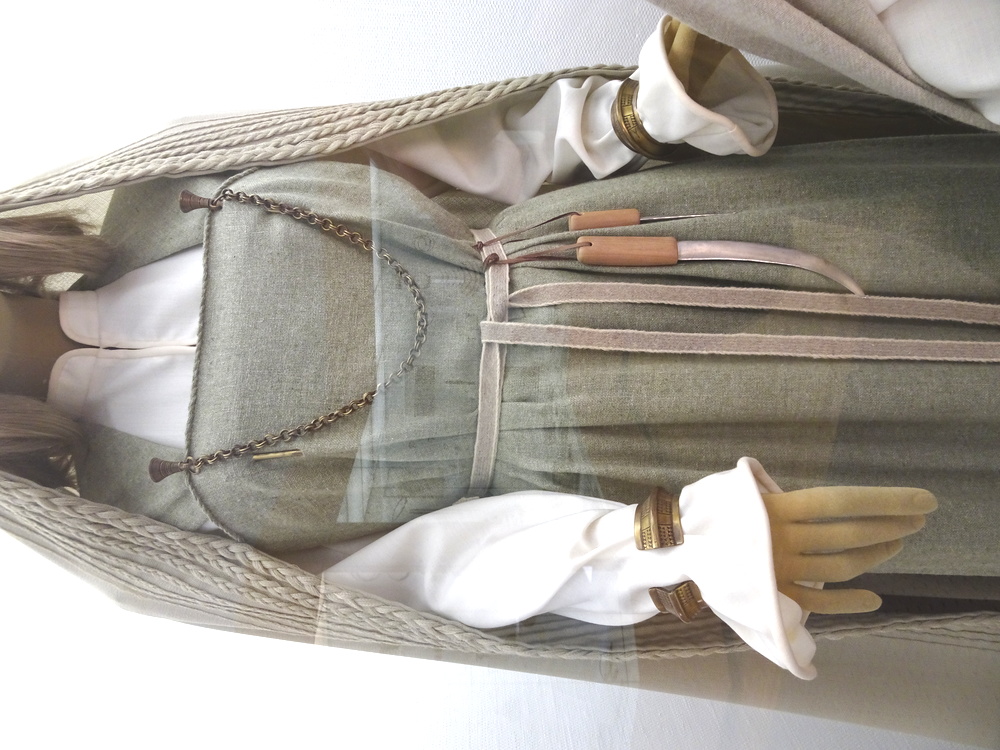

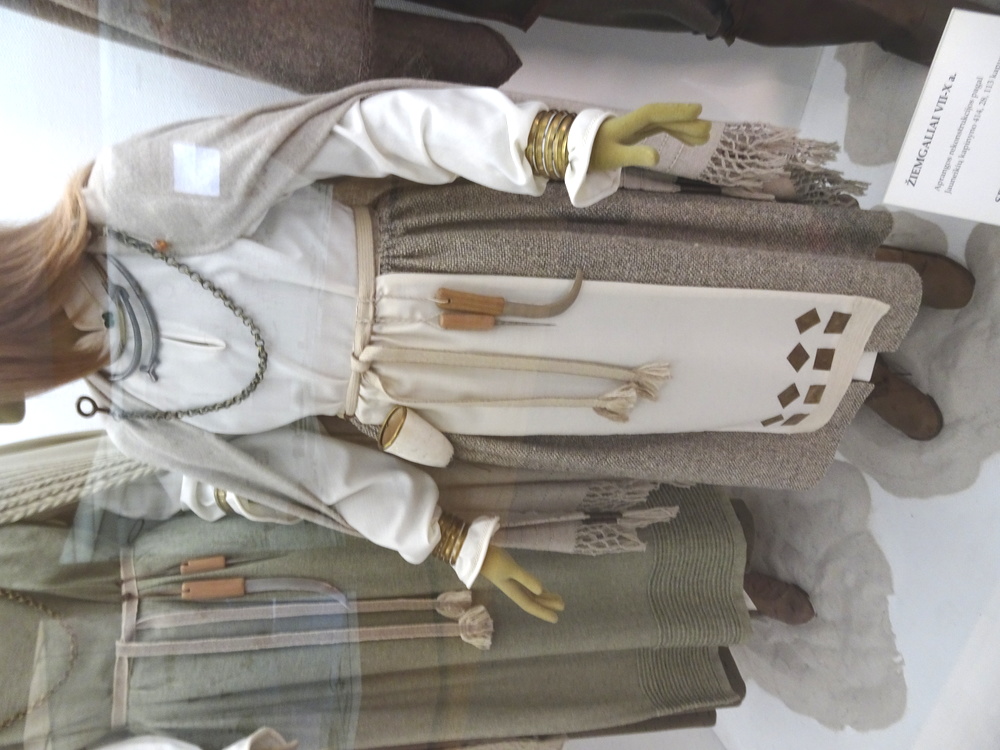
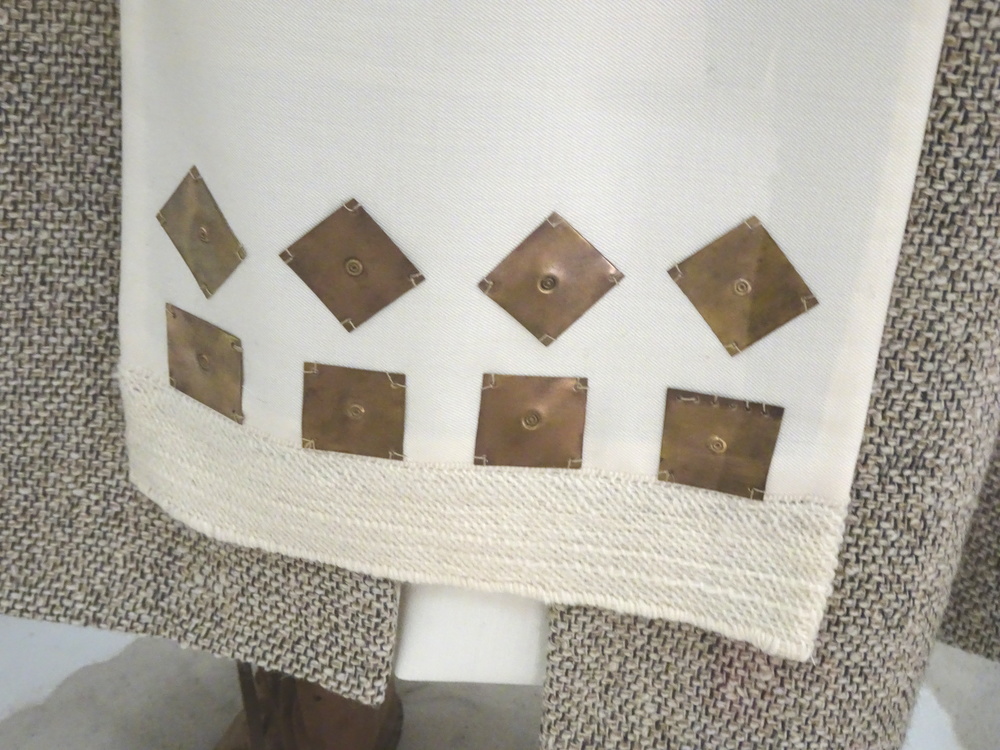

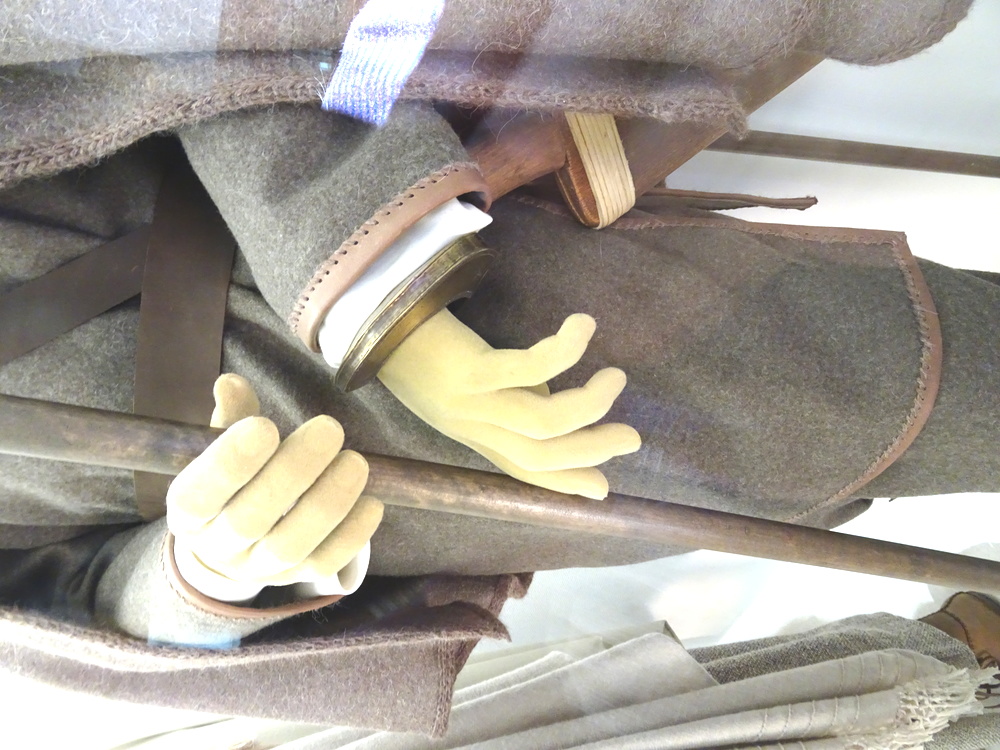
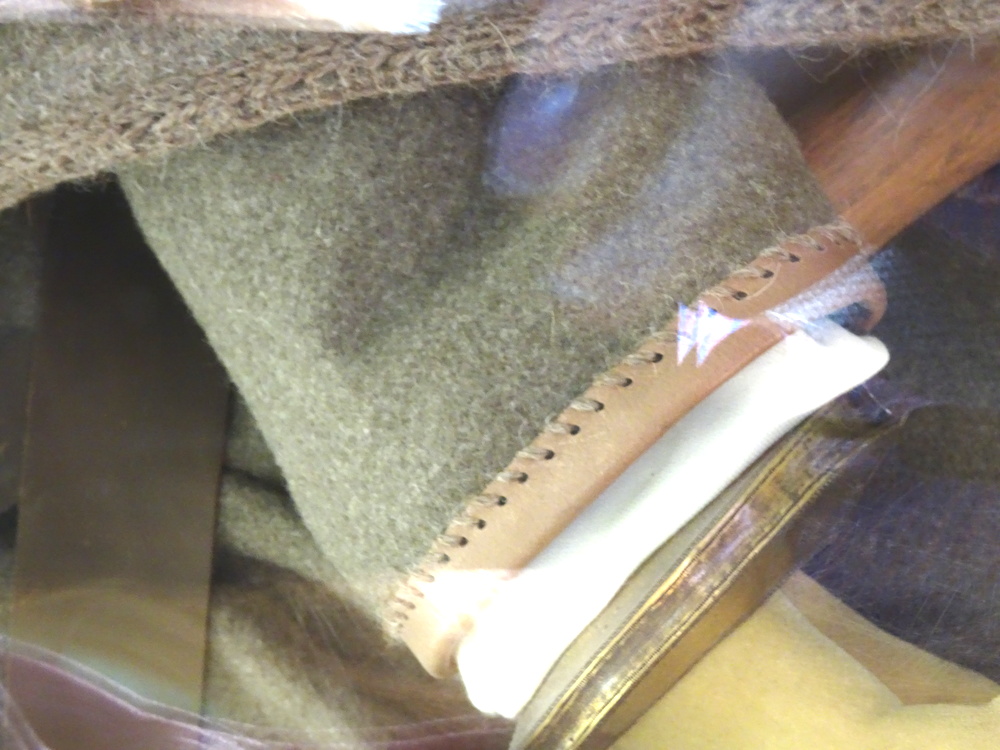

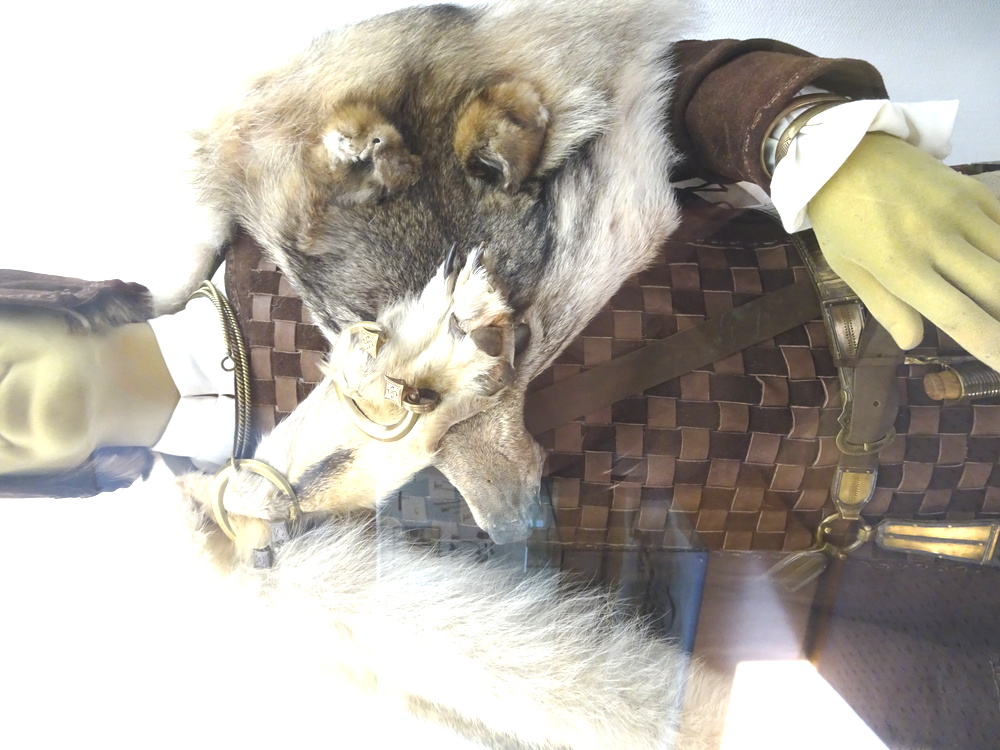
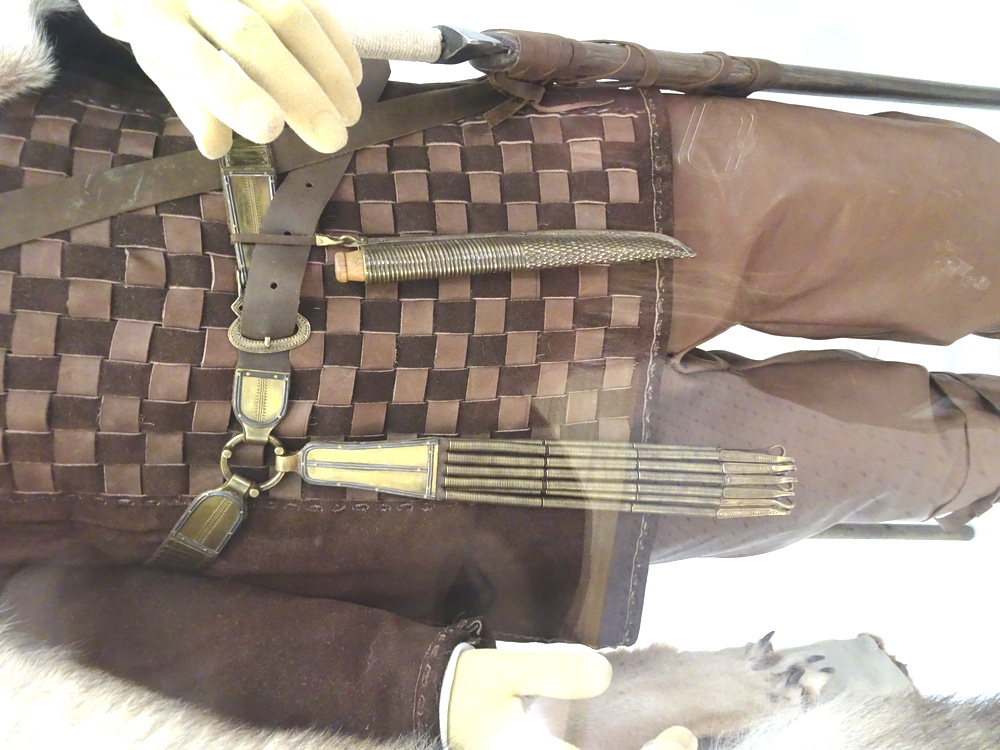
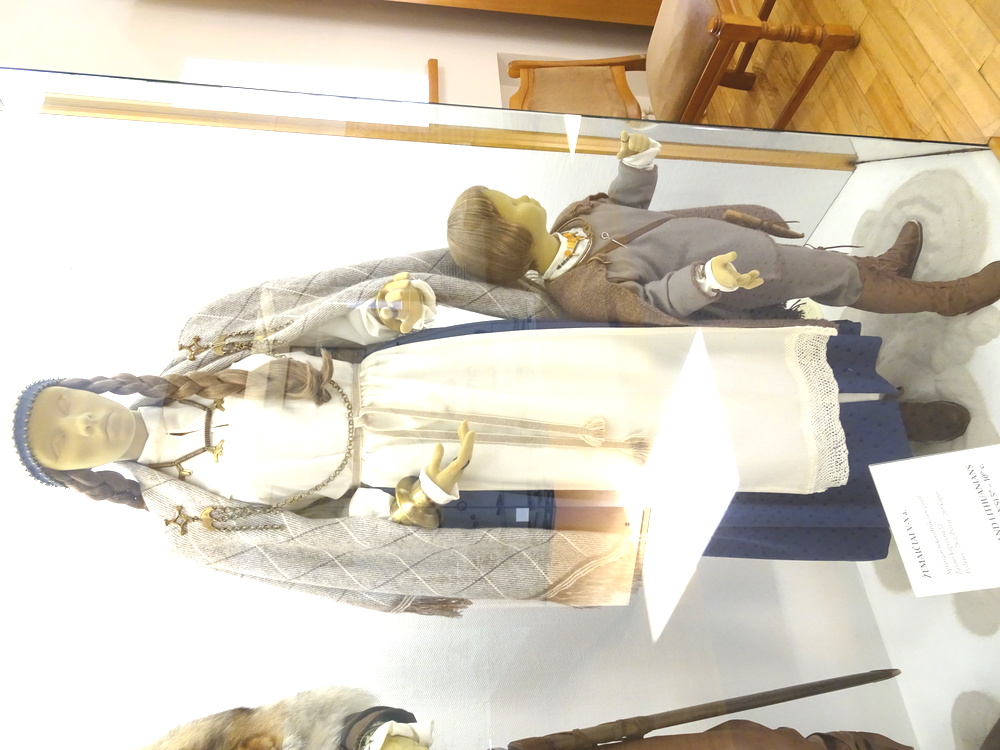
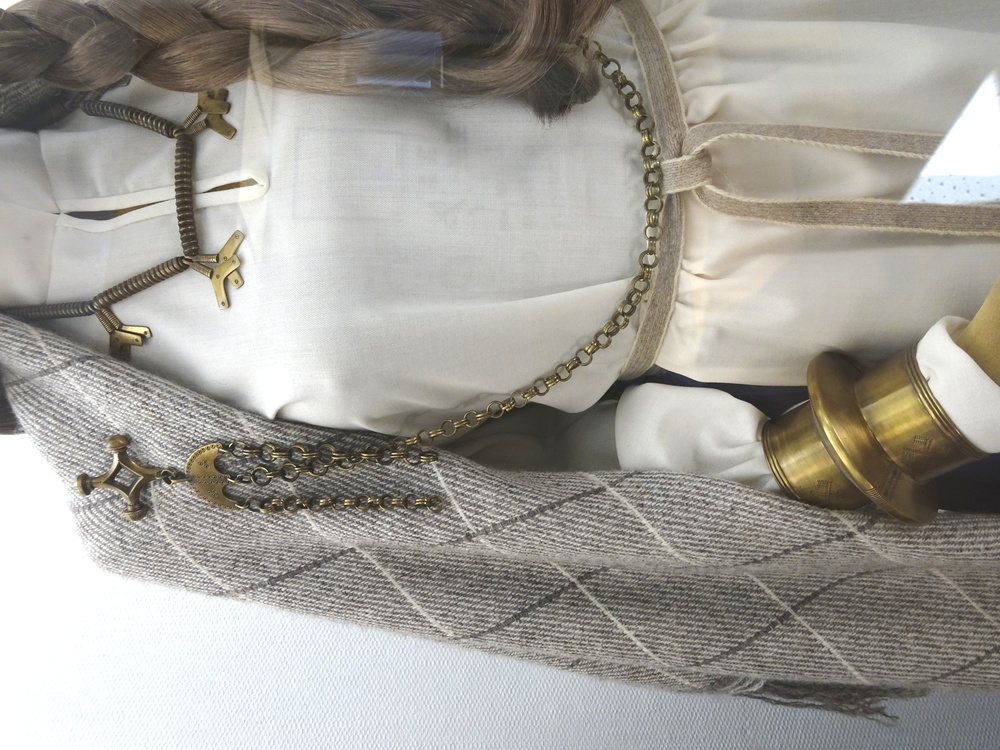

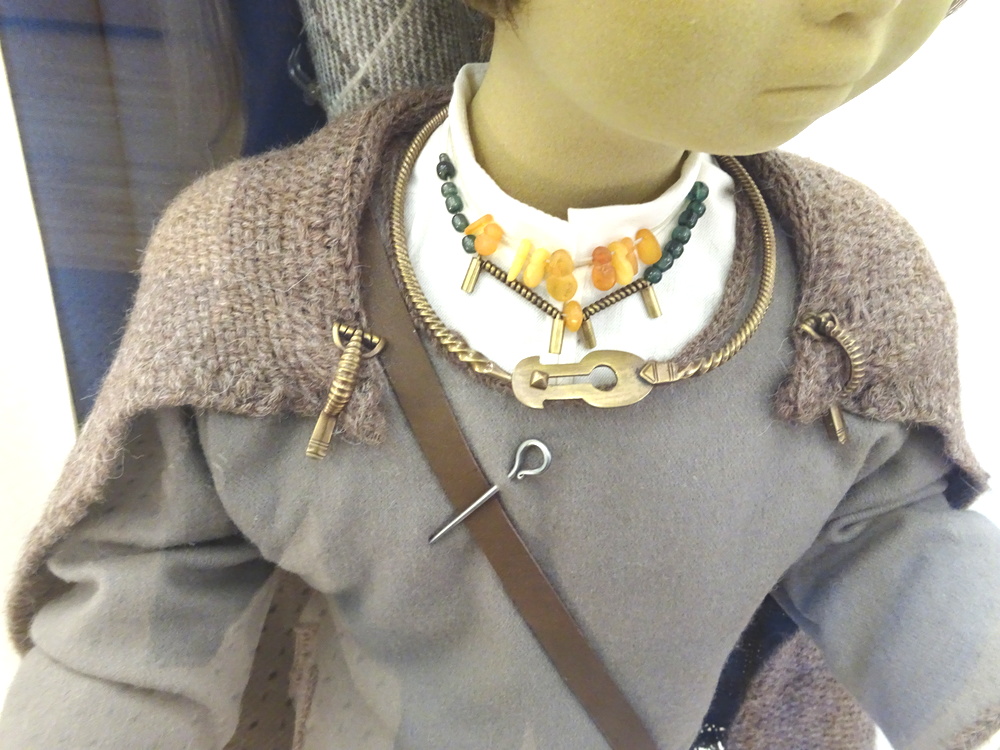
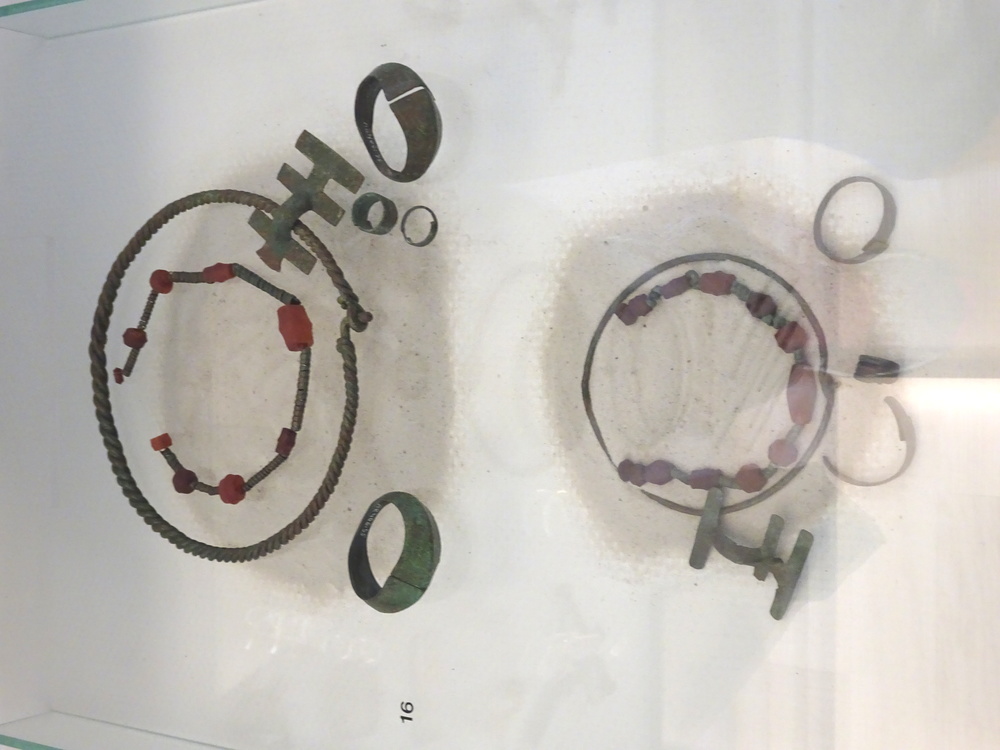
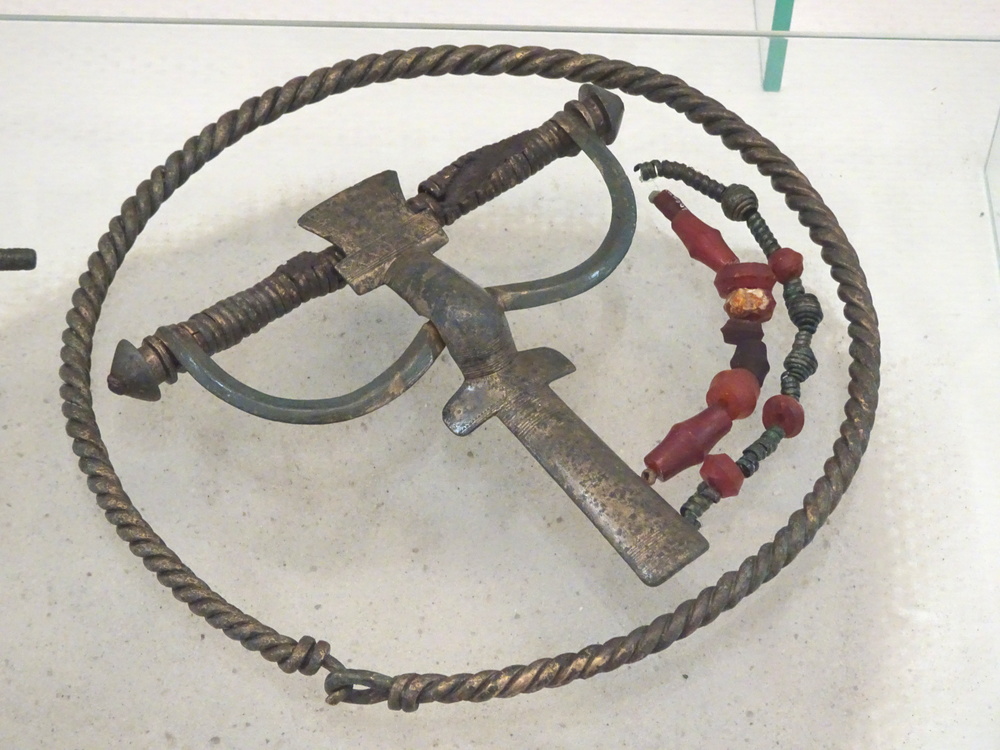

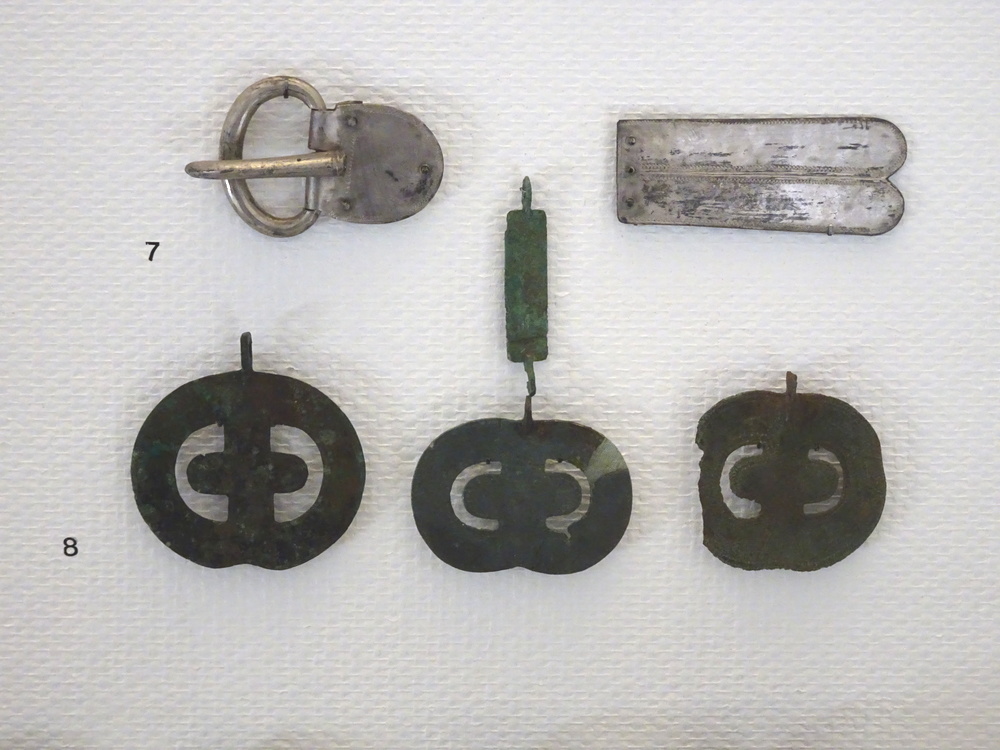
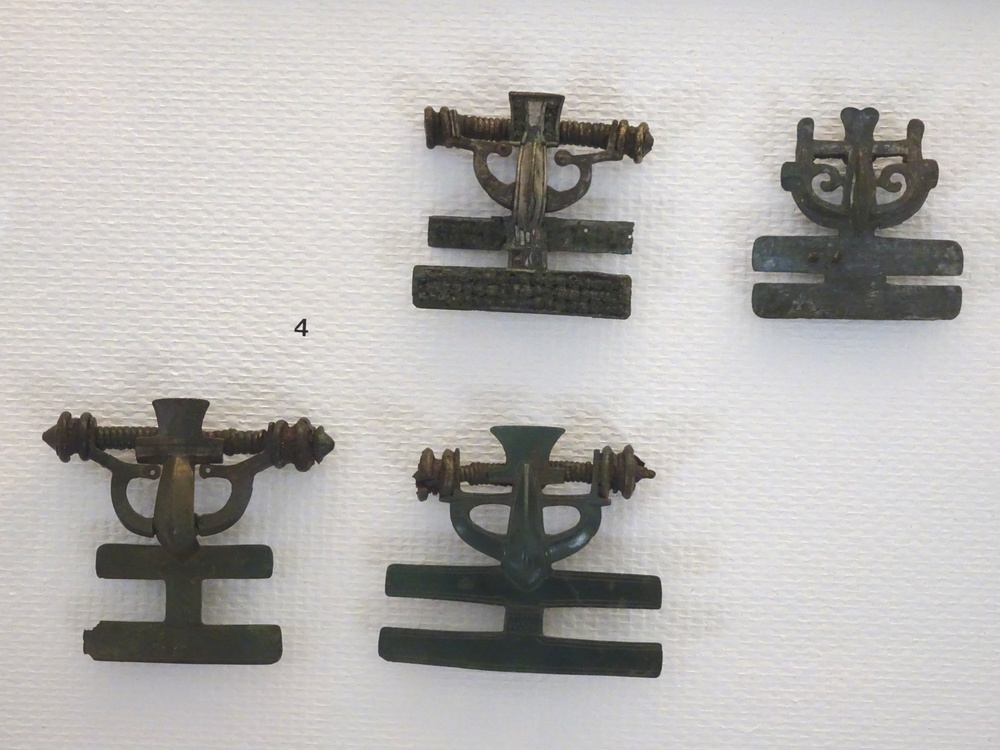
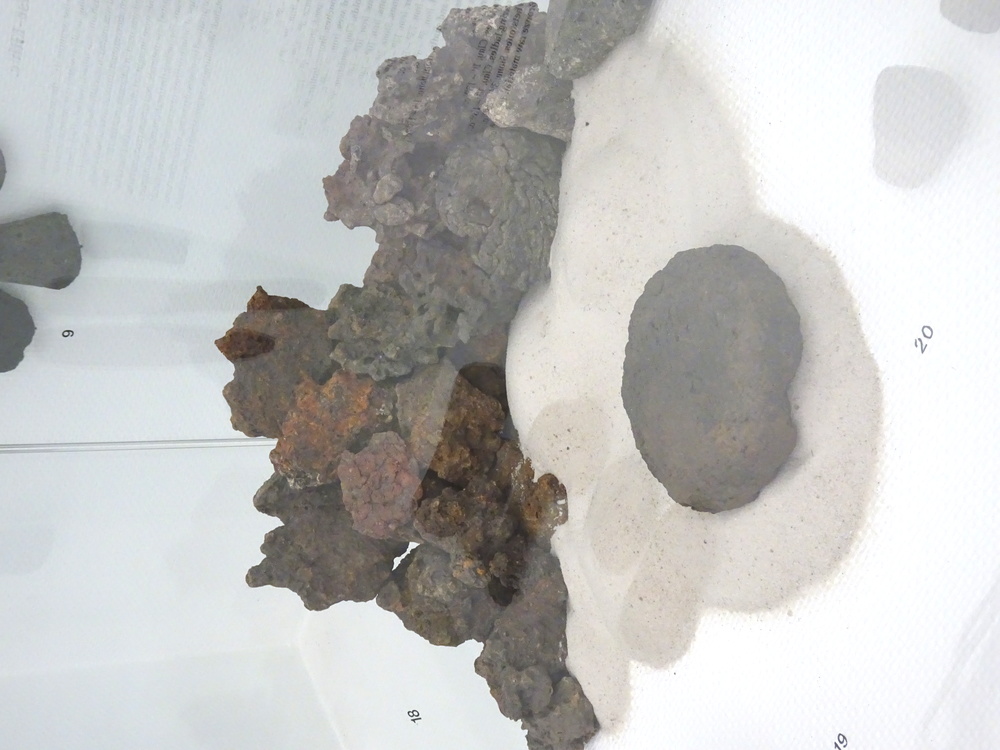

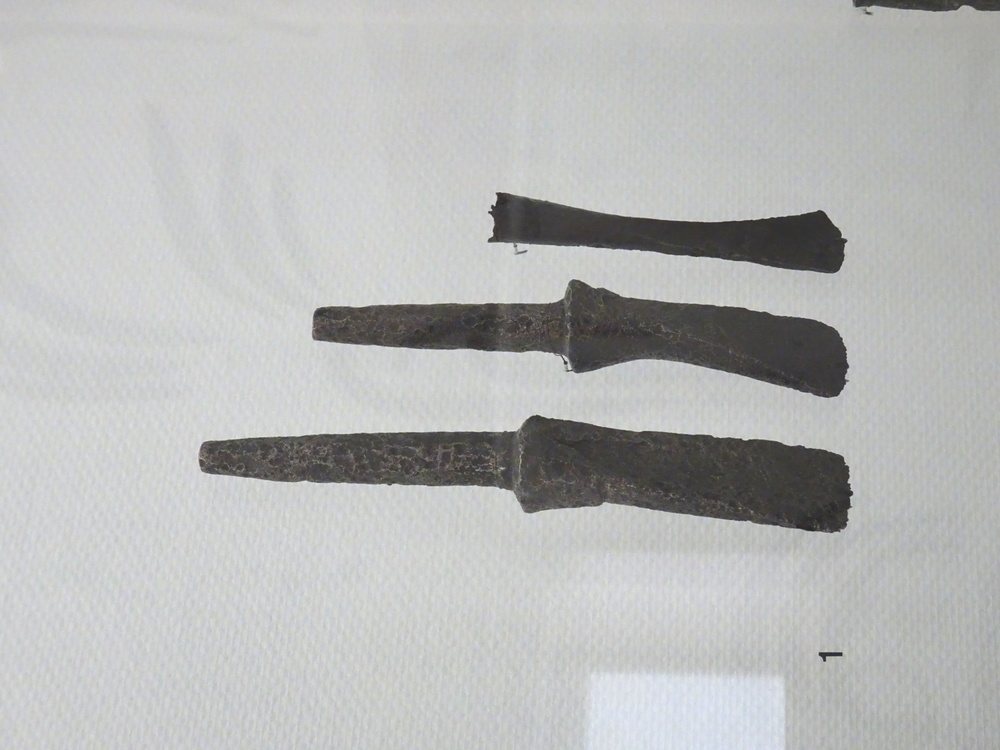

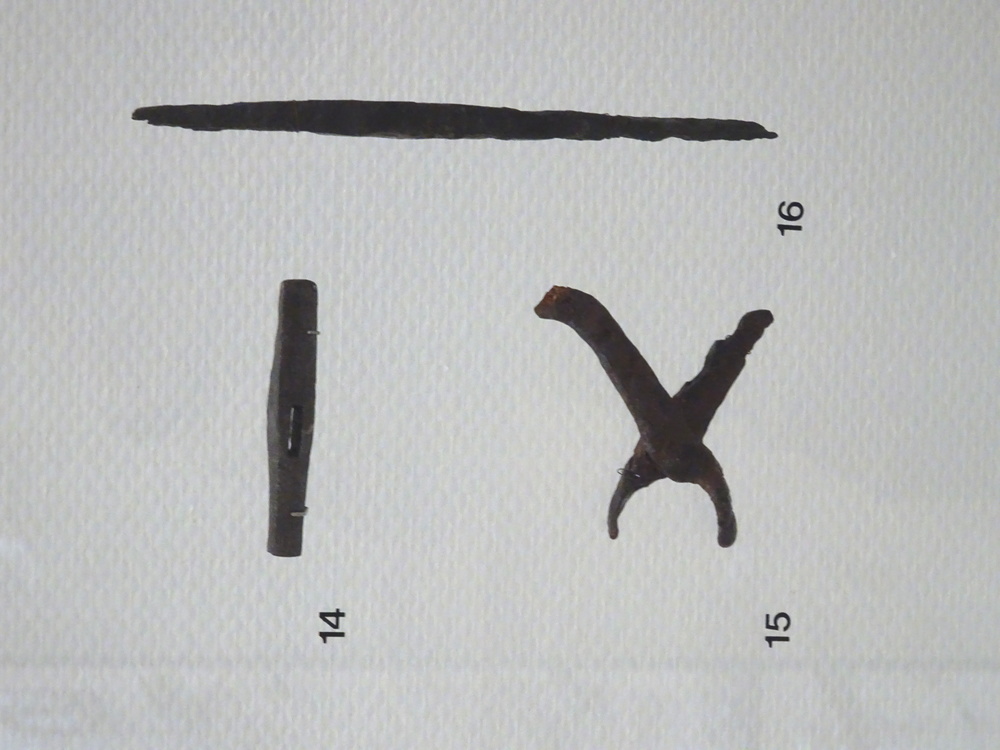
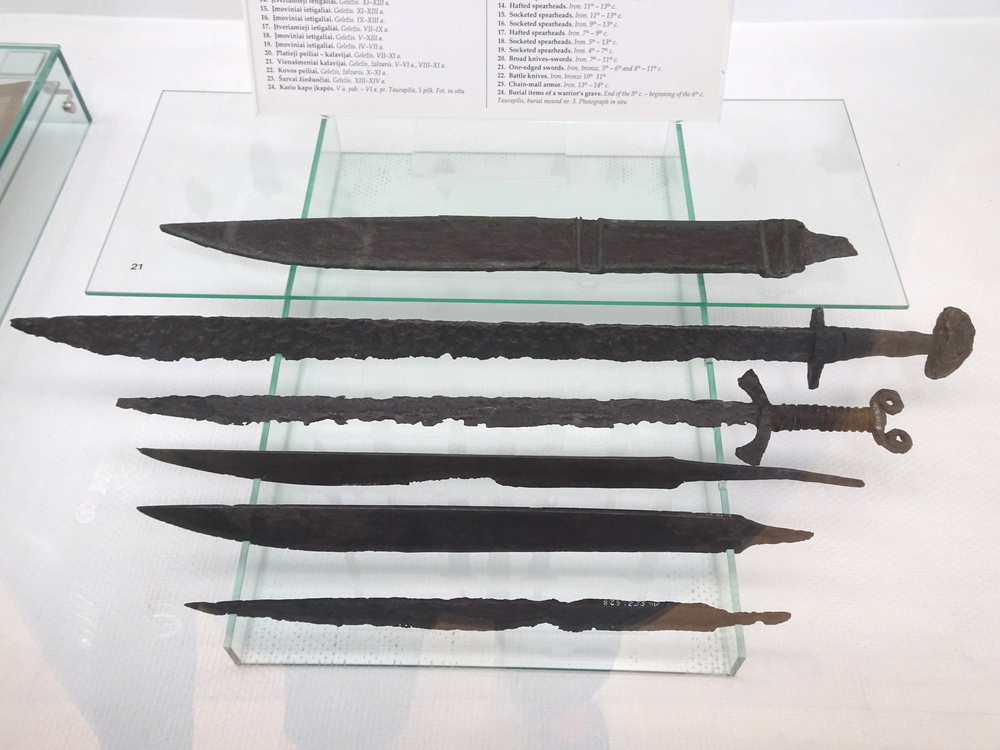

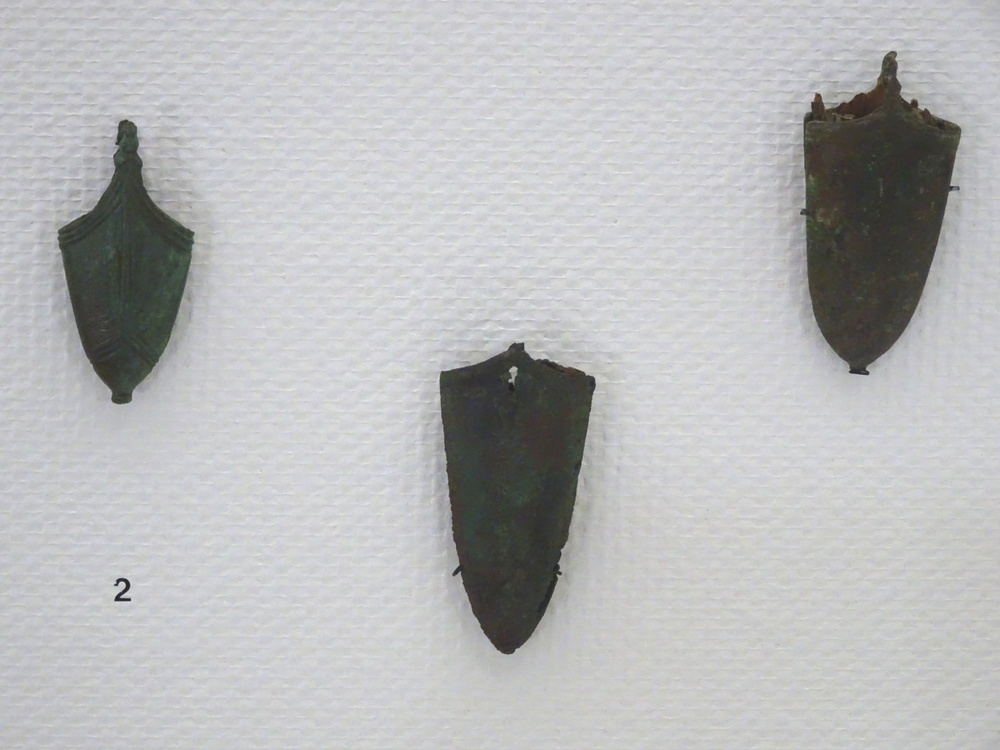
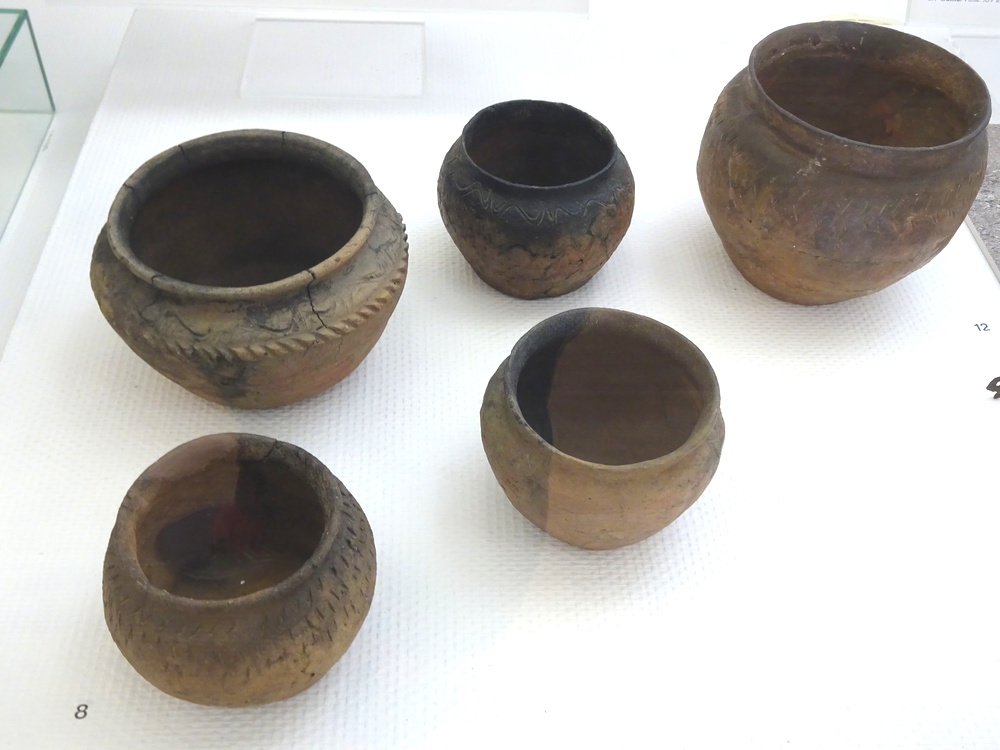
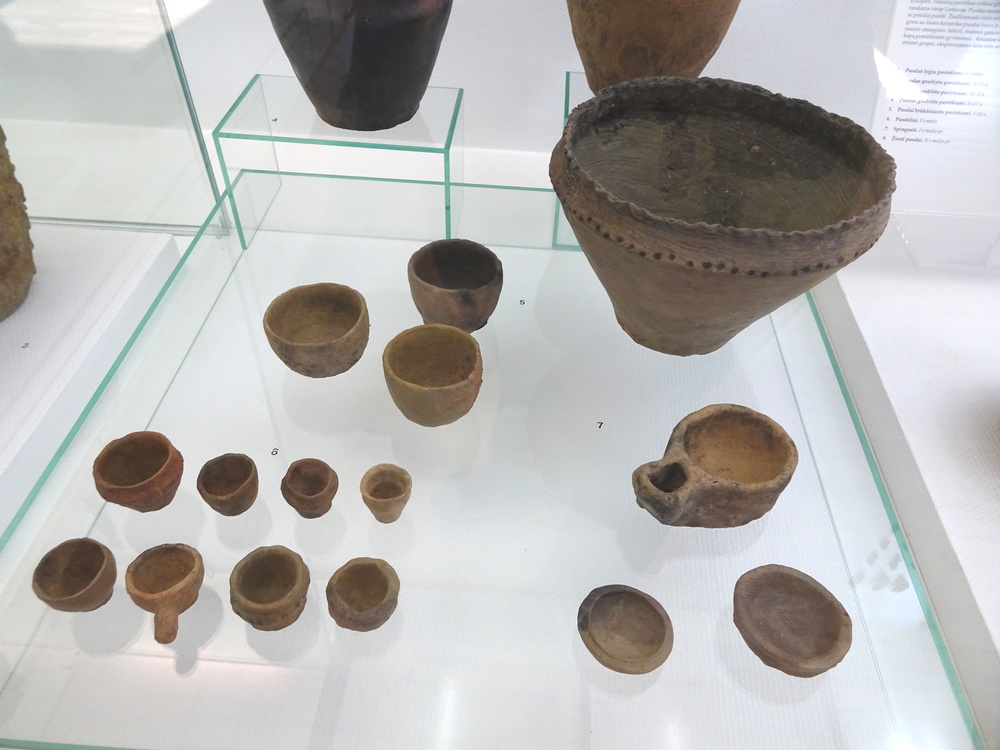
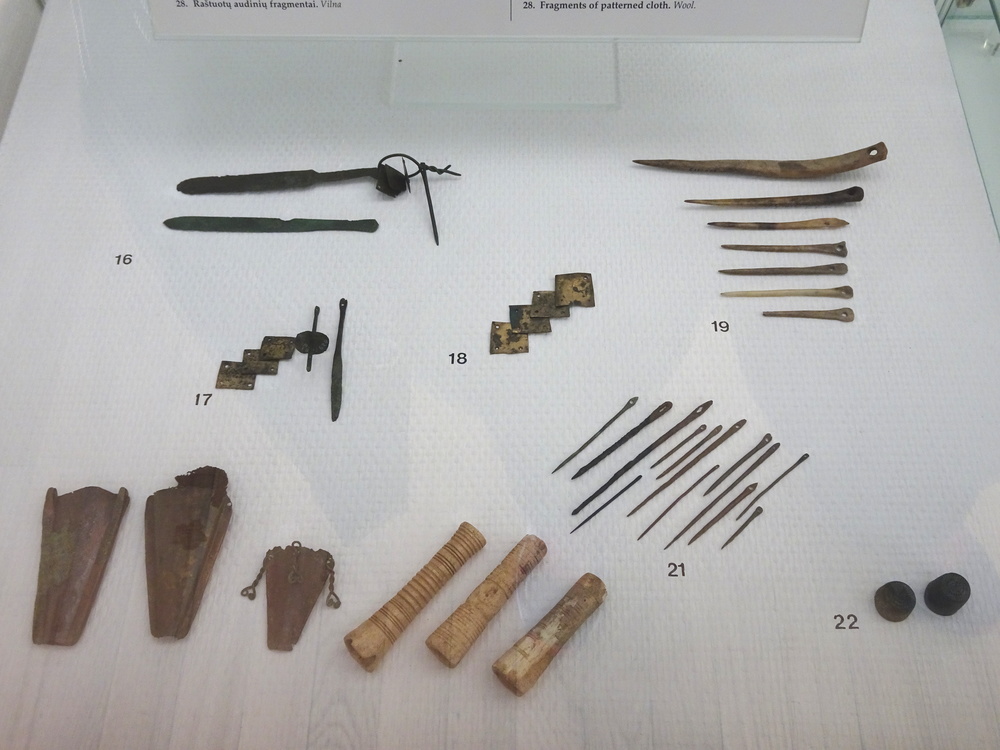

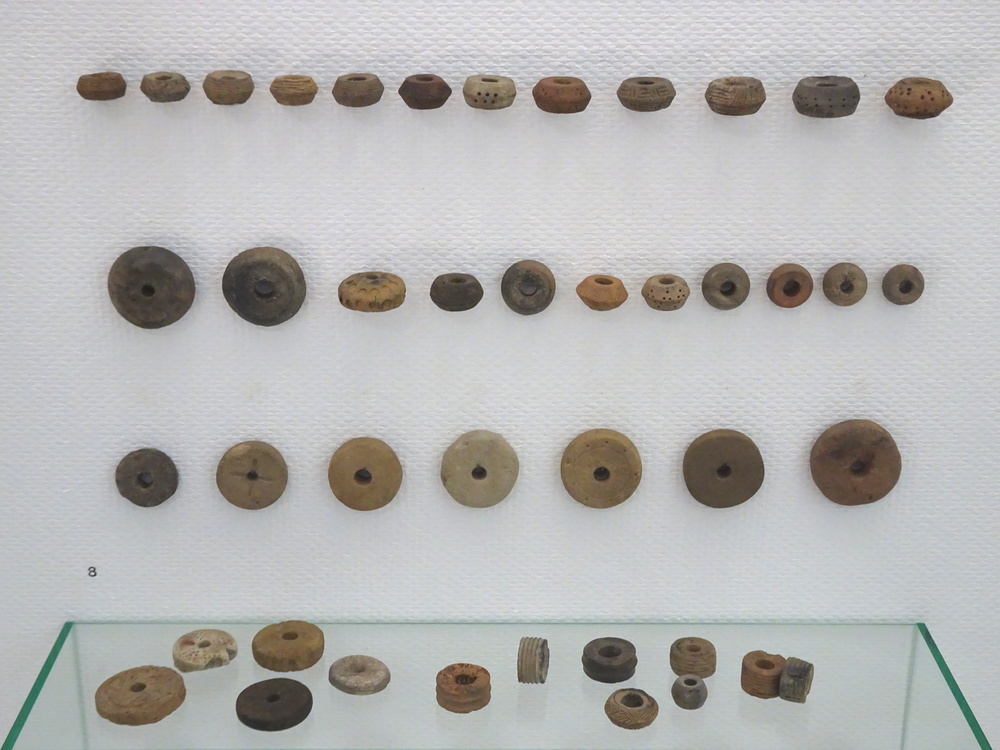
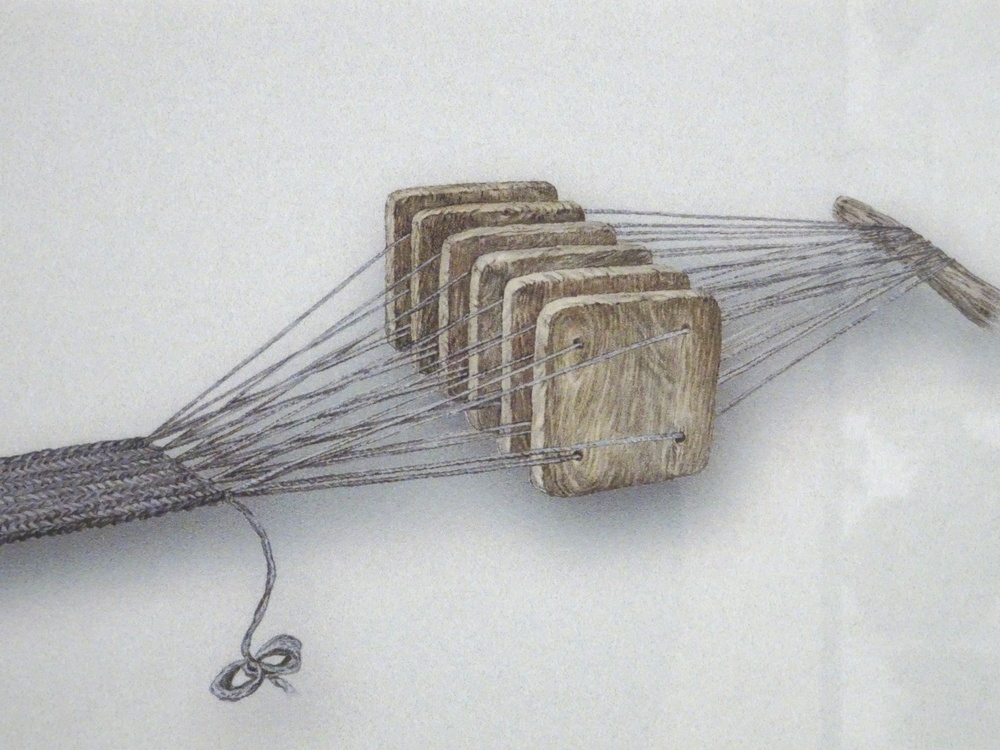
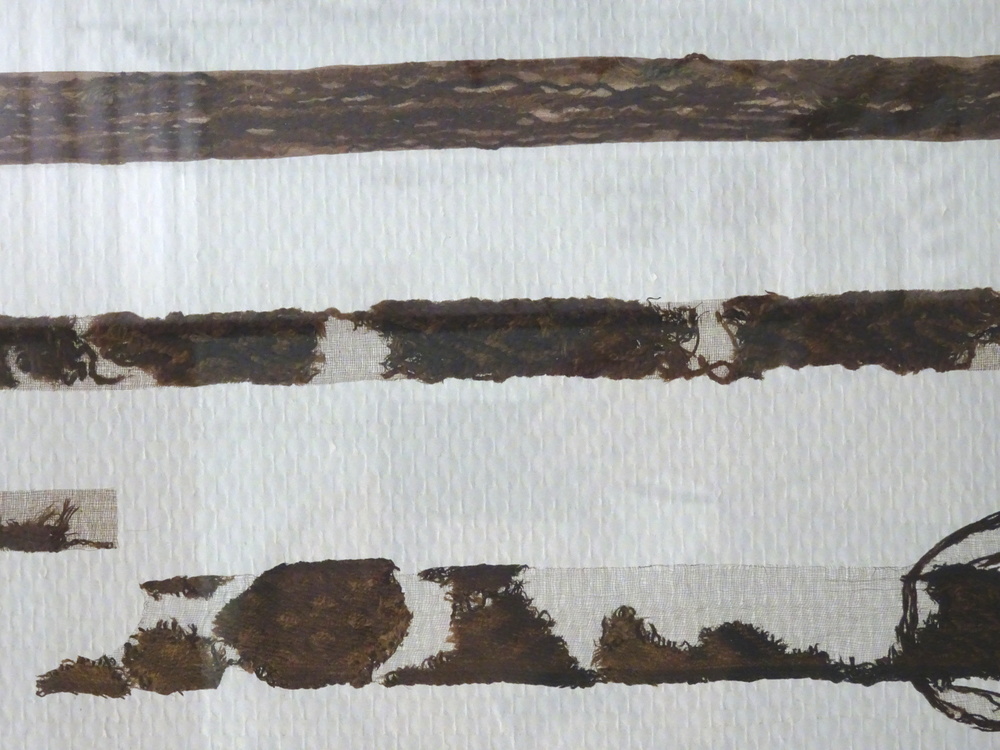
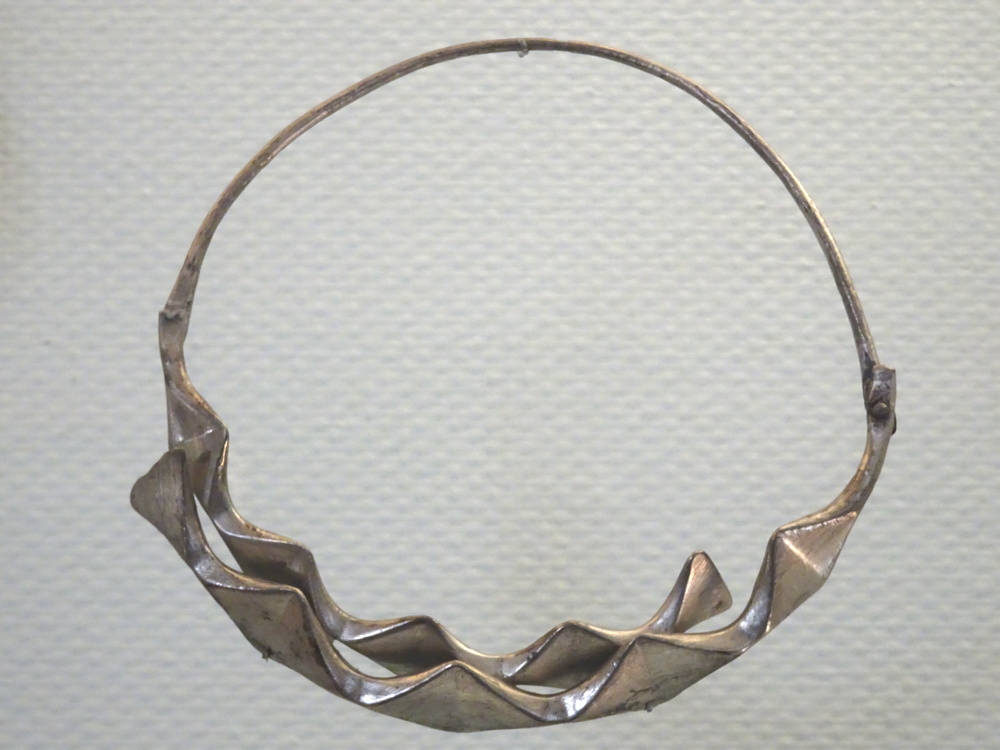

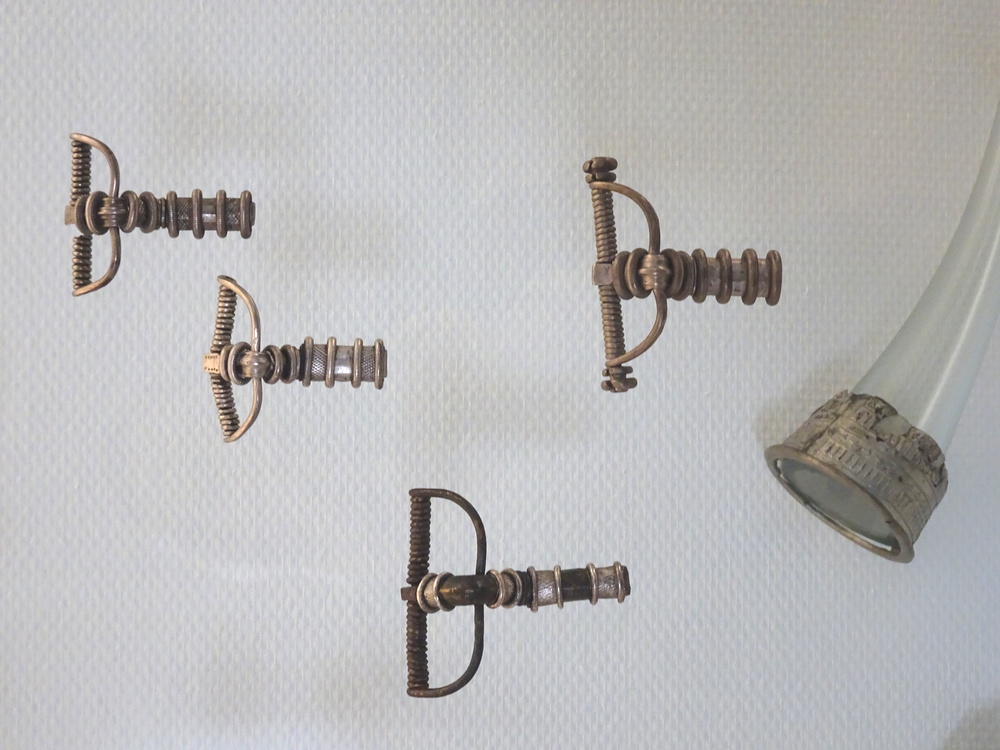
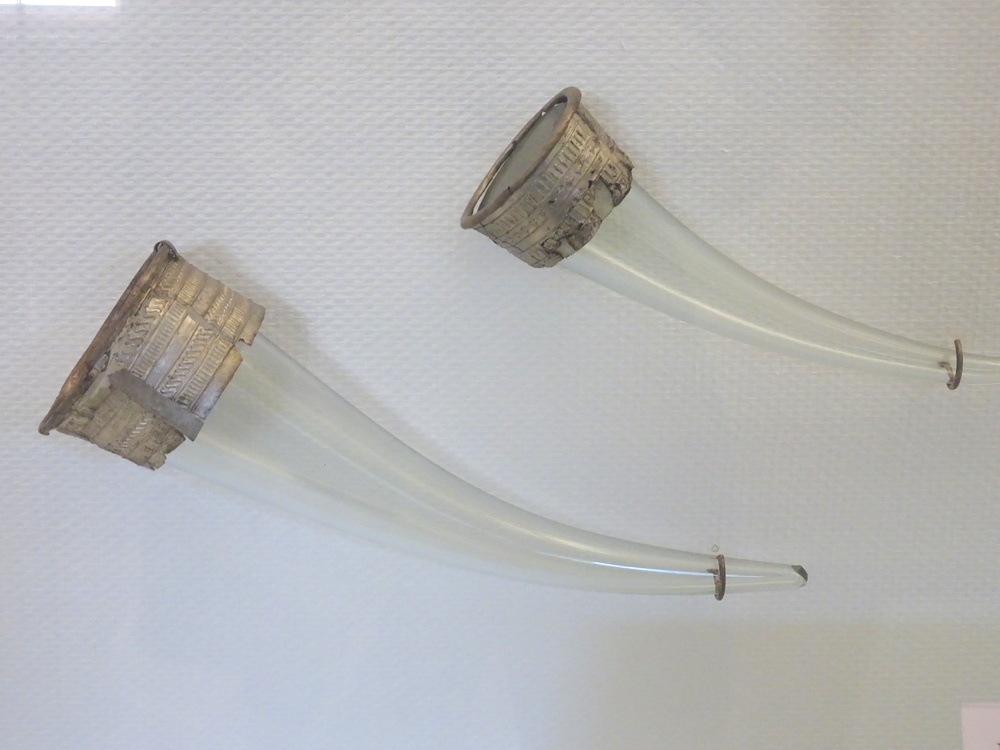

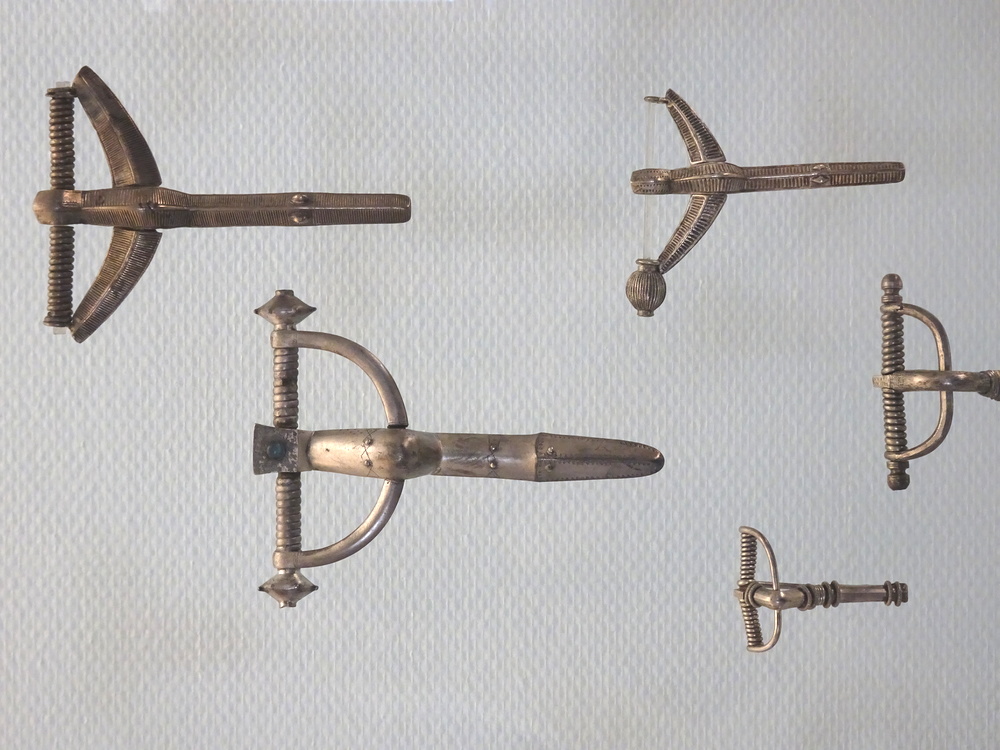
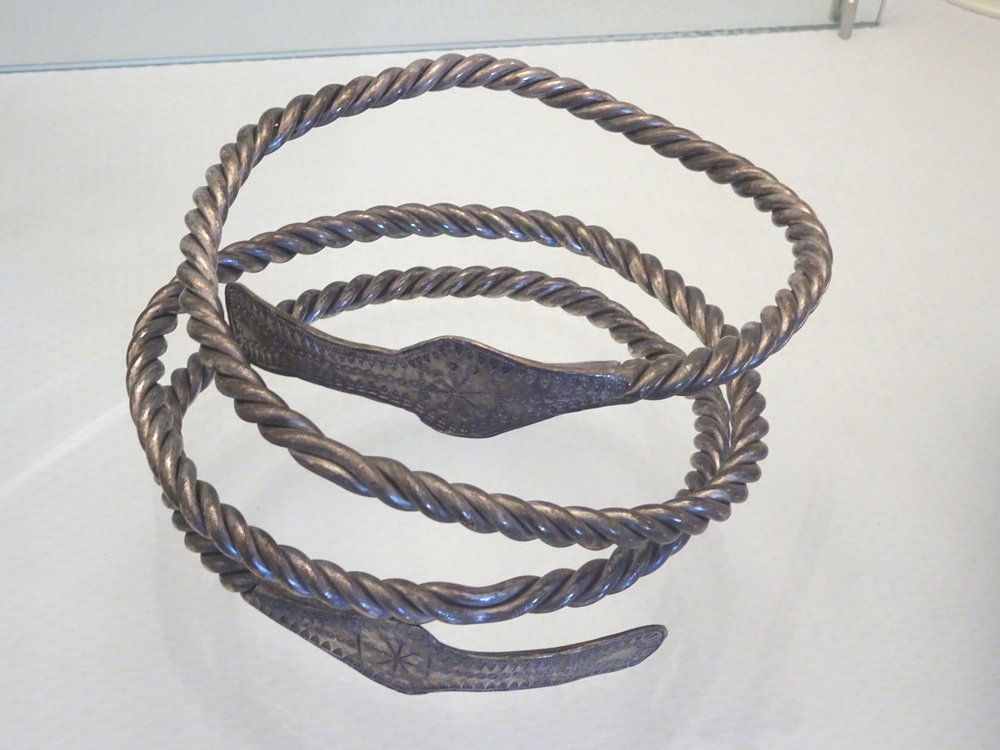
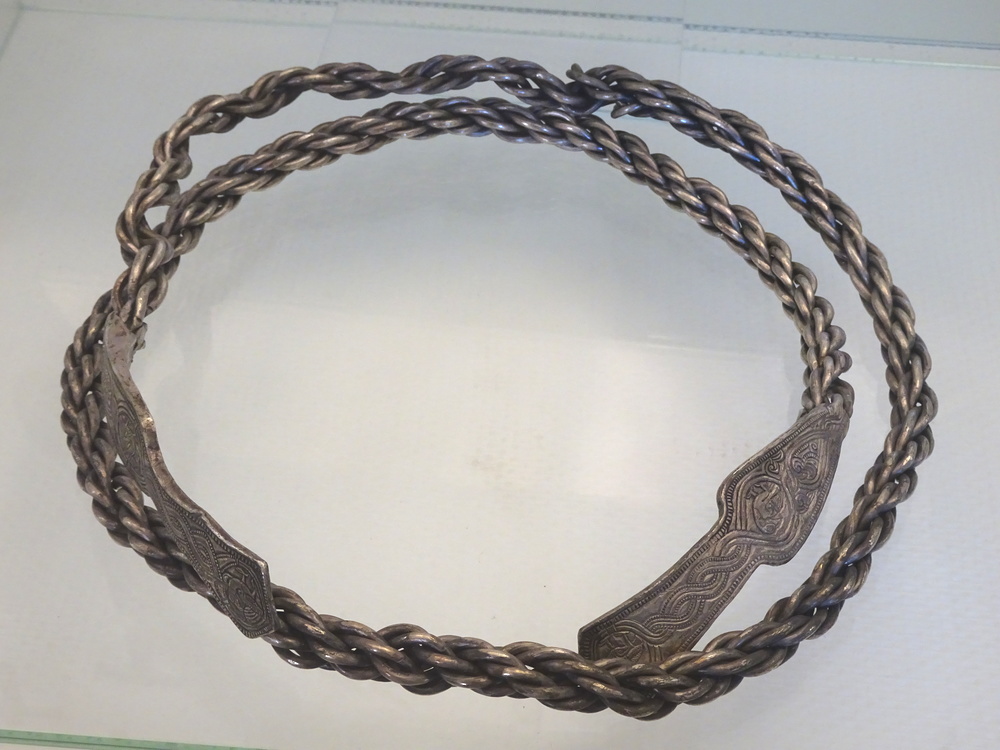

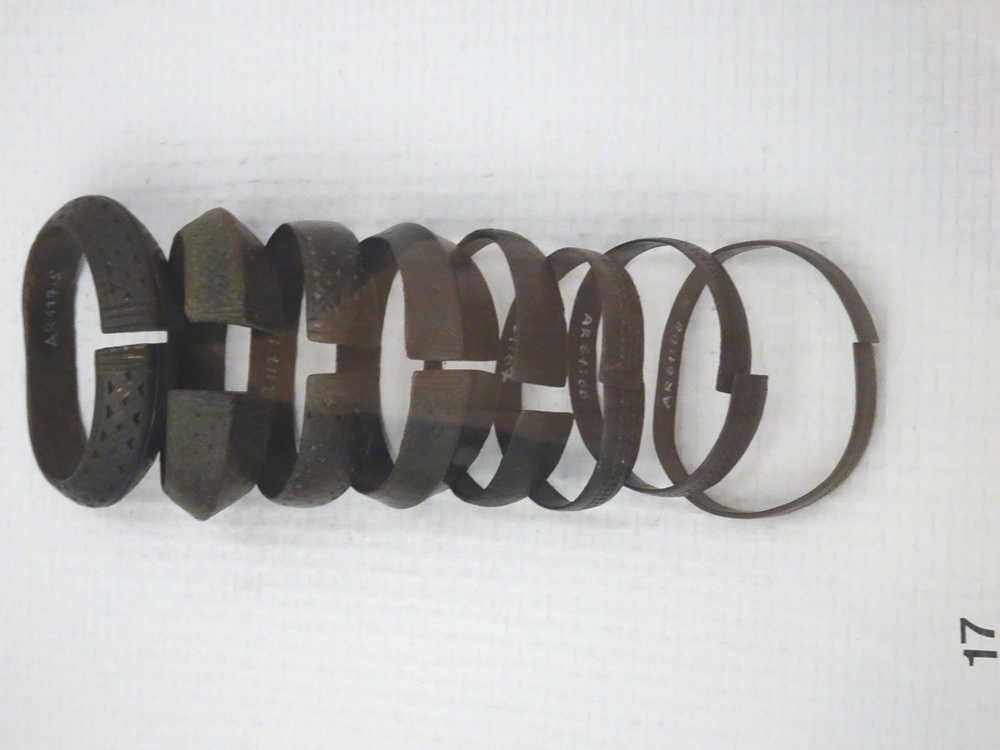

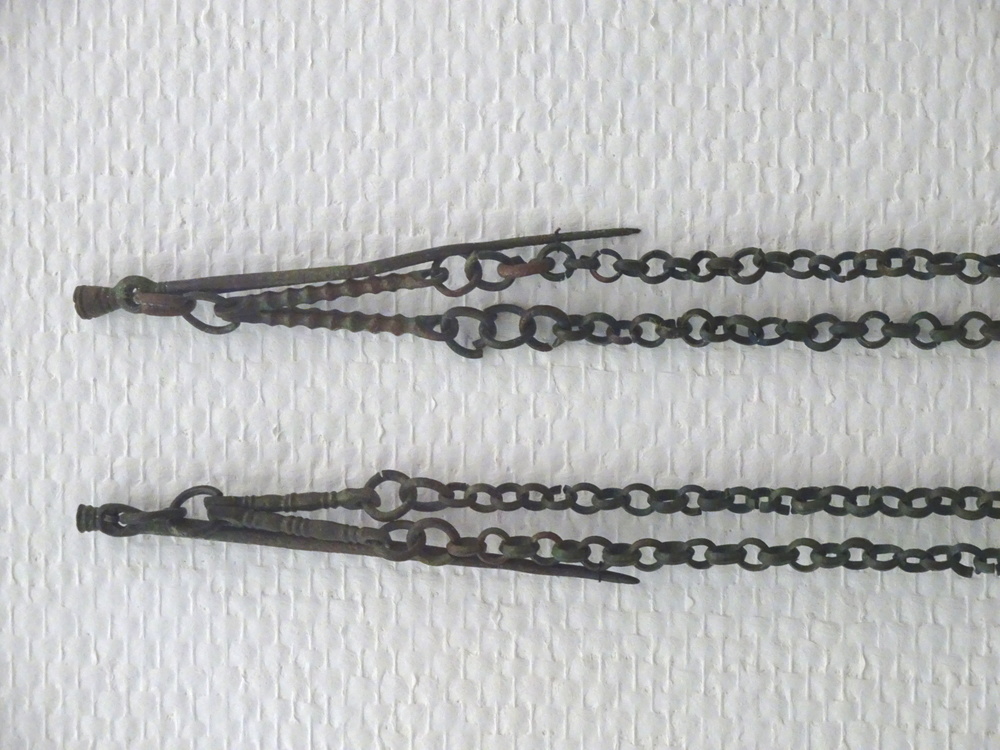
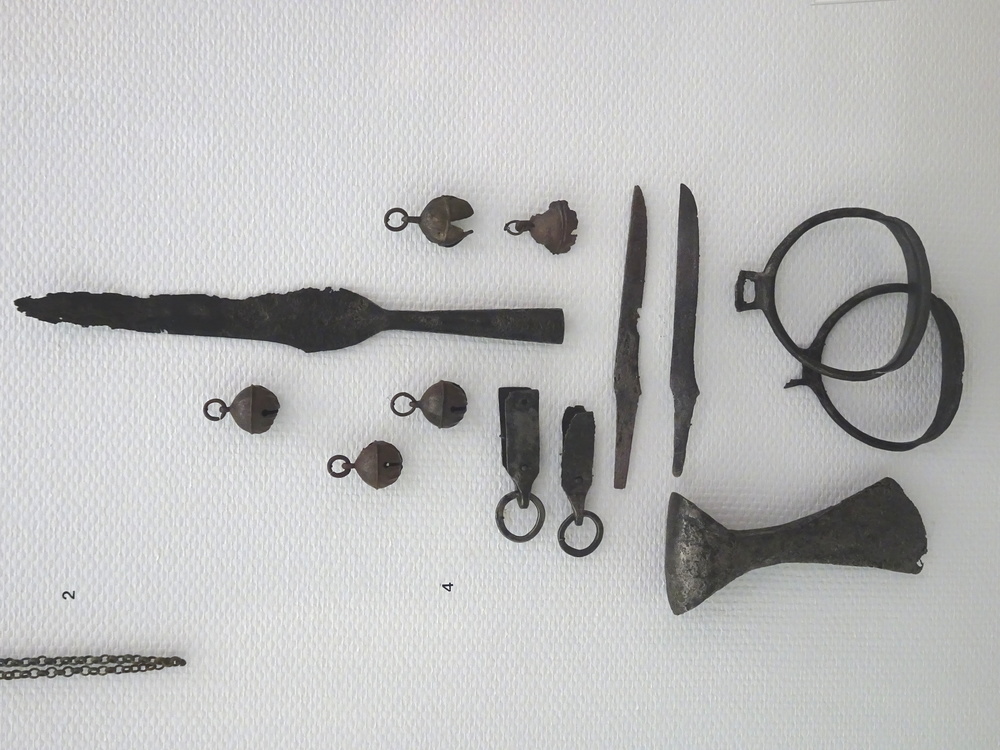
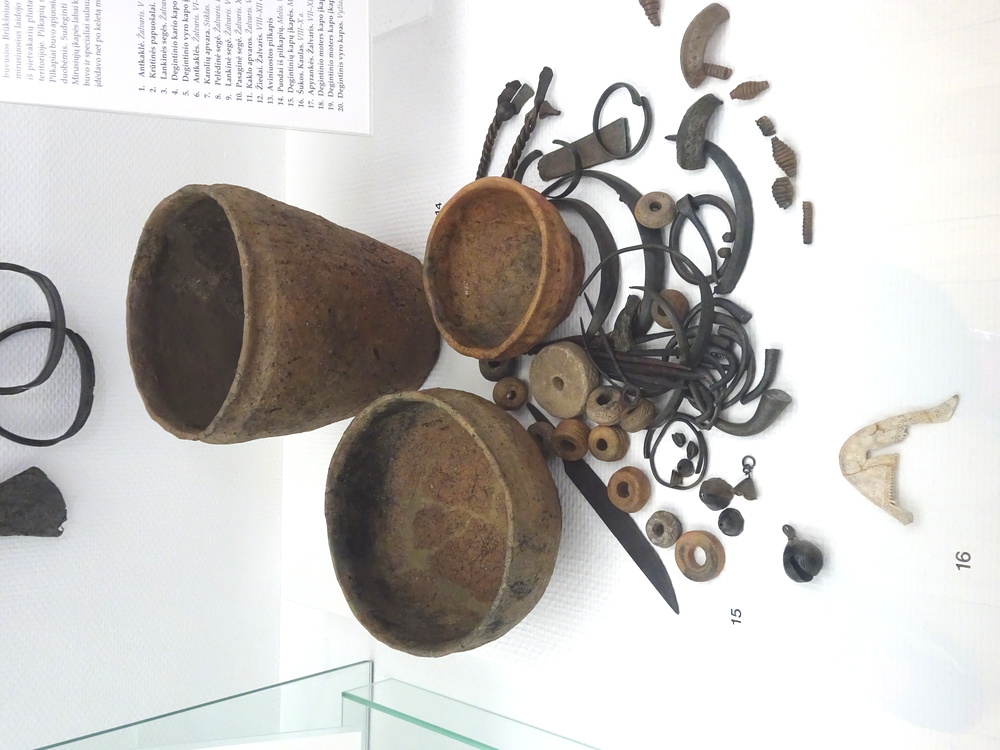
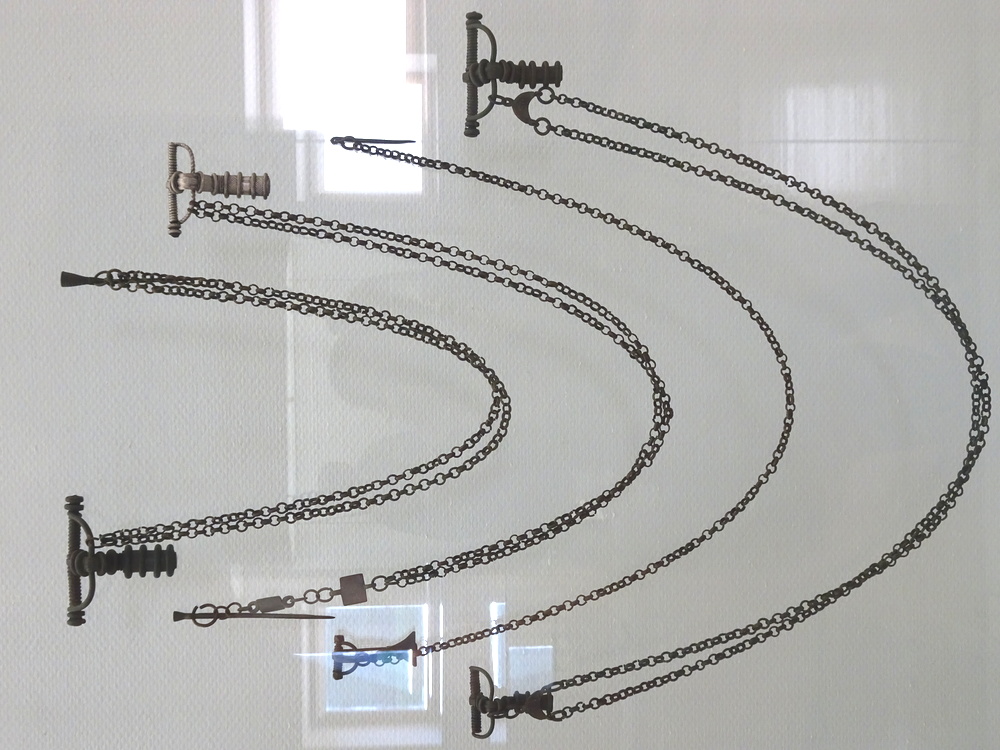
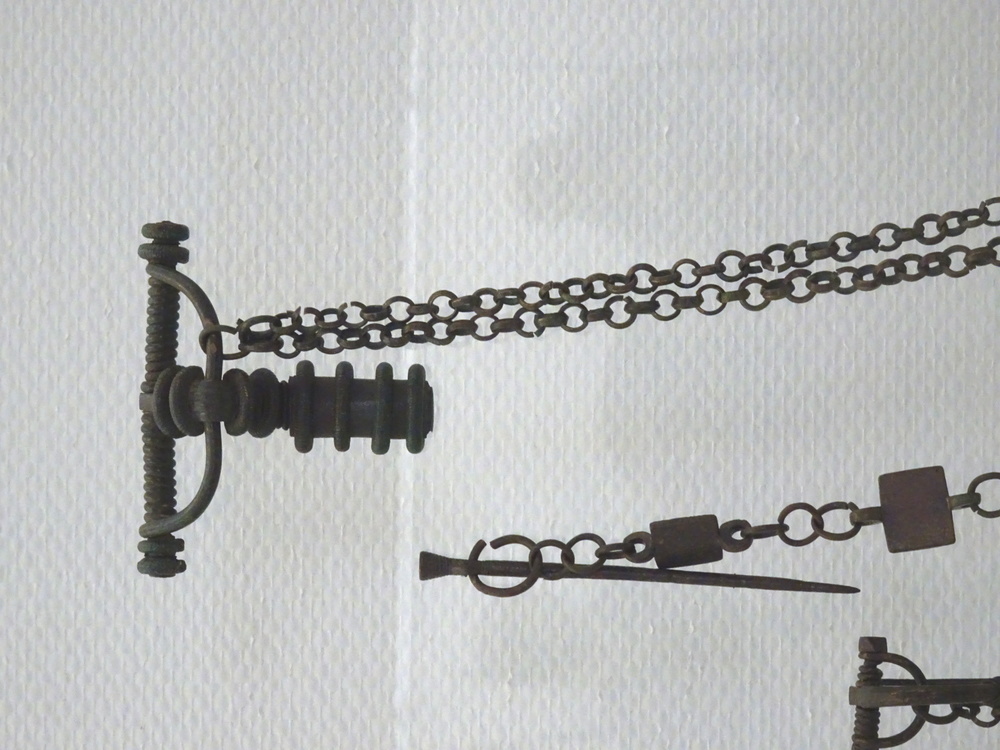

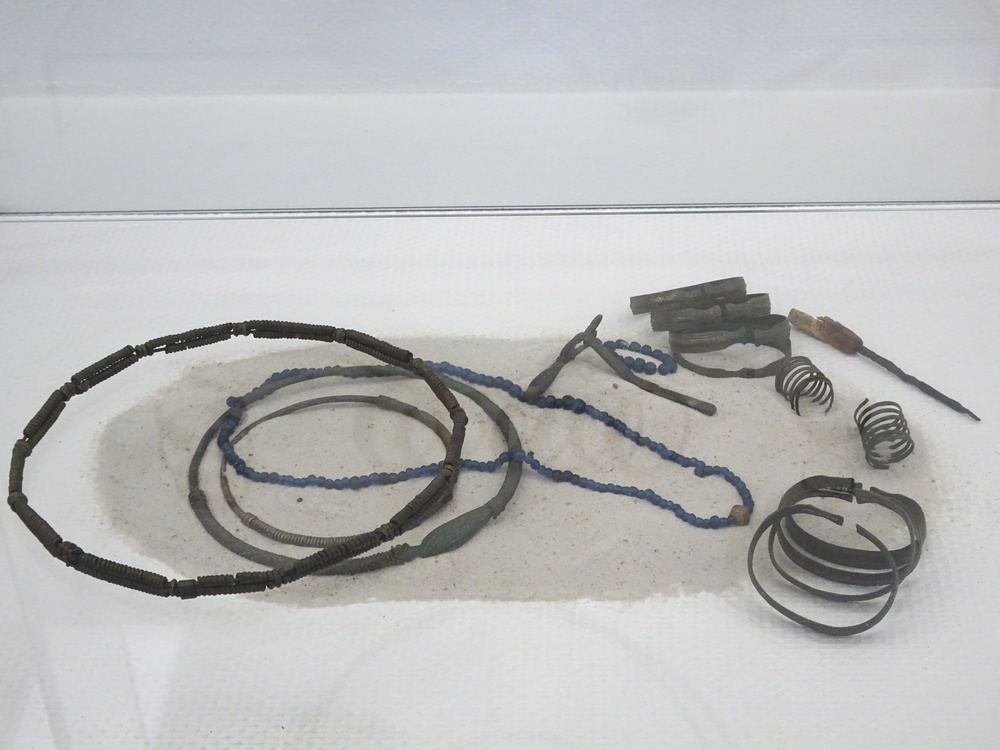

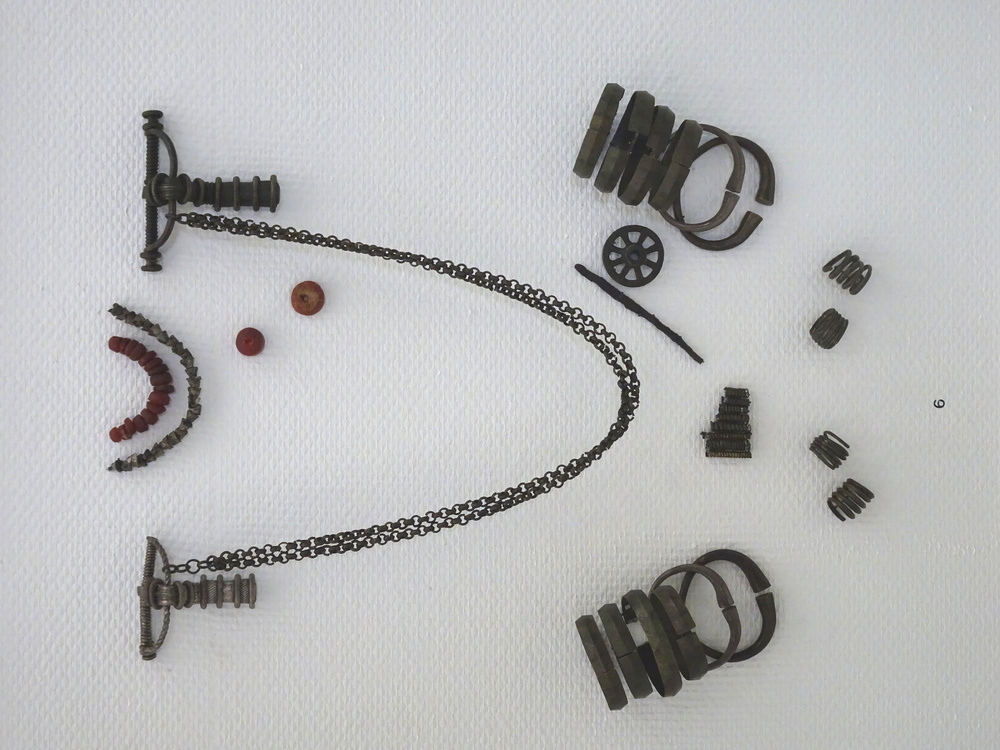
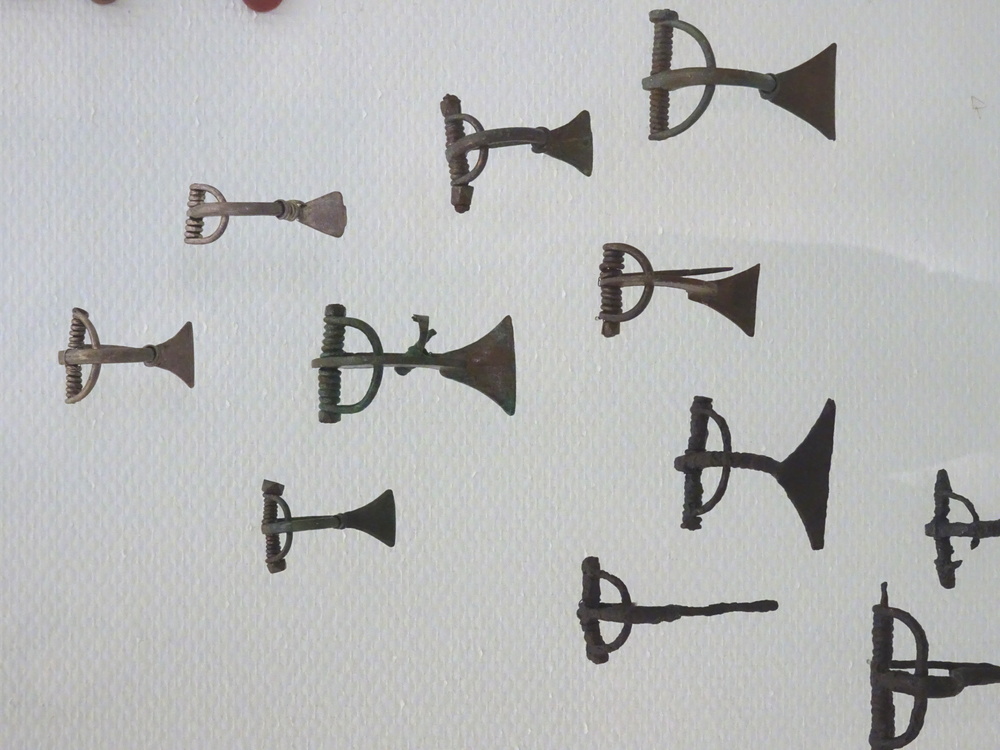
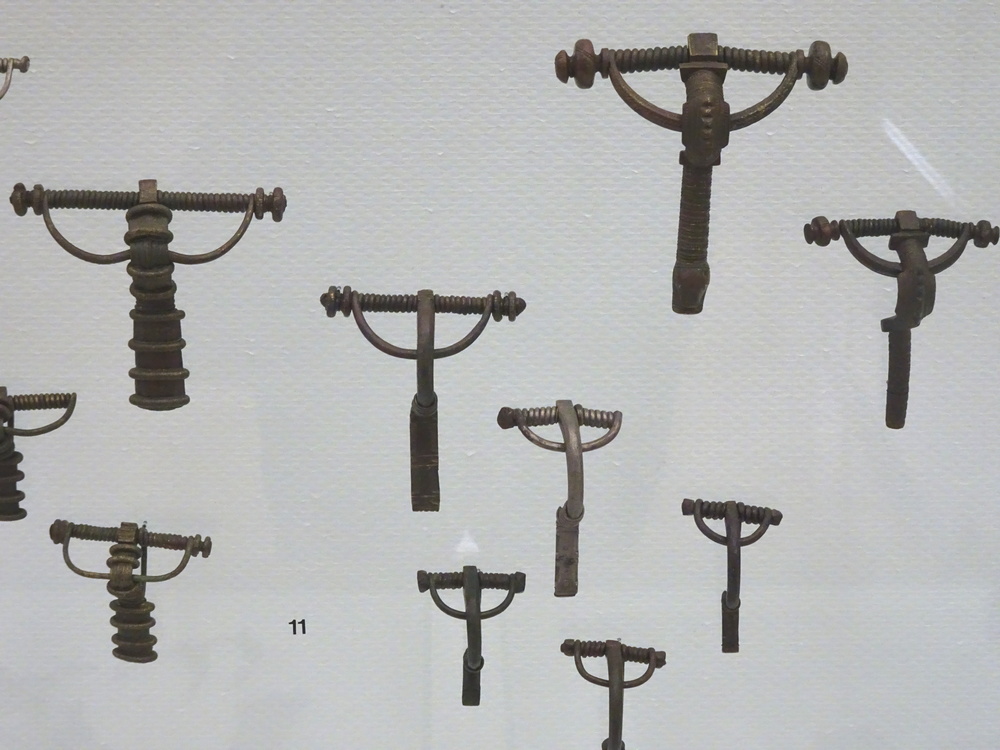


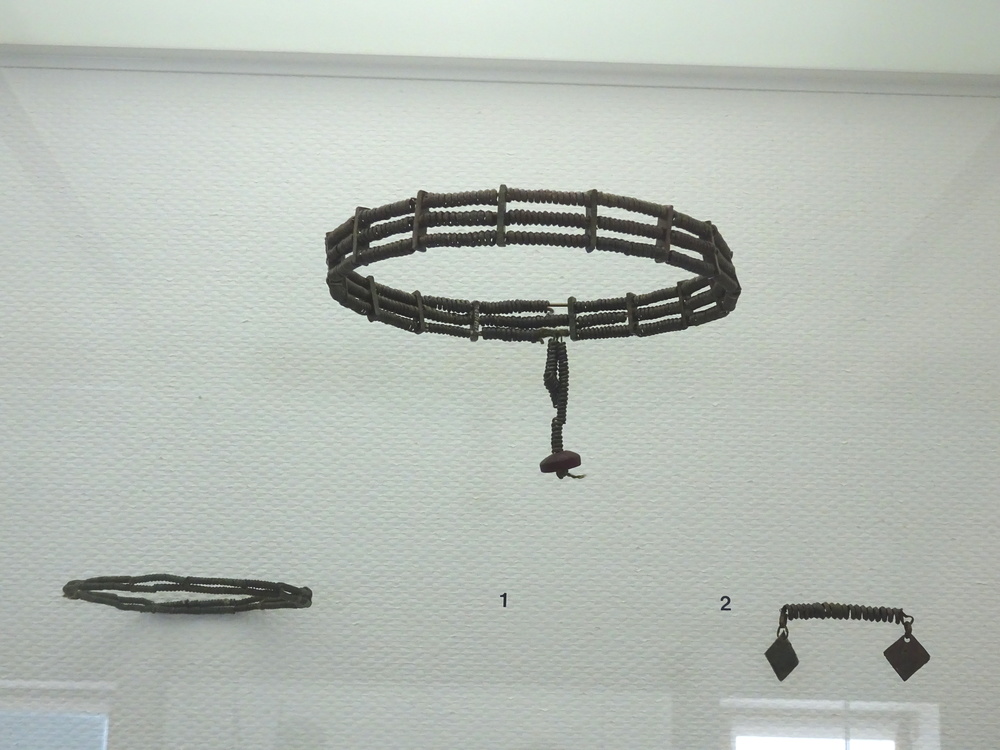
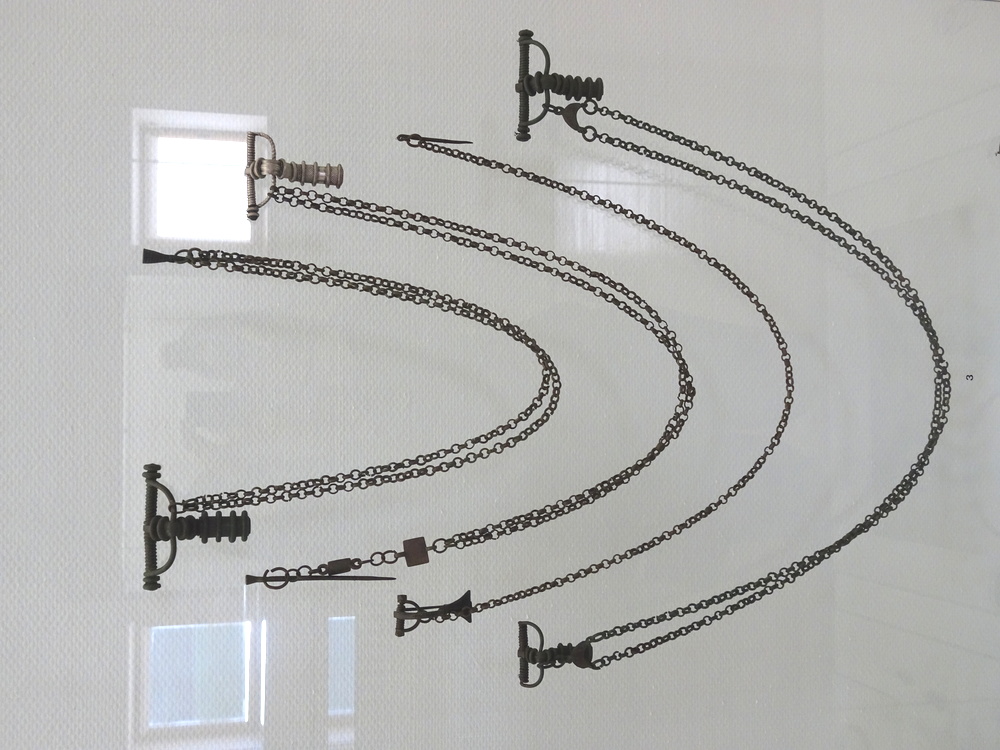



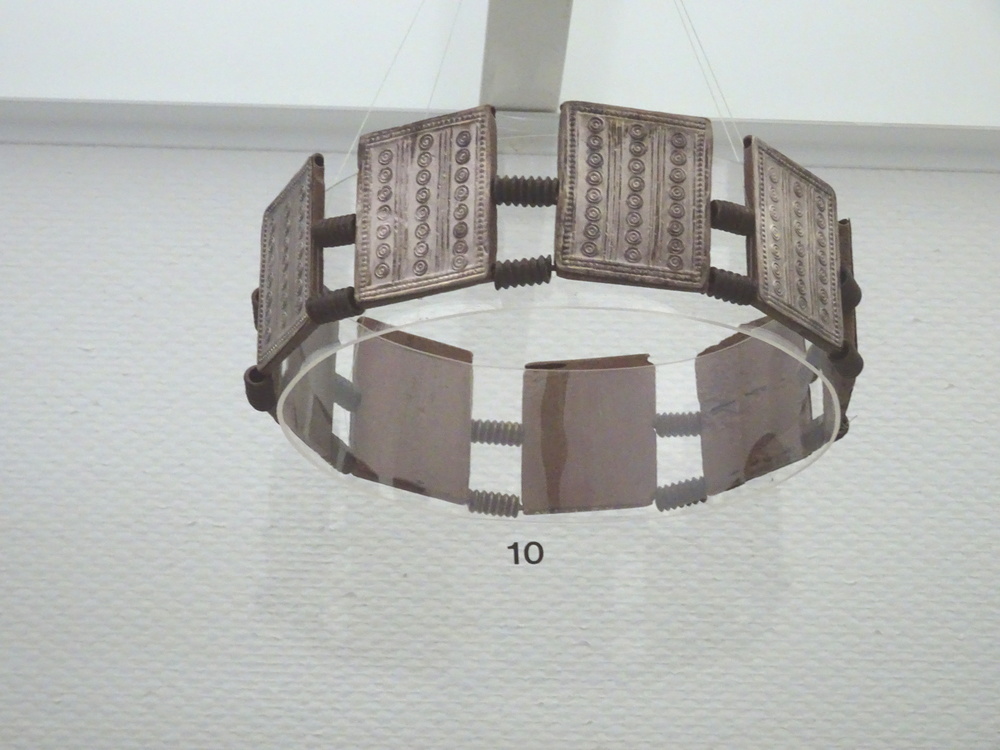
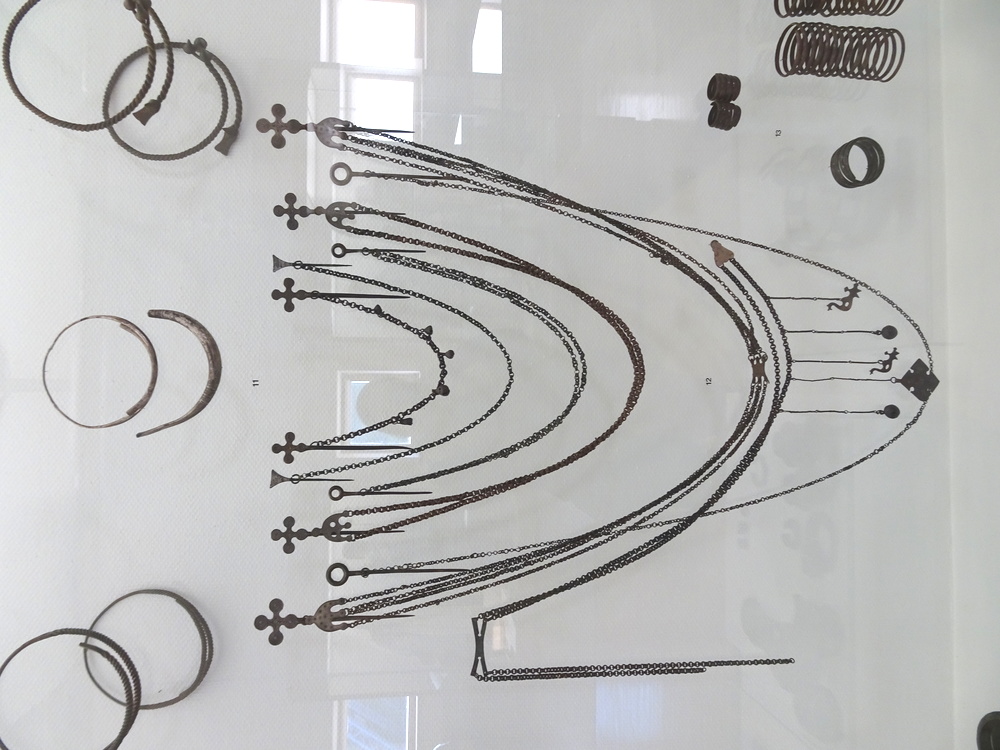
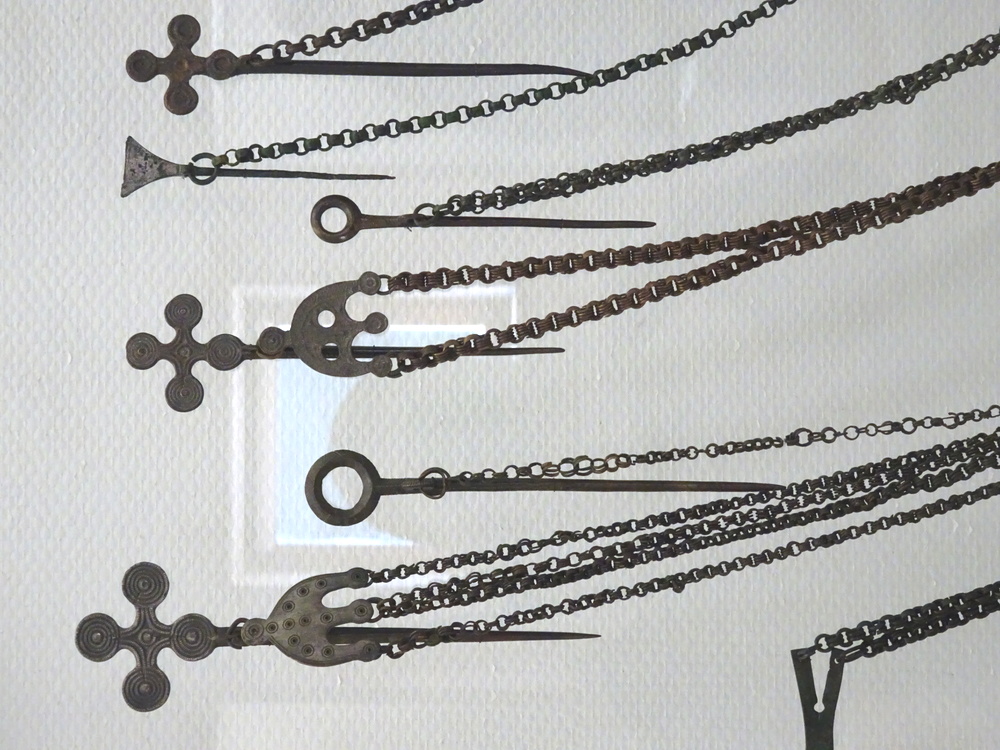
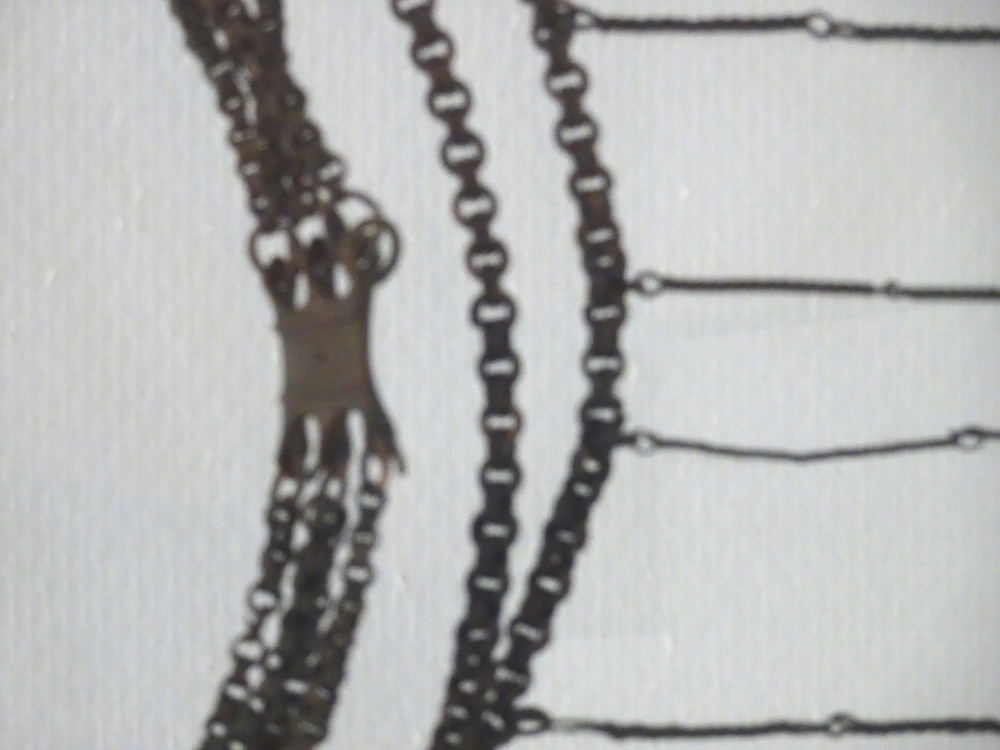
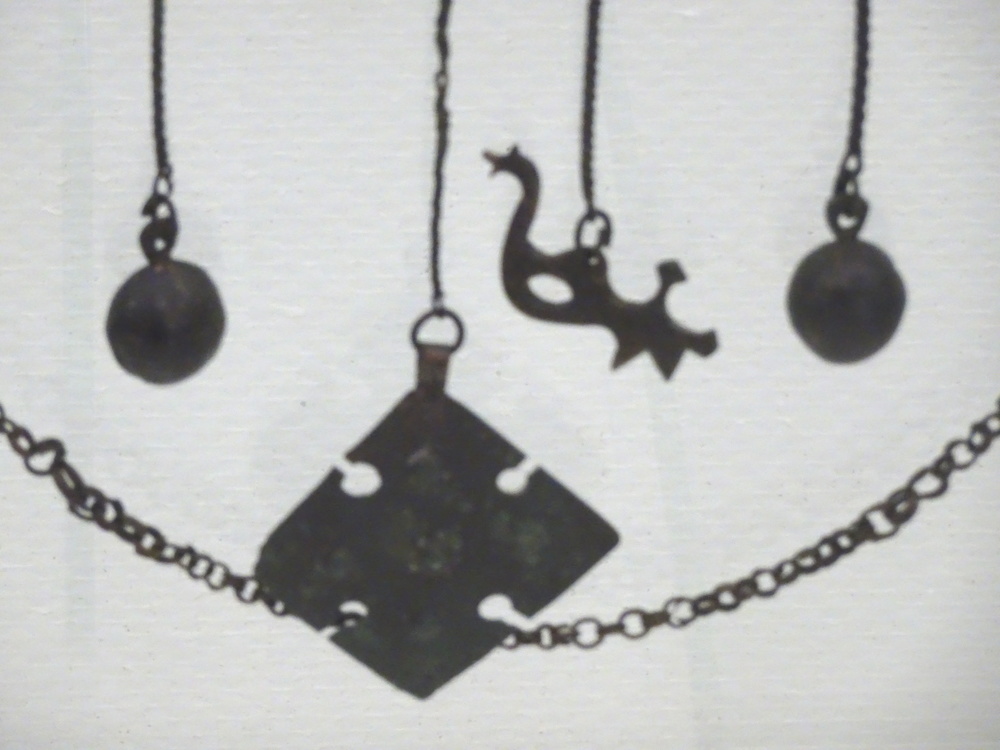
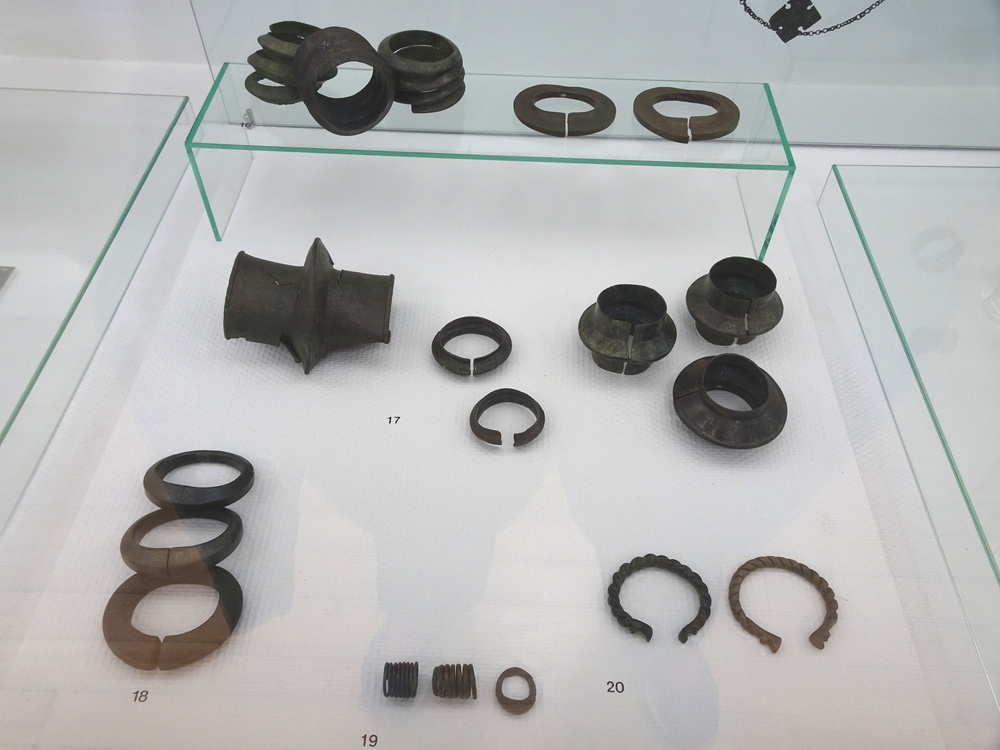
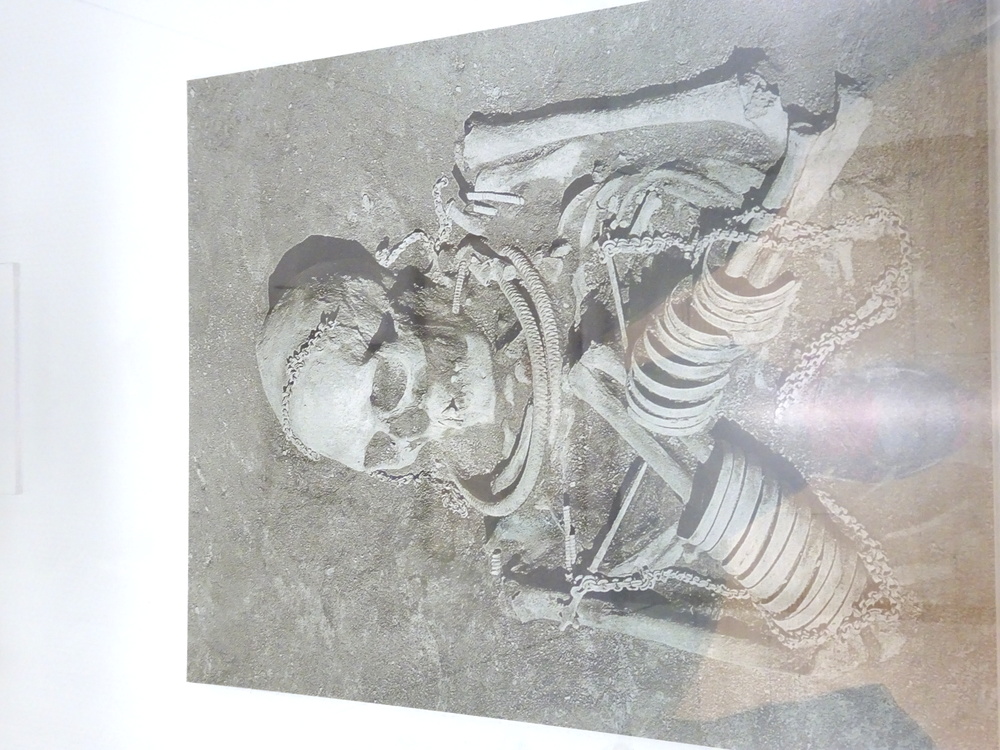

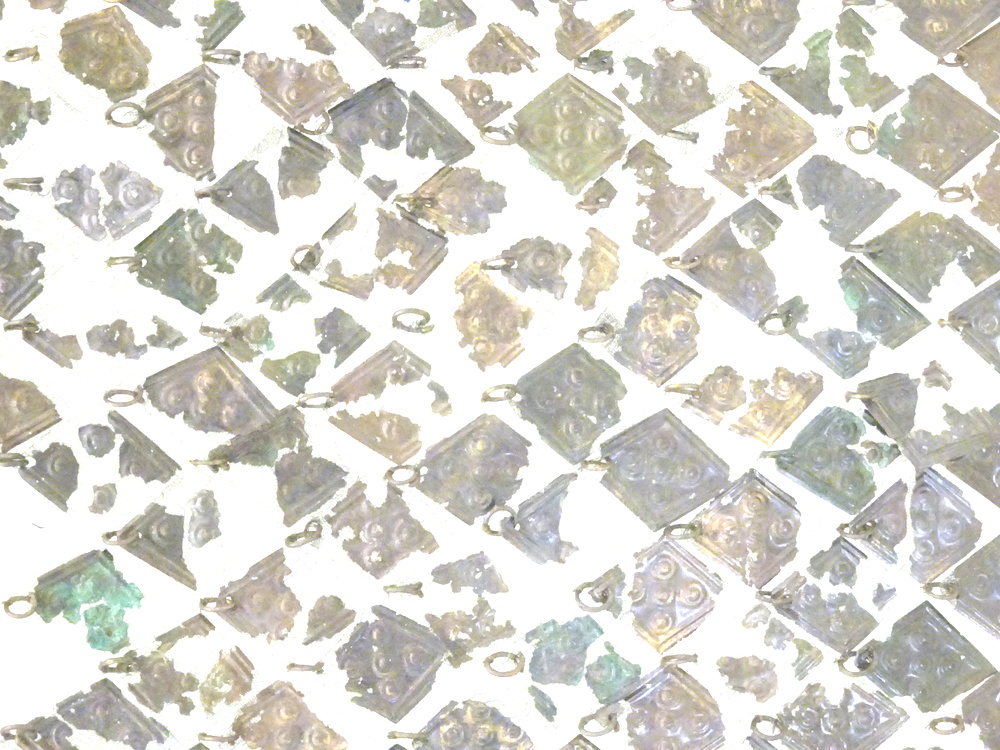

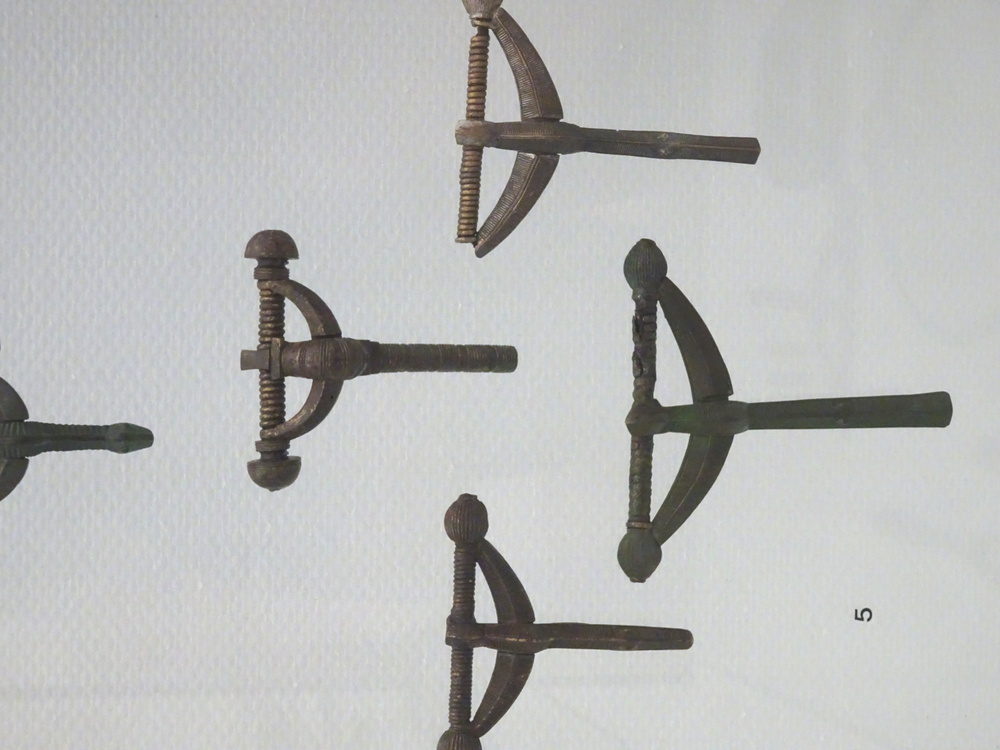

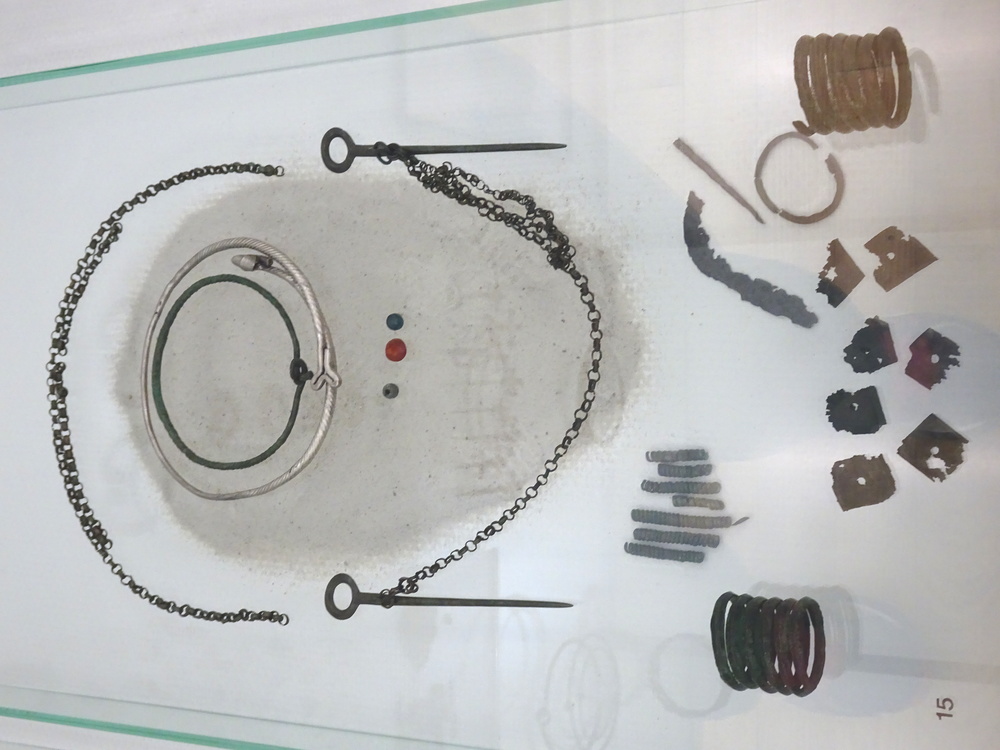
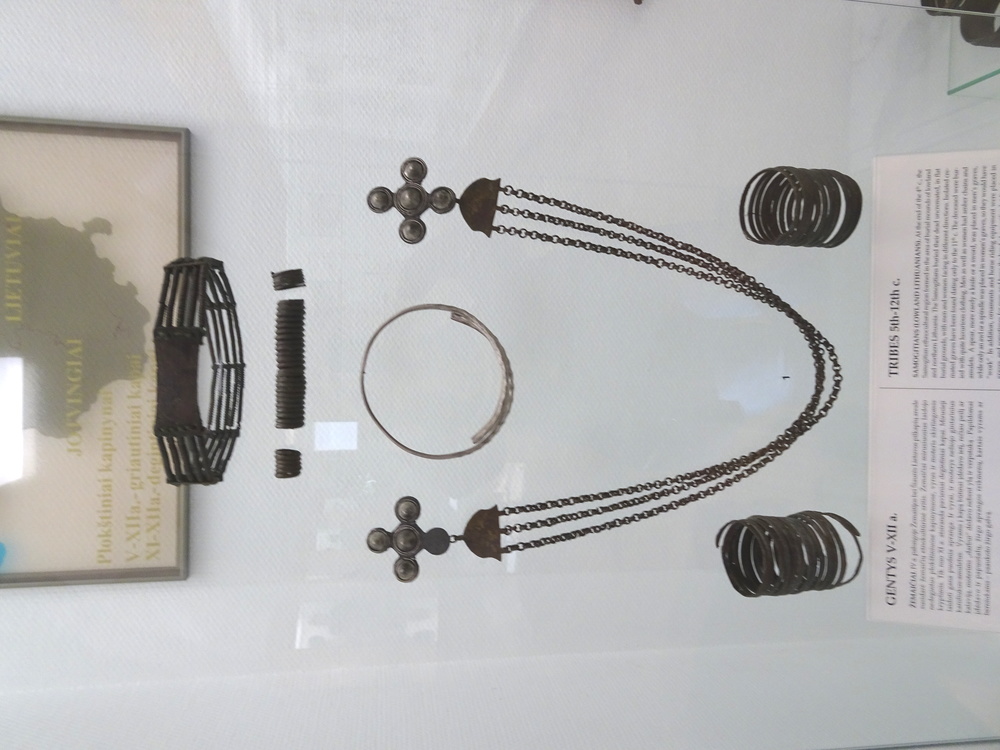

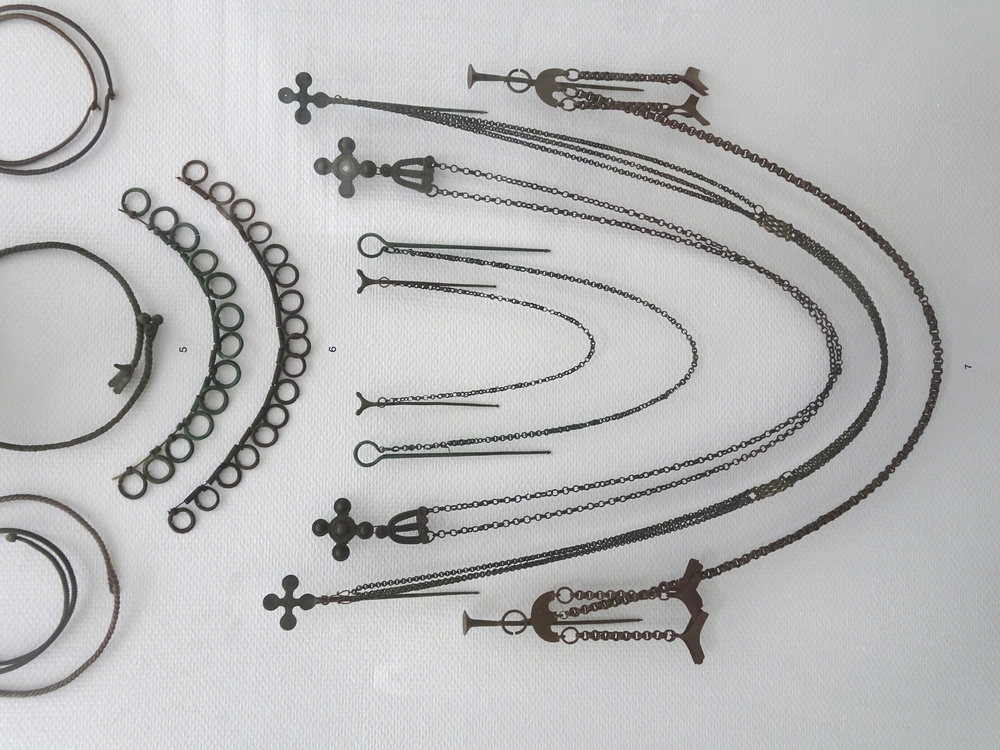
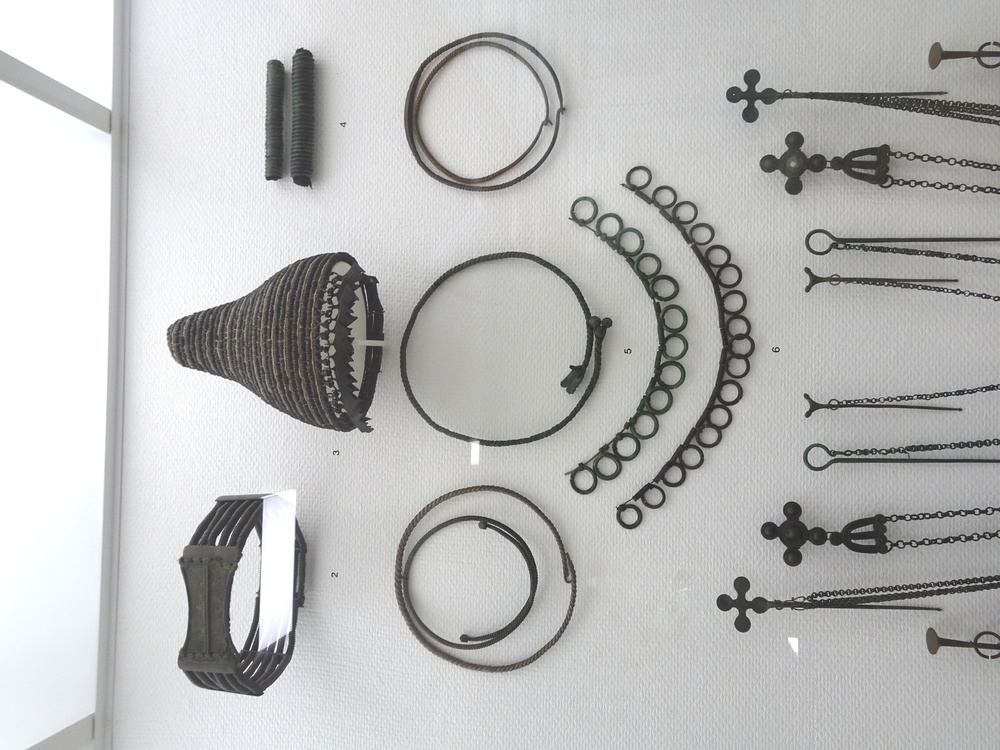
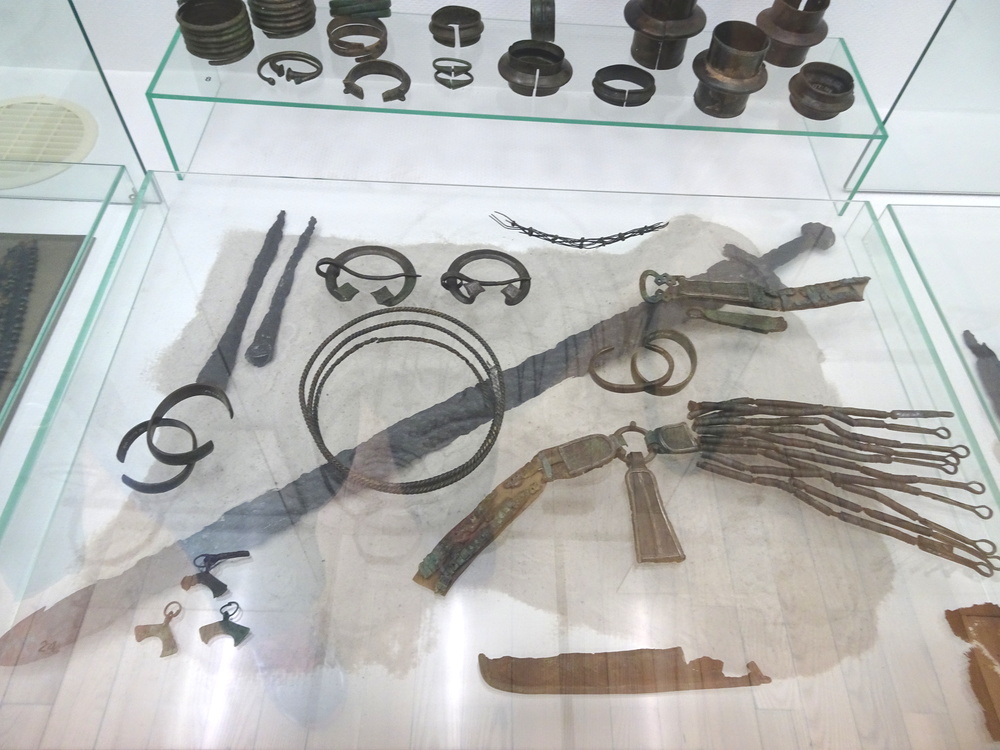
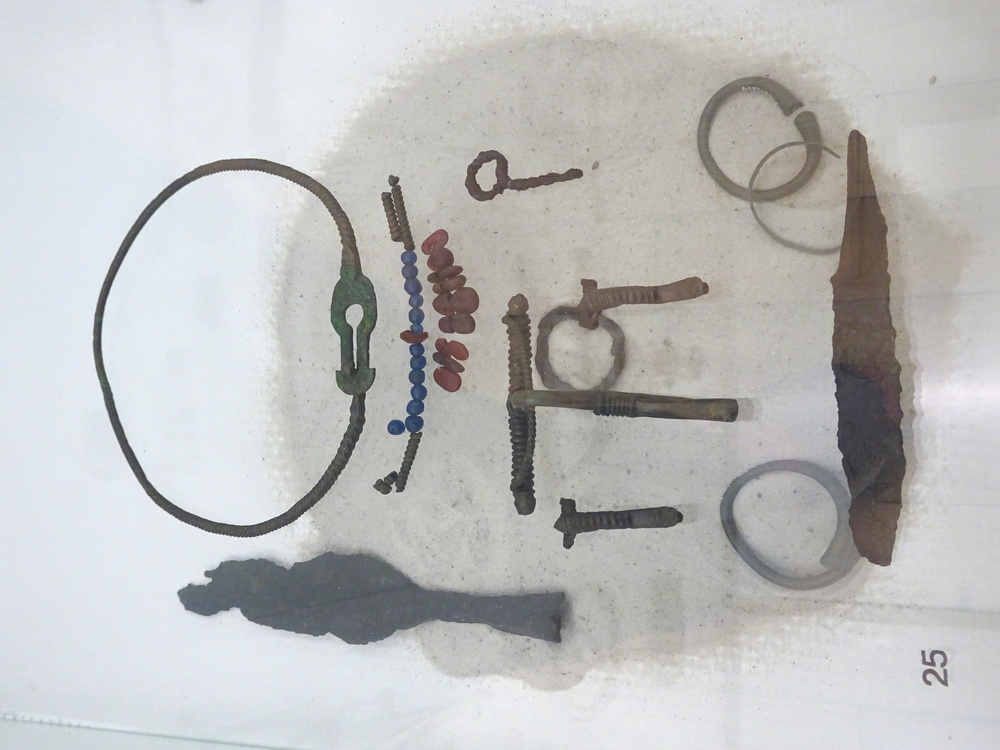
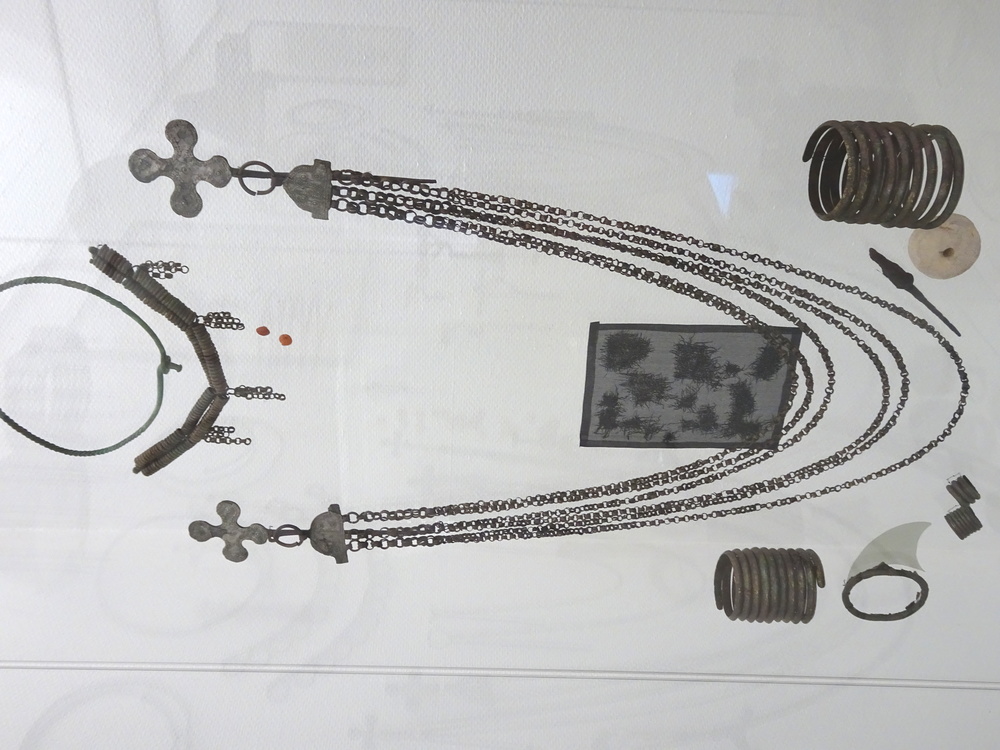
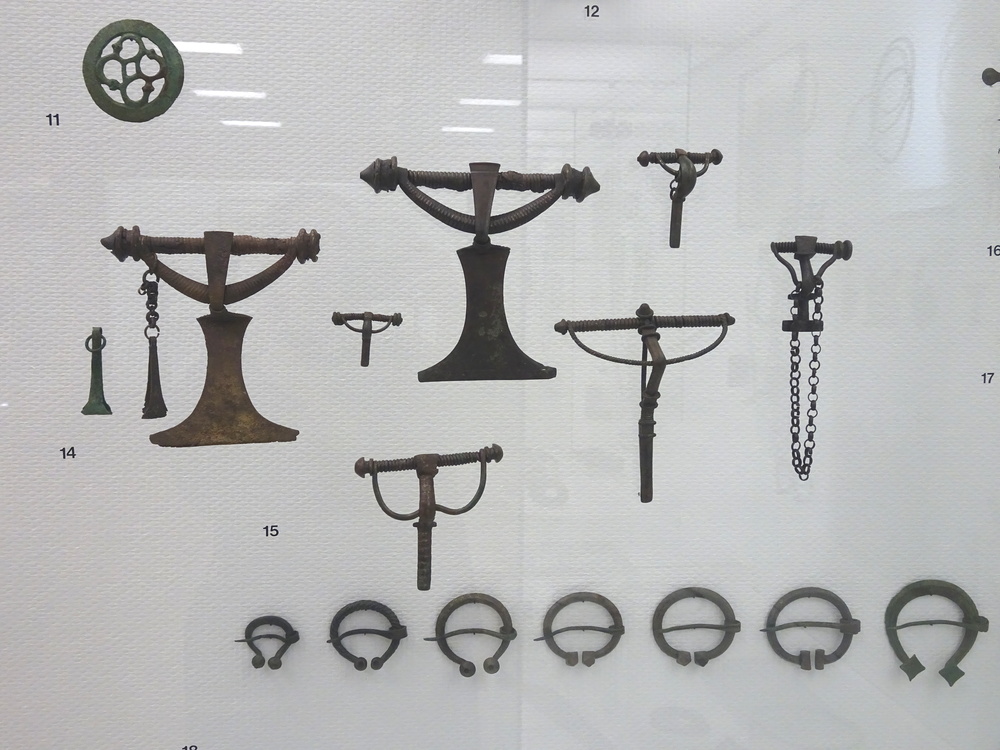
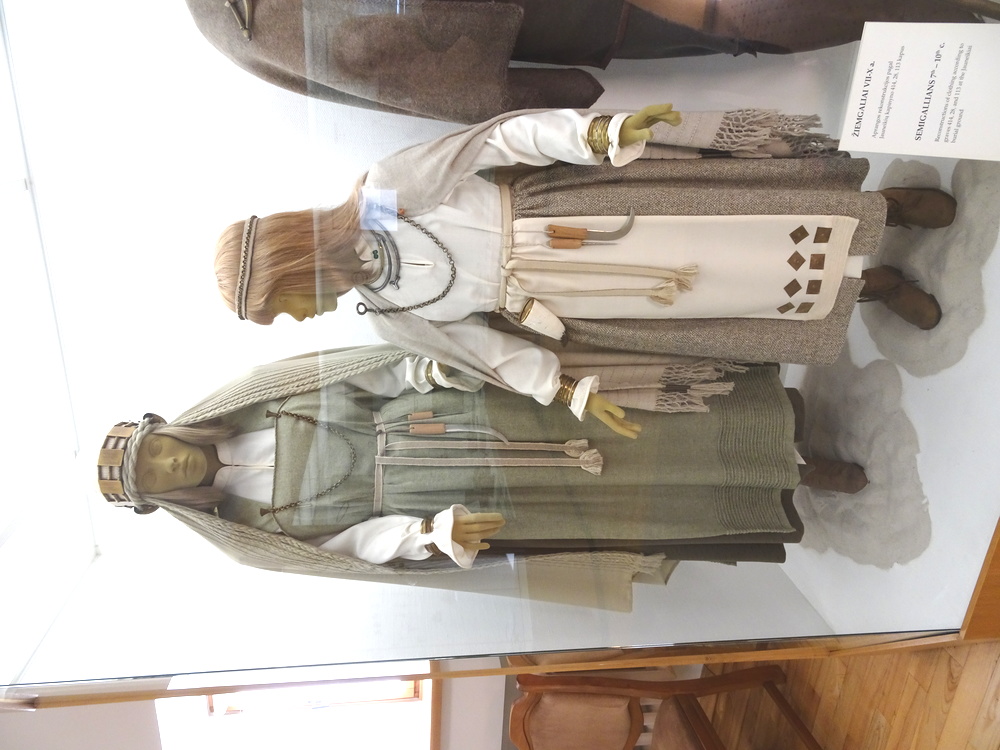
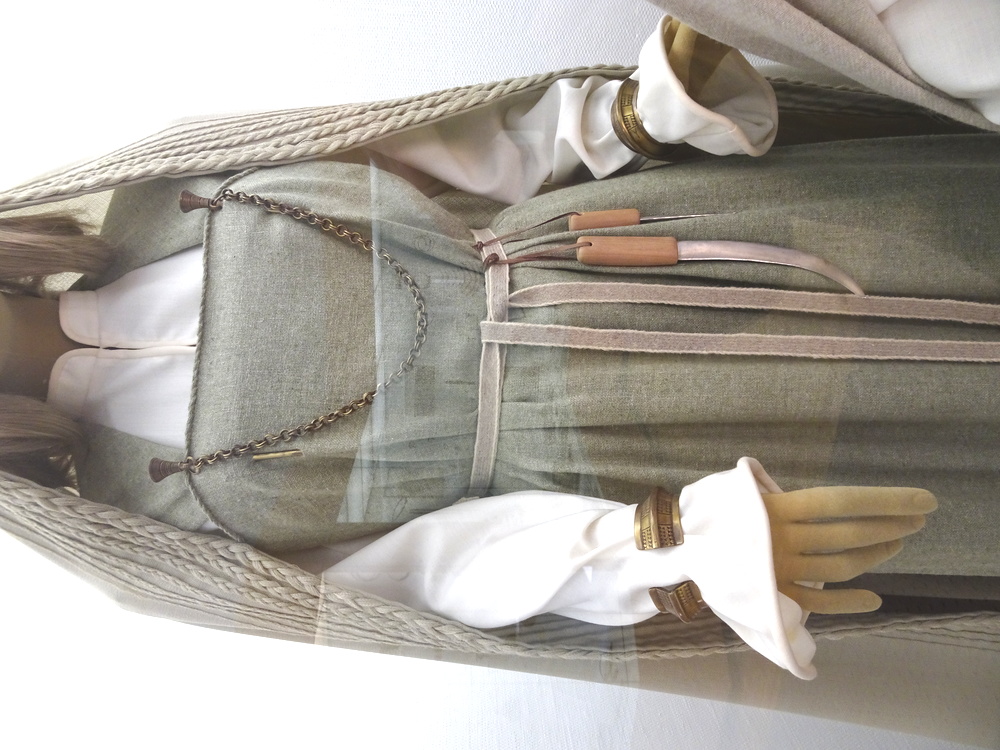
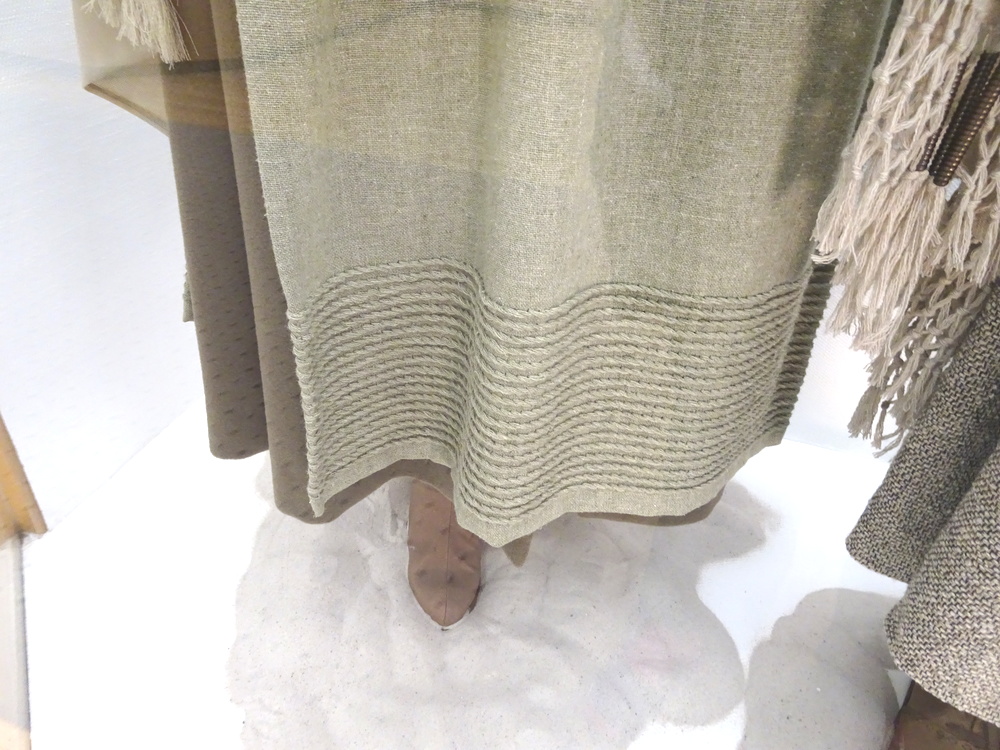
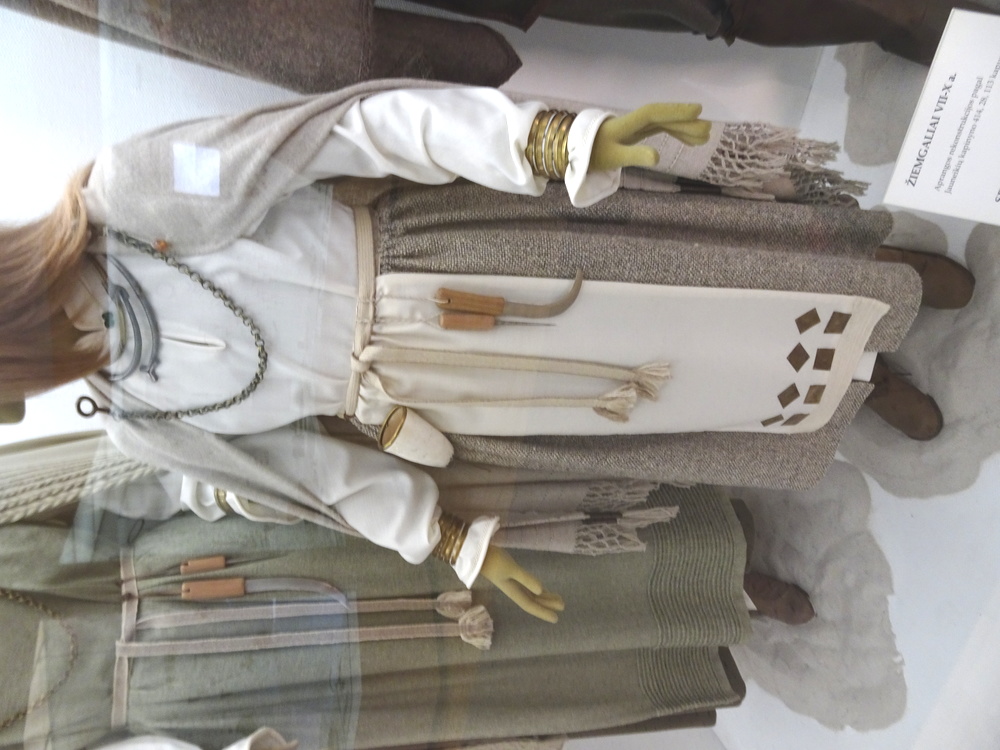
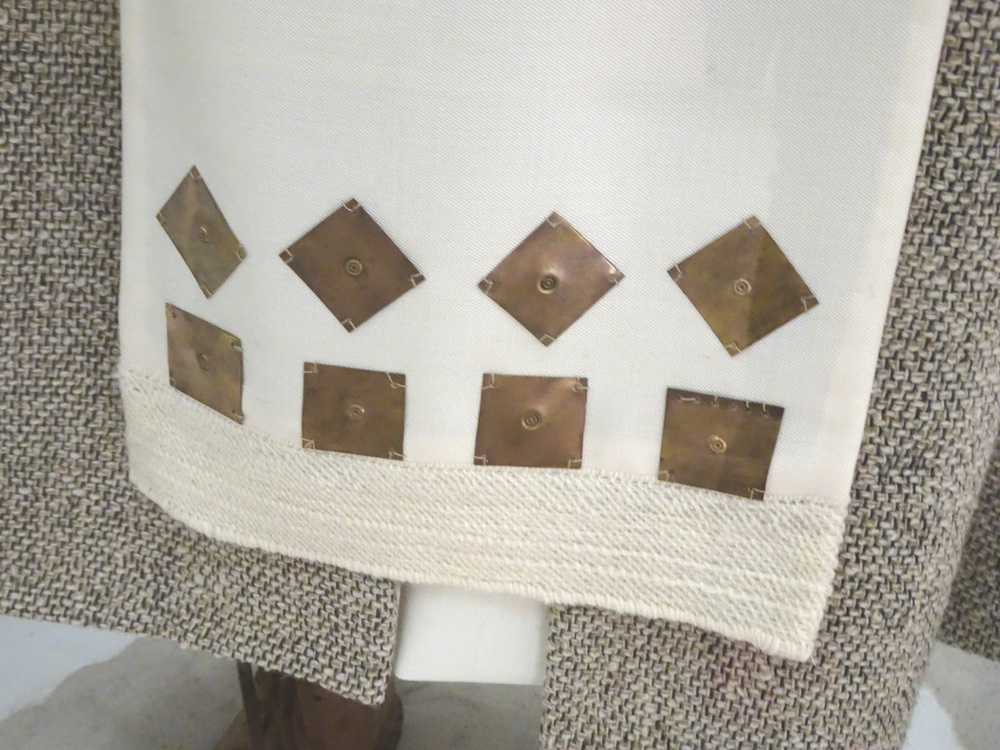
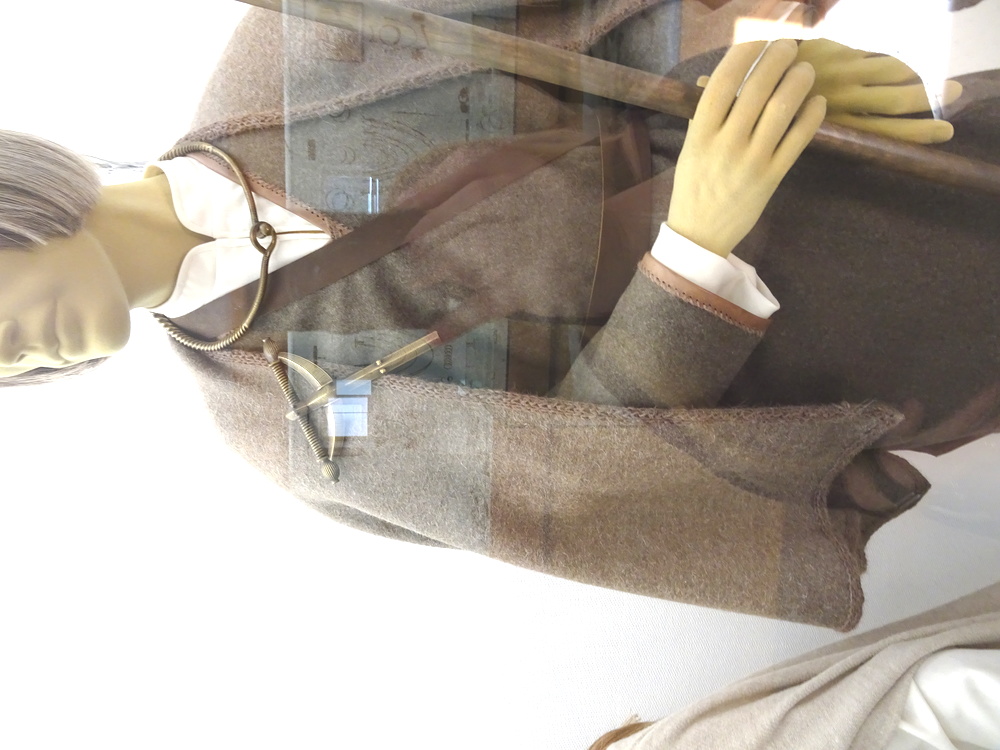
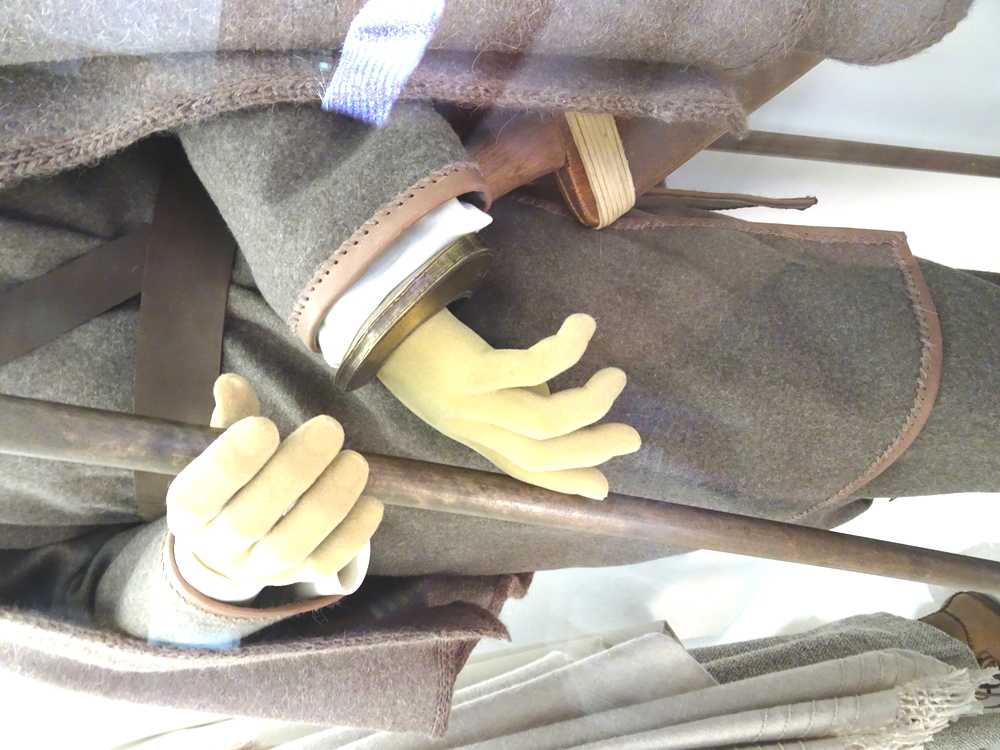



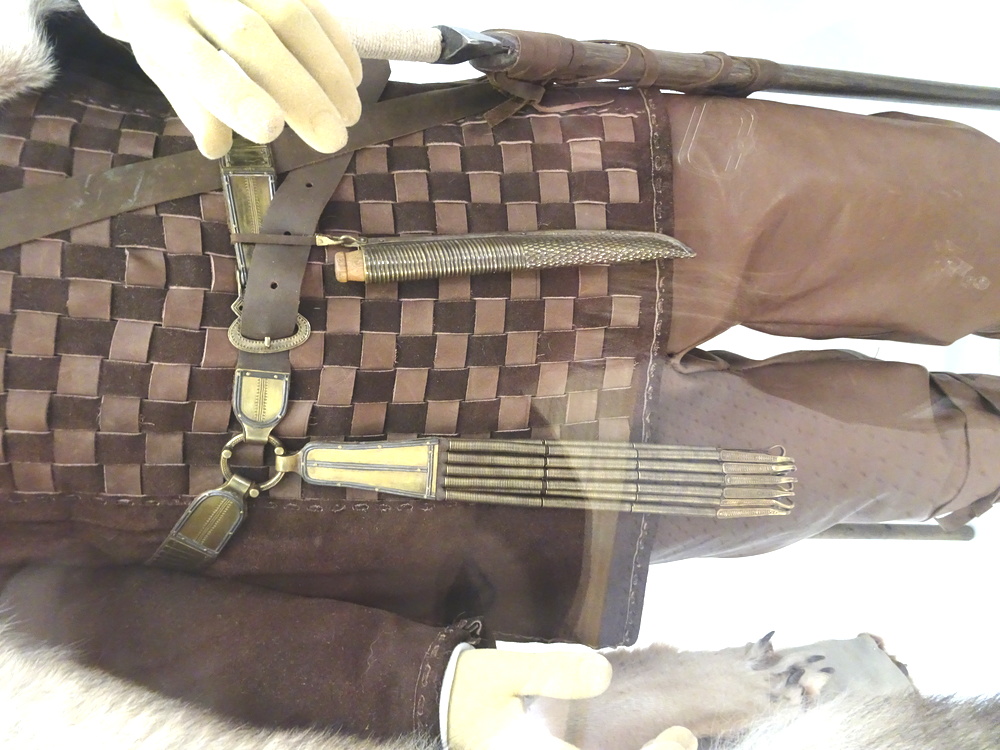
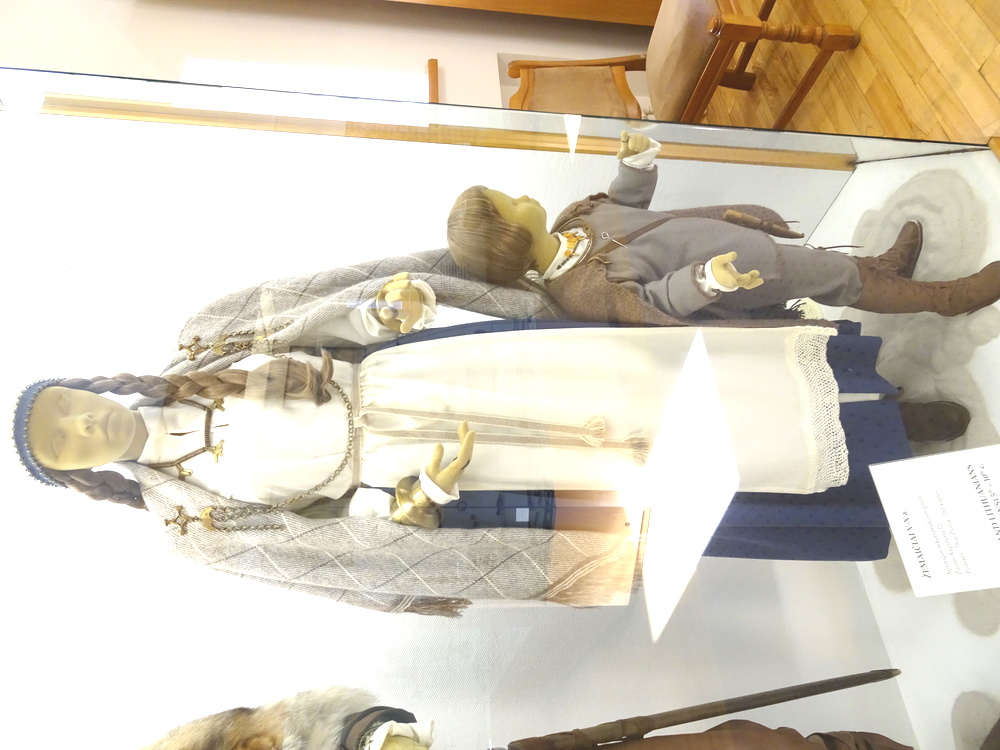

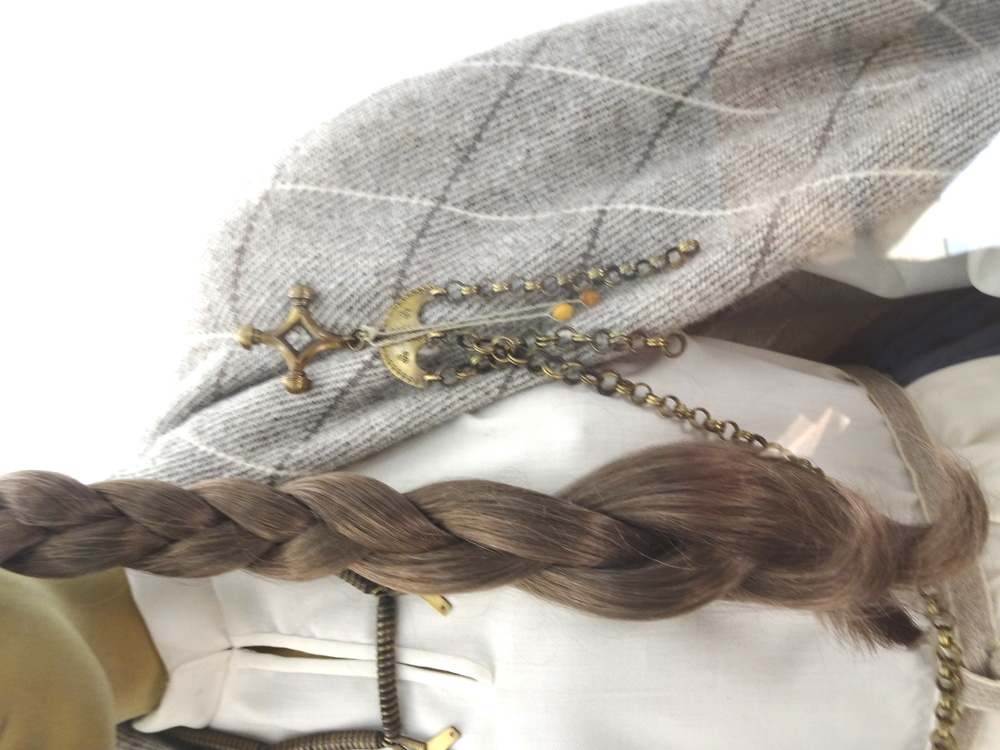


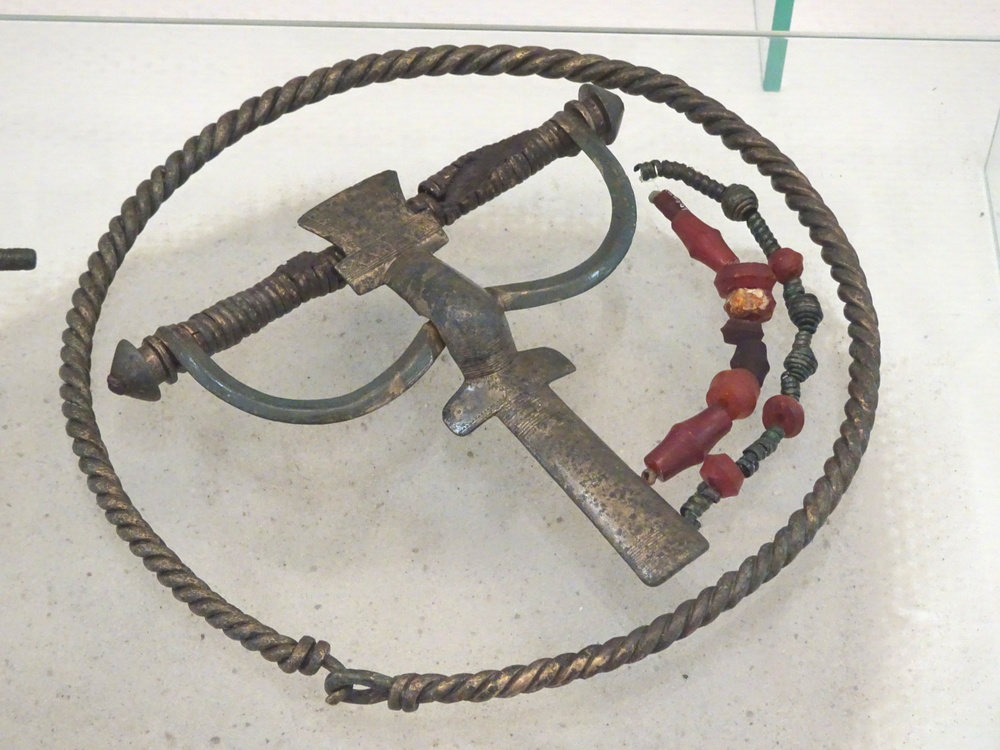
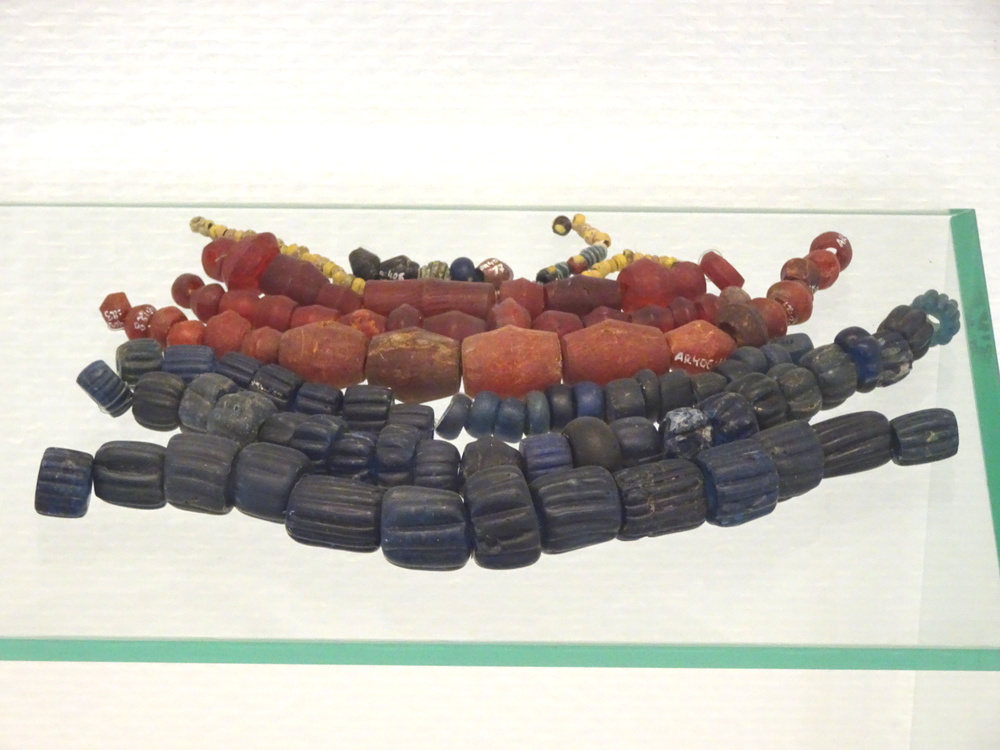



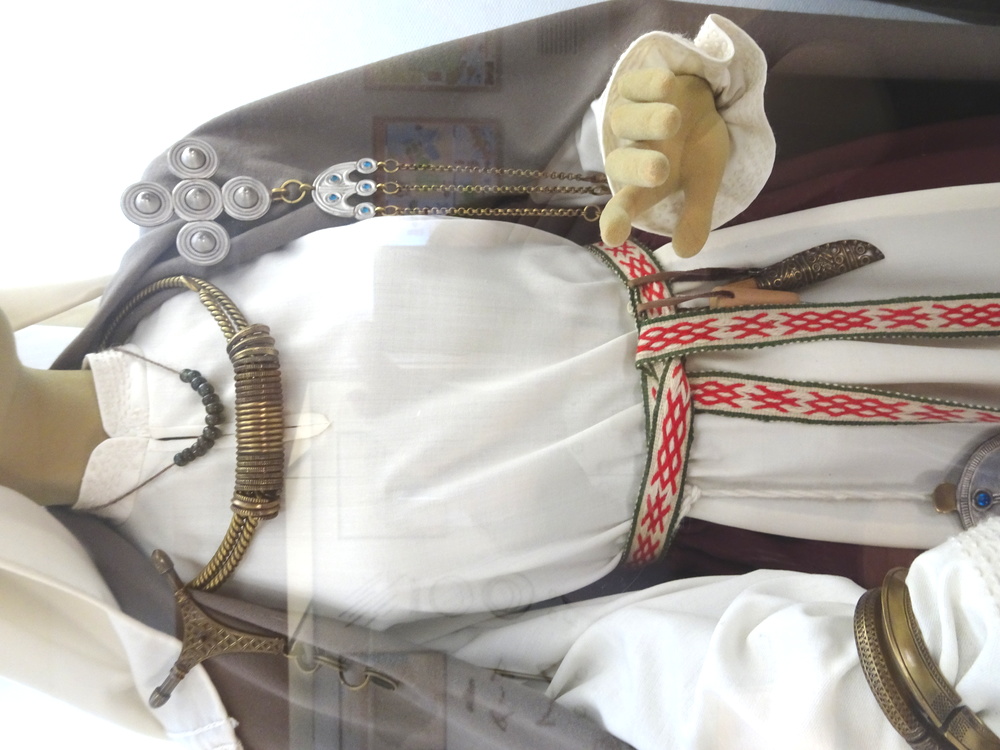
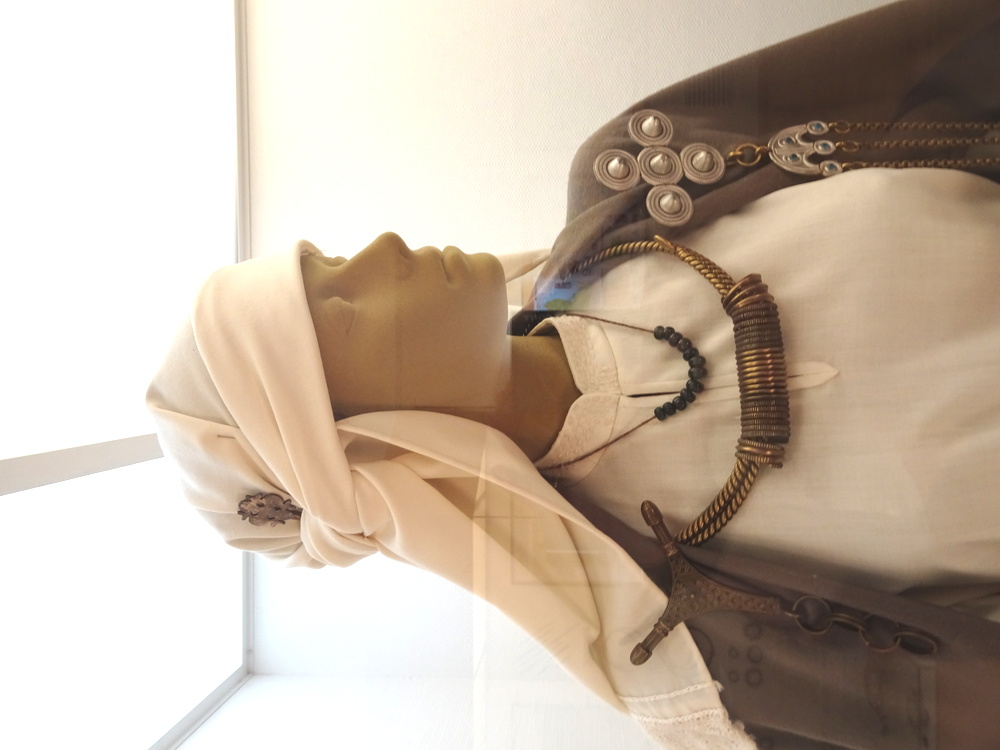
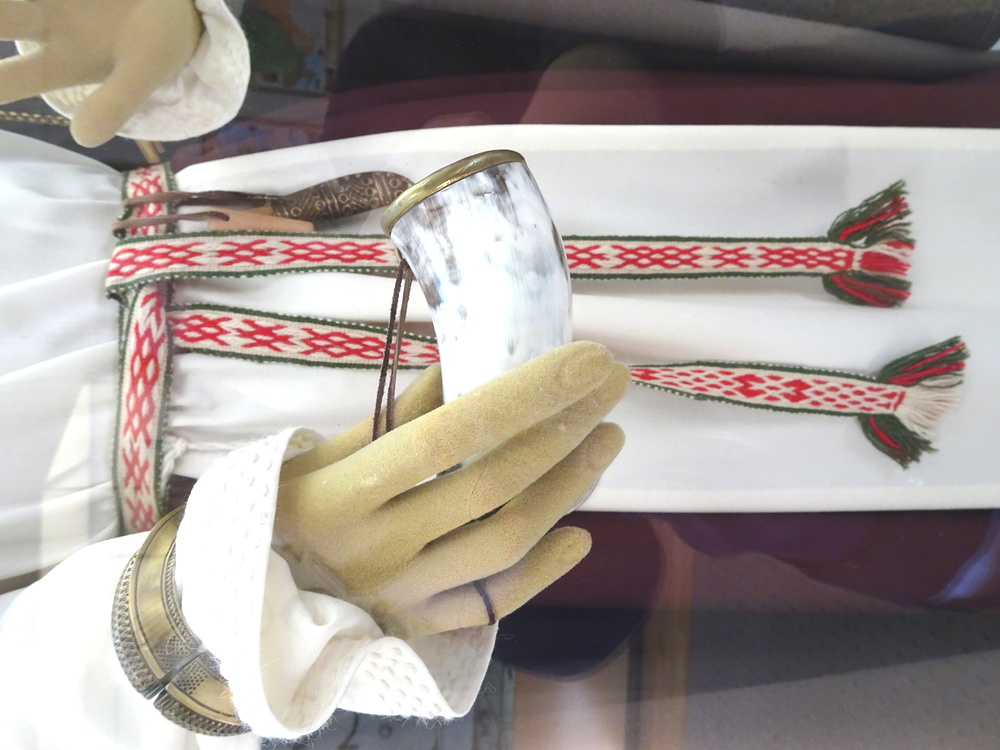
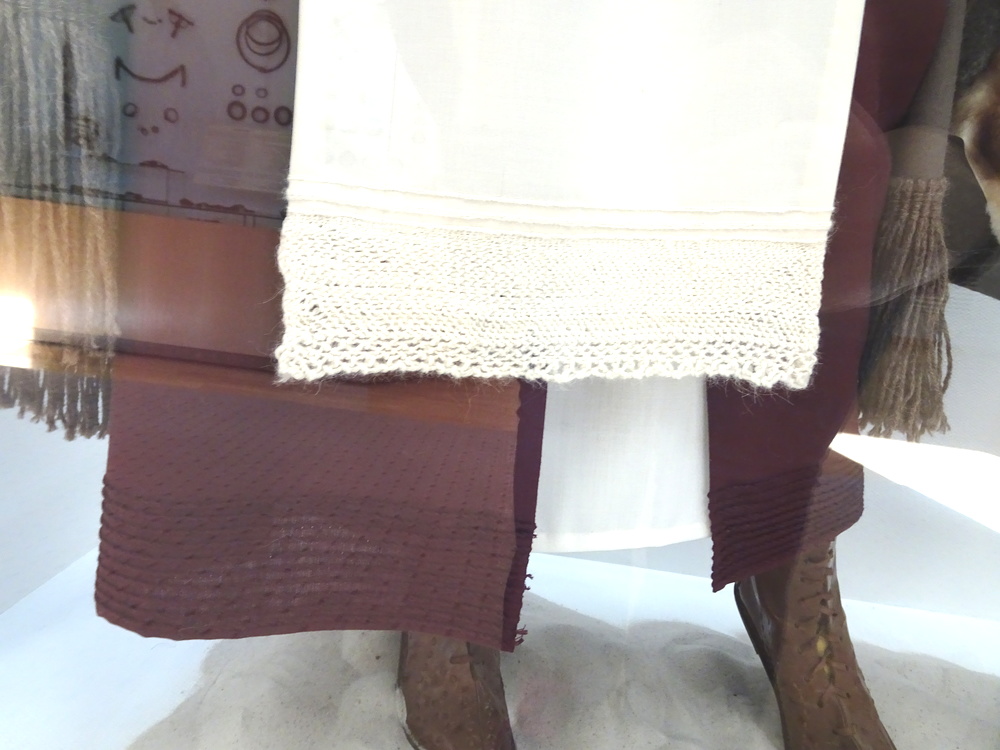
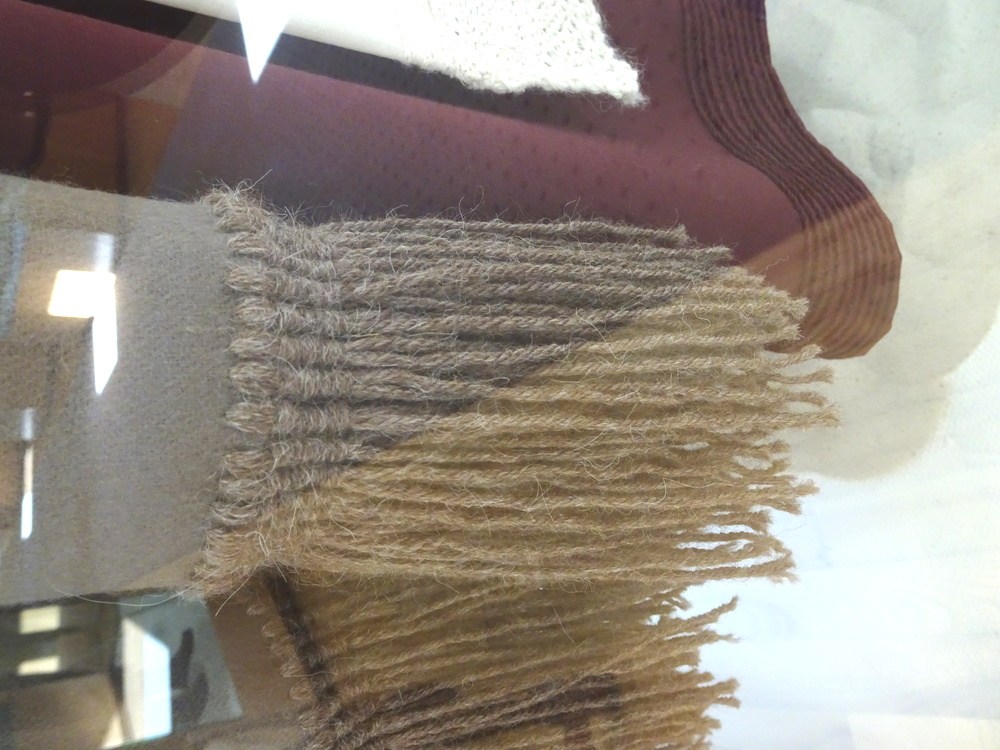
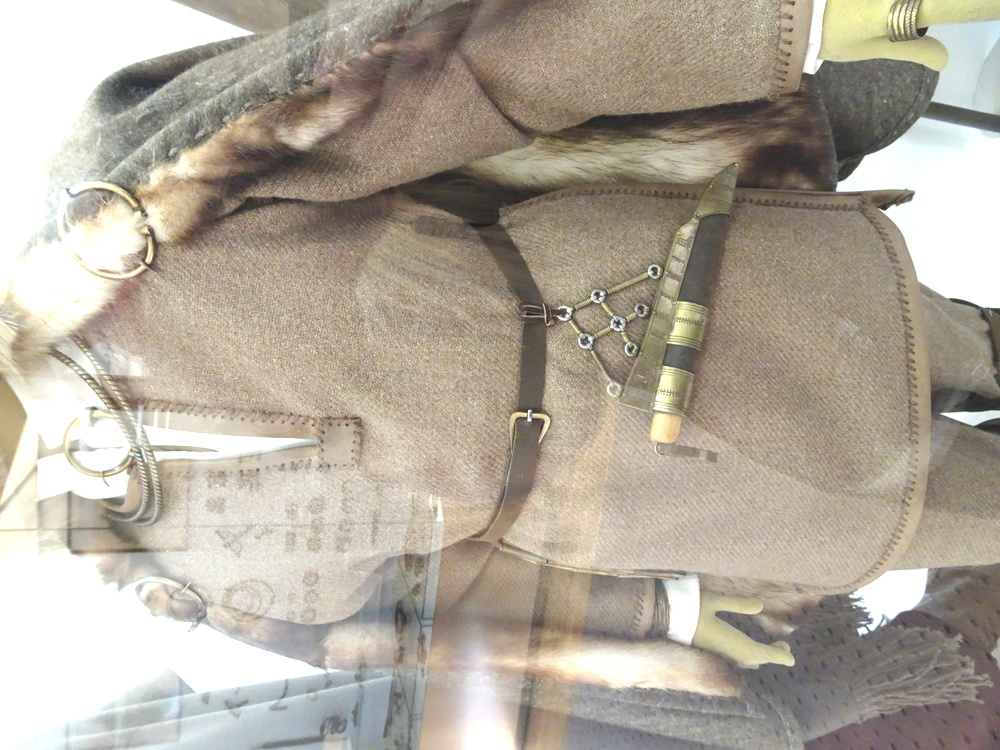
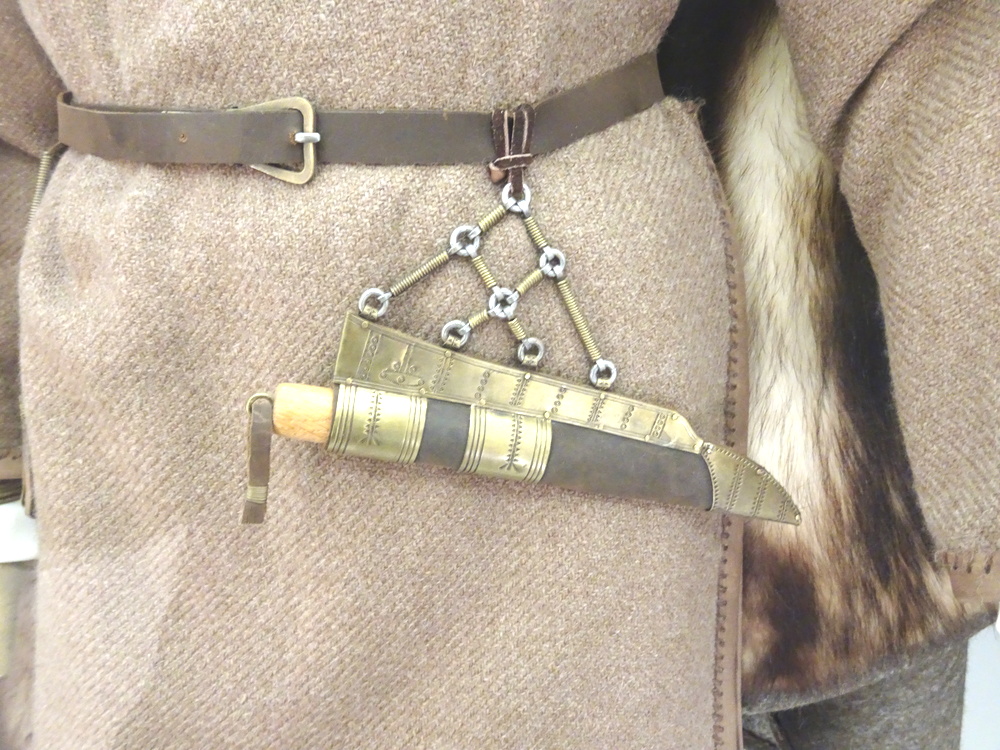

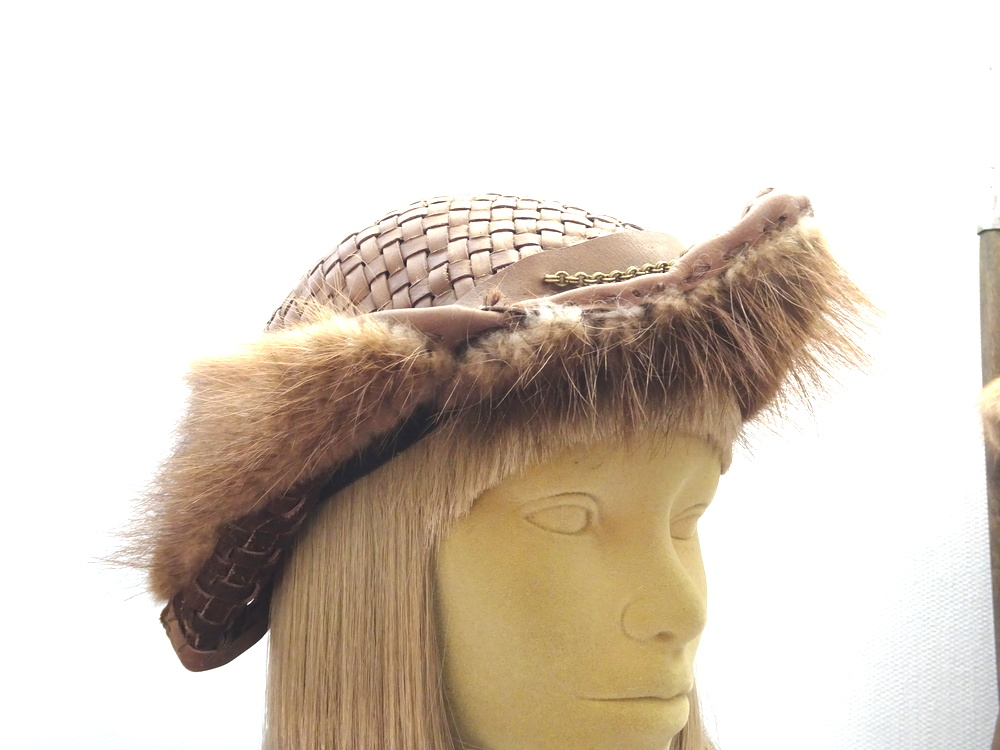
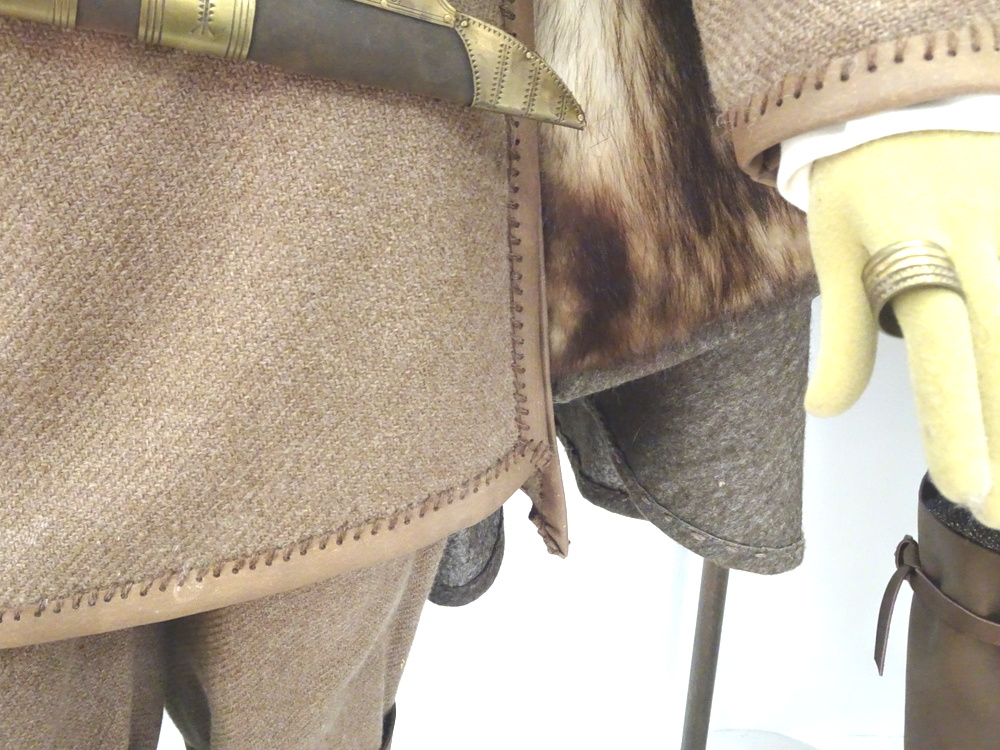
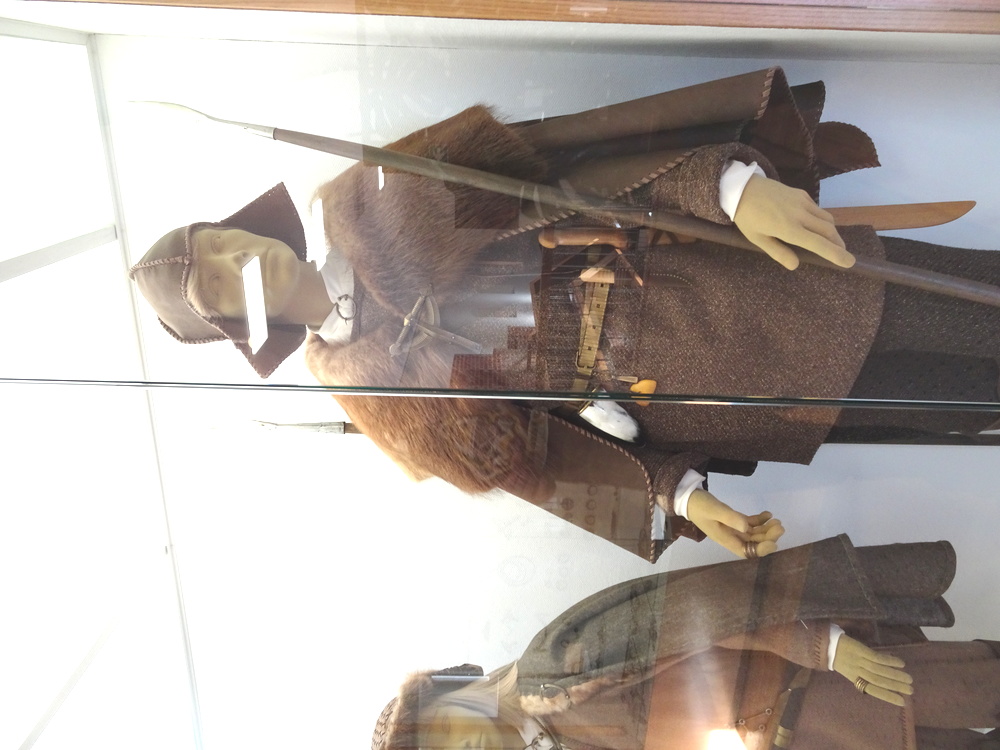
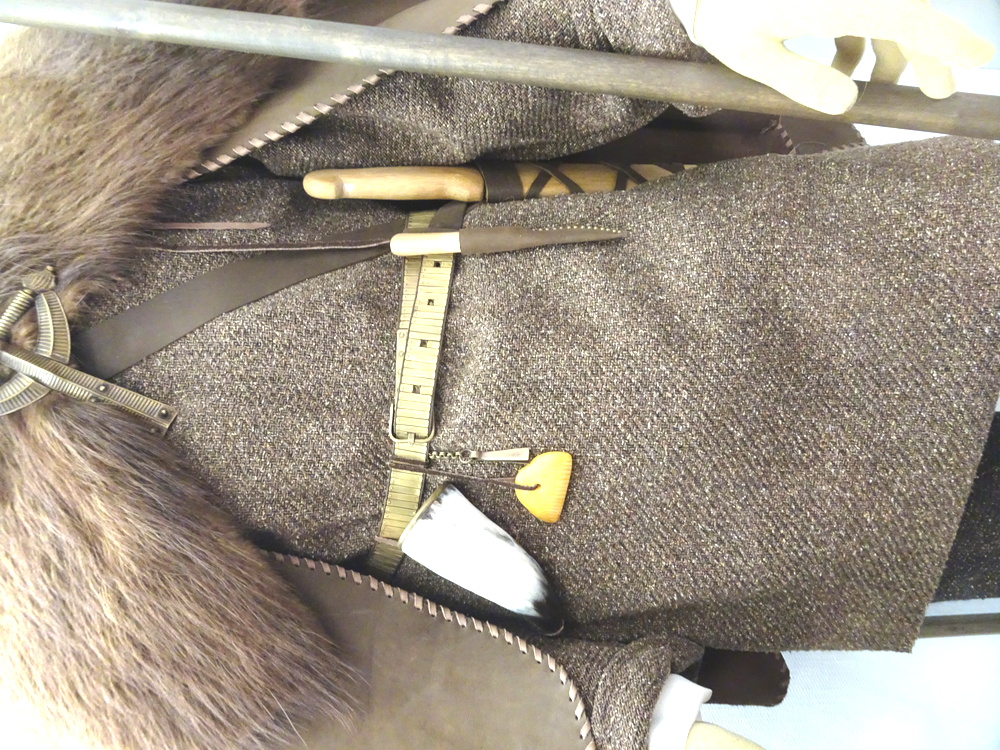
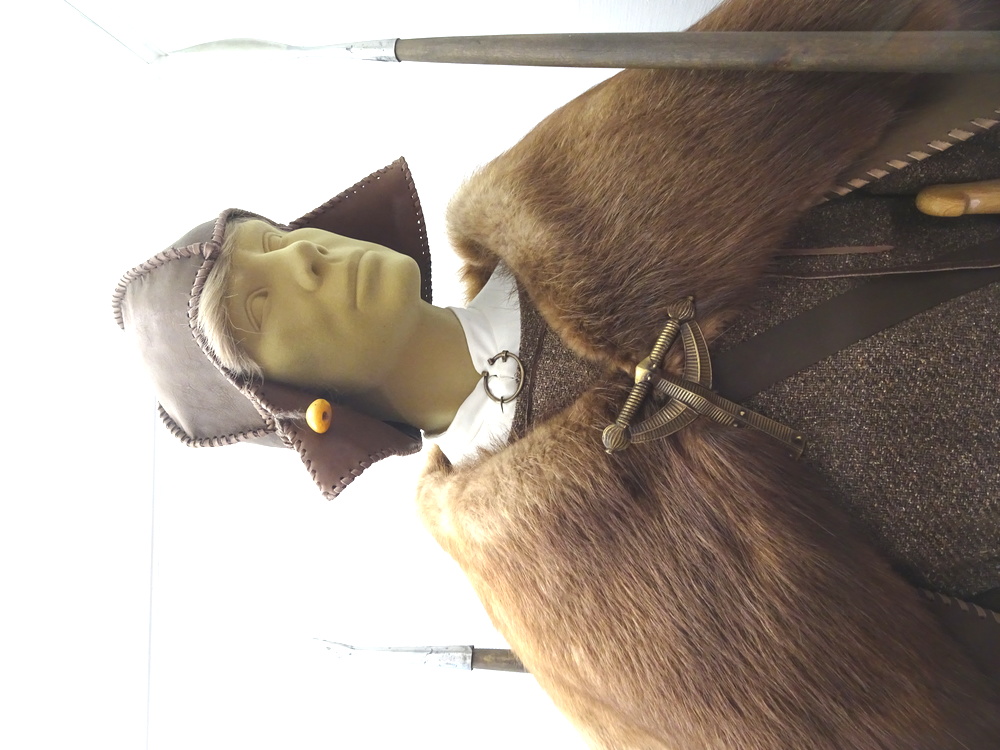
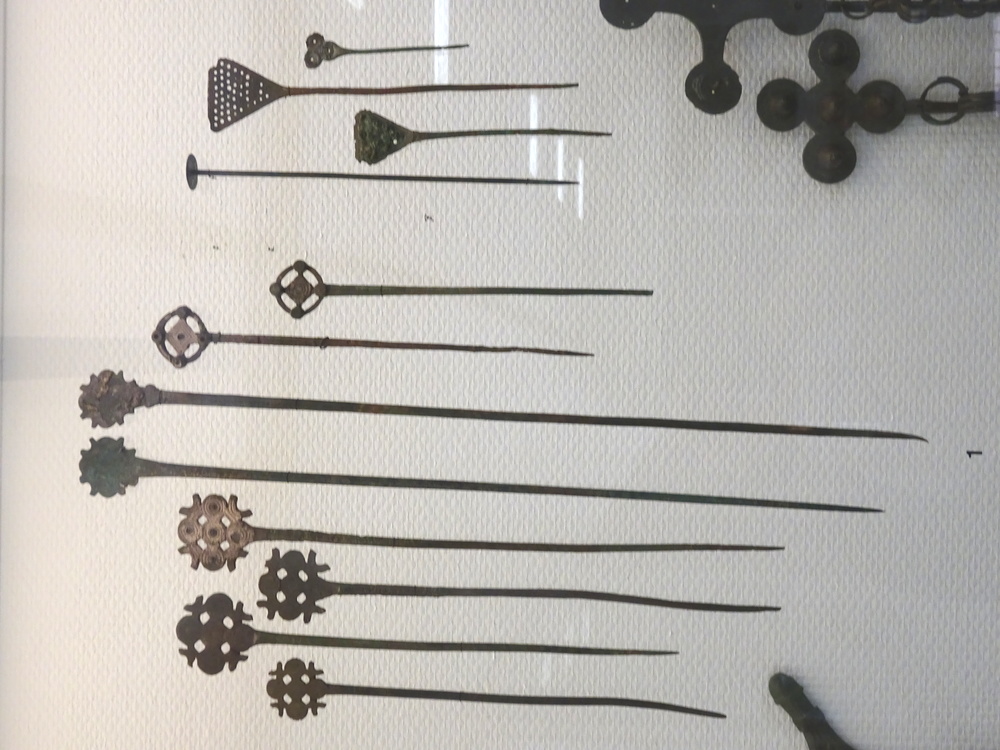


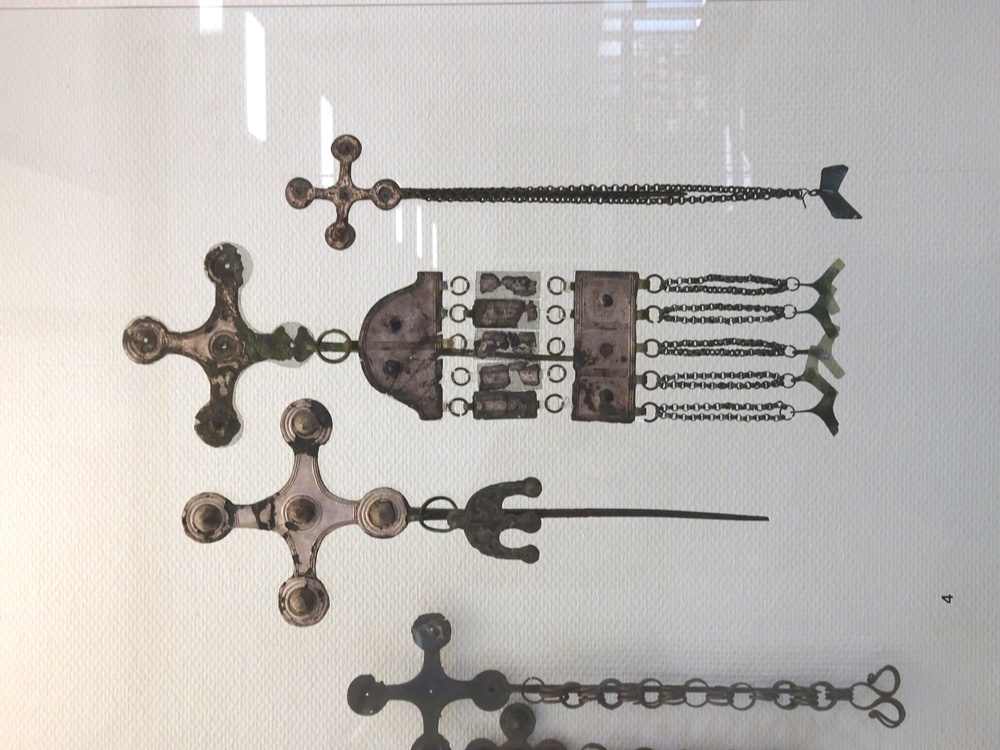

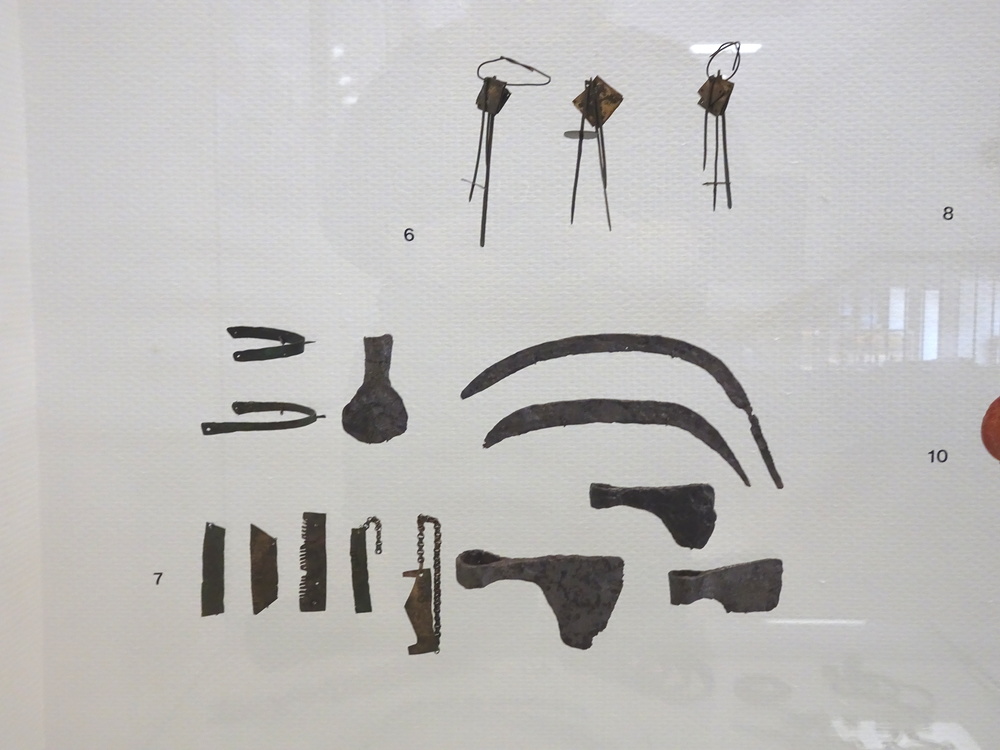


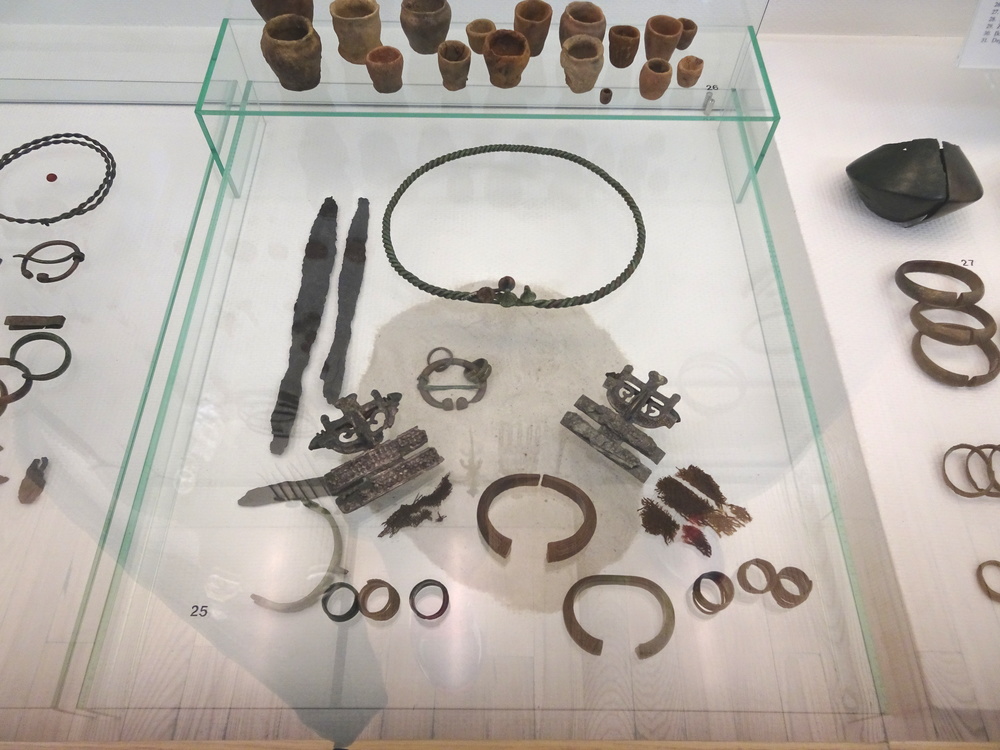
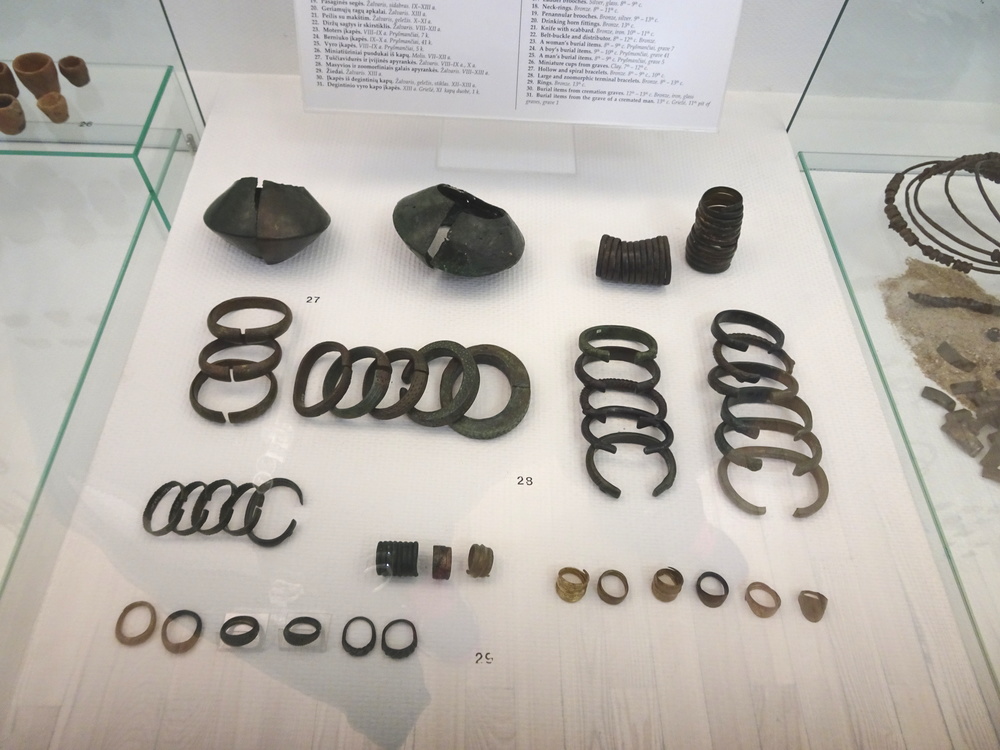
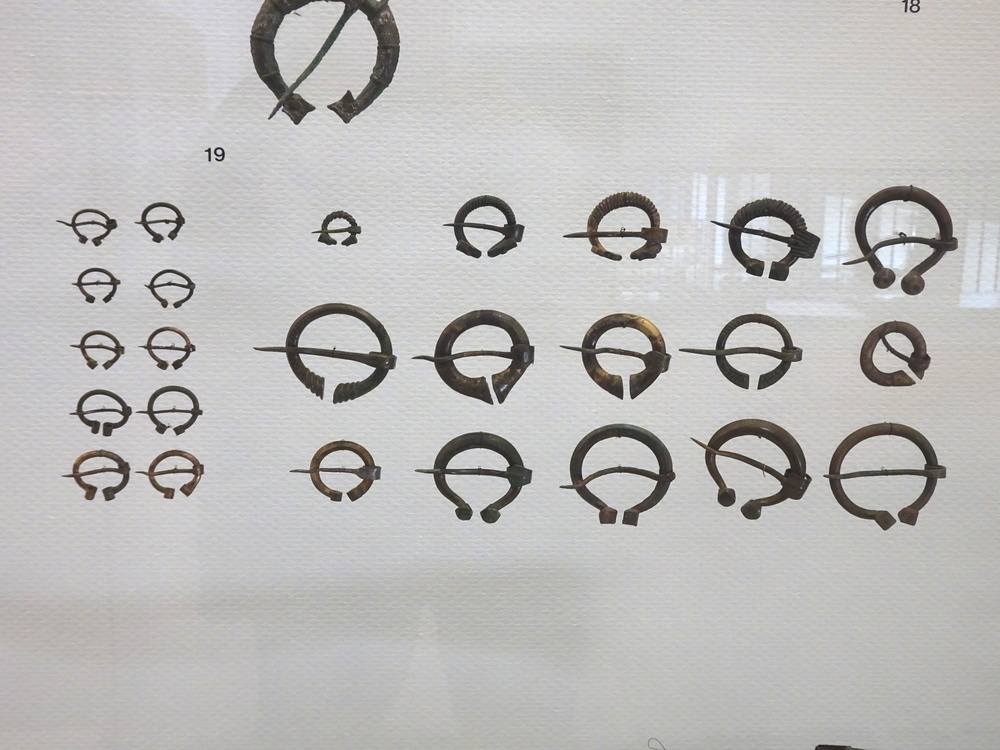



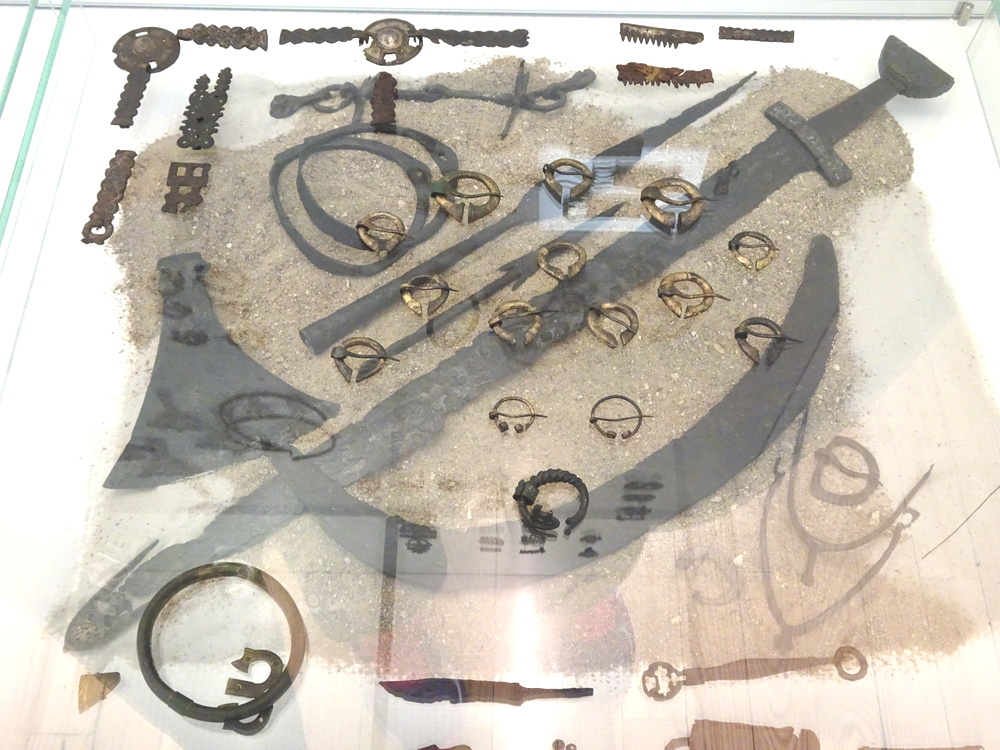
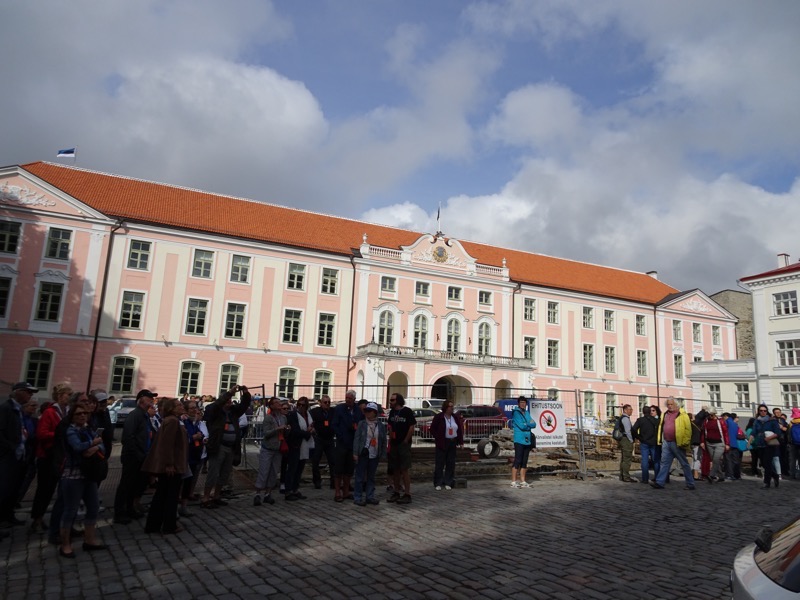 This striking pink building is the Riiggikogu, or Estonian Parliament, also known as Toompea Castle located in the upper part of the Old Town. According to legend, Toompea is the grave mount of an ancient Estonian king, Kalev, which was created by his wife, Linda, who carried rocks for it in her apron. A thousand years ago, it was the seat of an Estonian stronghold, and from the 13th-19th centuries was the home of the nobiity. The houses and palaces that decorate the Toompea now were all built after a huge fire in 1684 and are in the German-Batlic style preferred by the families of noble descent who lived here.
This striking pink building is the Riiggikogu, or Estonian Parliament, also known as Toompea Castle located in the upper part of the Old Town. According to legend, Toompea is the grave mount of an ancient Estonian king, Kalev, which was created by his wife, Linda, who carried rocks for it in her apron. A thousand years ago, it was the seat of an Estonian stronghold, and from the 13th-19th centuries was the home of the nobiity. The houses and palaces that decorate the Toompea now were all built after a huge fire in 1684 and are in the German-Batlic style preferred by the families of noble descent who lived here.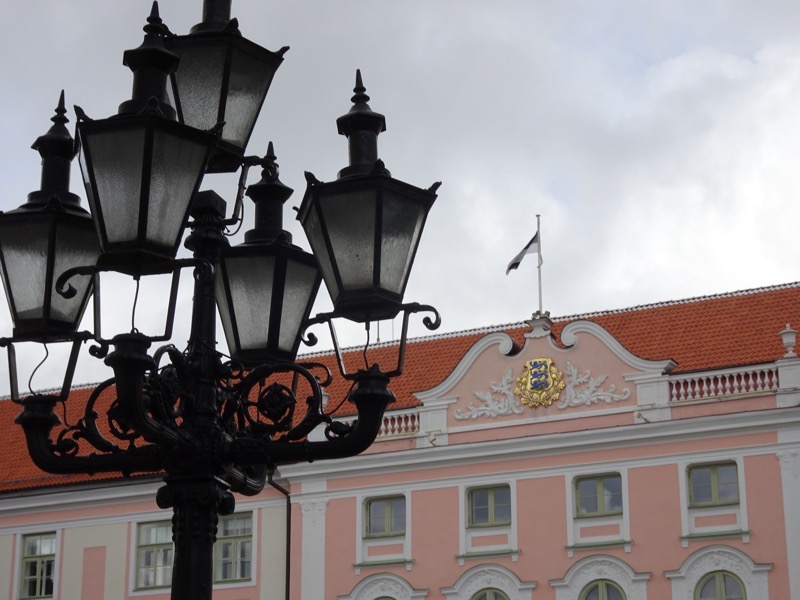 Directly opposite Toompea Castle stands the Russian Orthodox Cathedral of Alexander Nevsky – built in 1894-1900, the building has five onion-shaped cupolas that rest of a study granite blocks and follow the 17th century building style of Mosow and Yaroslavl.
Directly opposite Toompea Castle stands the Russian Orthodox Cathedral of Alexander Nevsky – built in 1894-1900, the building has five onion-shaped cupolas that rest of a study granite blocks and follow the 17th century building style of Mosow and Yaroslavl. 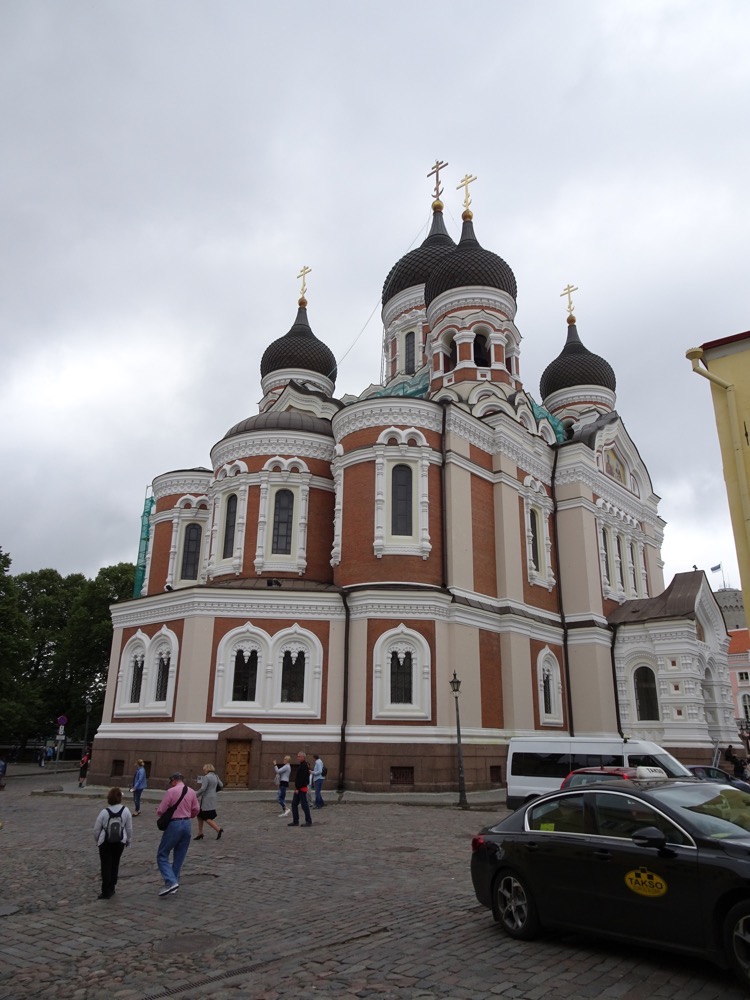 The facade mosaics are by A Frolov as are the wall paintings on the inside.
The facade mosaics are by A Frolov as are the wall paintings on the inside.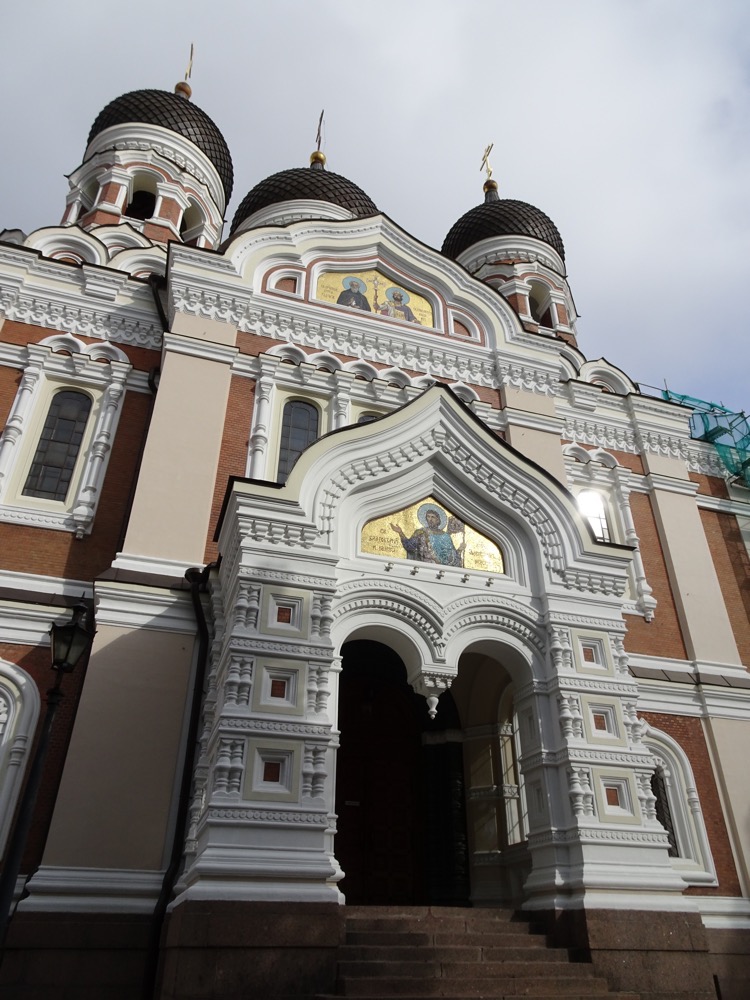 Alexander Nevsky Cathedral boasts the most impressive ensemble of church bells in the country – it comprises of 11 bells, including Tallinn’s largest bell which weighs over 15 tonnes.
Alexander Nevsky Cathedral boasts the most impressive ensemble of church bells in the country – it comprises of 11 bells, including Tallinn’s largest bell which weighs over 15 tonnes.
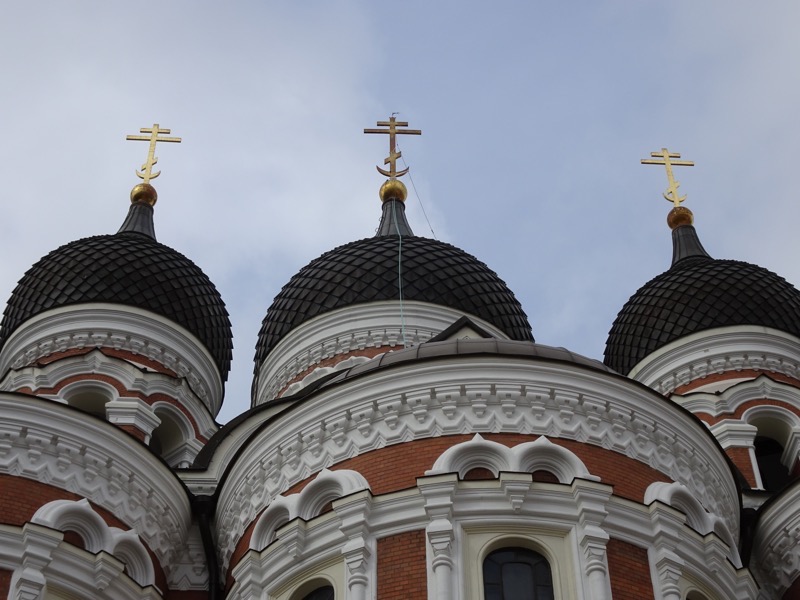
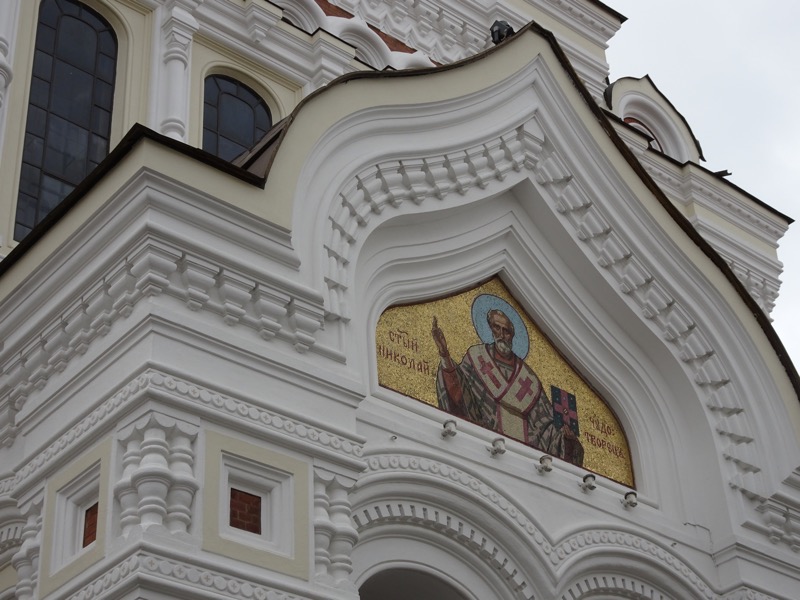 The church holds services and local worship here still.
The church holds services and local worship here still.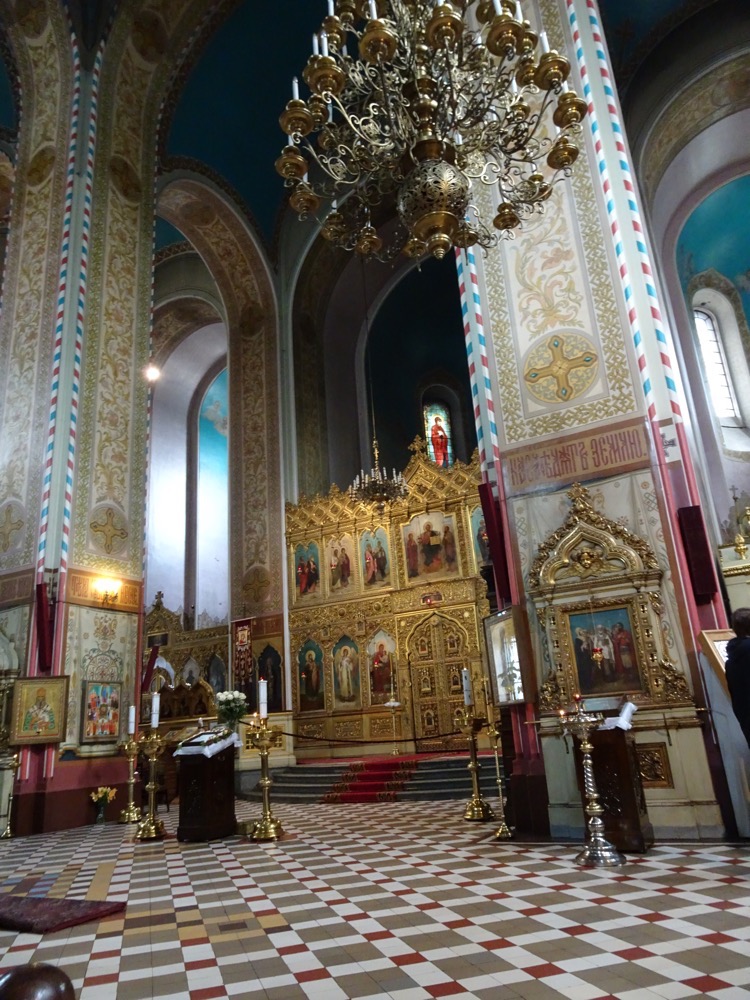
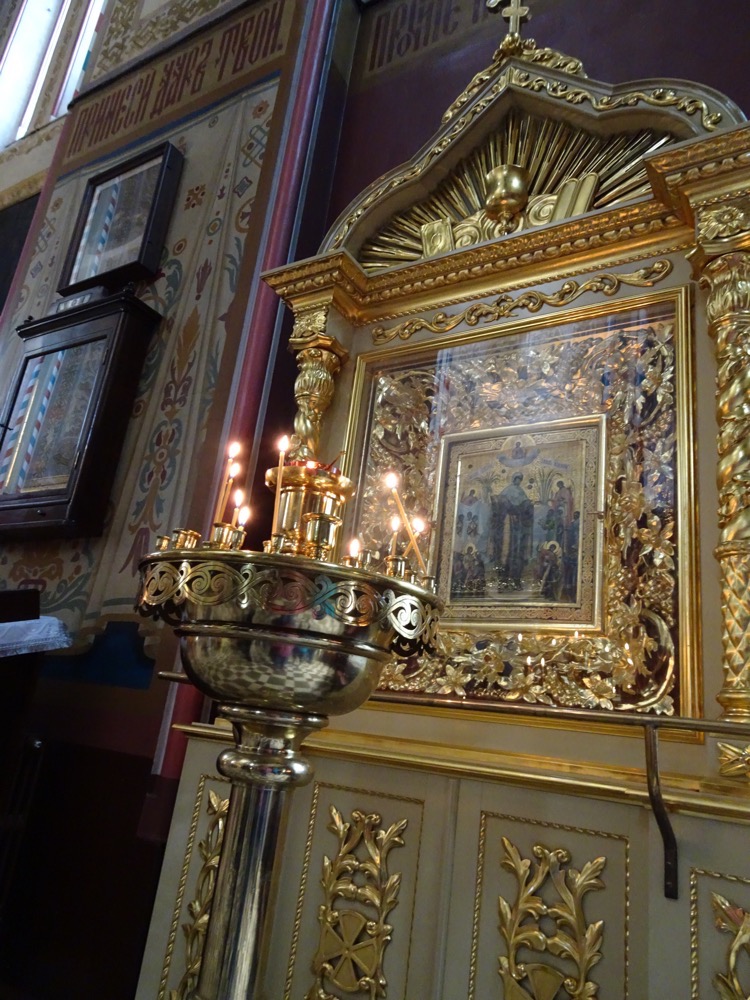
 The interior of the cathedral is relatively simple but contains a remarkable collection of heraldic epitaphs for many of the Baltic-Germa noble families that patronised the church. There are more than 100 of these elaborated impressas decorating the church, many of which were made by Tallinn wood carver Christian Ackerman in the late 1690s.
The interior of the cathedral is relatively simple but contains a remarkable collection of heraldic epitaphs for many of the Baltic-Germa noble families that patronised the church. There are more than 100 of these elaborated impressas decorating the church, many of which were made by Tallinn wood carver Christian Ackerman in the late 1690s.
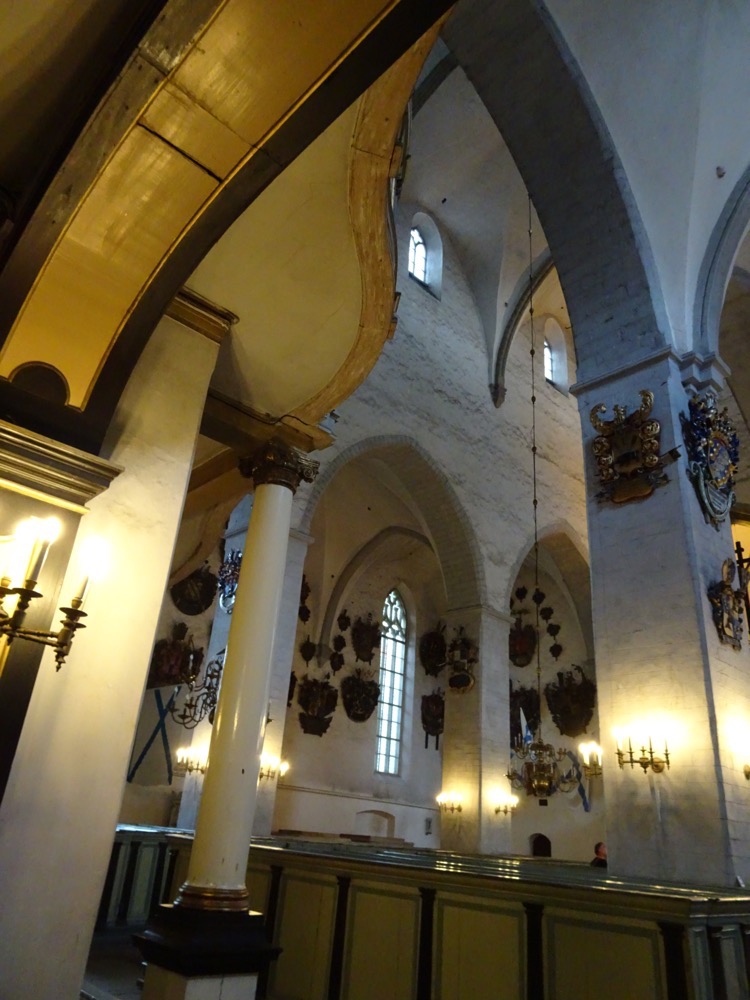
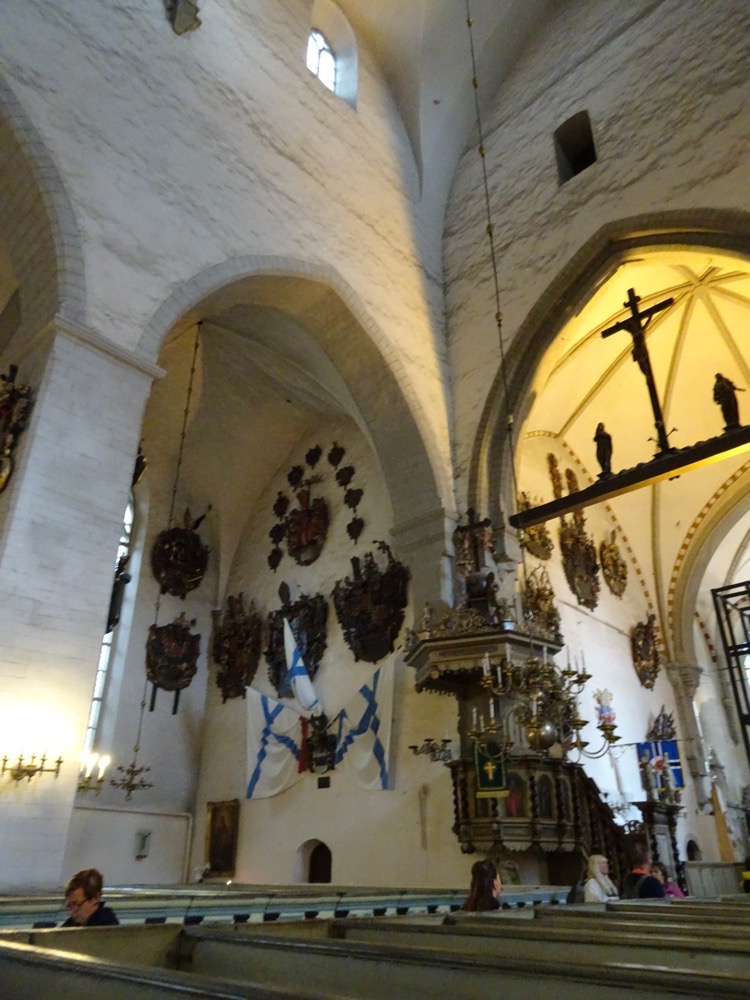
 The narrow cobbled streets of the upper Old Town.
The narrow cobbled streets of the upper Old Town.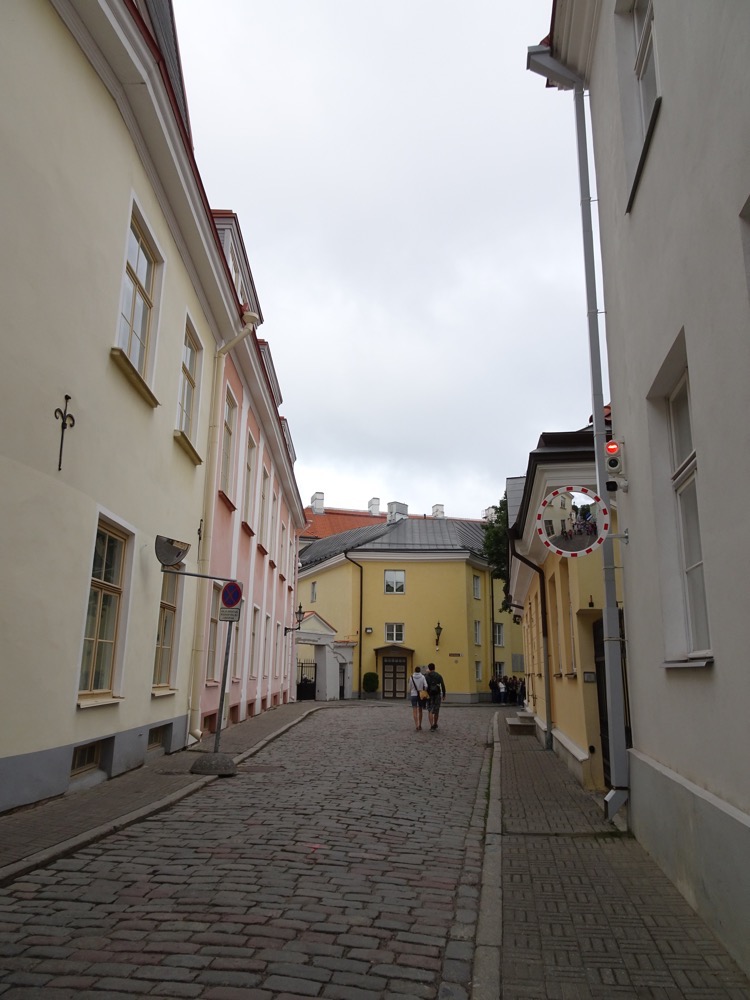 View from the panorama viewpoints towards the gate towers of the lower Old Town.
View from the panorama viewpoints towards the gate towers of the lower Old Town.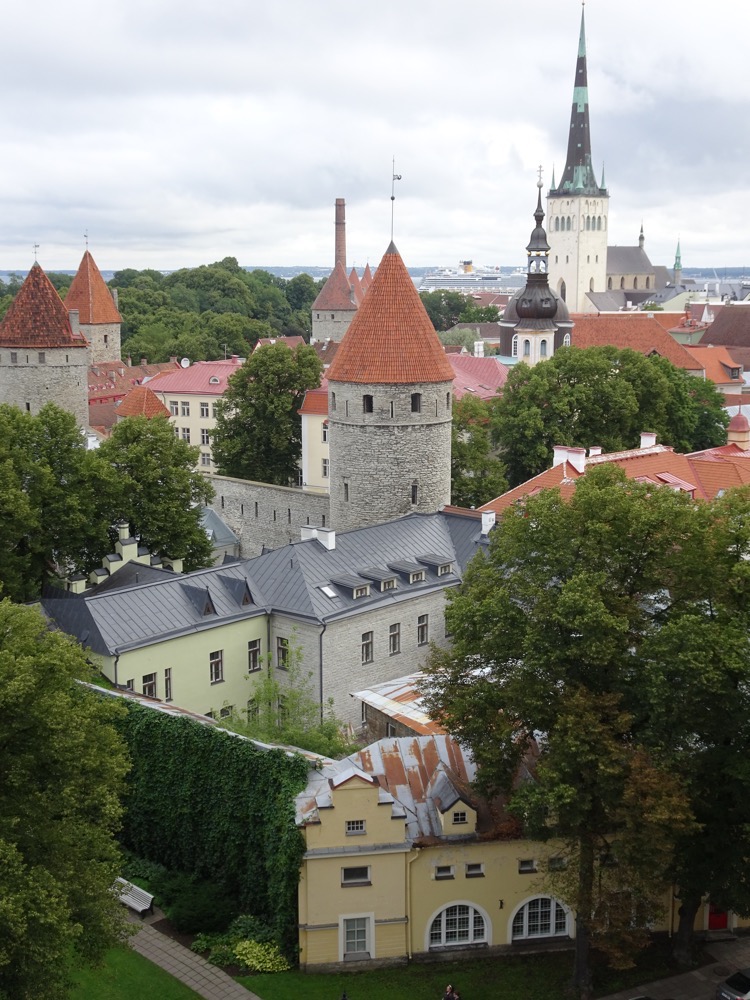 Rear of the Presidential residence.
Rear of the Presidential residence.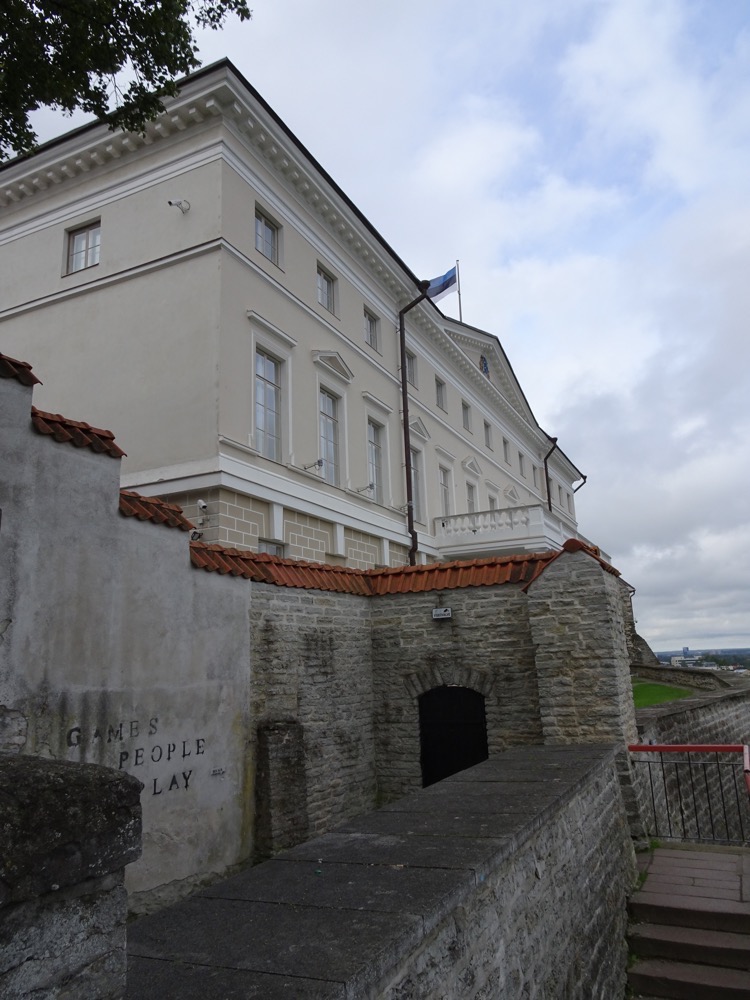
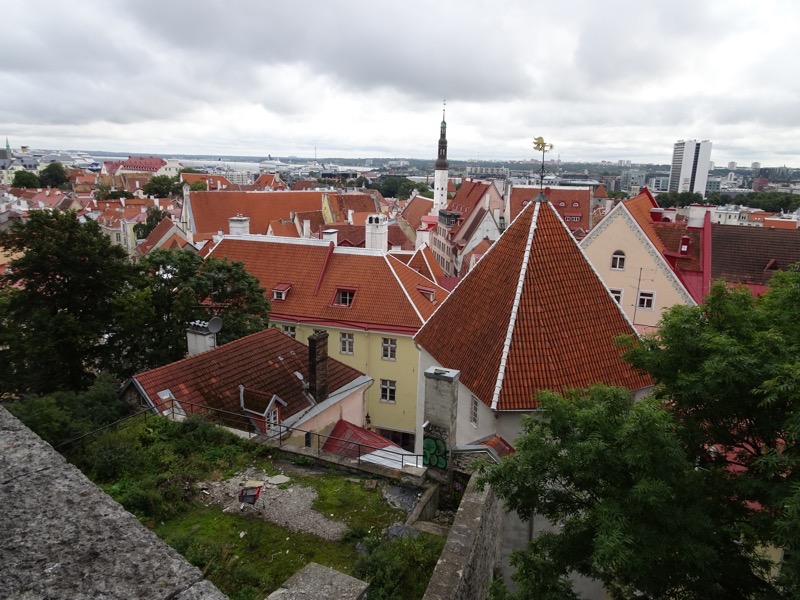 Rooftops of Tallinn.
Rooftops of Tallinn.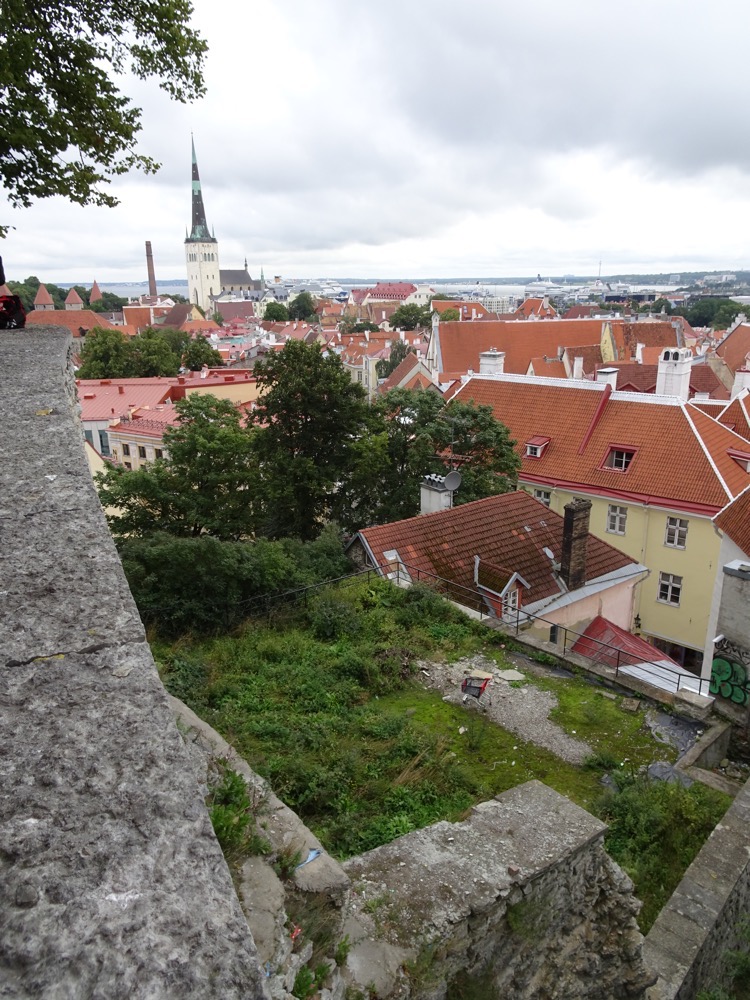 We had a little bit of time to poke around the shops in the upper area of the old town, and there is a heavy focus on amber (amber, amber everywhere!), woolen sweaters, Russian dolls, painted plates, and strangel little ceramic buildings that can be used as candle holders).
We had a little bit of time to poke around the shops in the upper area of the old town, and there is a heavy focus on amber (amber, amber everywhere!), woolen sweaters, Russian dolls, painted plates, and strangel little ceramic buildings that can be used as candle holders).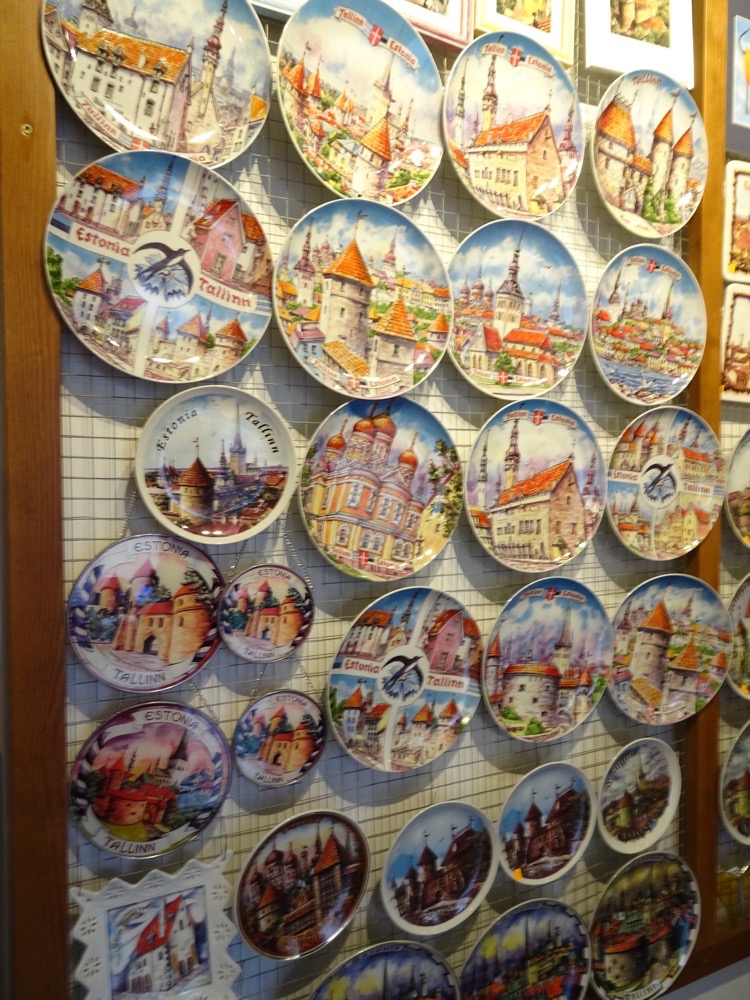

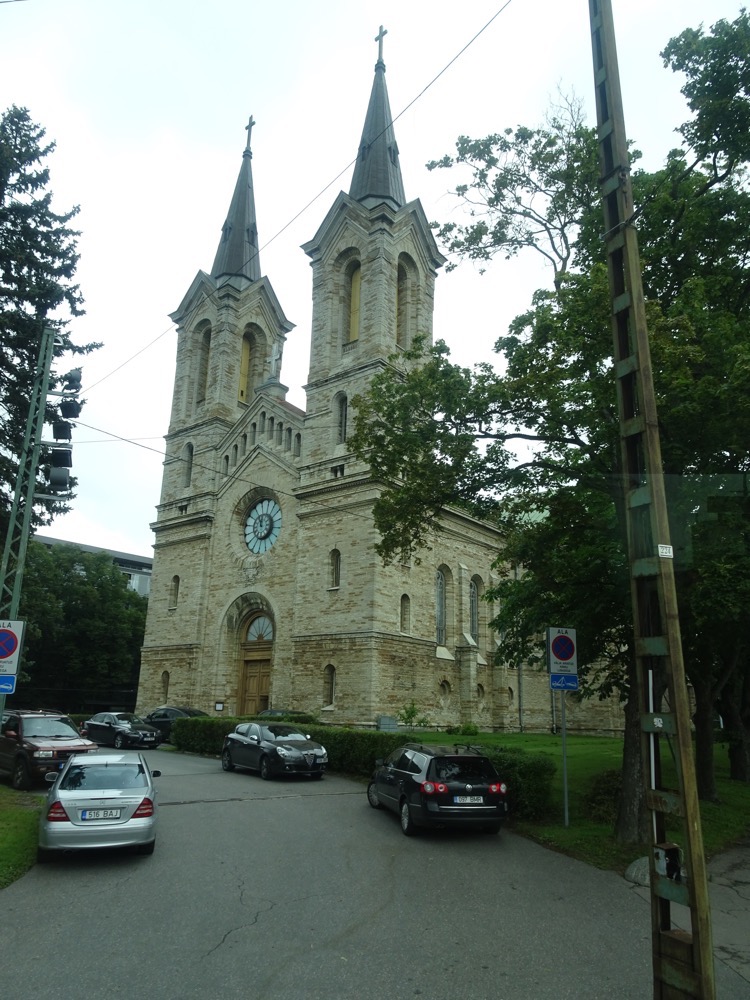
 Our next stop was to Kadroig Palace. Literally meaning ‘Catherine’s Vale’, Kadroig with its beautiful gardens and huge swan lake is a favored outing place for locals. The palace and grounds were built by Russian Tsar Peter I. He had acquired some land with a small house on it and launched on the construction of a summer palace for his wife, Catherine, in 1718. The design was by Italian architect Niccolo Michetti. and has extensive parterres, fountains, cascades, canals, and lakes.
Our next stop was to Kadroig Palace. Literally meaning ‘Catherine’s Vale’, Kadroig with its beautiful gardens and huge swan lake is a favored outing place for locals. The palace and grounds were built by Russian Tsar Peter I. He had acquired some land with a small house on it and launched on the construction of a summer palace for his wife, Catherine, in 1718. The design was by Italian architect Niccolo Michetti. and has extensive parterres, fountains, cascades, canals, and lakes.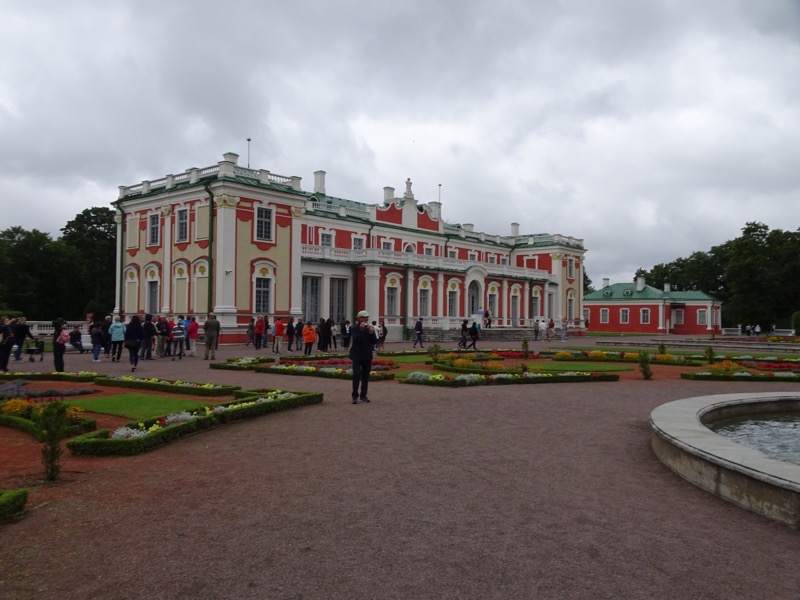
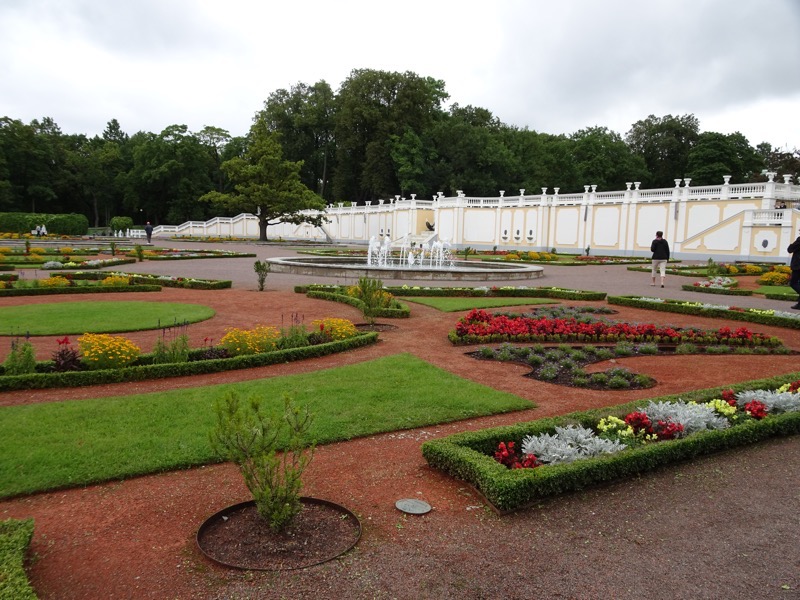
 When completed, Kadroig Palace was the most magnificent example of baroque architecture in Estonia. At present, the main hall is the only extant example of a completely unaltered baroque hall from the time of Peter I. The building is currently used to house the Estonia Art Museum’s collection of foreign art.
When completed, Kadroig Palace was the most magnificent example of baroque architecture in Estonia. At present, the main hall is the only extant example of a completely unaltered baroque hall from the time of Peter I. The building is currently used to house the Estonia Art Museum’s collection of foreign art.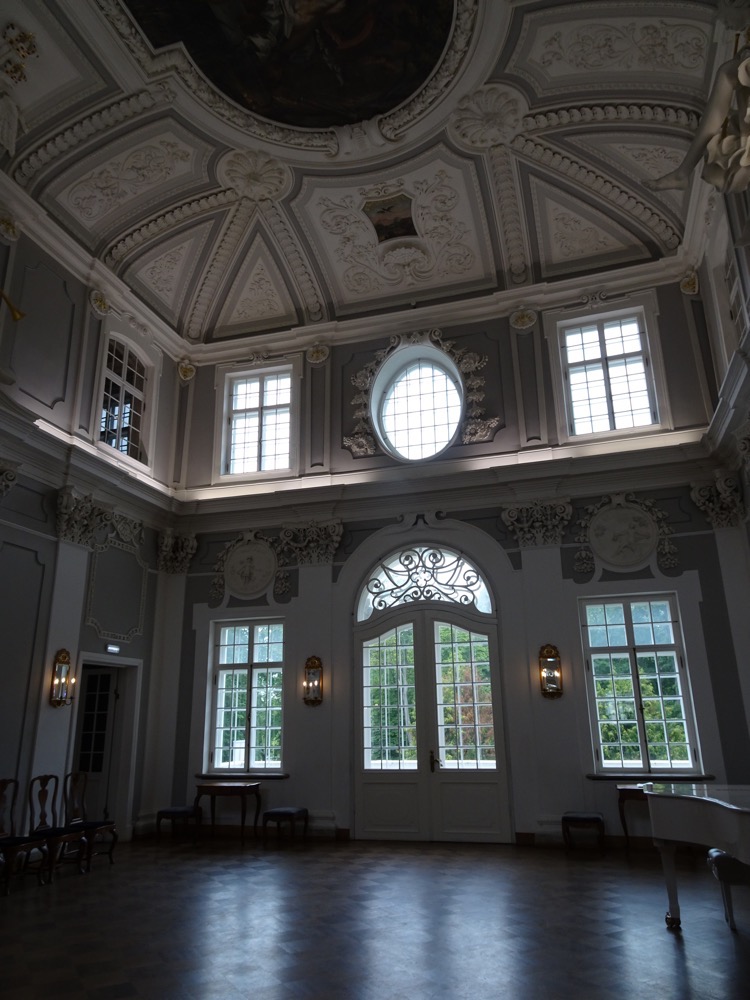
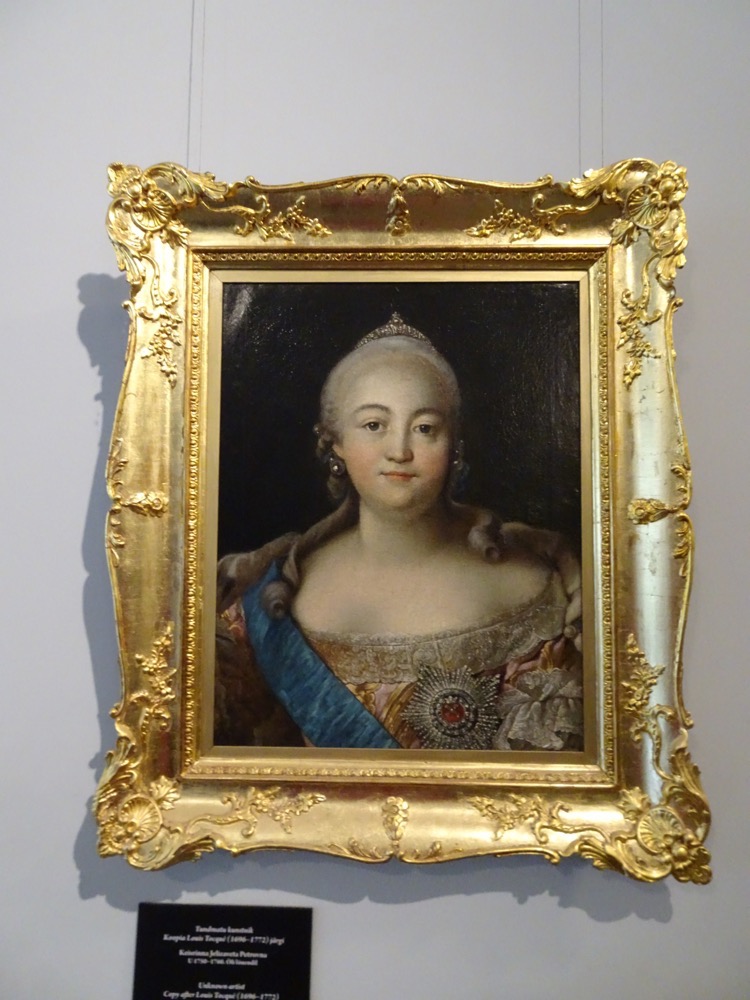 Peter’s second wife, Katherine who it is claimed he fell in love with at first sight, even though she was a common washerwoman at the time. He left? abandoned? sent his first wife to a convent? and married Katherine who then became Empress of all Russia.
Peter’s second wife, Katherine who it is claimed he fell in love with at first sight, even though she was a common washerwoman at the time. He left? abandoned? sent his first wife to a convent? and married Katherine who then became Empress of all Russia.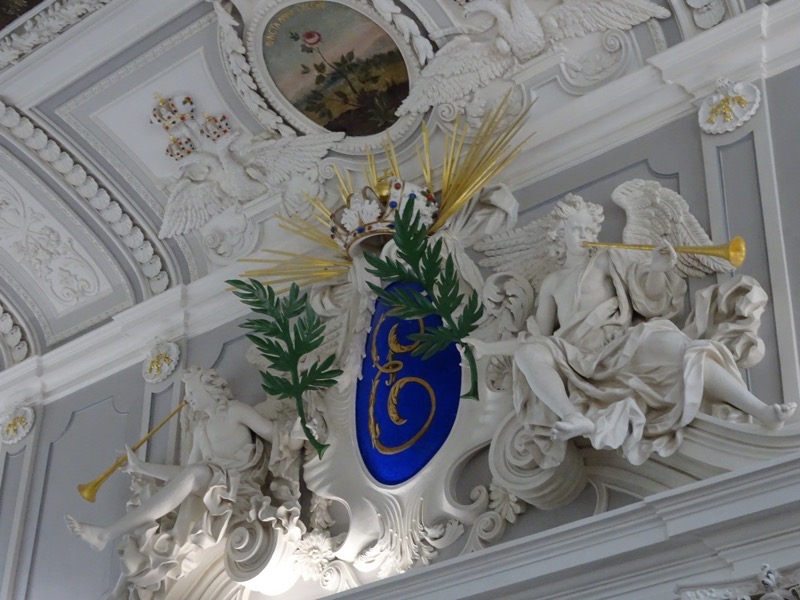 Allegorical fresco depicting the goddess Diana being surprised as she bathed with her nymphs by a hapless hunter. She turned him into a deer, and he grew horns; his dogs did not recognize him and they ripped him to pieces… apparently, Diana represents the triumphal hunter, ‘Russia’ and the hapless hunter-turned-deer, represents ‘Sweden’.
Allegorical fresco depicting the goddess Diana being surprised as she bathed with her nymphs by a hapless hunter. She turned him into a deer, and he grew horns; his dogs did not recognize him and they ripped him to pieces… apparently, Diana represents the triumphal hunter, ‘Russia’ and the hapless hunter-turned-deer, represents ‘Sweden’.
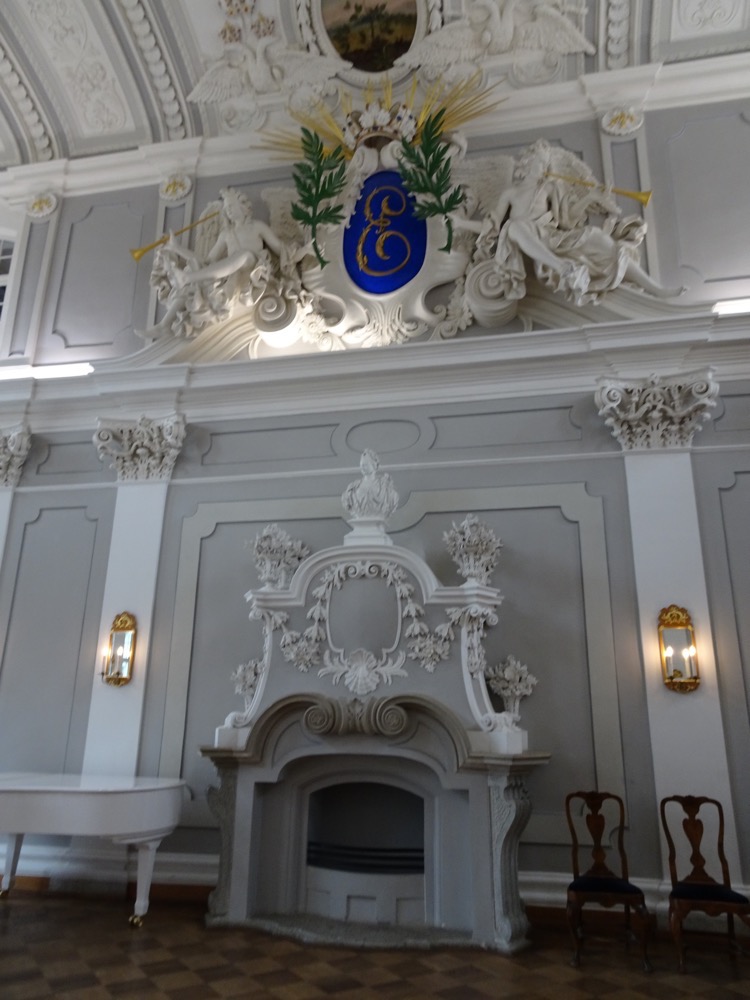
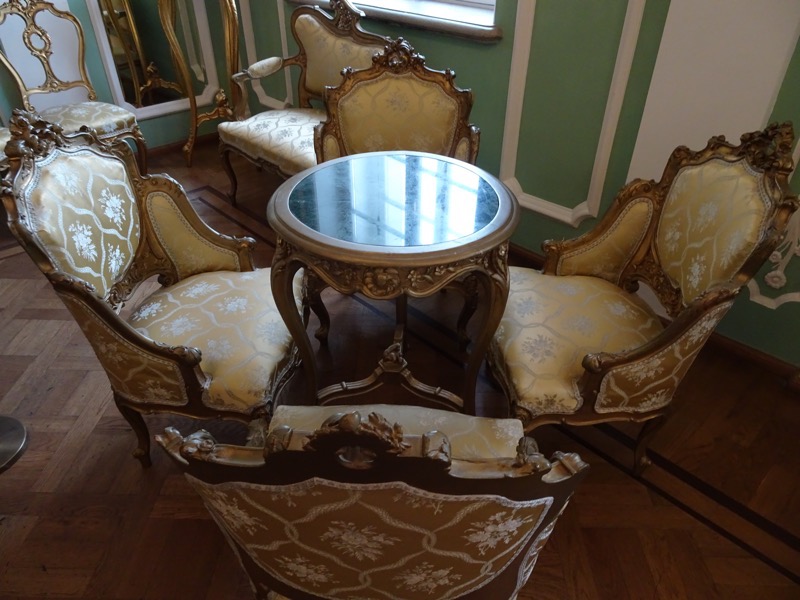
 A random Bruegel in the collection…
A random Bruegel in the collection…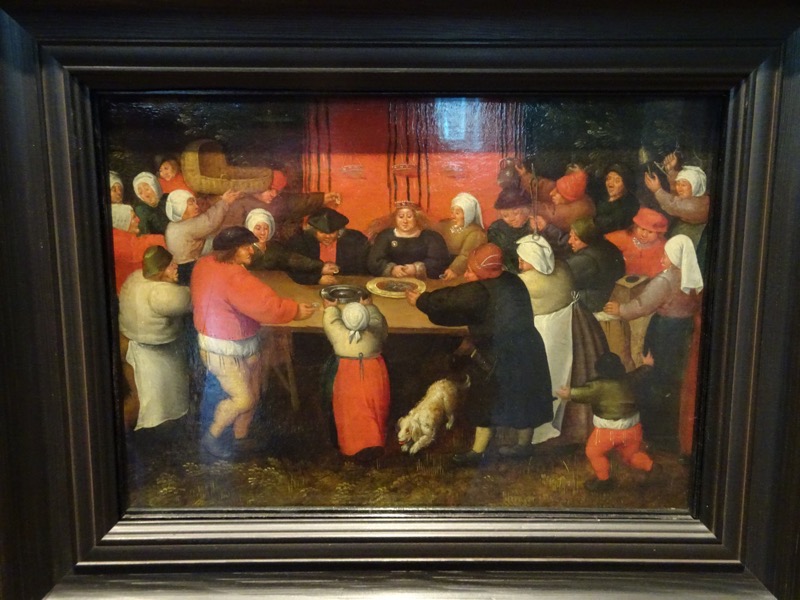 A chinoiserie ceramic slipper – no provenance listed anywhere.
A chinoiserie ceramic slipper – no provenance listed anywhere.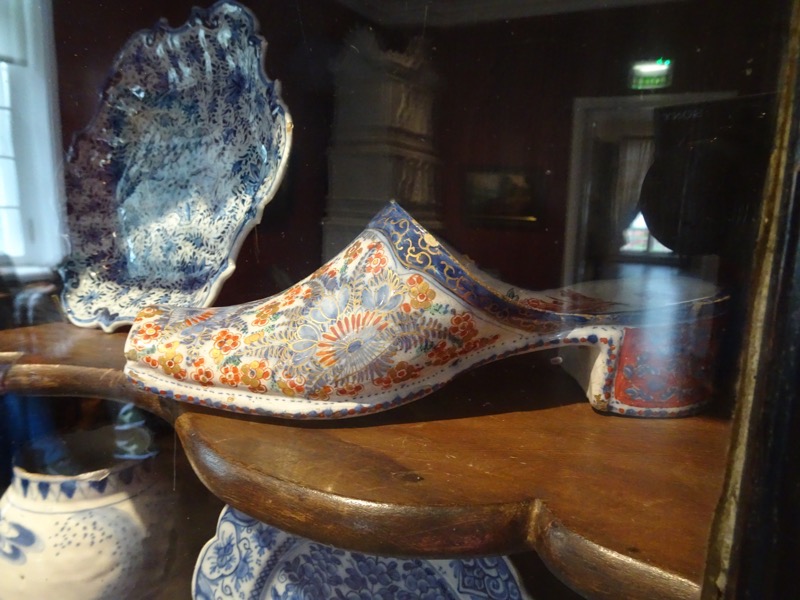 Heating furnaces.
Heating furnaces.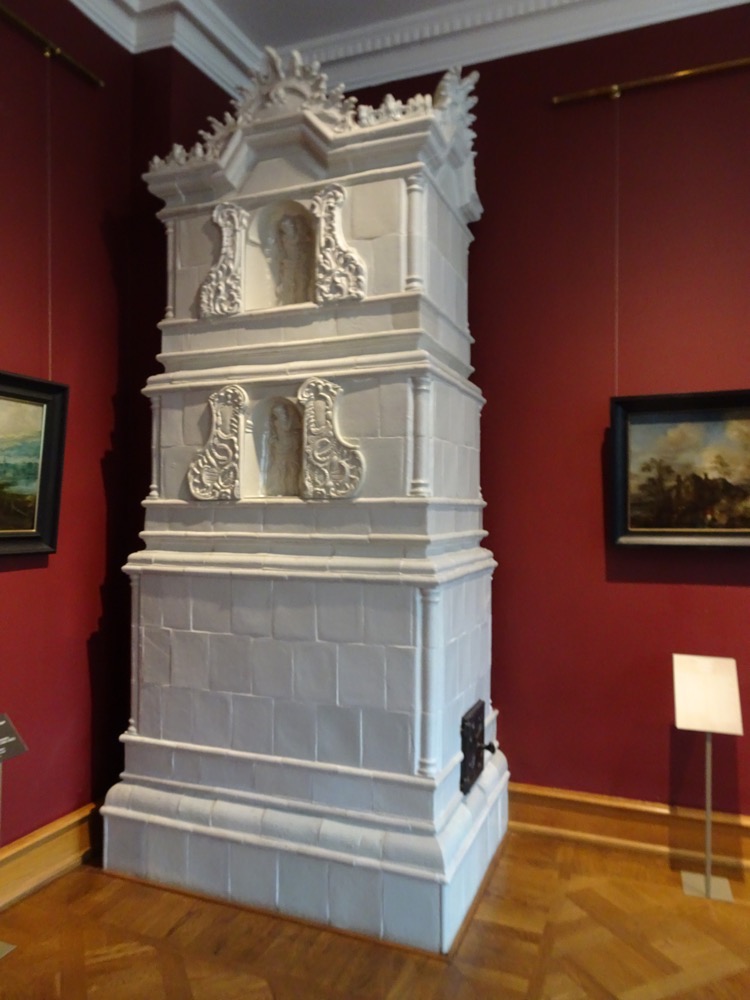
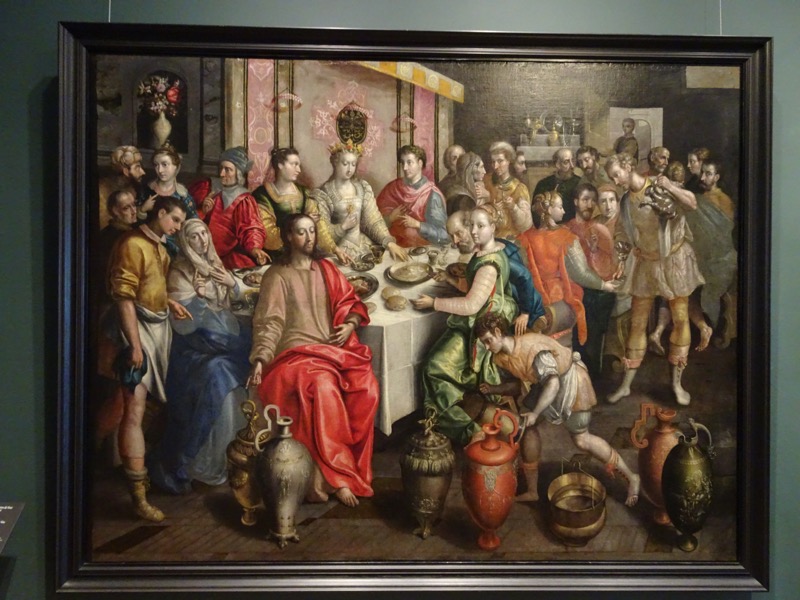
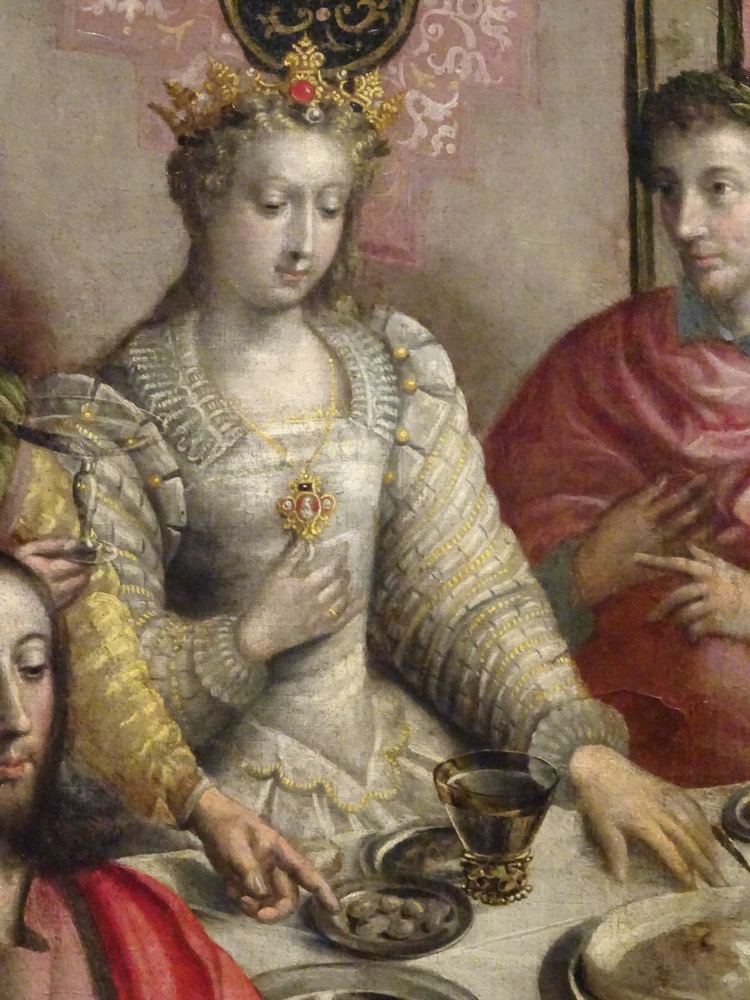
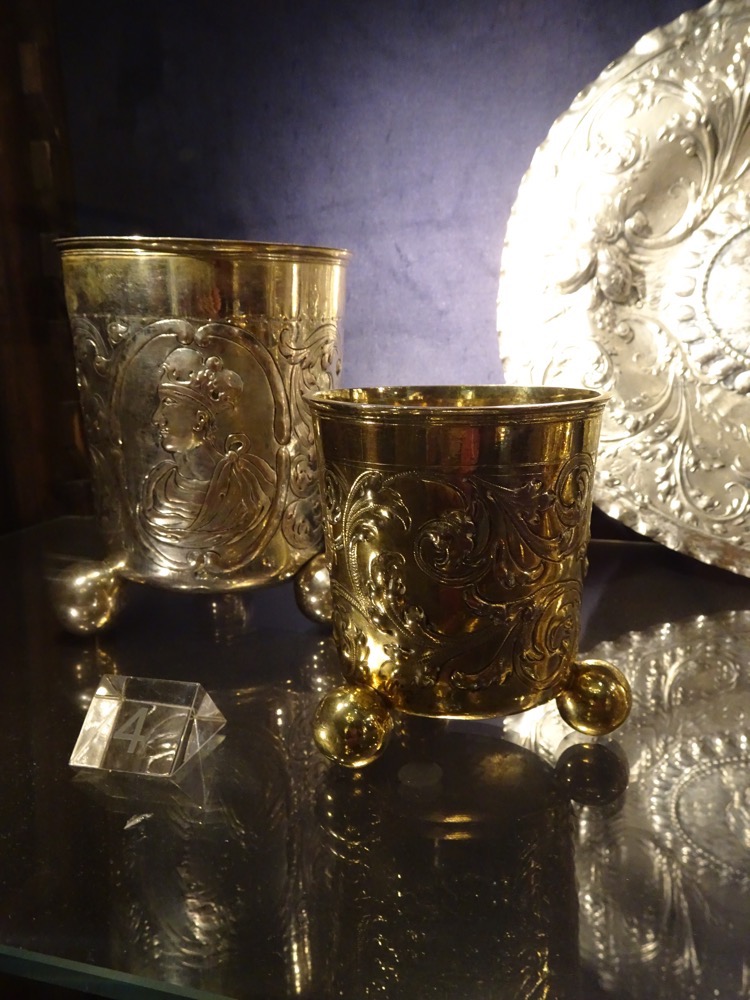 Front facade of Kadroig Palace.
Front facade of Kadroig Palace.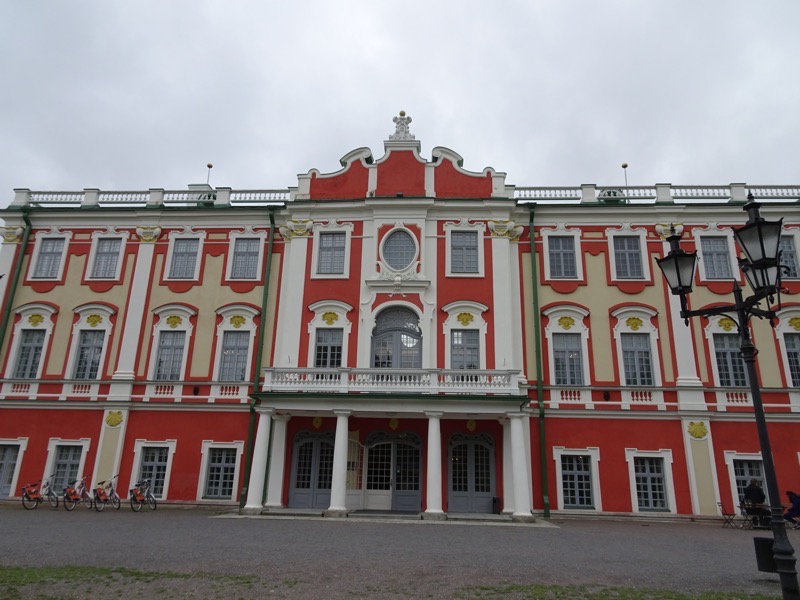
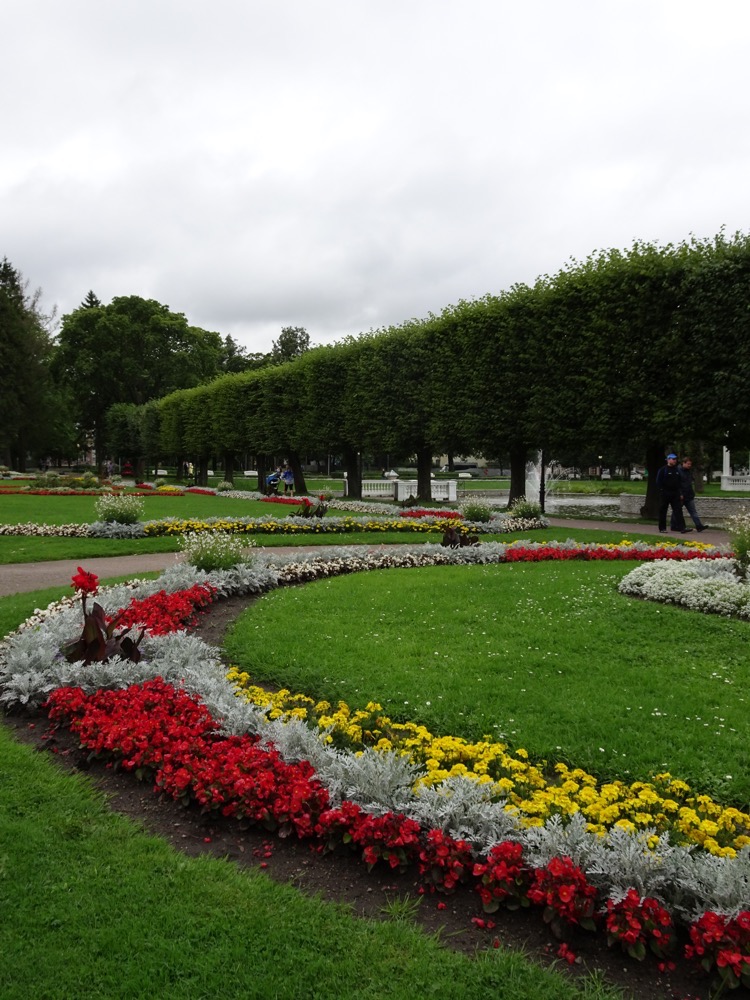 Another chance to have a bit of a poke about the shops came up and we found more textiles… this time in the form of heavy felt hats with cat faces embroidered on them…?!
Another chance to have a bit of a poke about the shops came up and we found more textiles… this time in the form of heavy felt hats with cat faces embroidered on them…?!
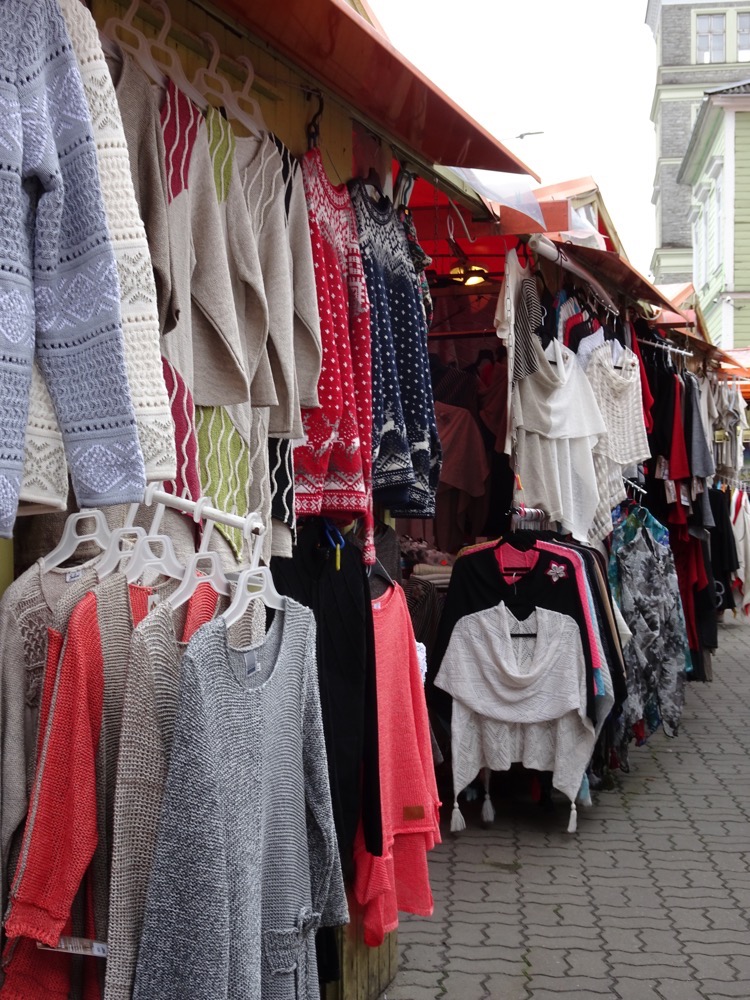

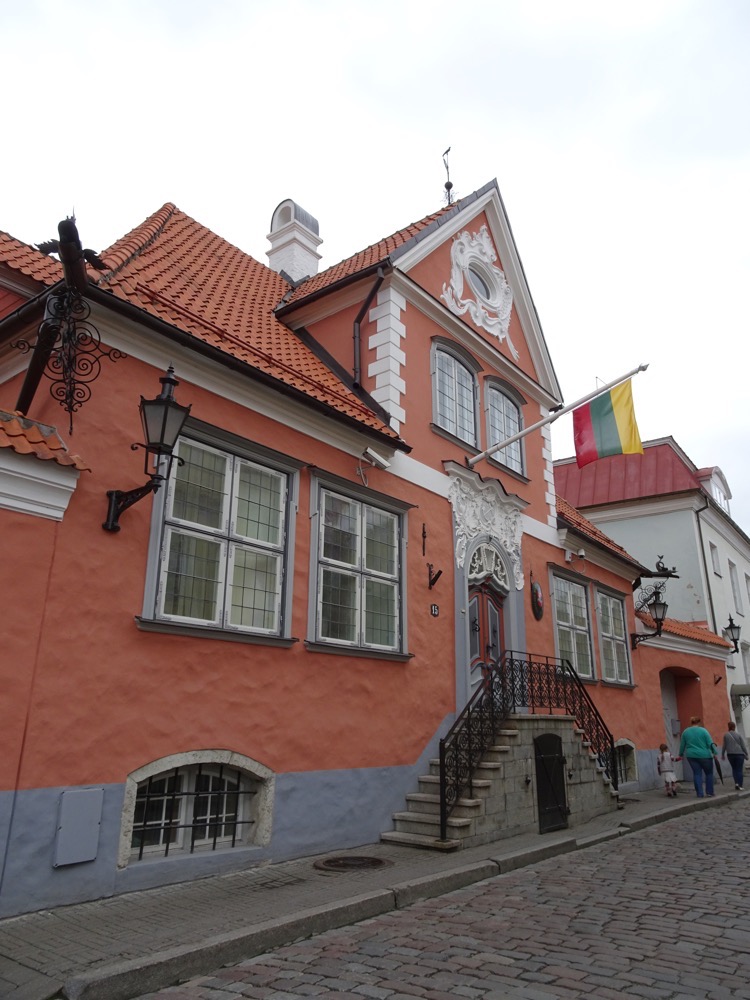 A Medieval merchant’s home.
A Medieval merchant’s home. Tomb’s on the outer wall of St Catherine’s Church (or should I say another St Catherine’s Church).
Tomb’s on the outer wall of St Catherine’s Church (or should I say another St Catherine’s Church). Katariina Kakik – St Catherine’s Alley
Katariina Kakik – St Catherine’s Alley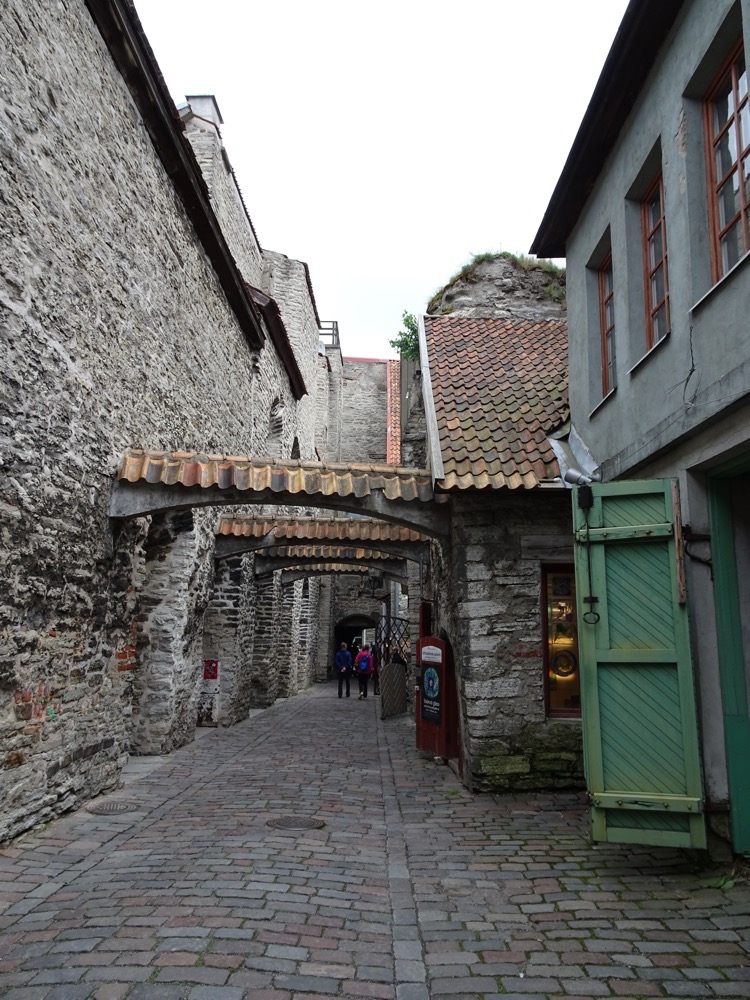
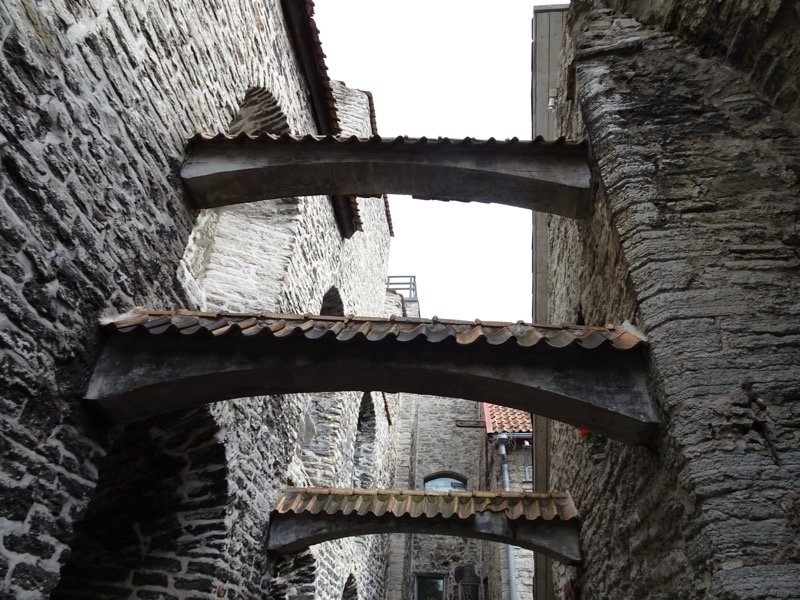 Wandered through the artsy fartsy section of the old town – glass blowers:
Wandered through the artsy fartsy section of the old town – glass blowers: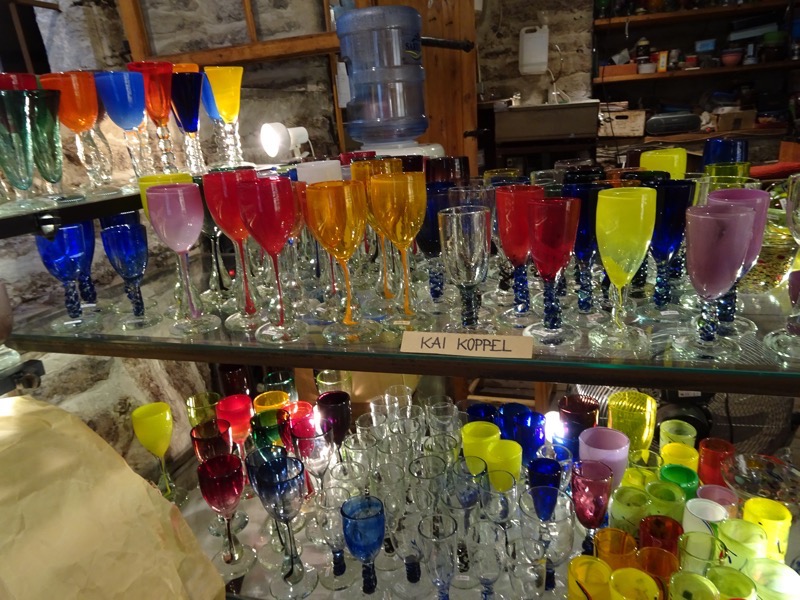
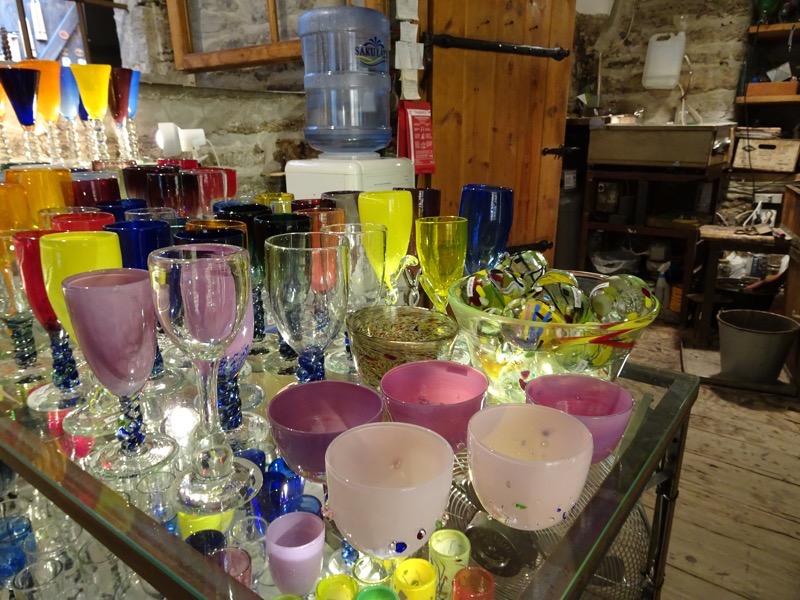 Timber workers:
Timber workers:  Loads of buttons made of juniper, applewood, ash, birch etc. Smelled amazing.
Loads of buttons made of juniper, applewood, ash, birch etc. Smelled amazing.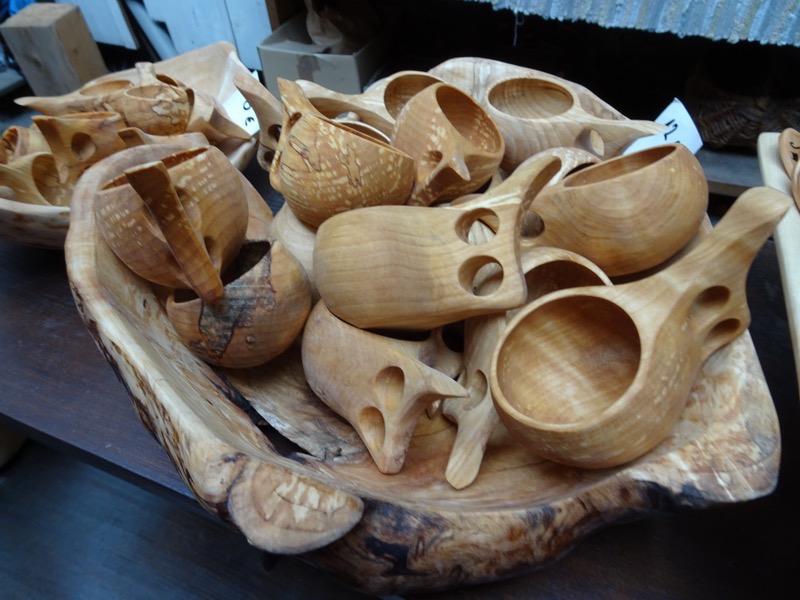 Traditional wooden cups and ladles:
Traditional wooden cups and ladles: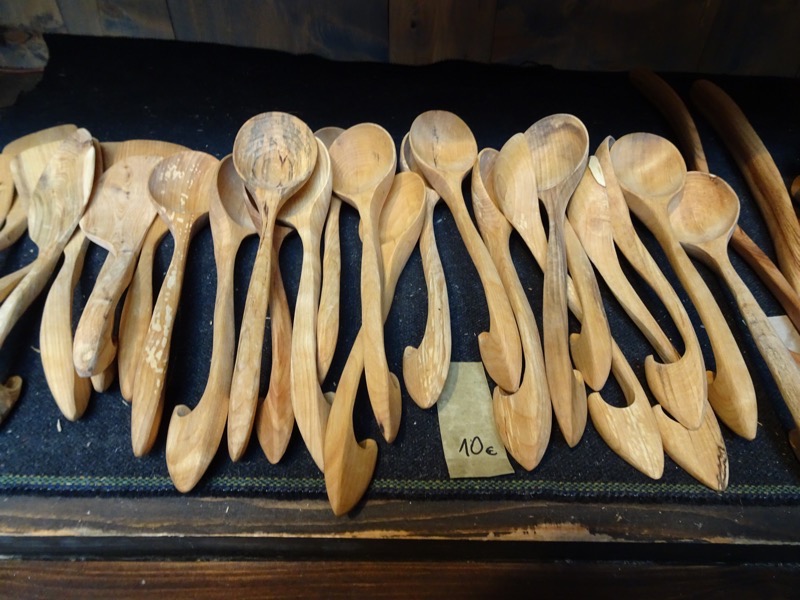 The original medieval fortress walls and gatehouses of the Old Town.
The original medieval fortress walls and gatehouses of the Old Town. 

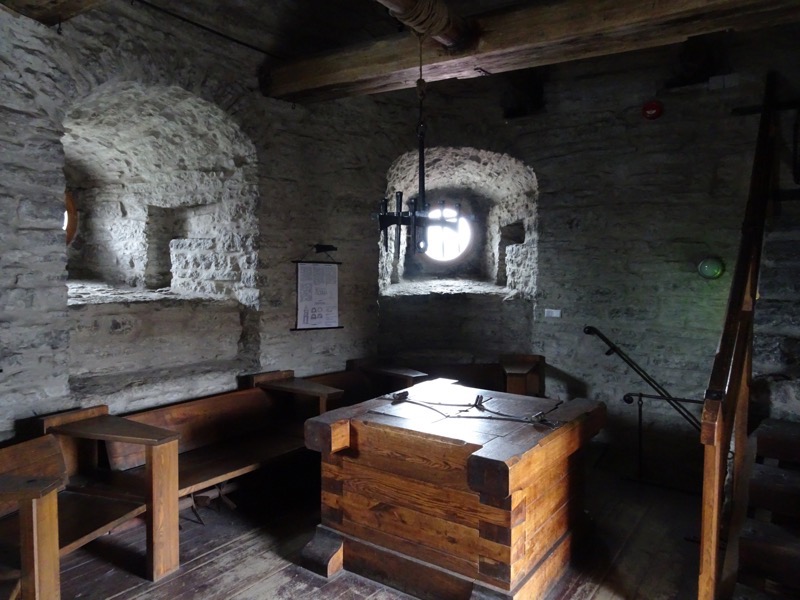 The nice and stable Medieval walkways of the walled city.
The nice and stable Medieval walkways of the walled city.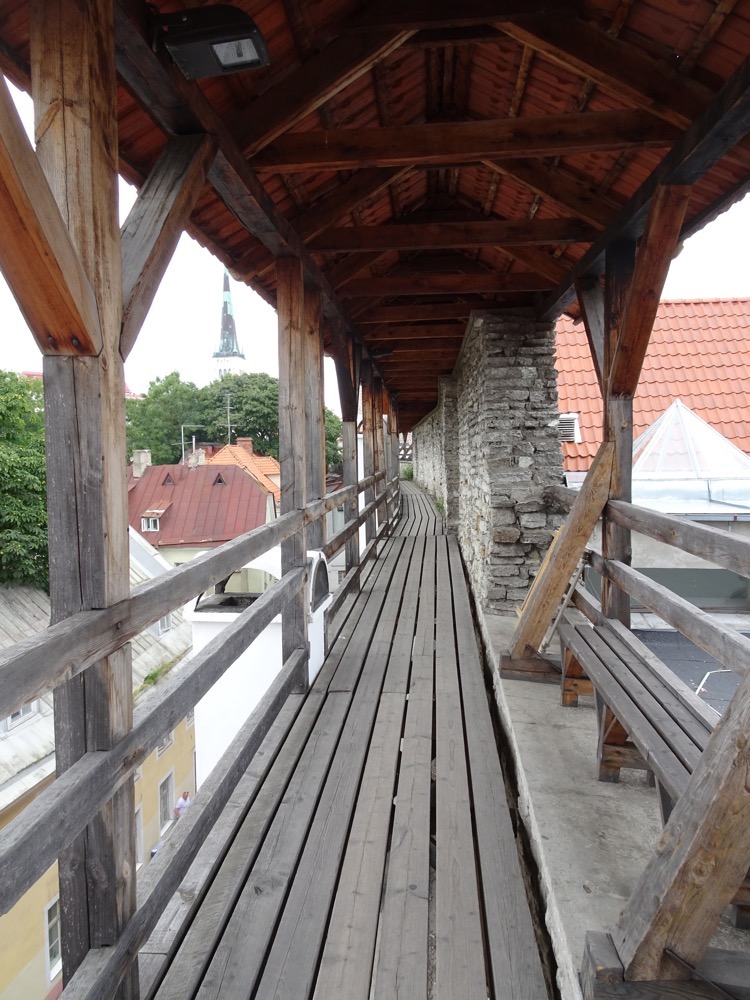
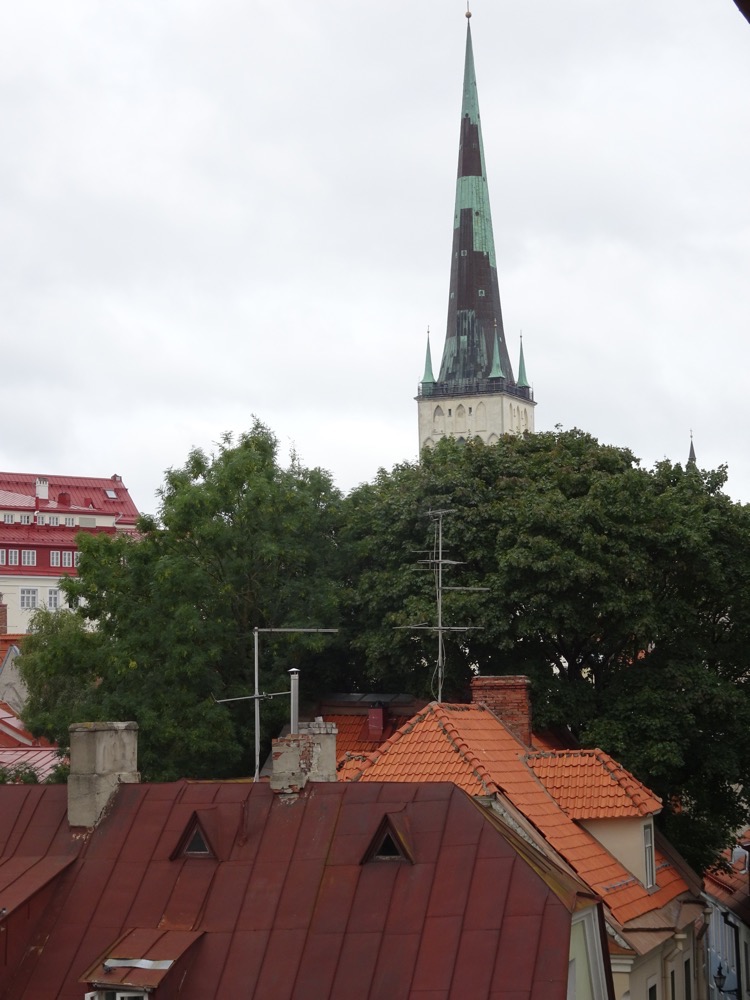

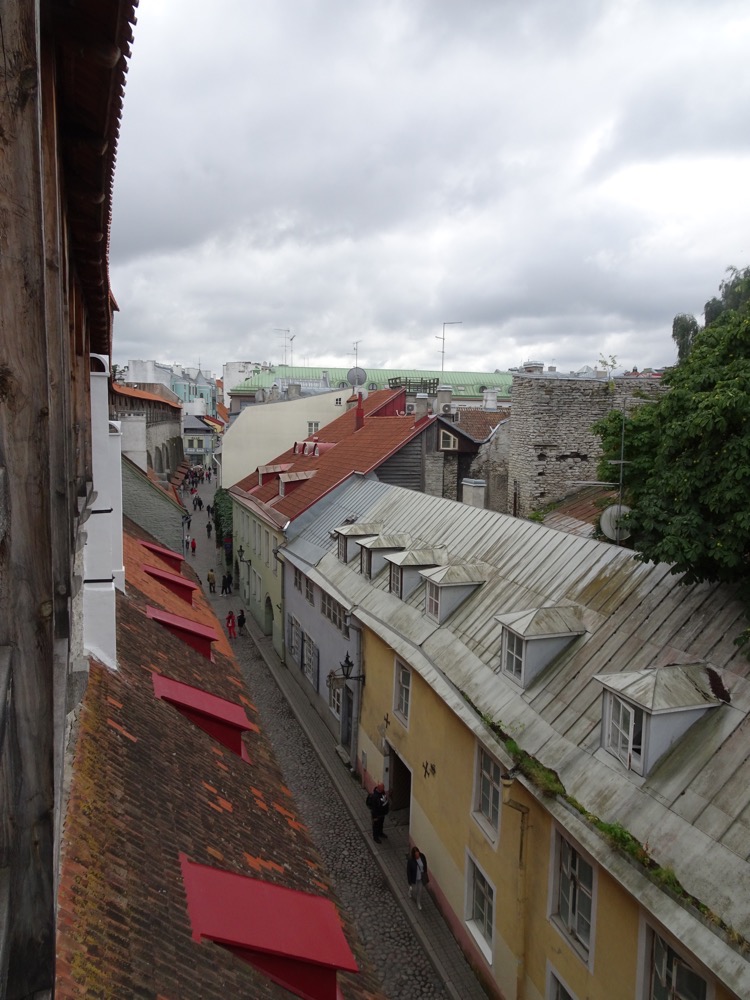 Over the roof tops from the medieval walled walkways.
Over the roof tops from the medieval walled walkways.
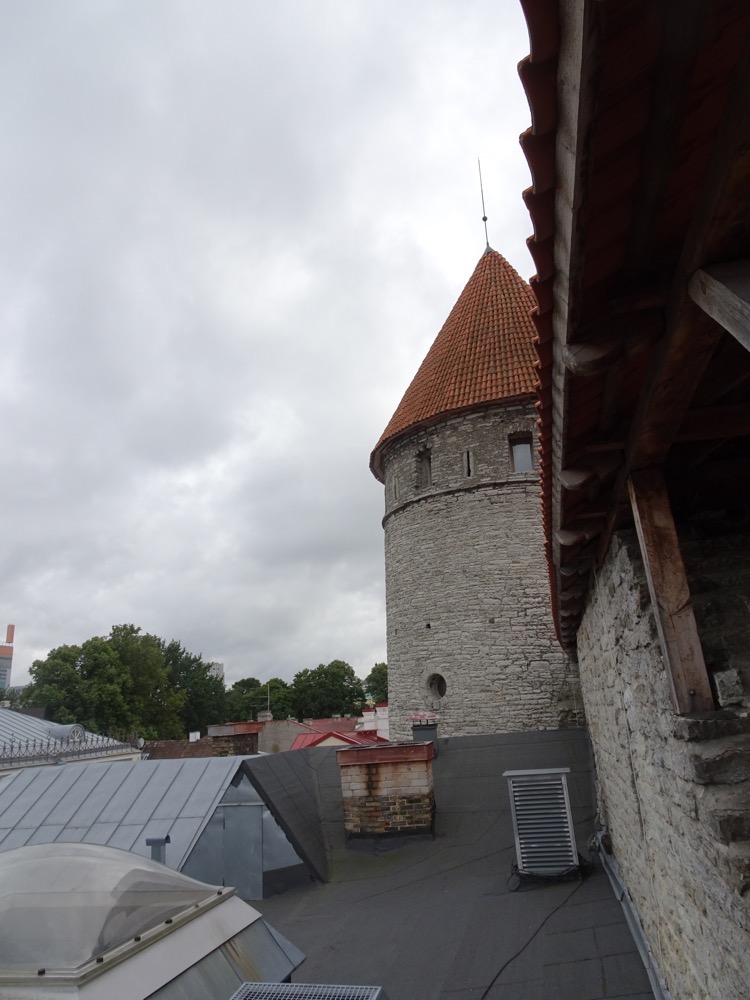 Arrowslit fortifications.
Arrowslit fortifications.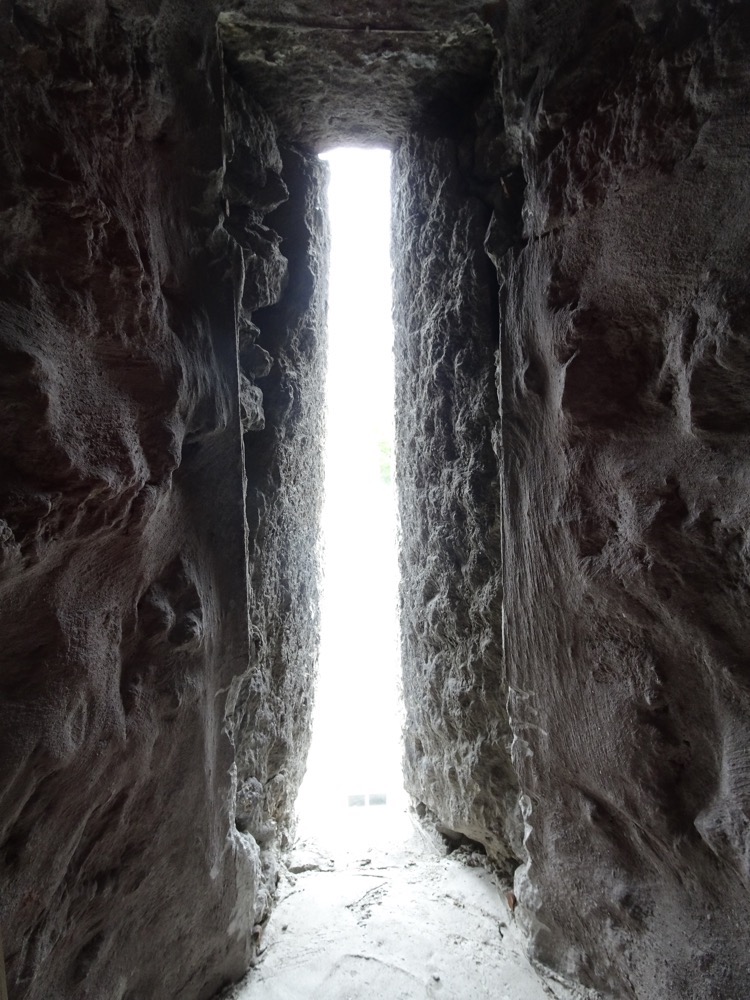 View out a window from the Medieval gate house.
View out a window from the Medieval gate house.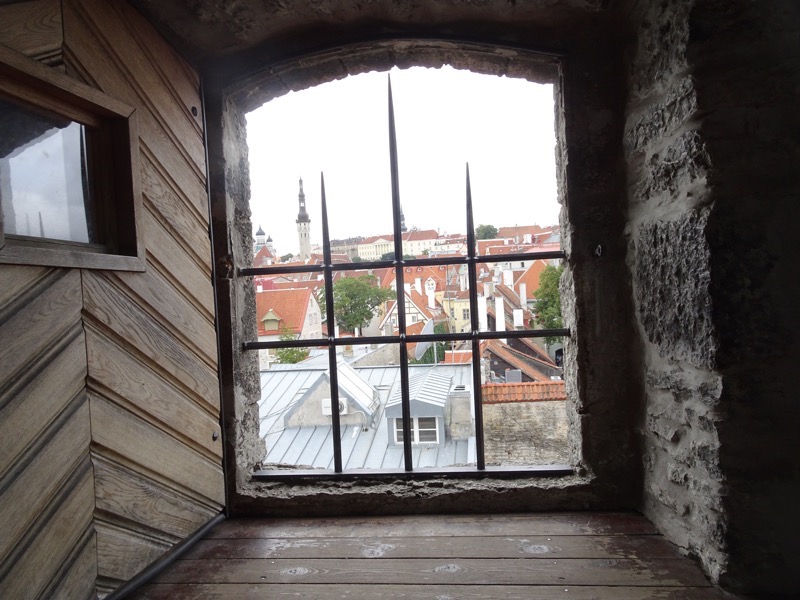 More textiles shopping markets along the fortress walls. The Old Town of Tallinn certainly is a good example of a Medieval city – I think it probably rivals Toledo for having that ‘medieval feel about it’. It’s beautiful and I am now more determined to visit Dubrovnik one day (no segue, it’s just on my list!).
More textiles shopping markets along the fortress walls. The Old Town of Tallinn certainly is a good example of a Medieval city – I think it probably rivals Toledo for having that ‘medieval feel about it’. It’s beautiful and I am now more determined to visit Dubrovnik one day (no segue, it’s just on my list!).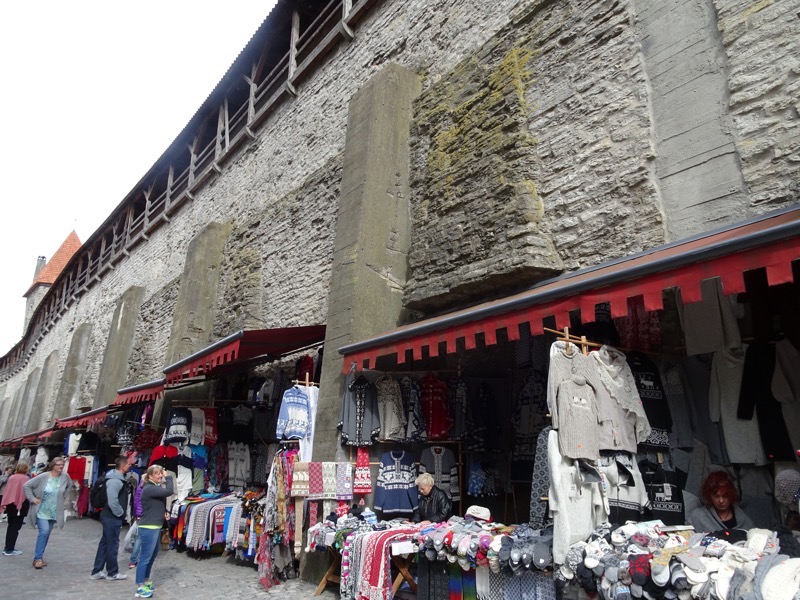 The Viru Gate at the end of Viru Street.
The Viru Gate at the end of Viru Street.
